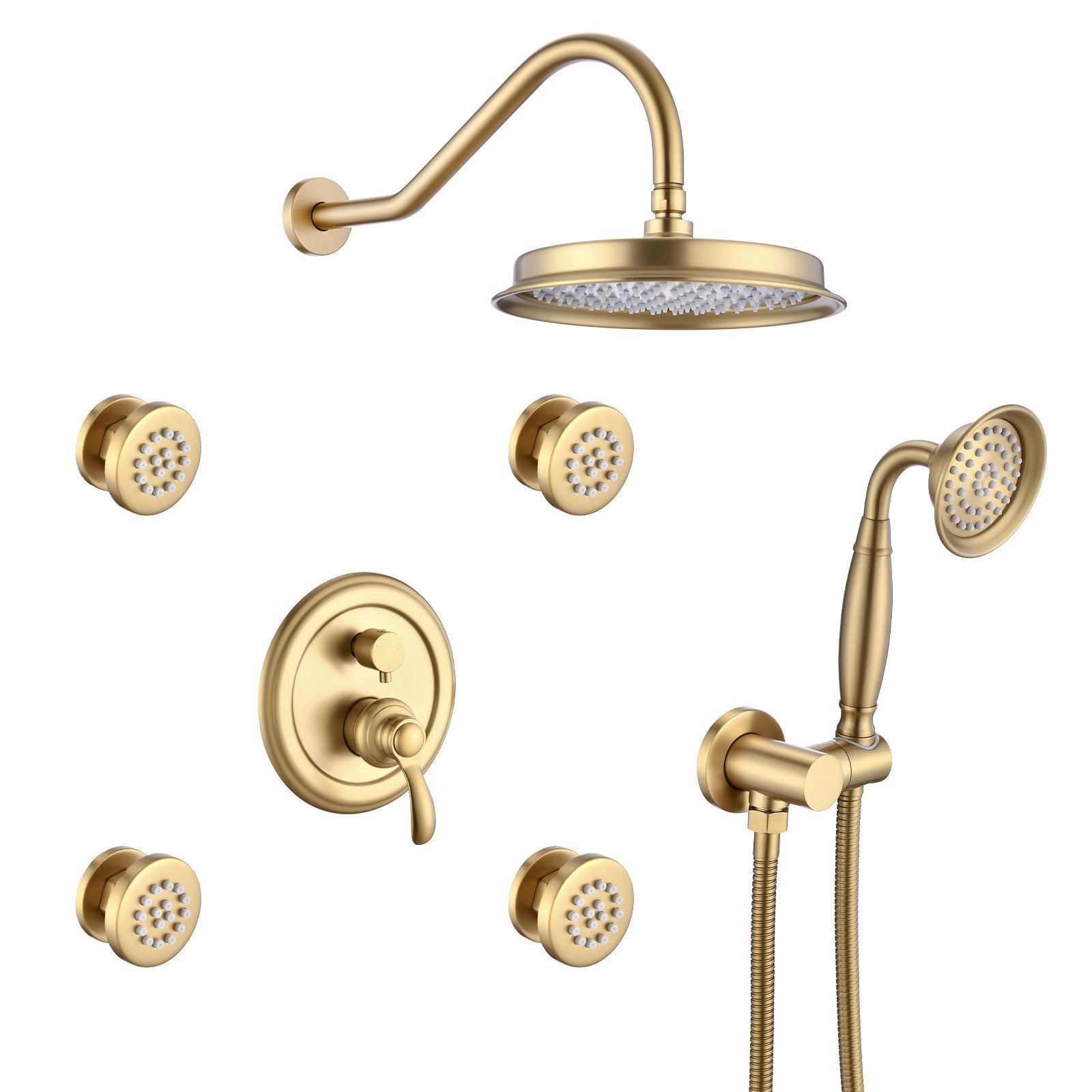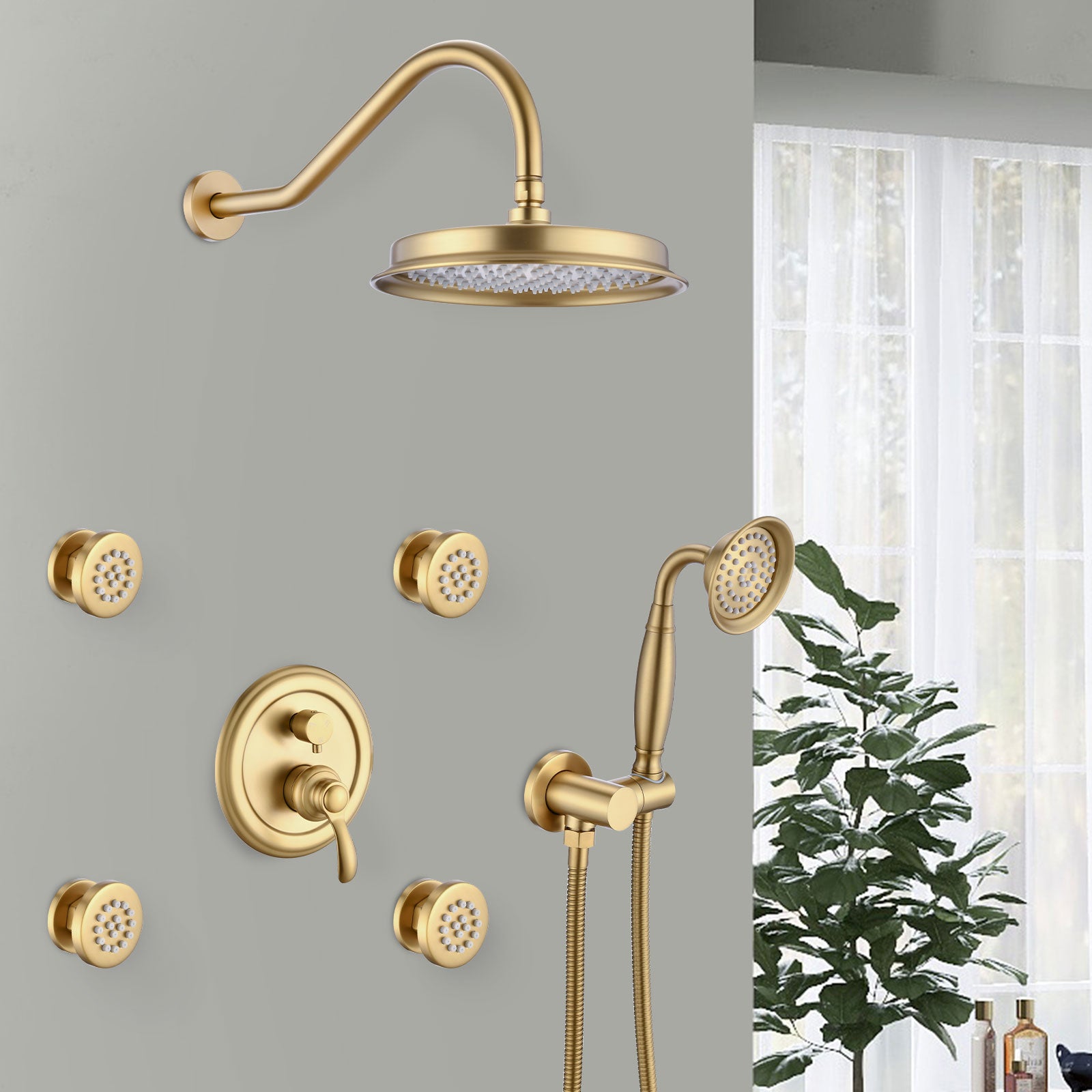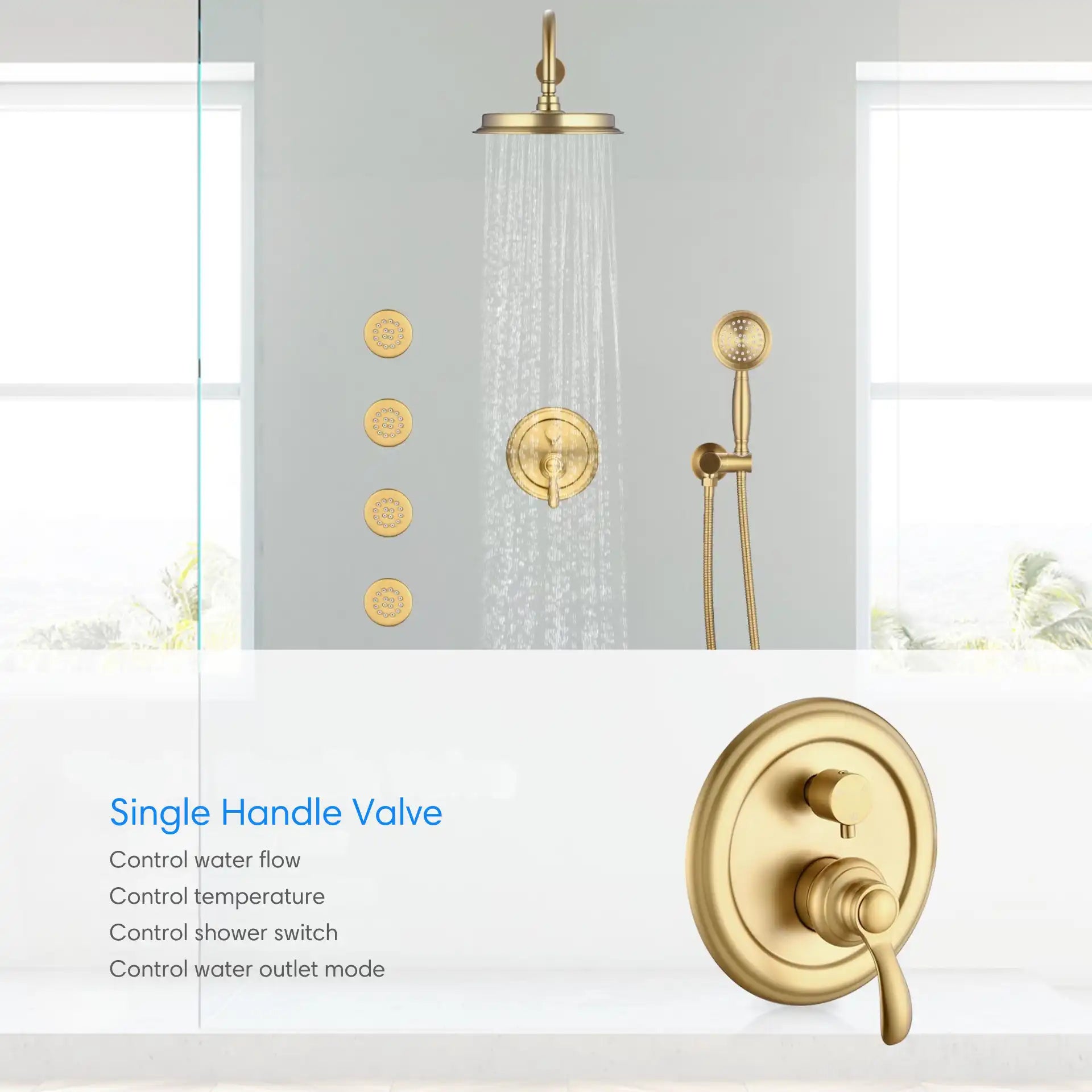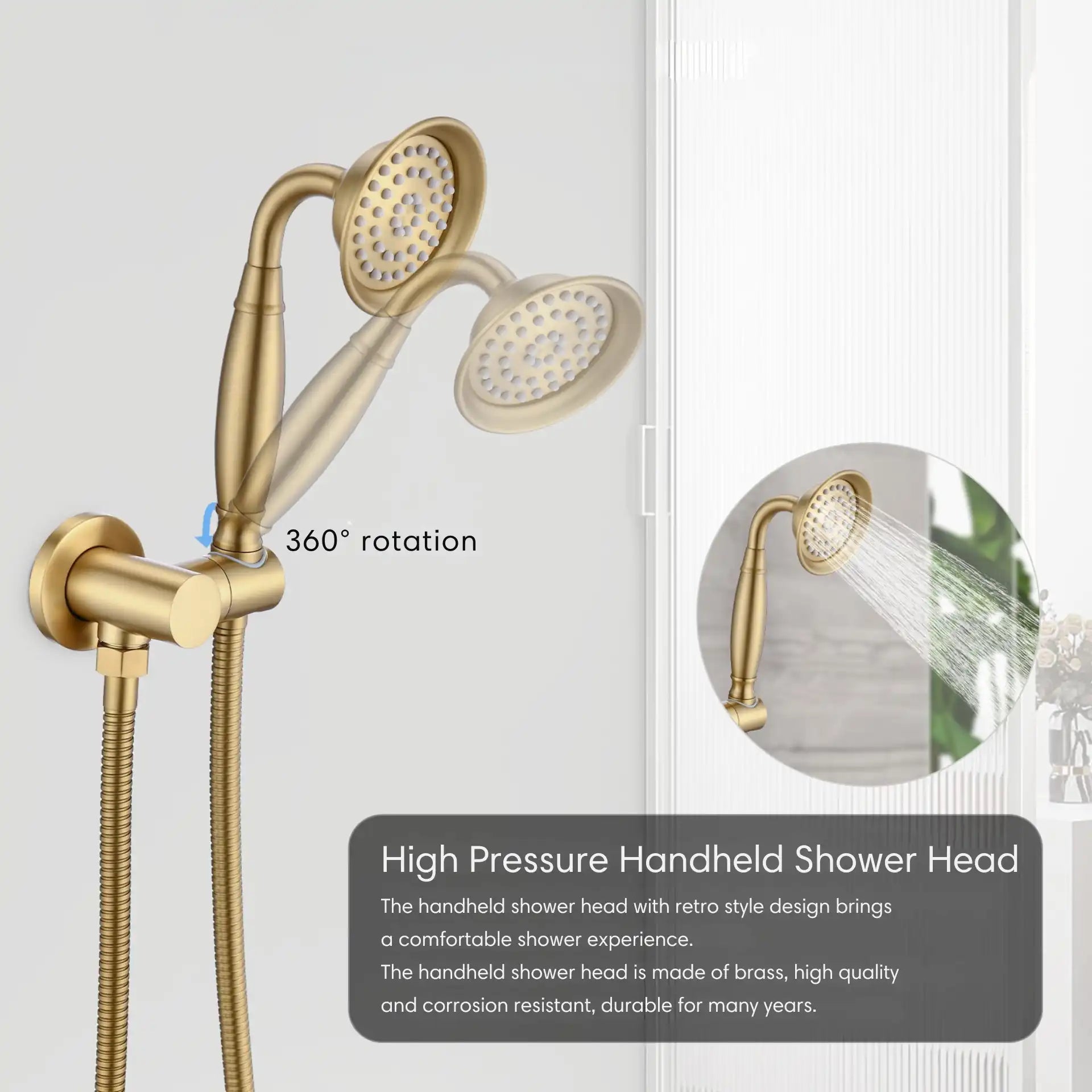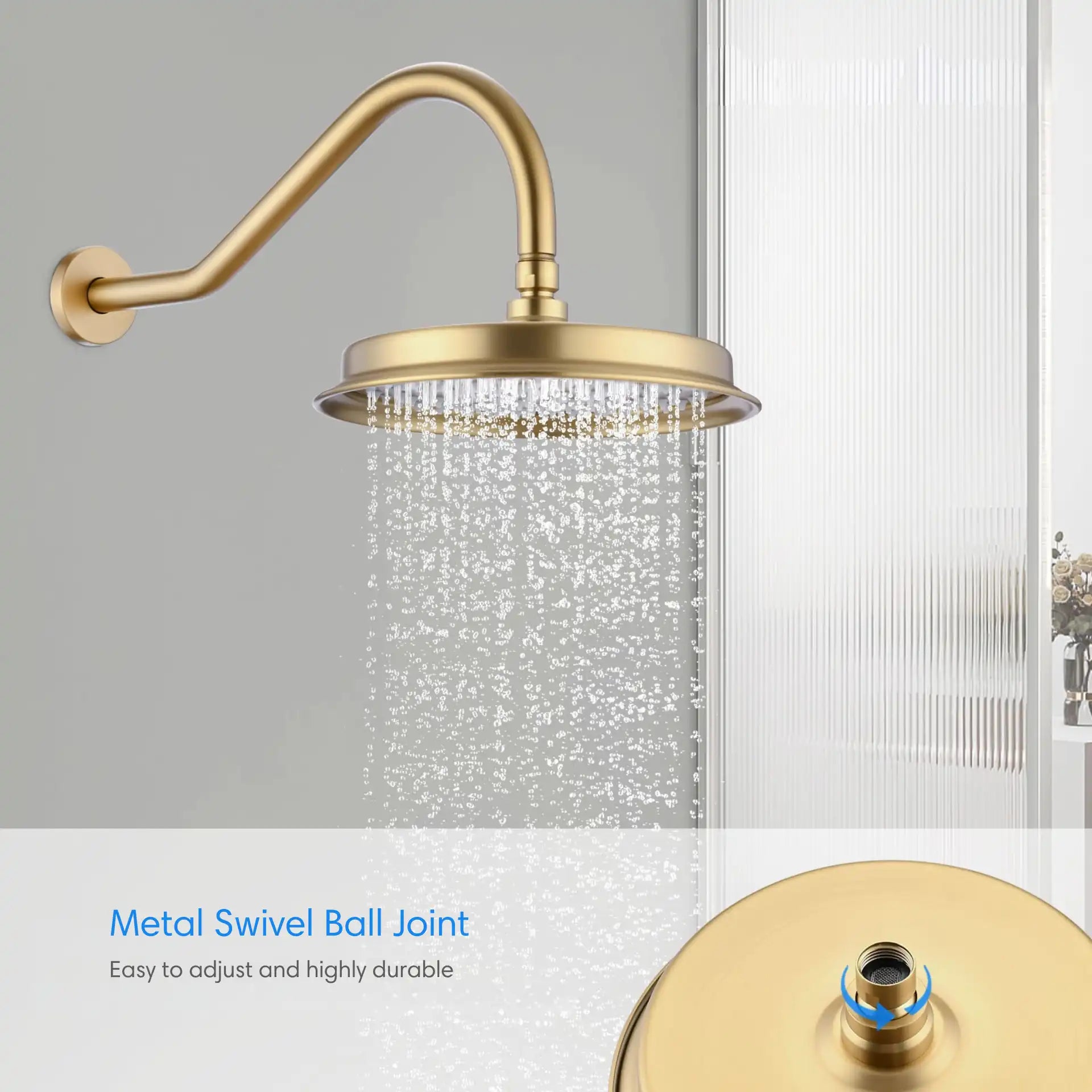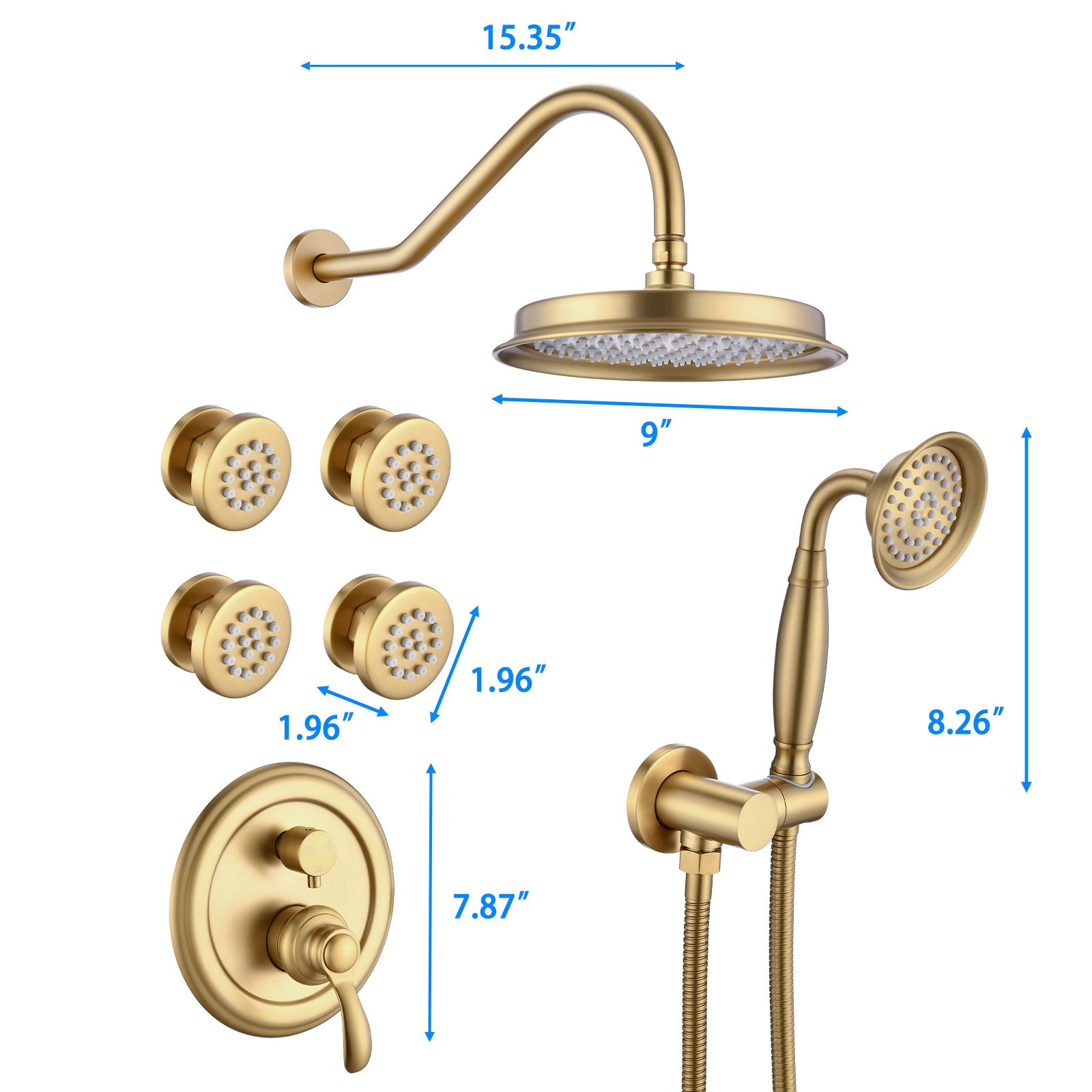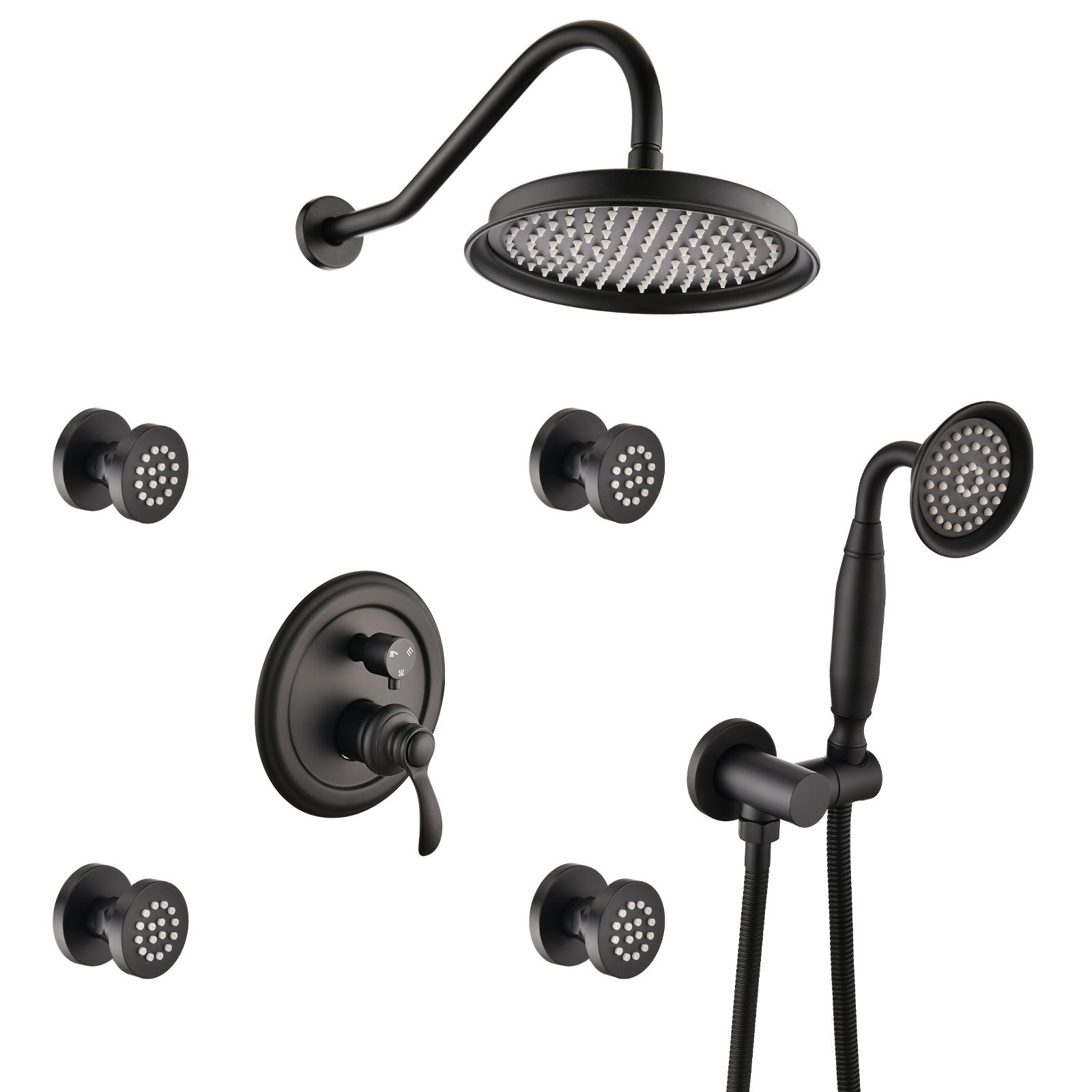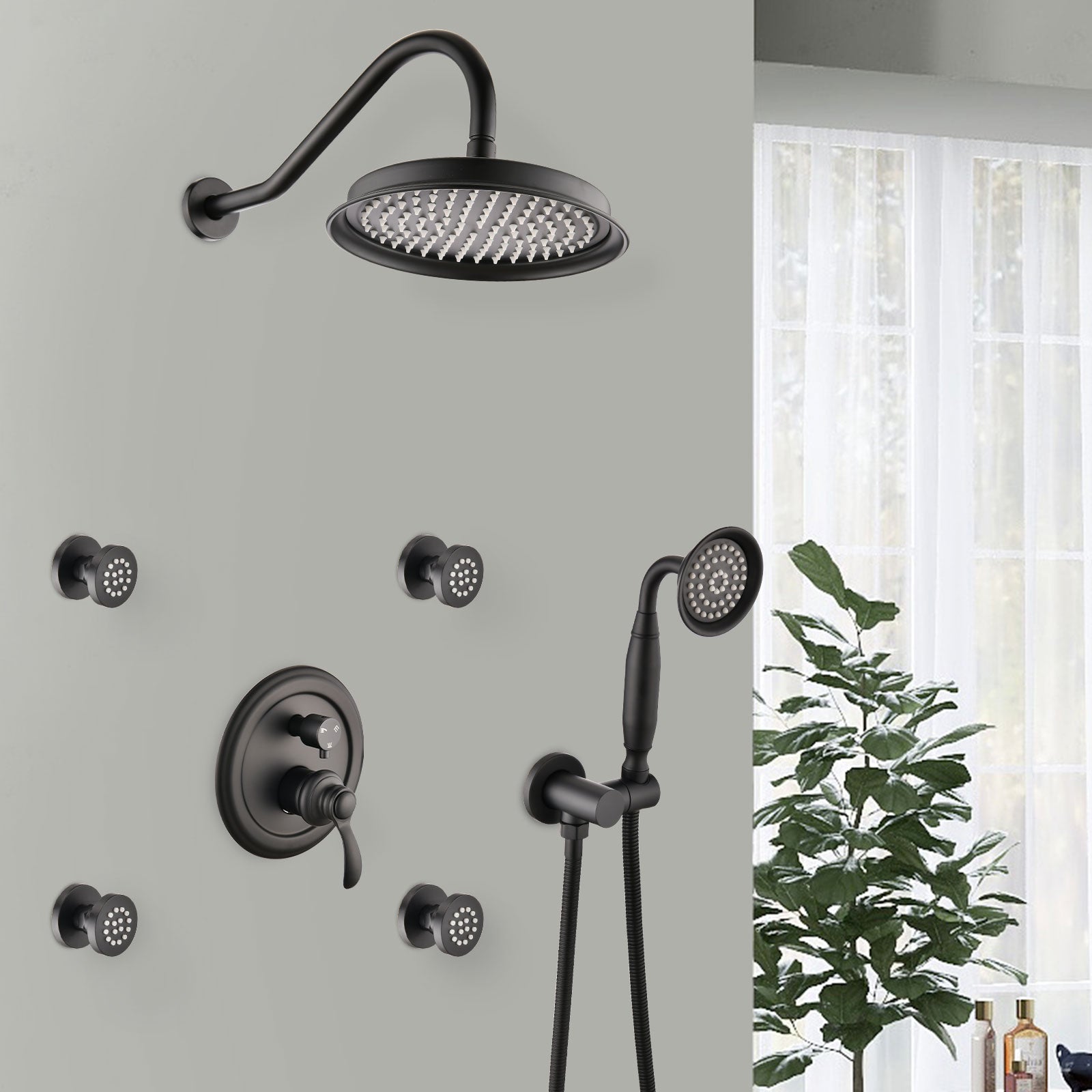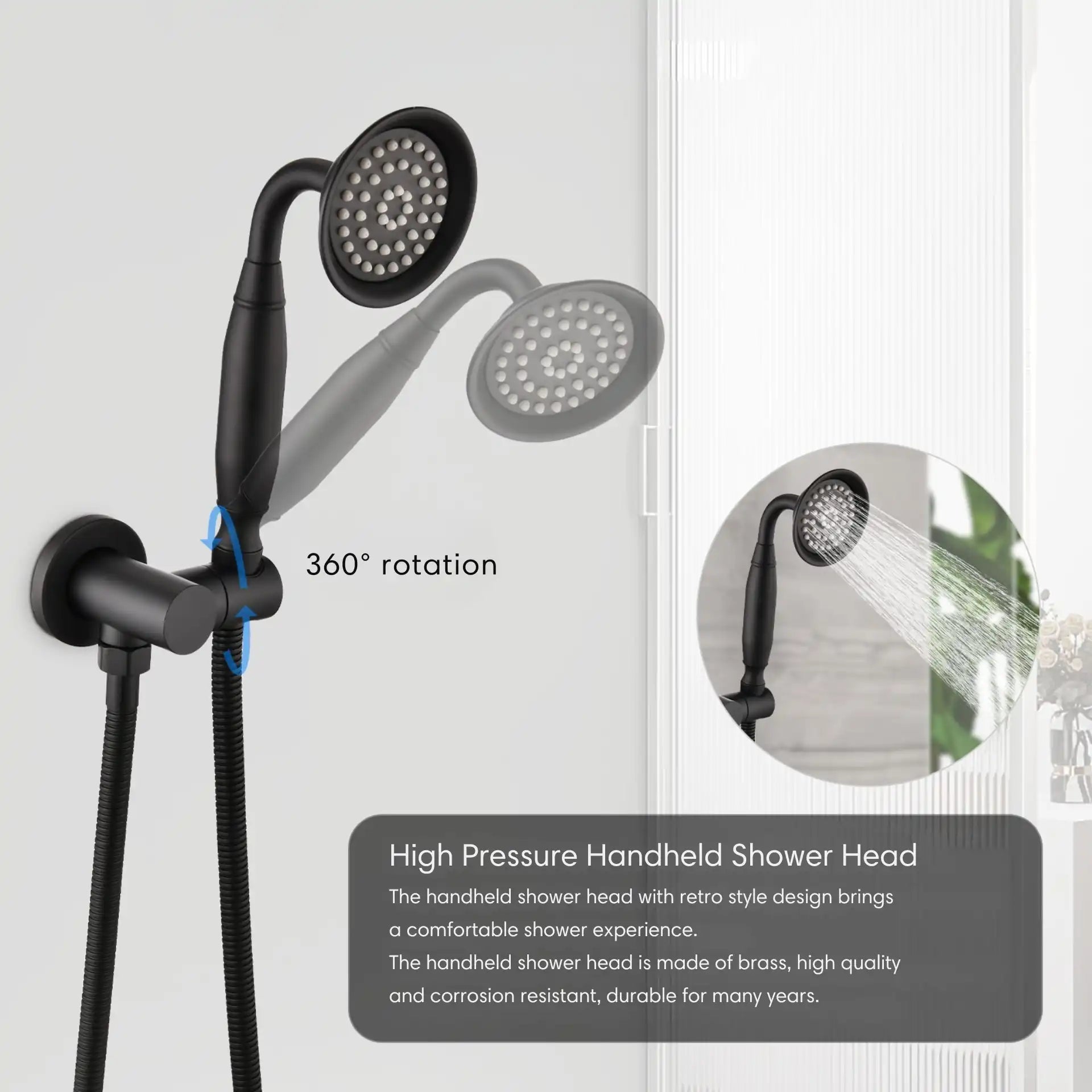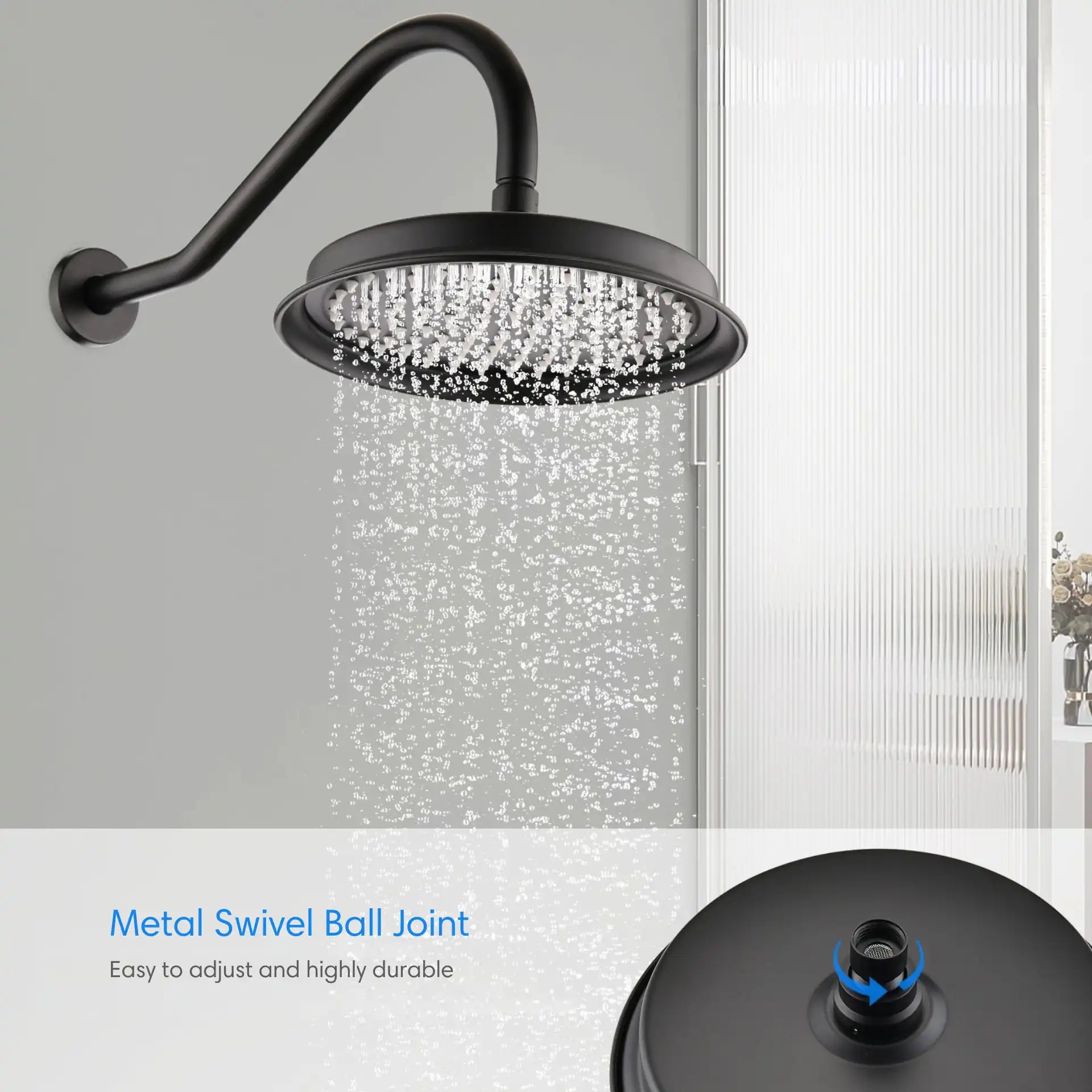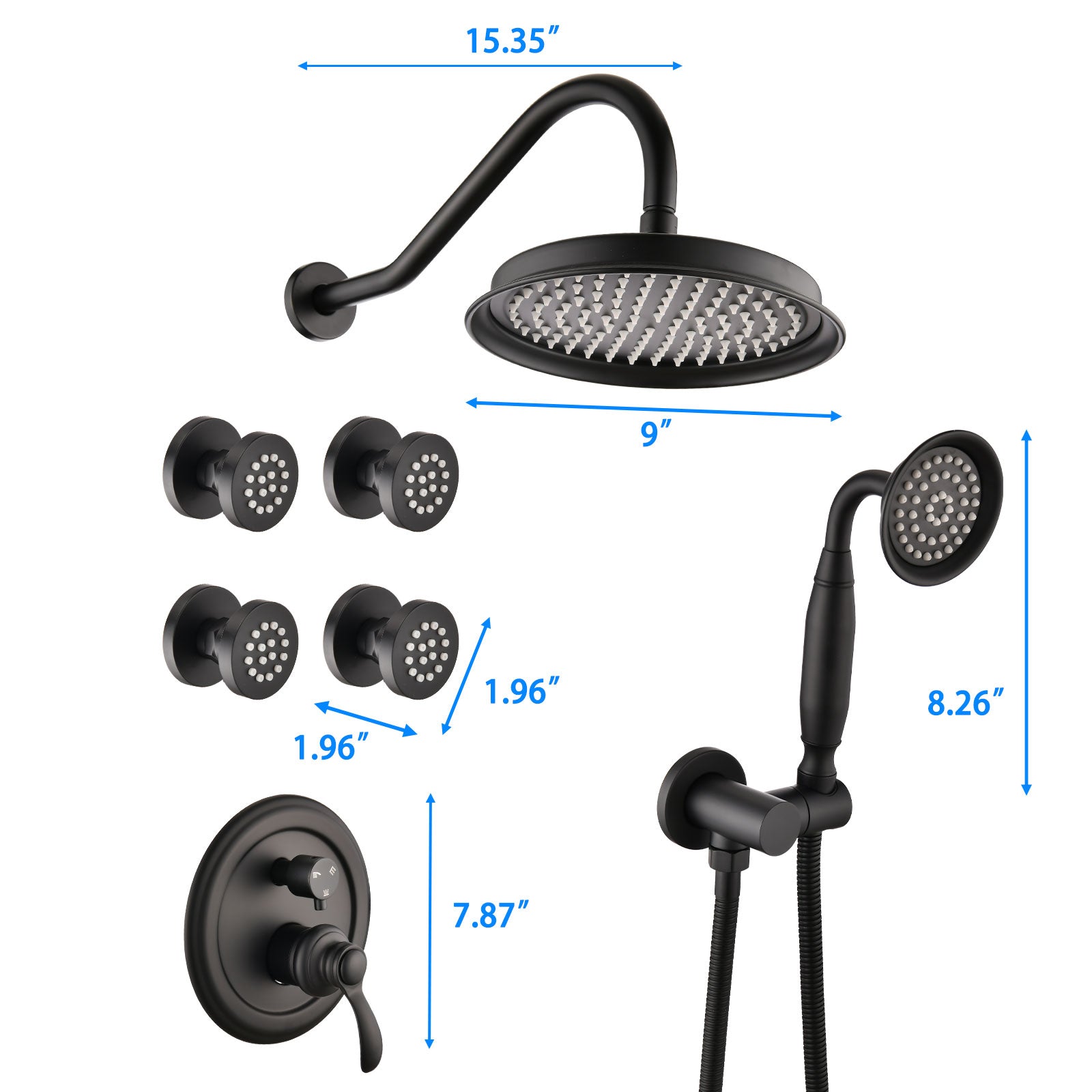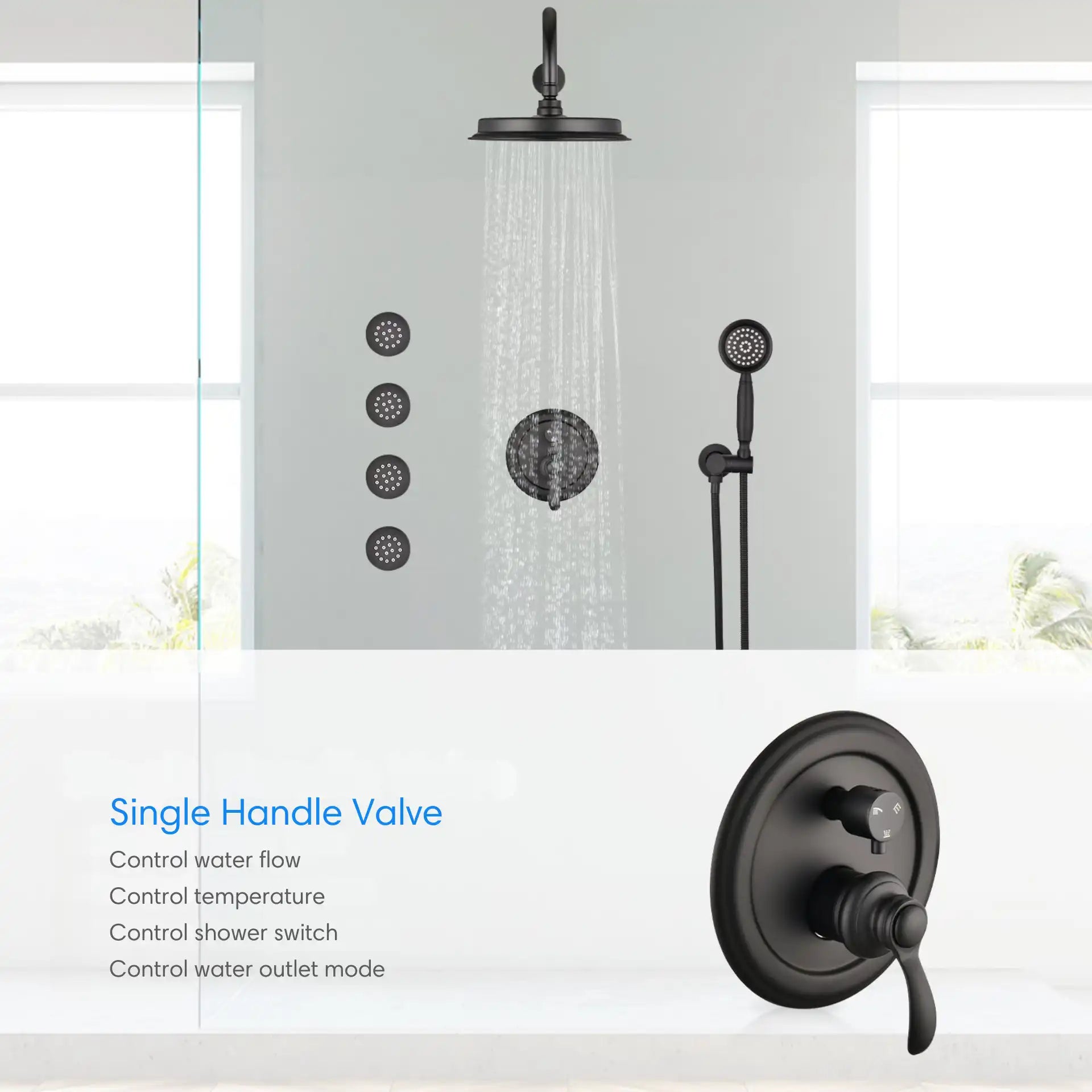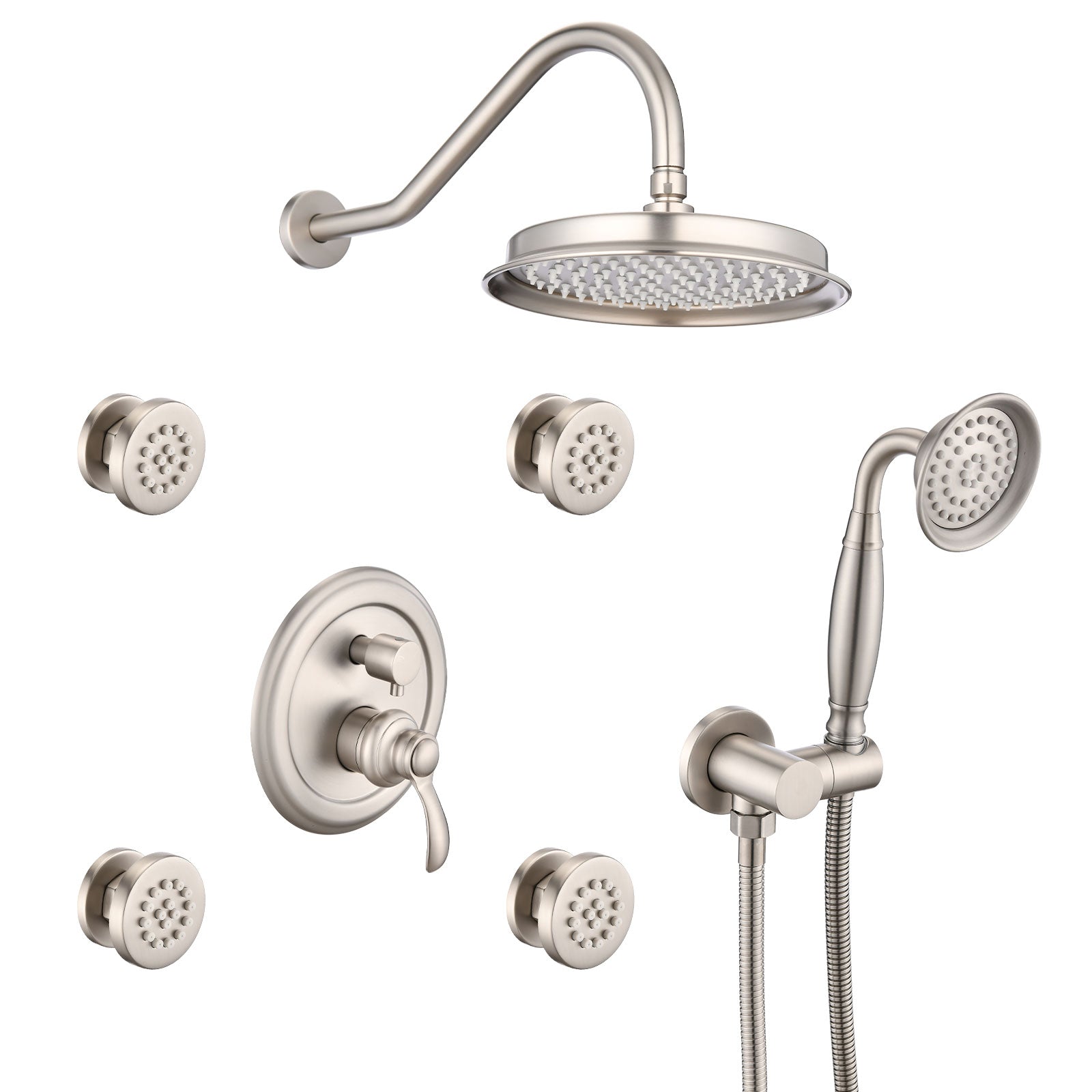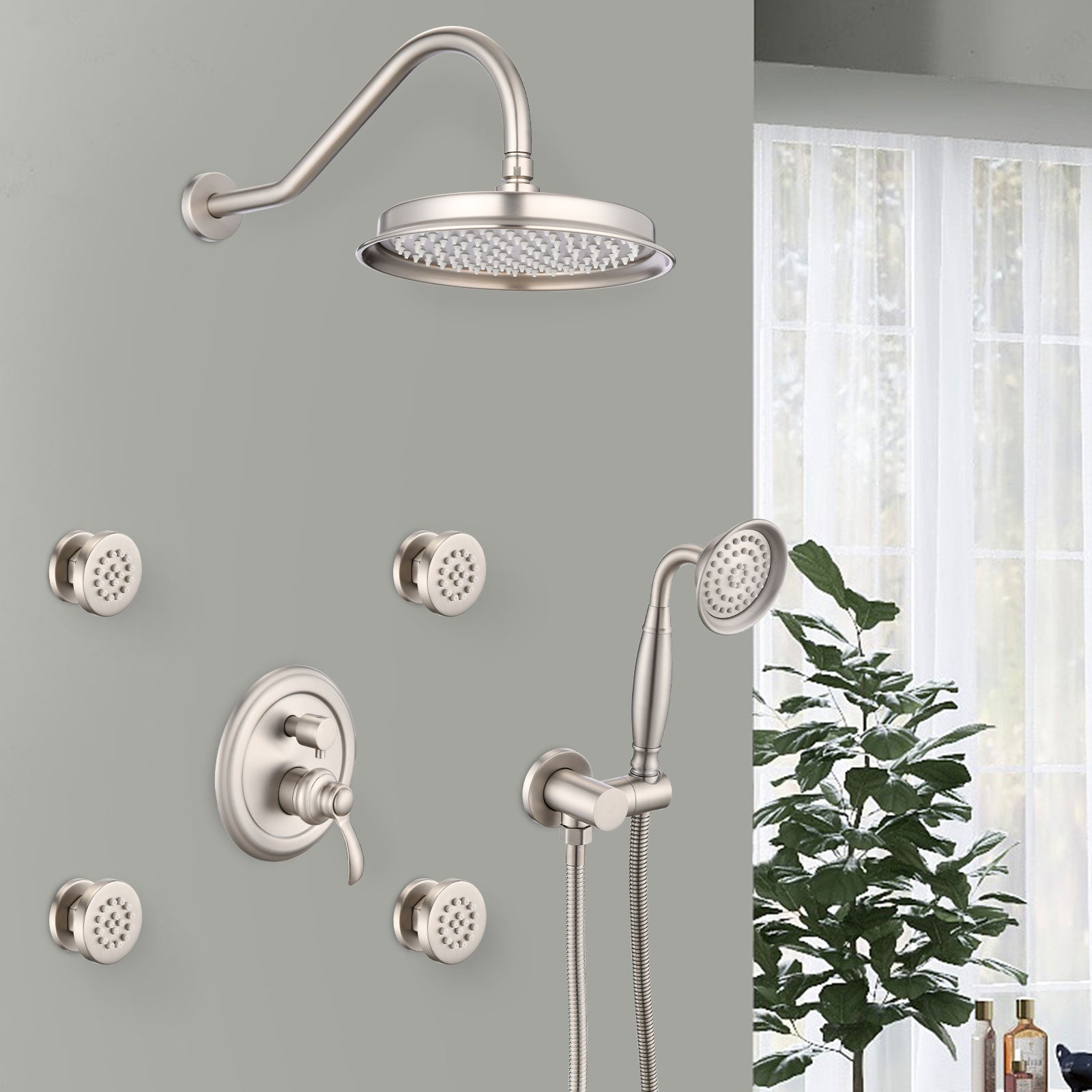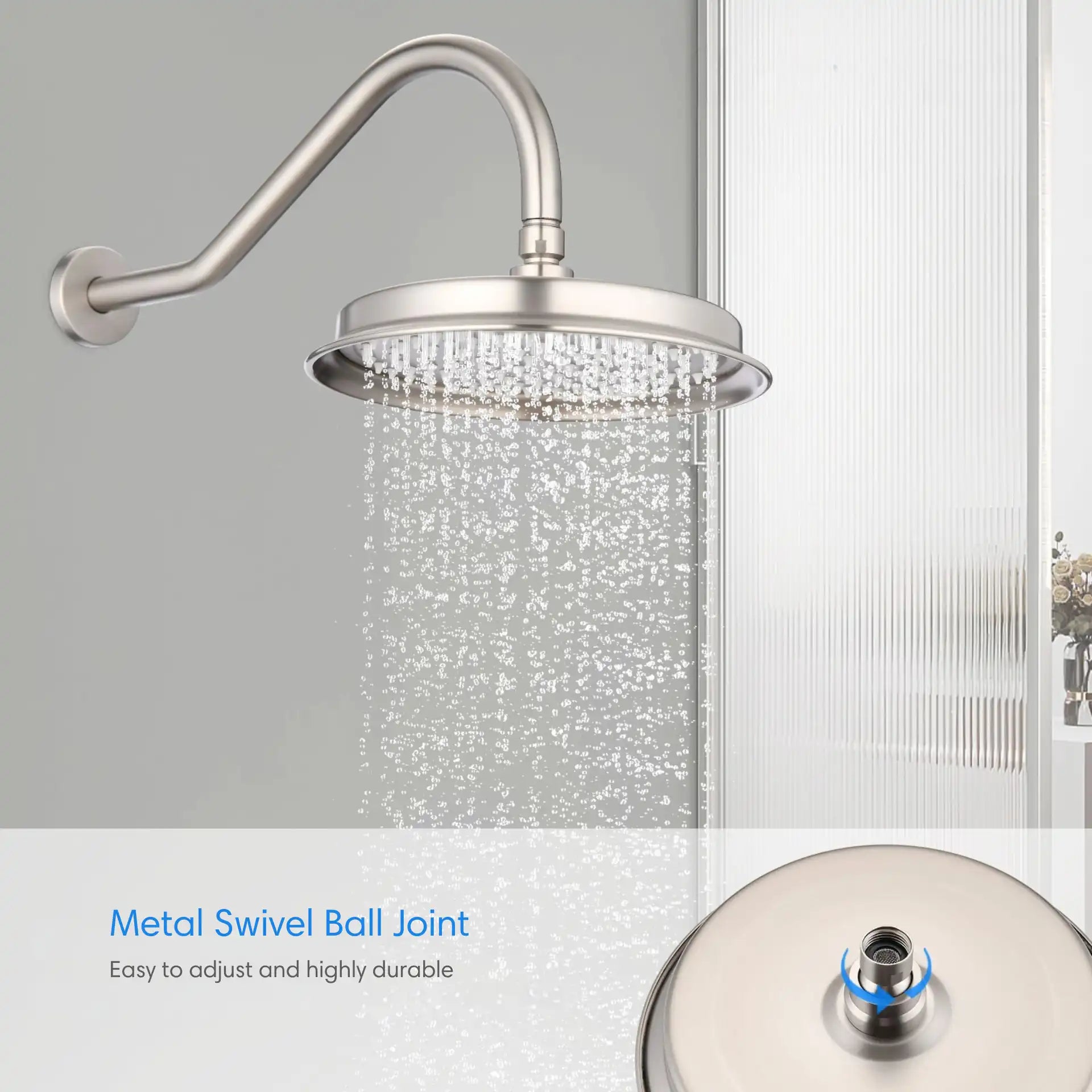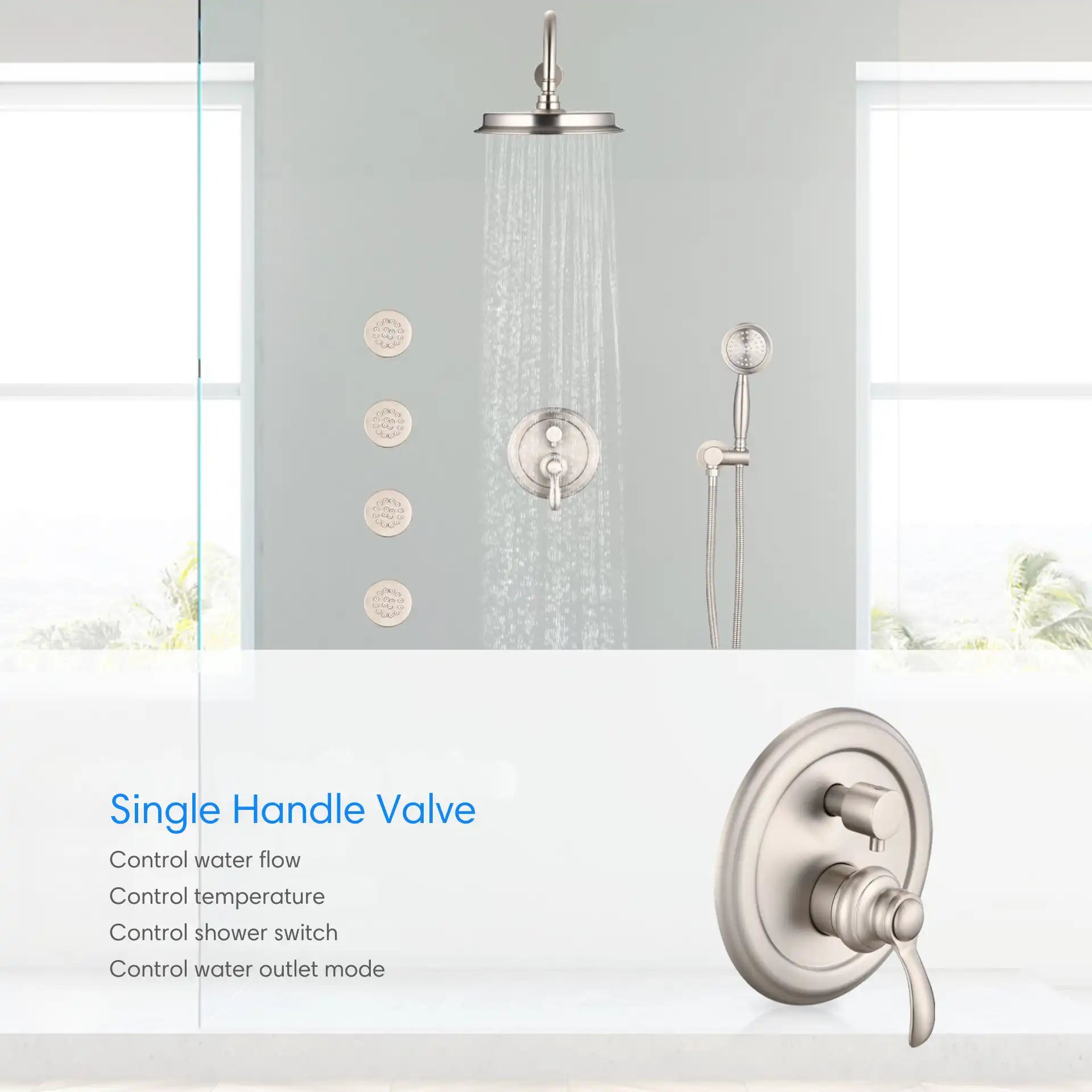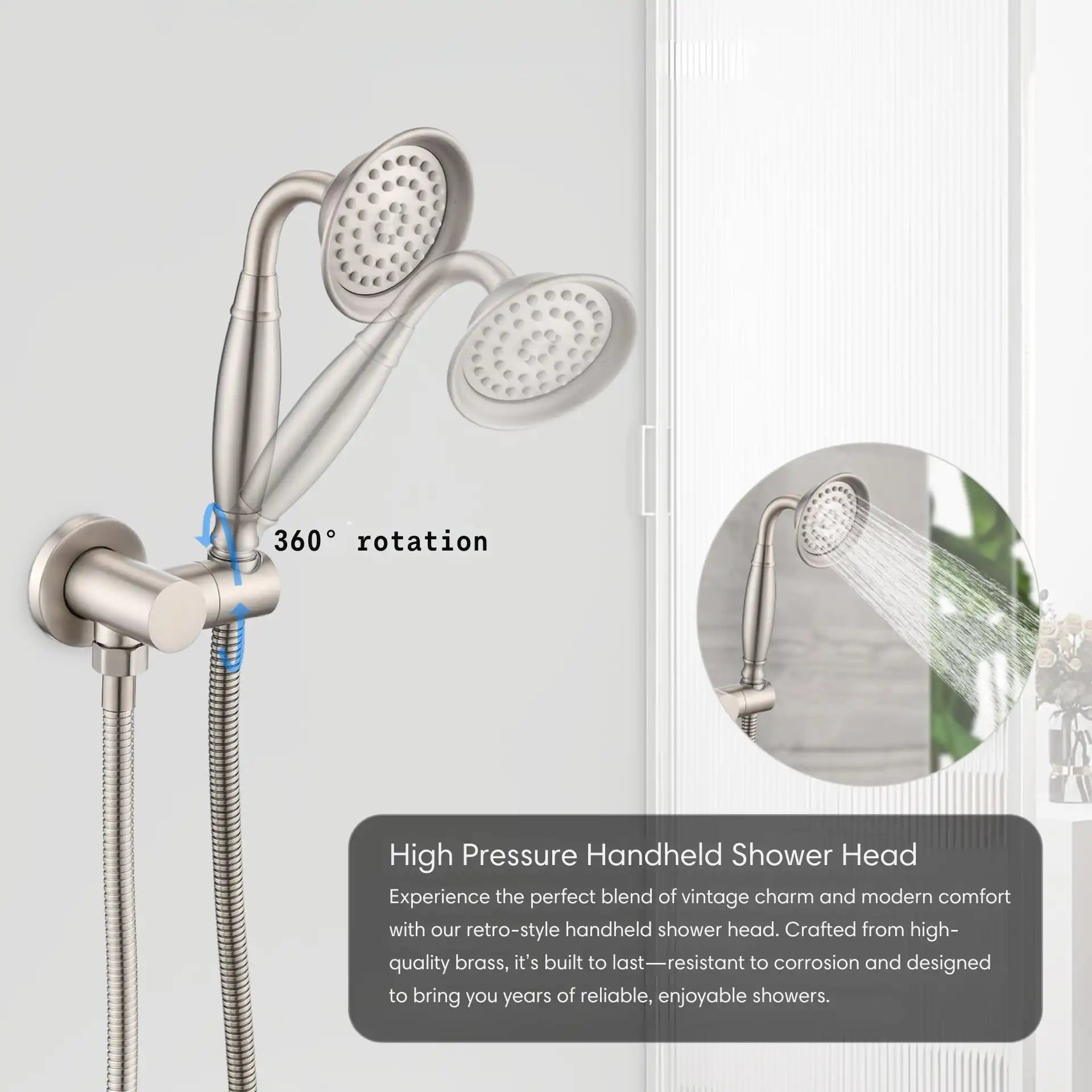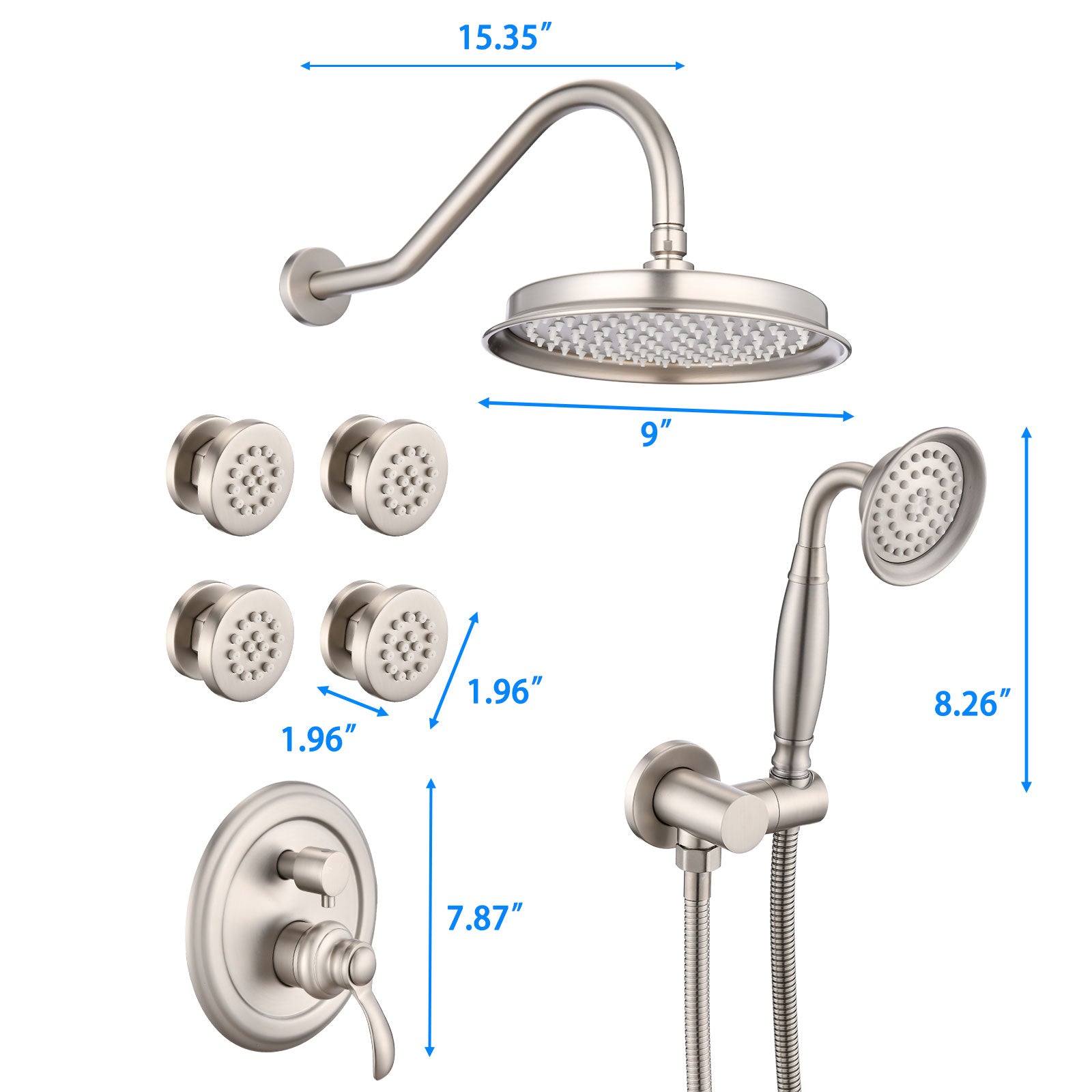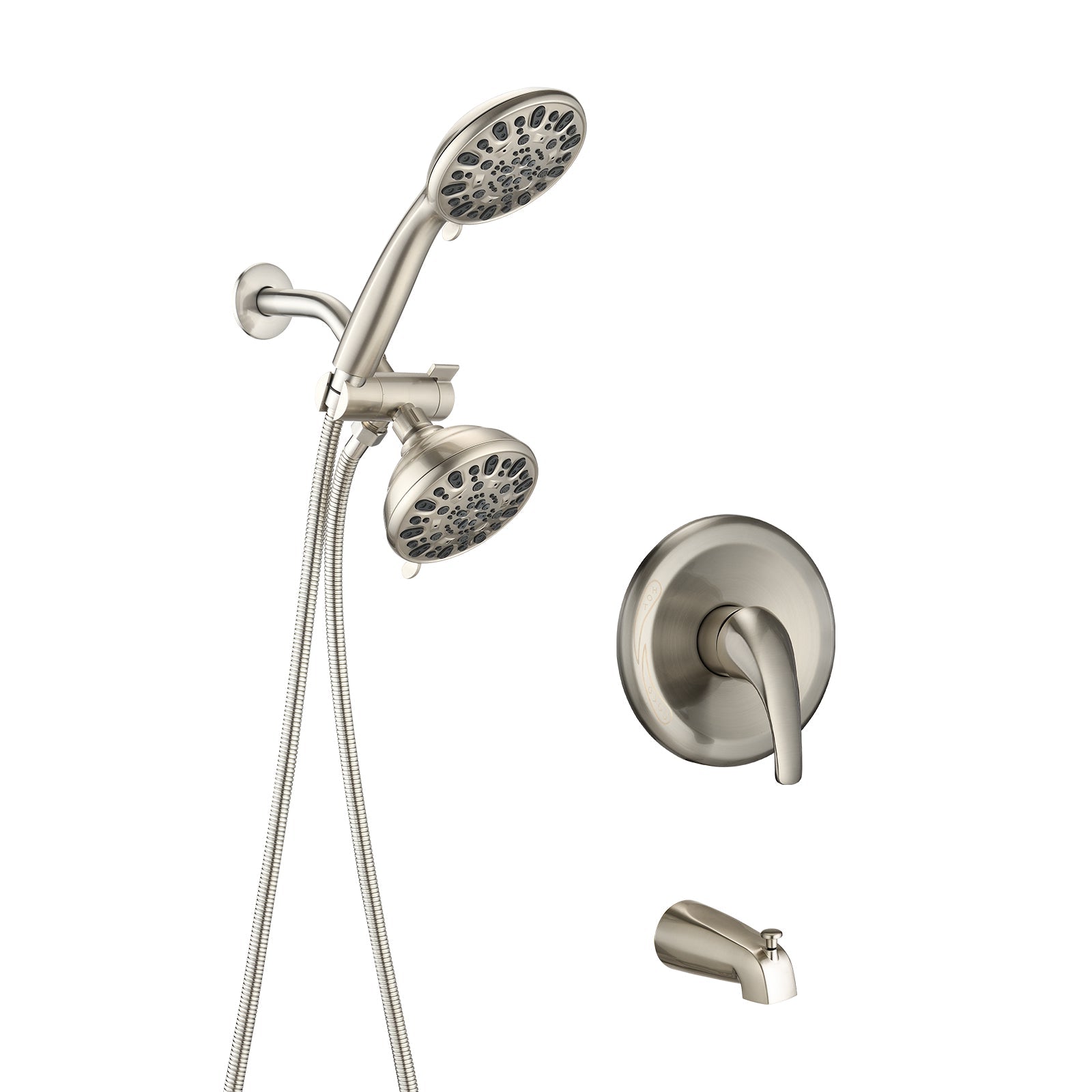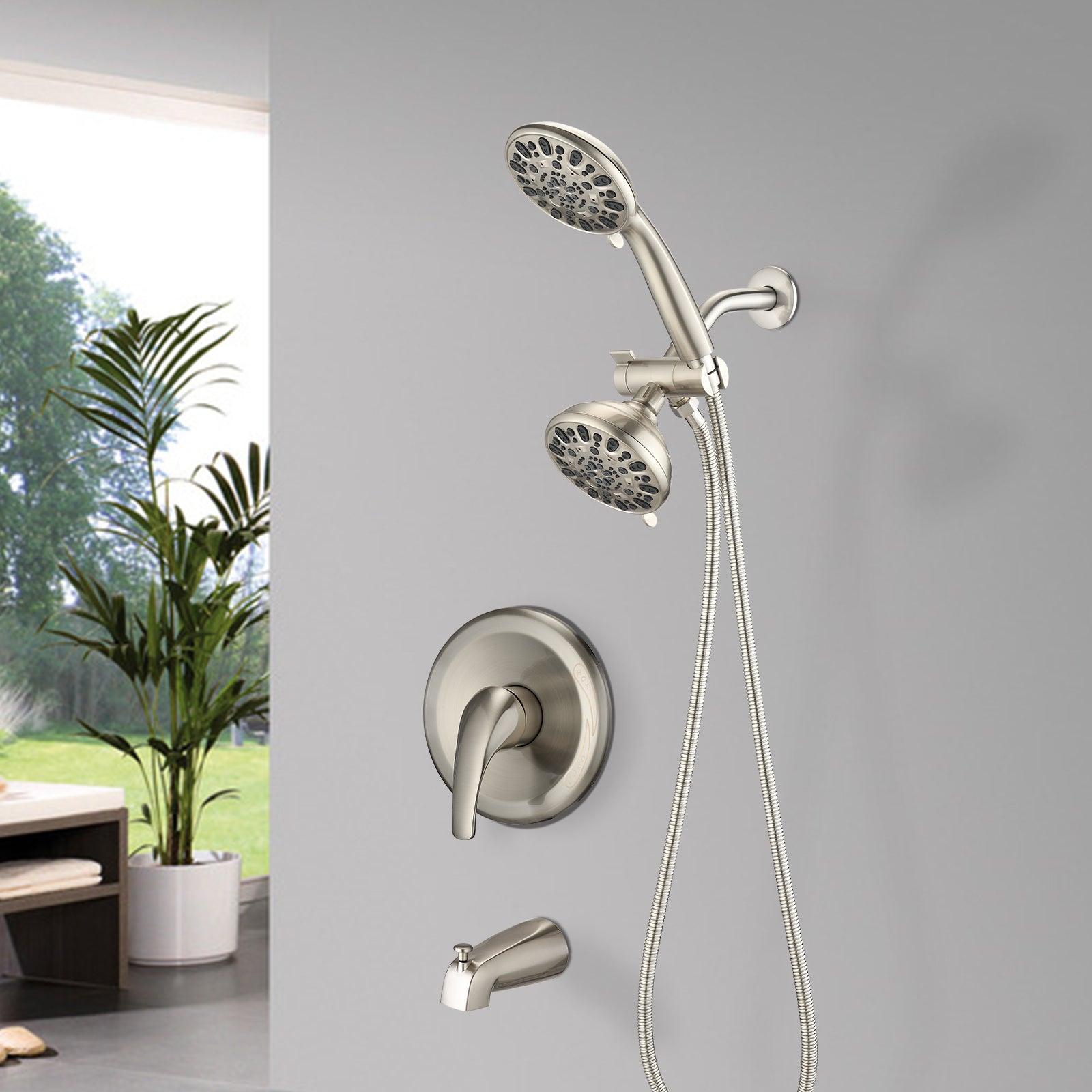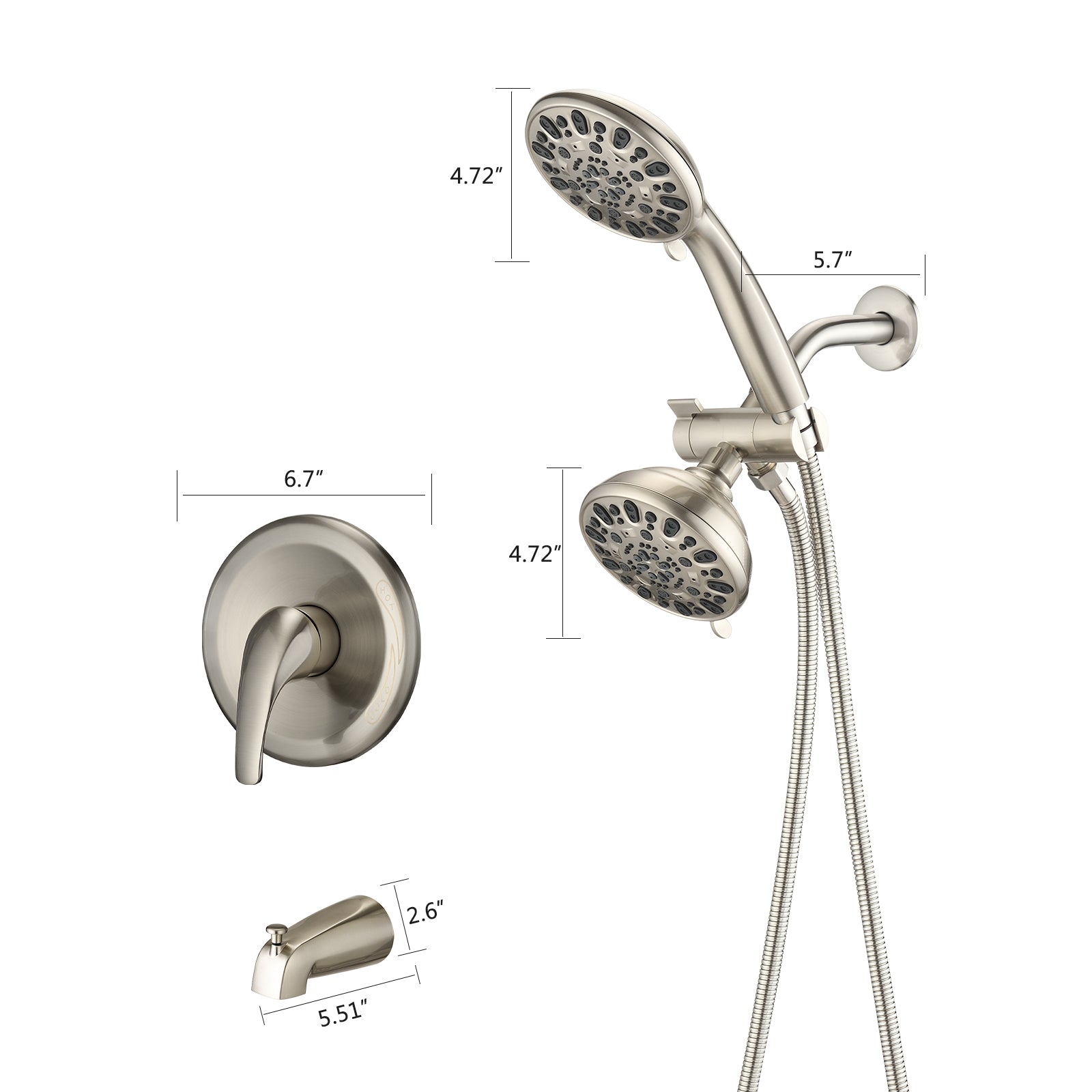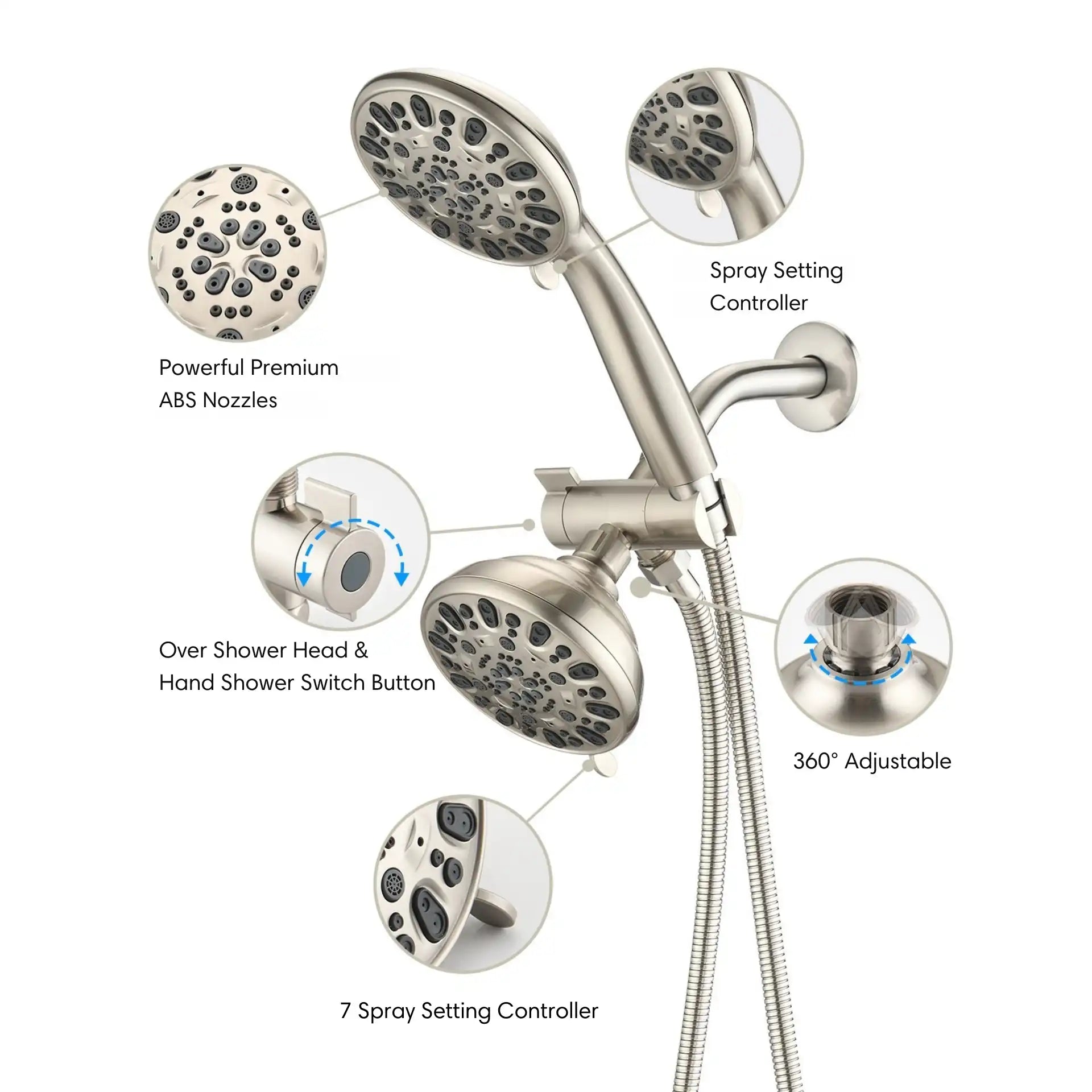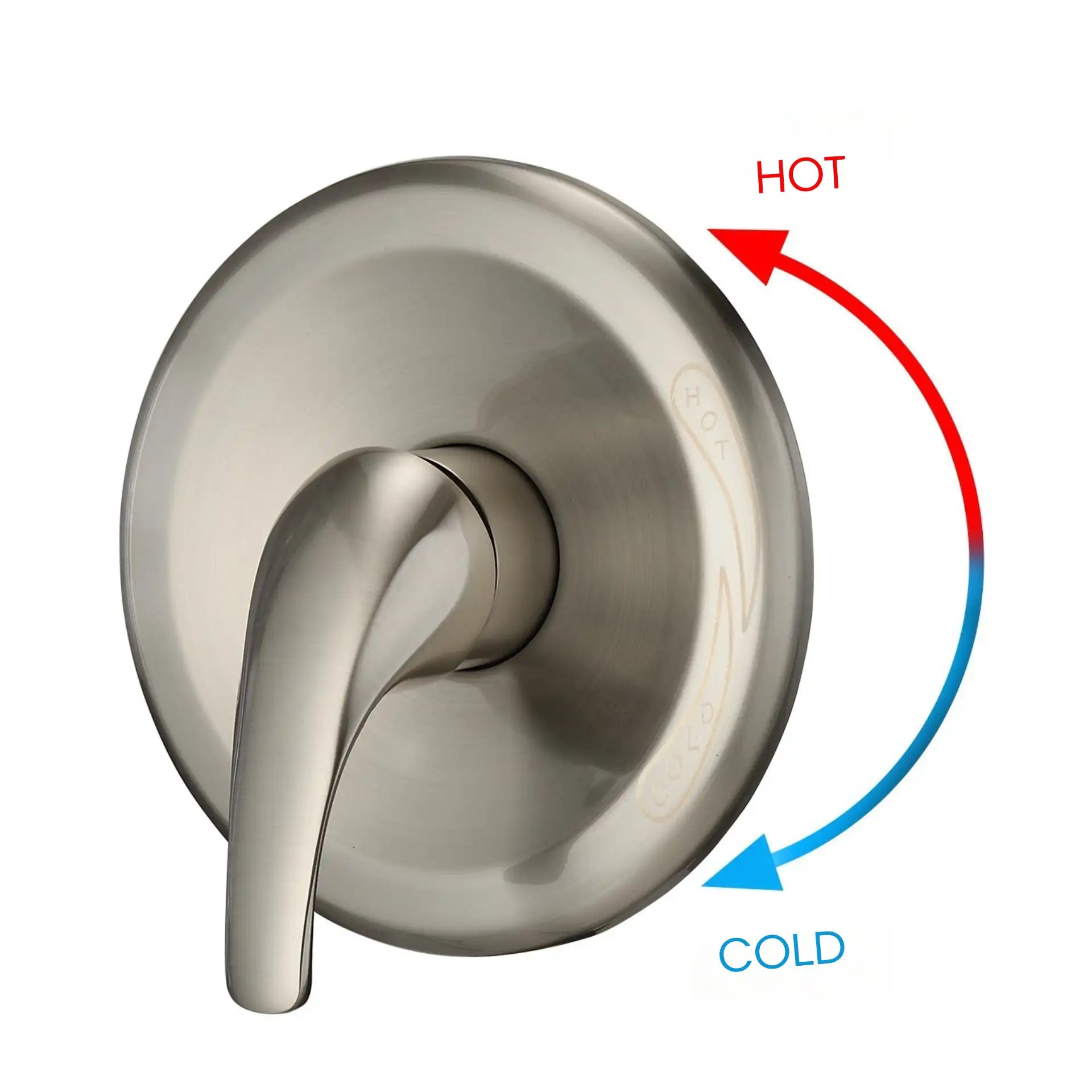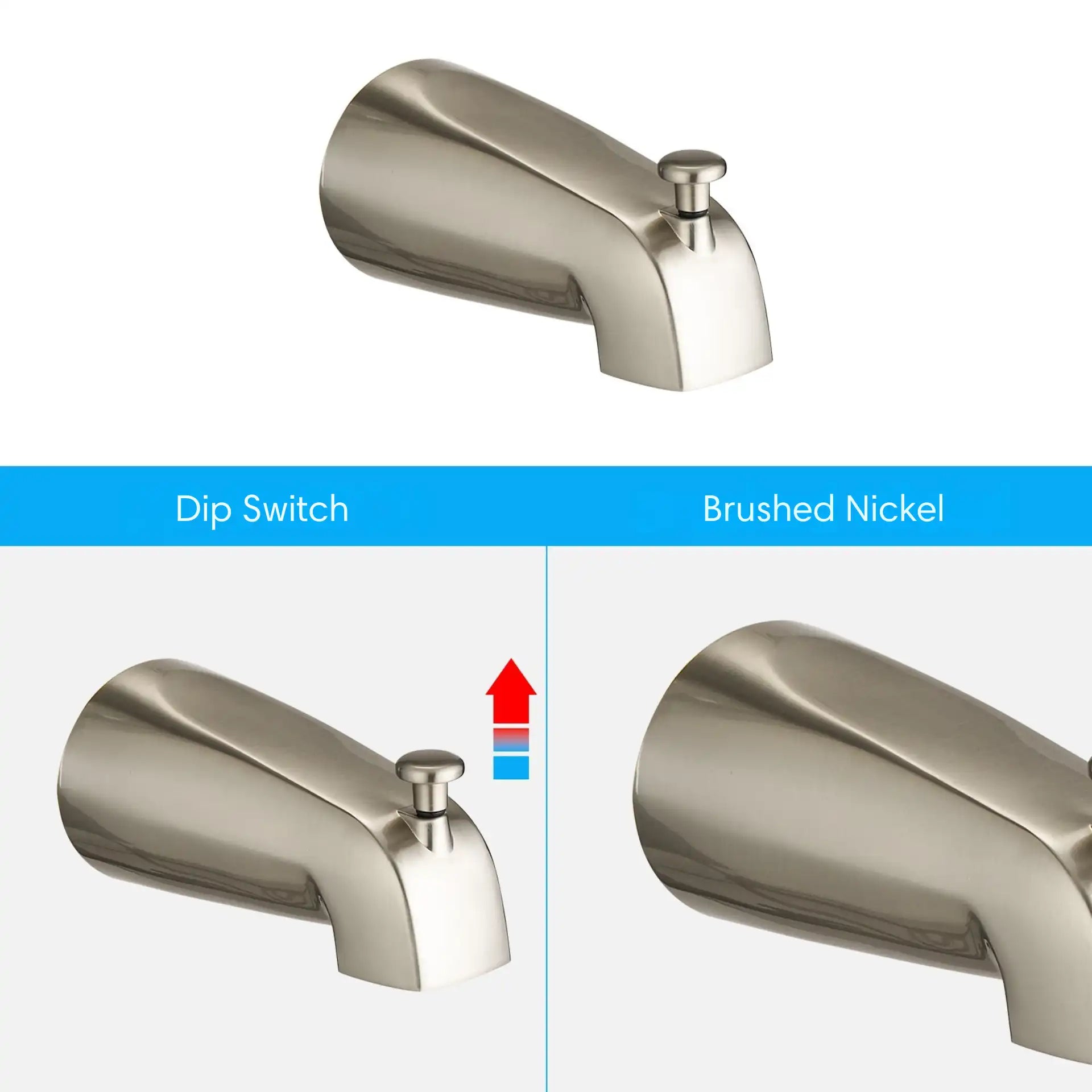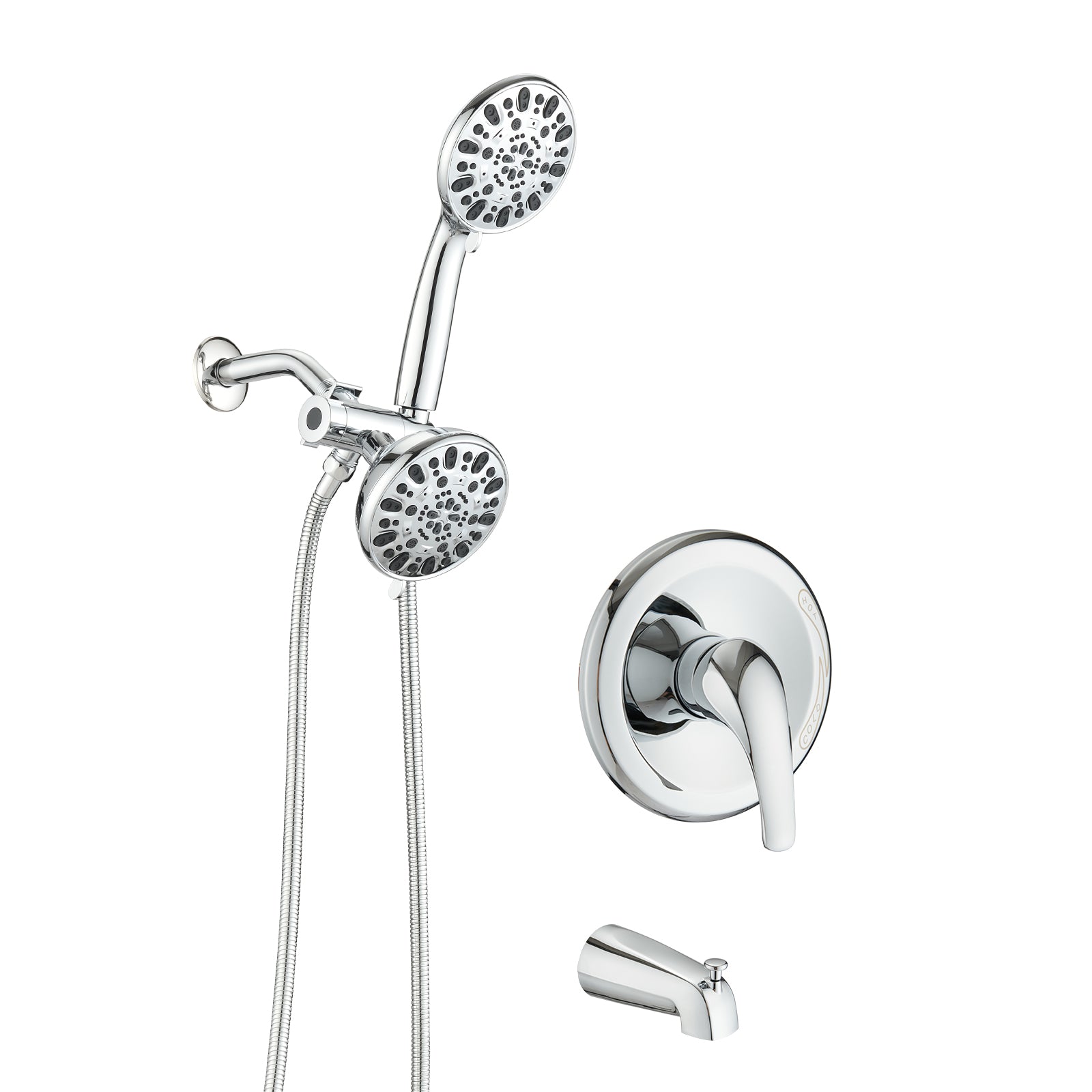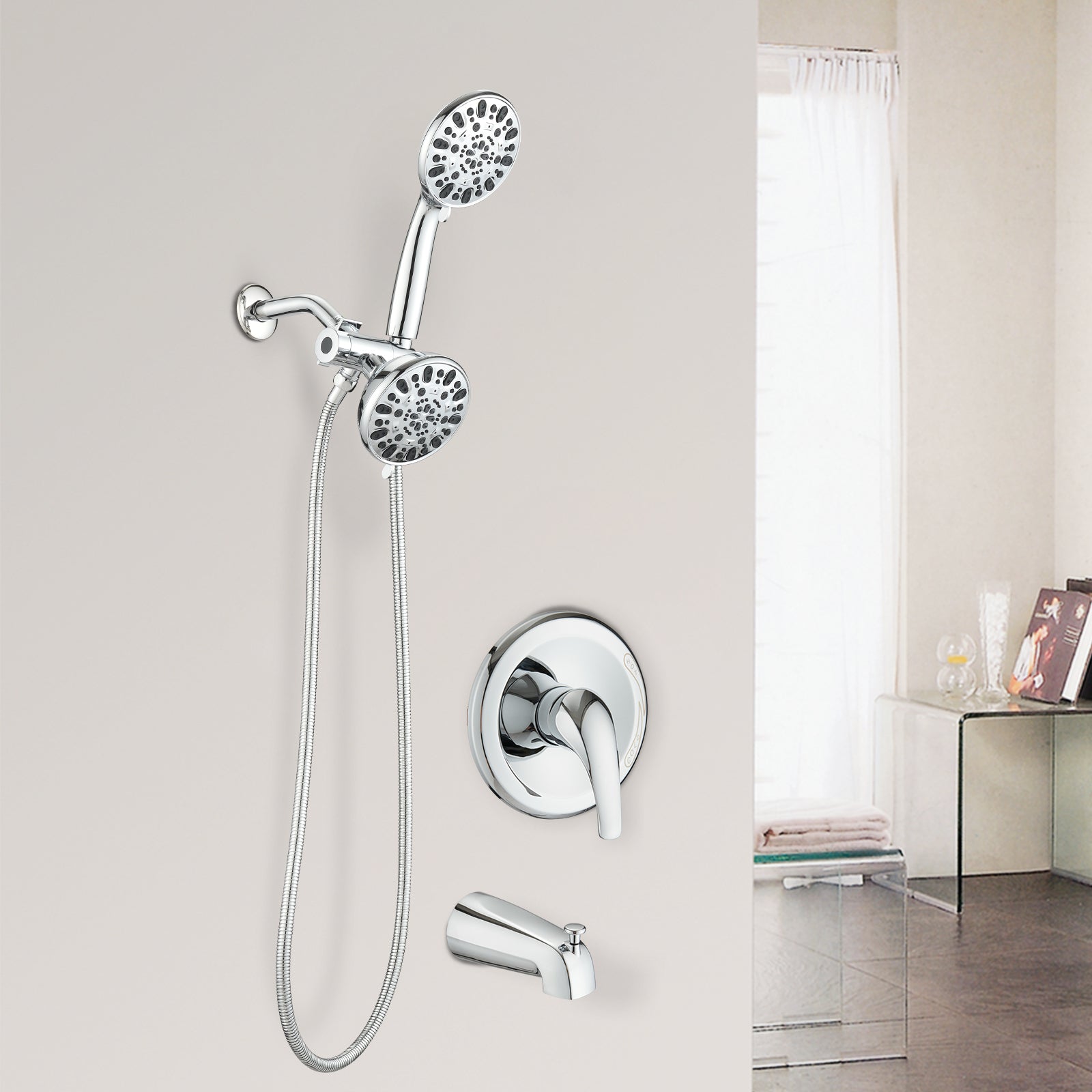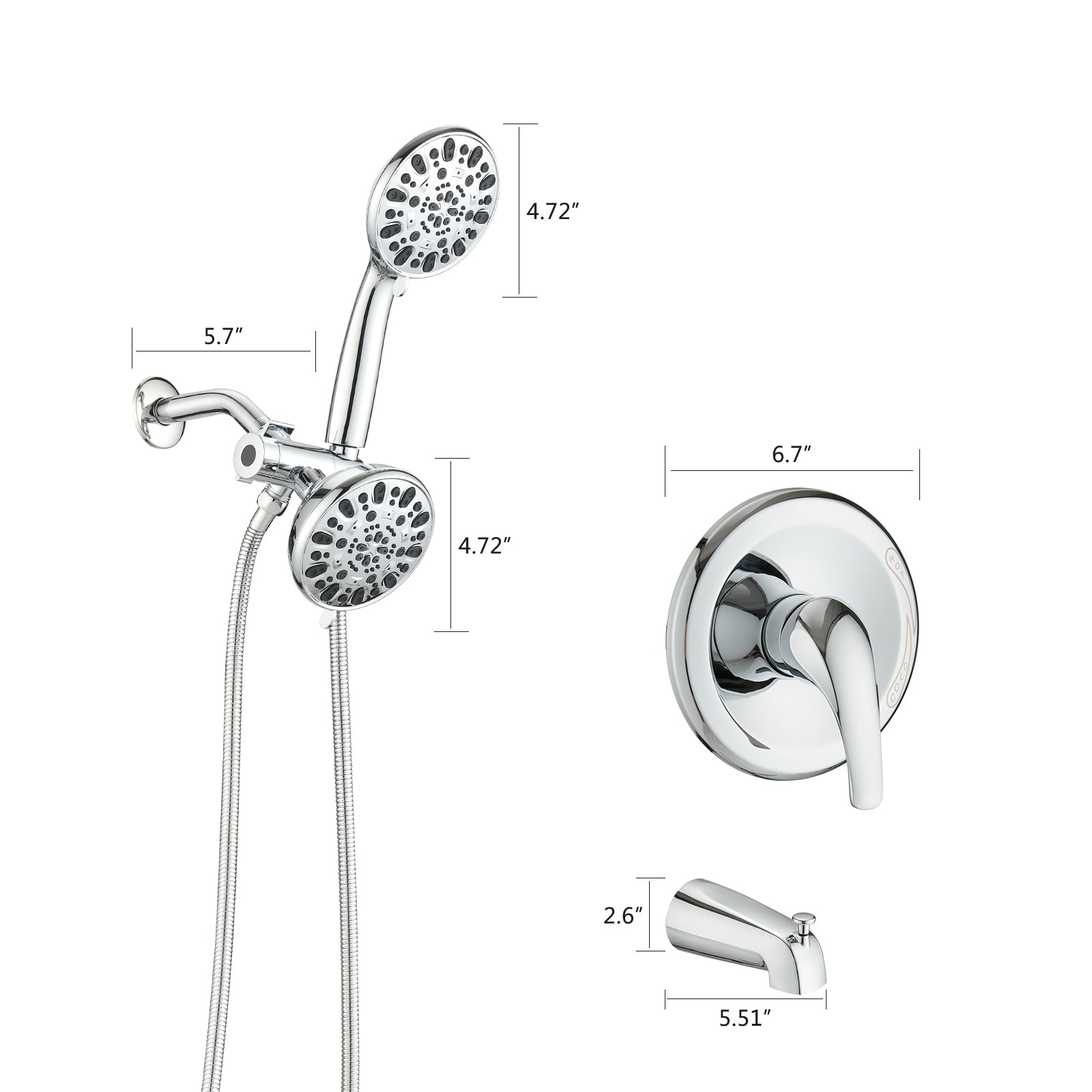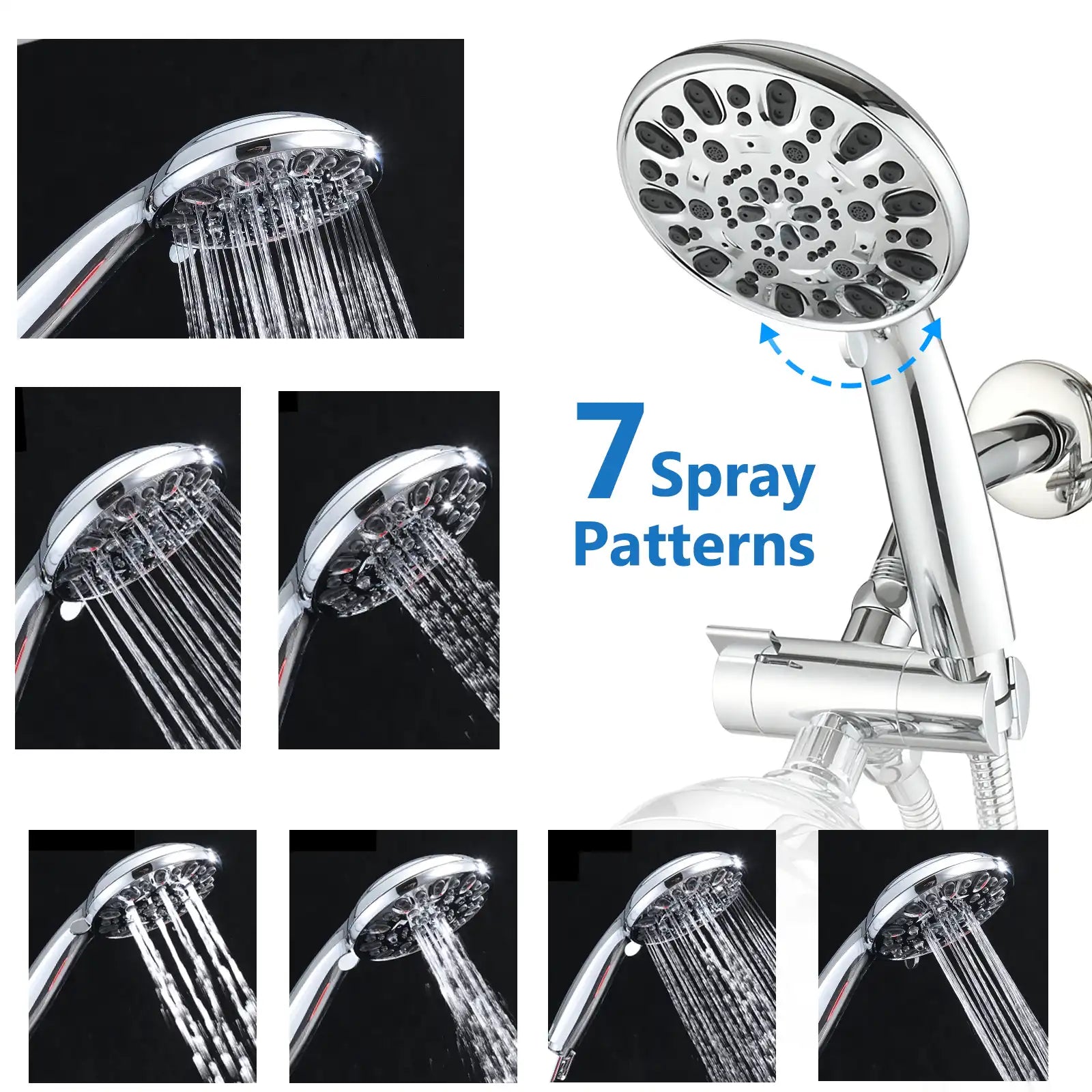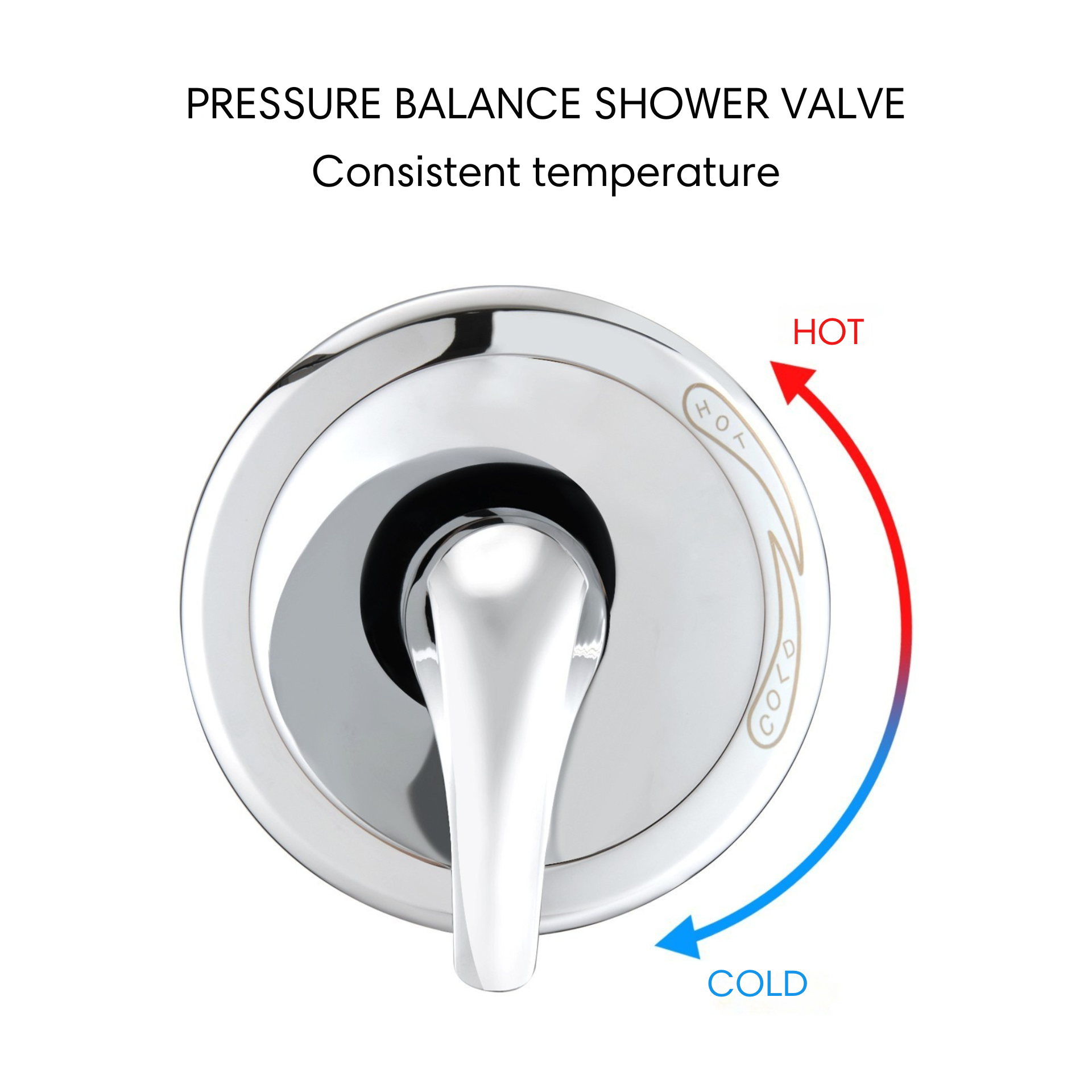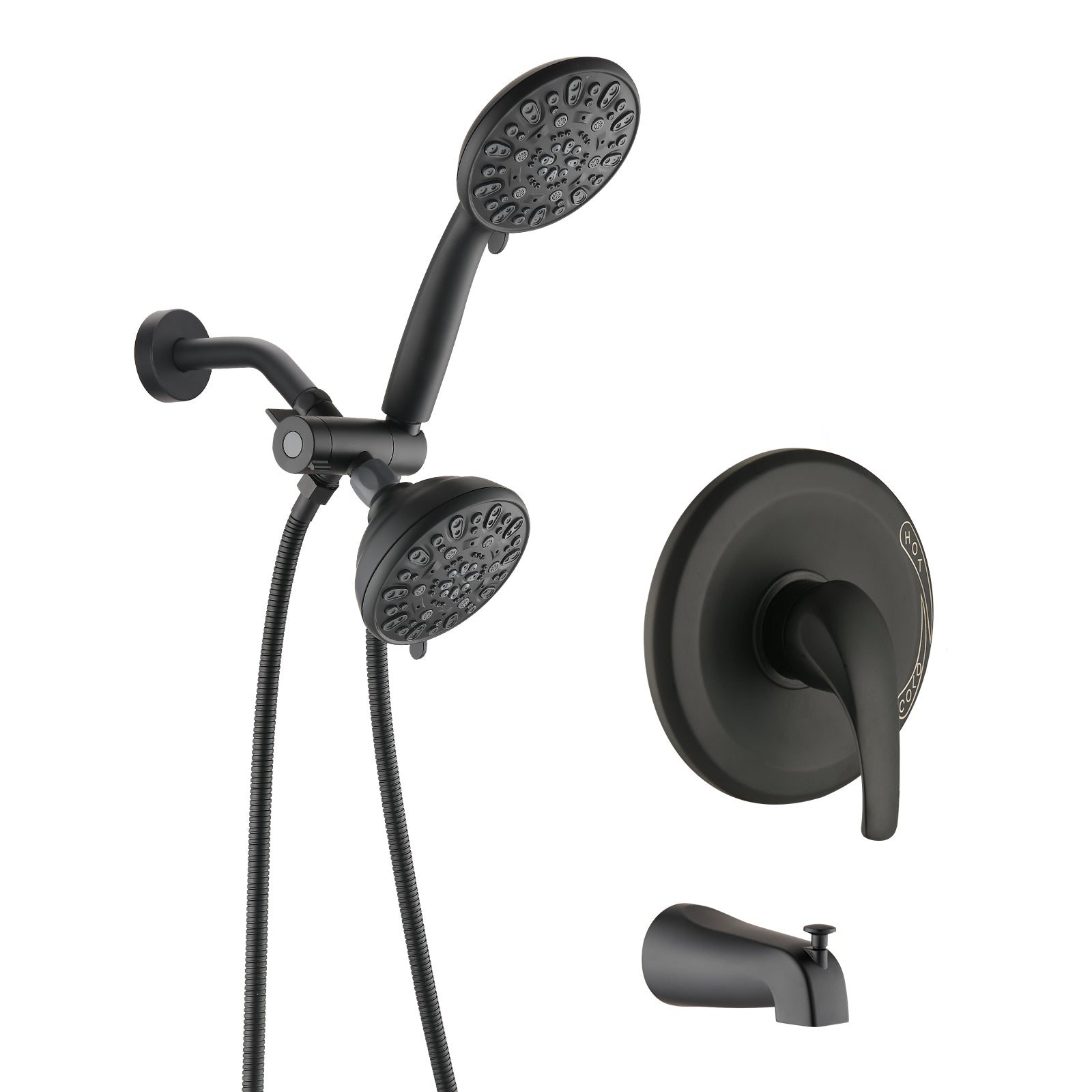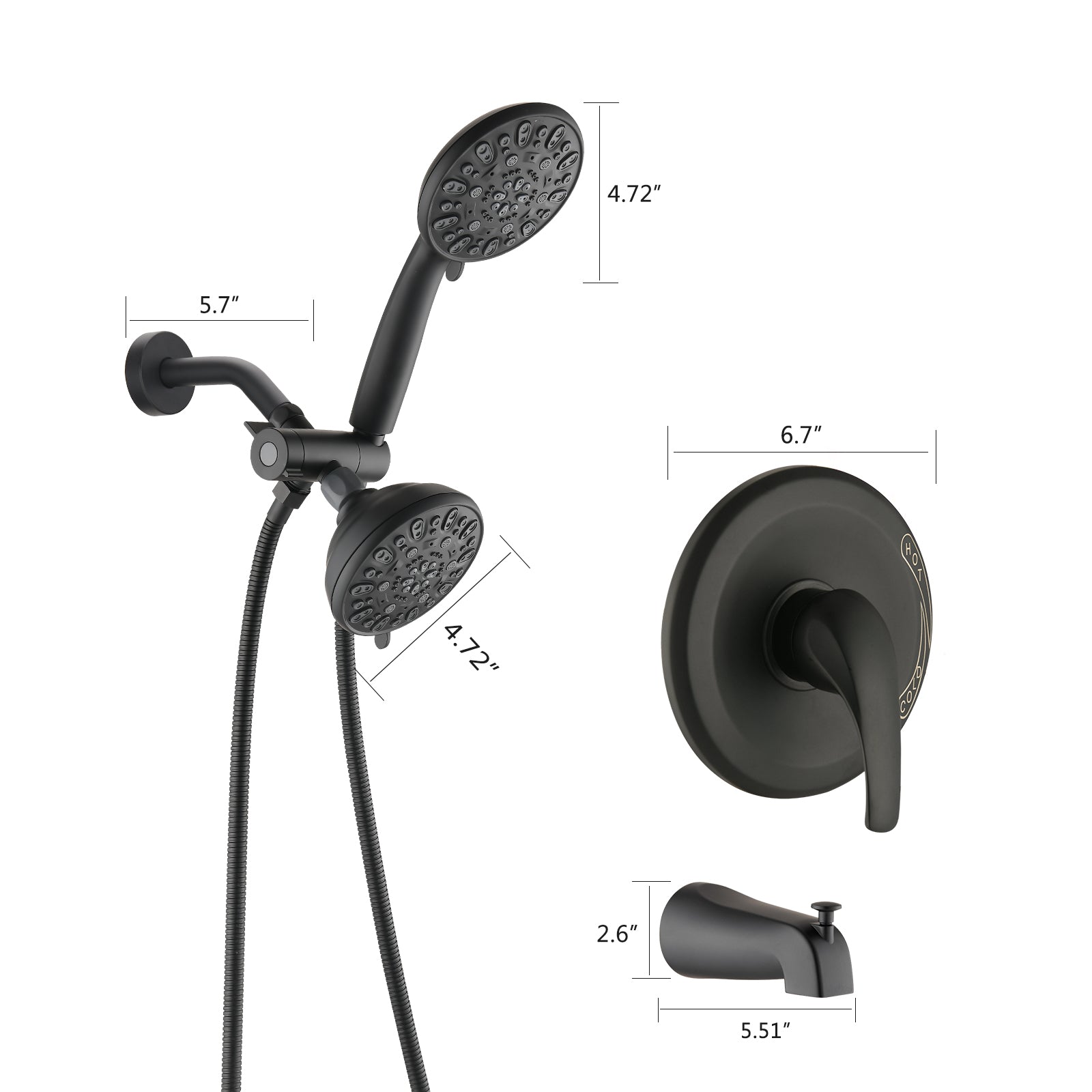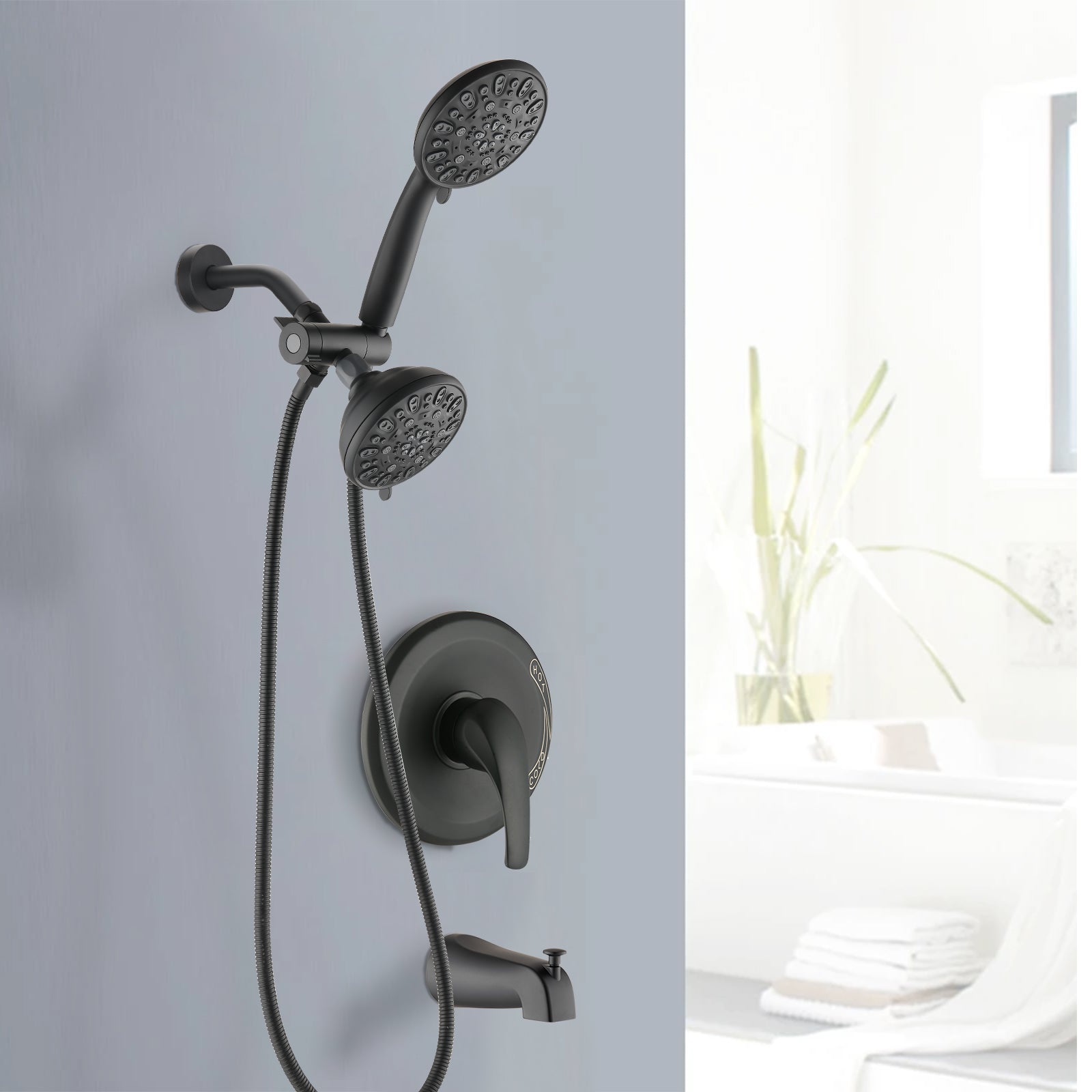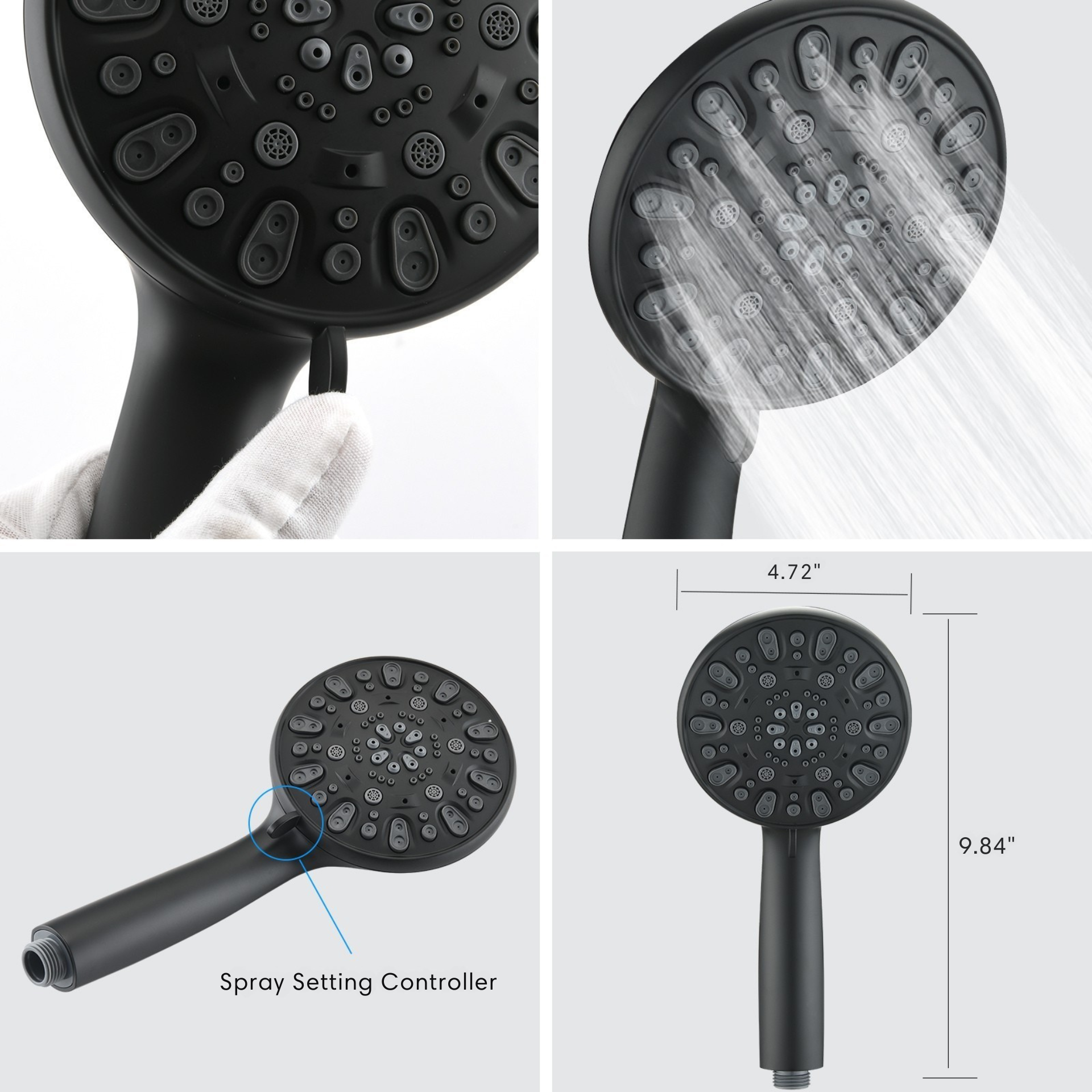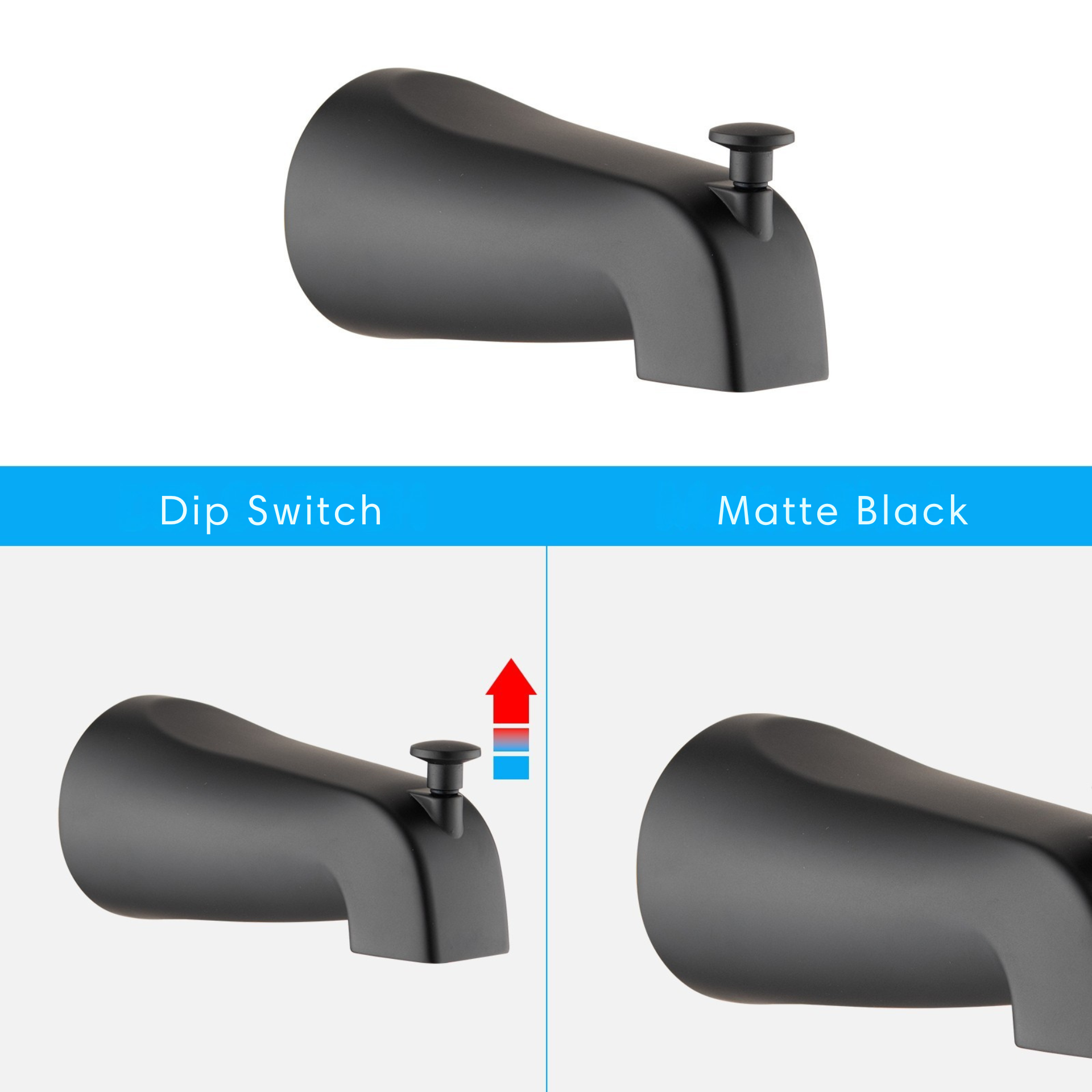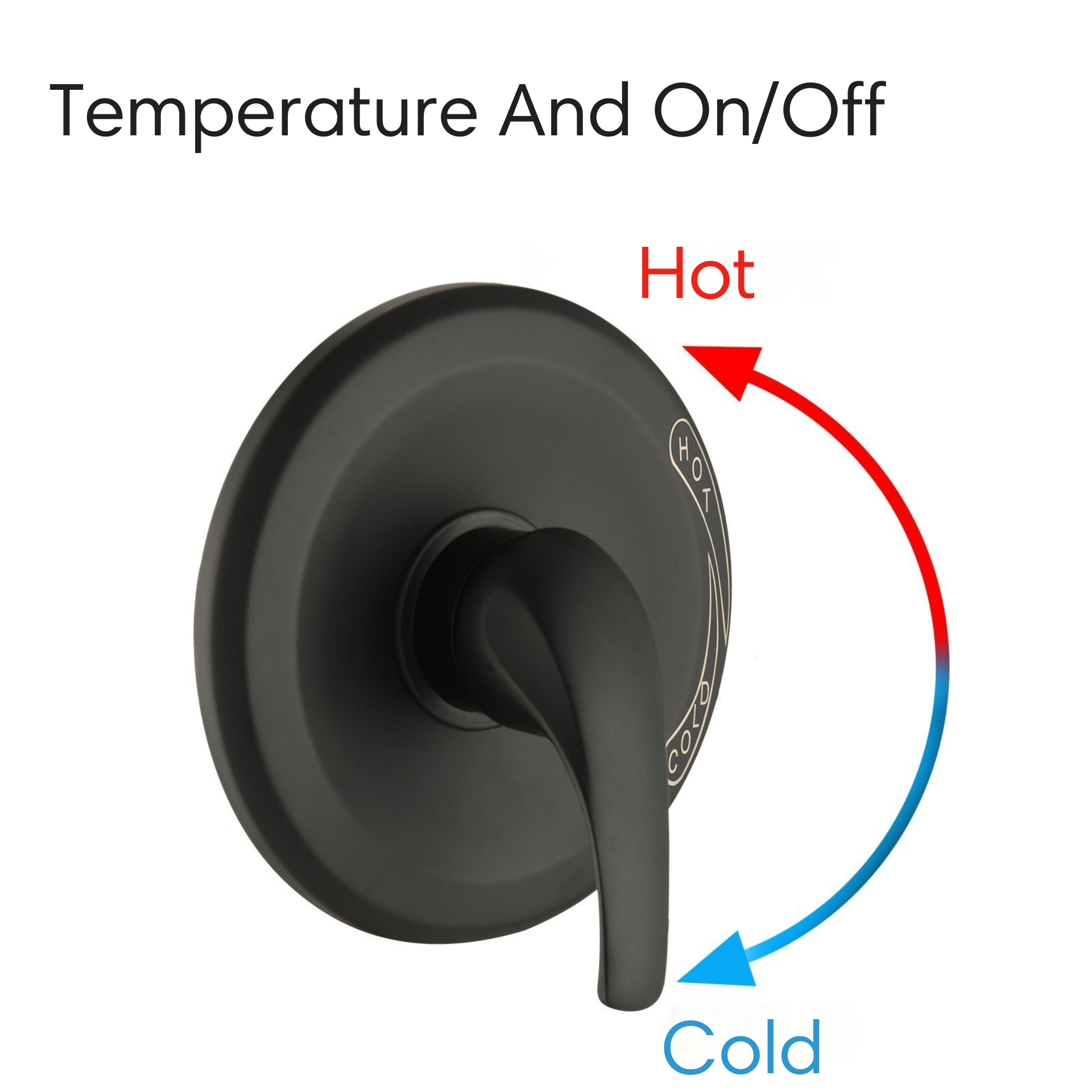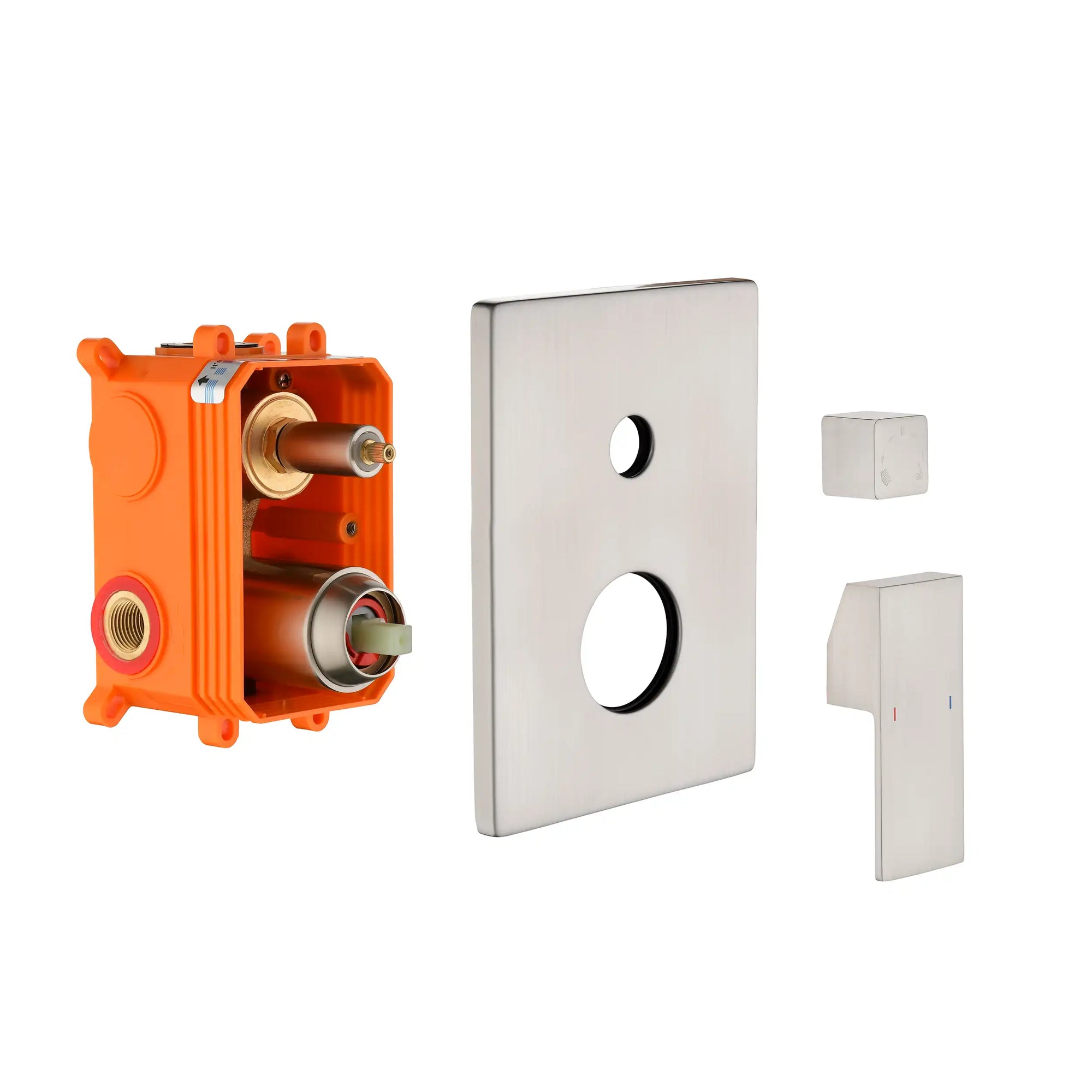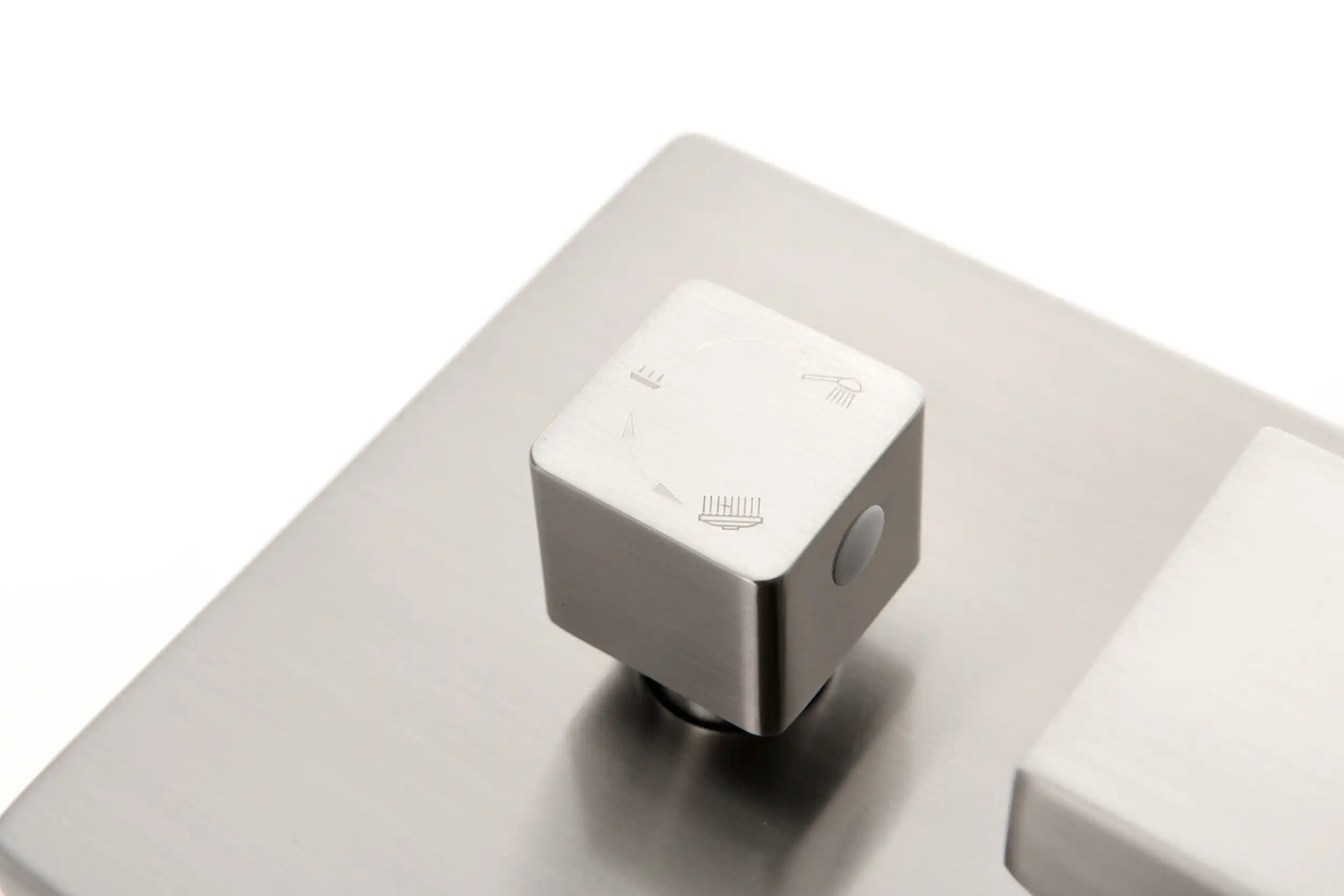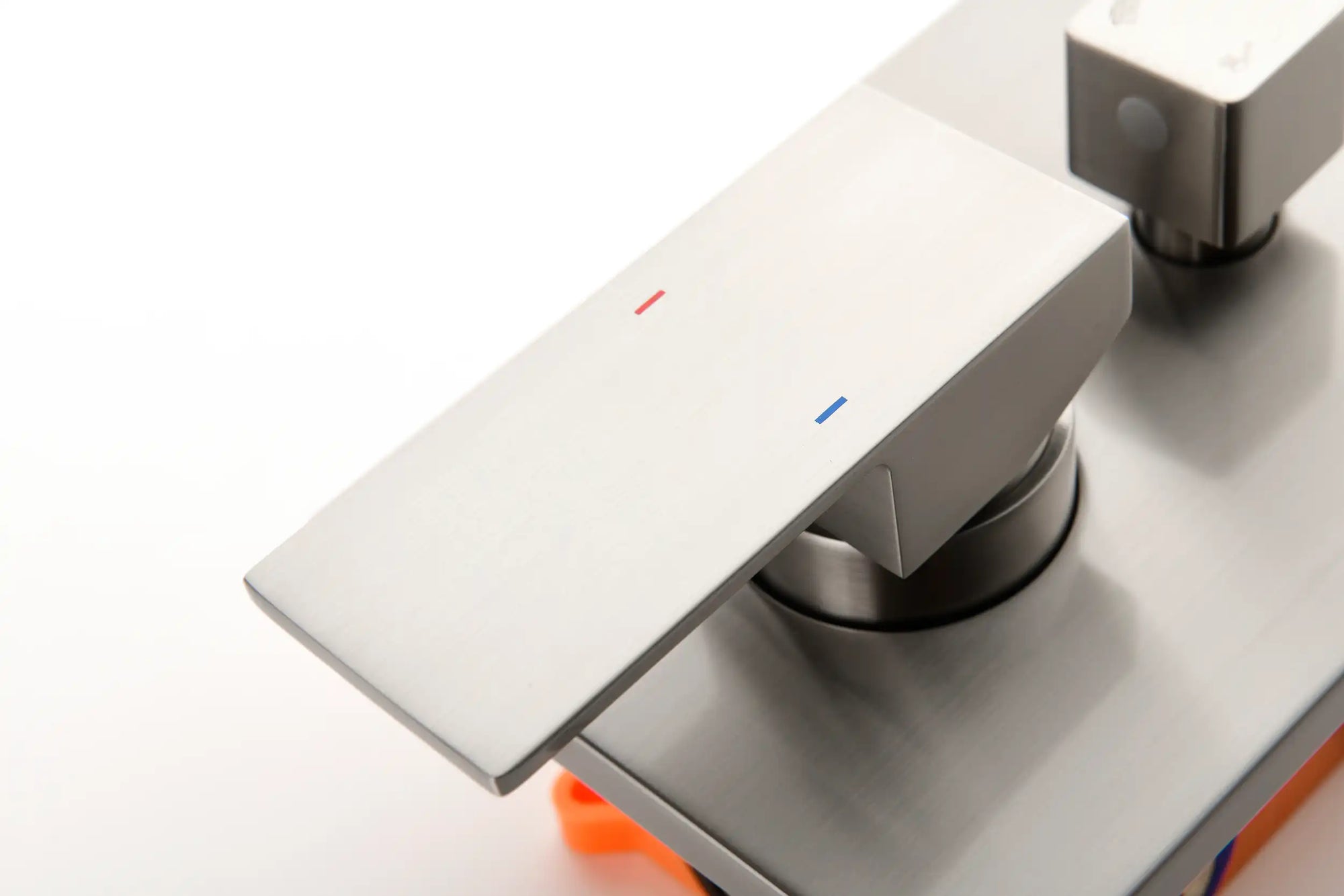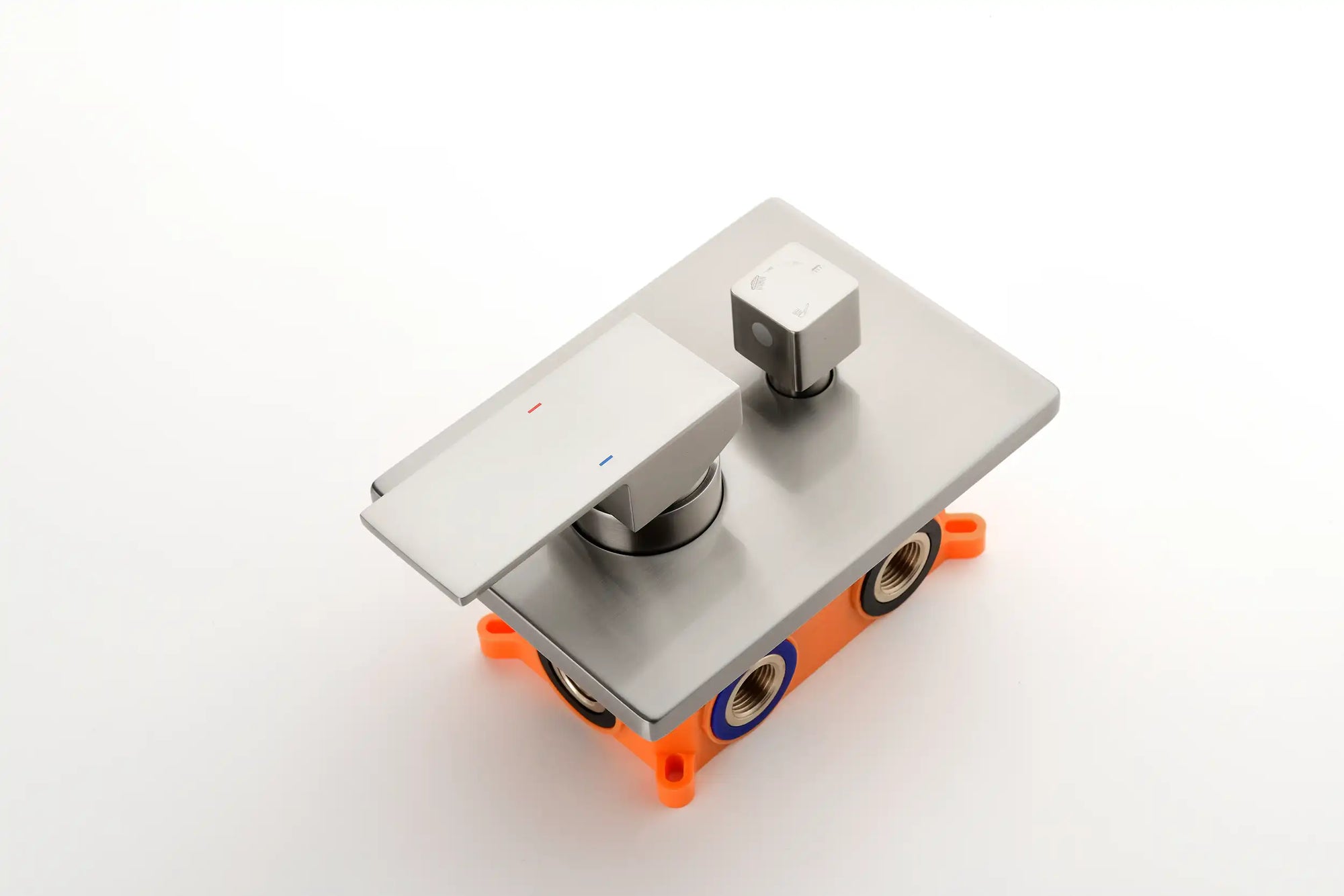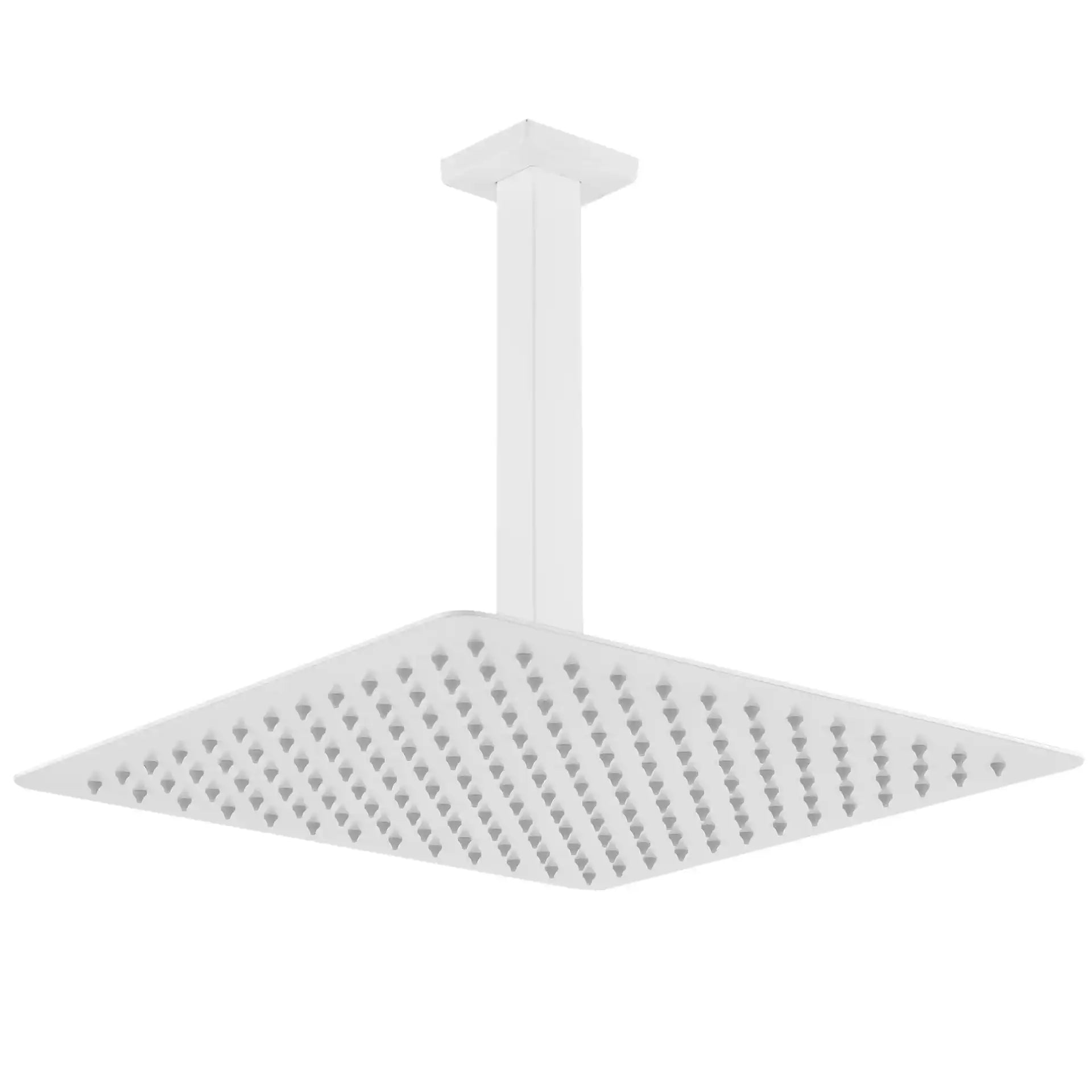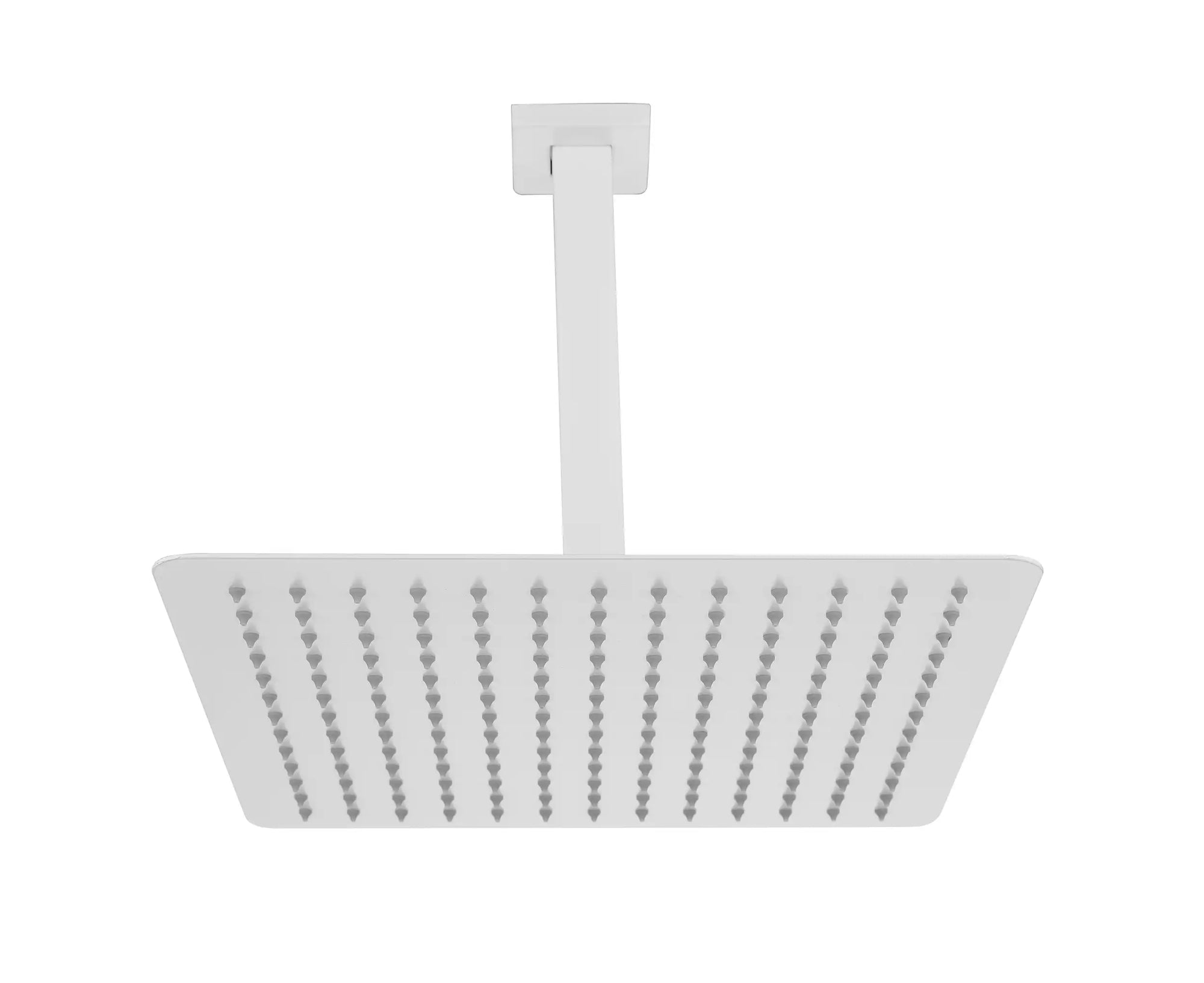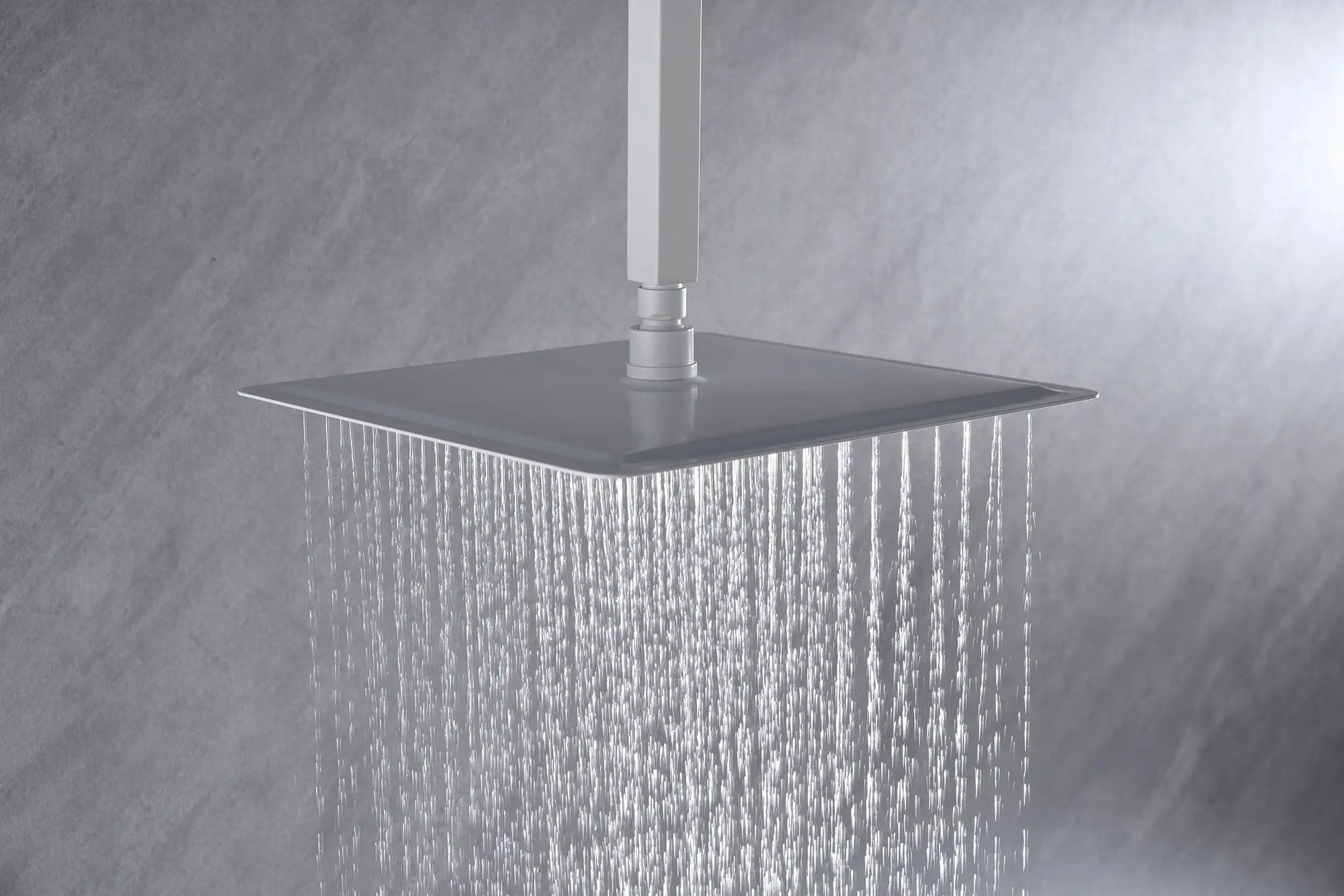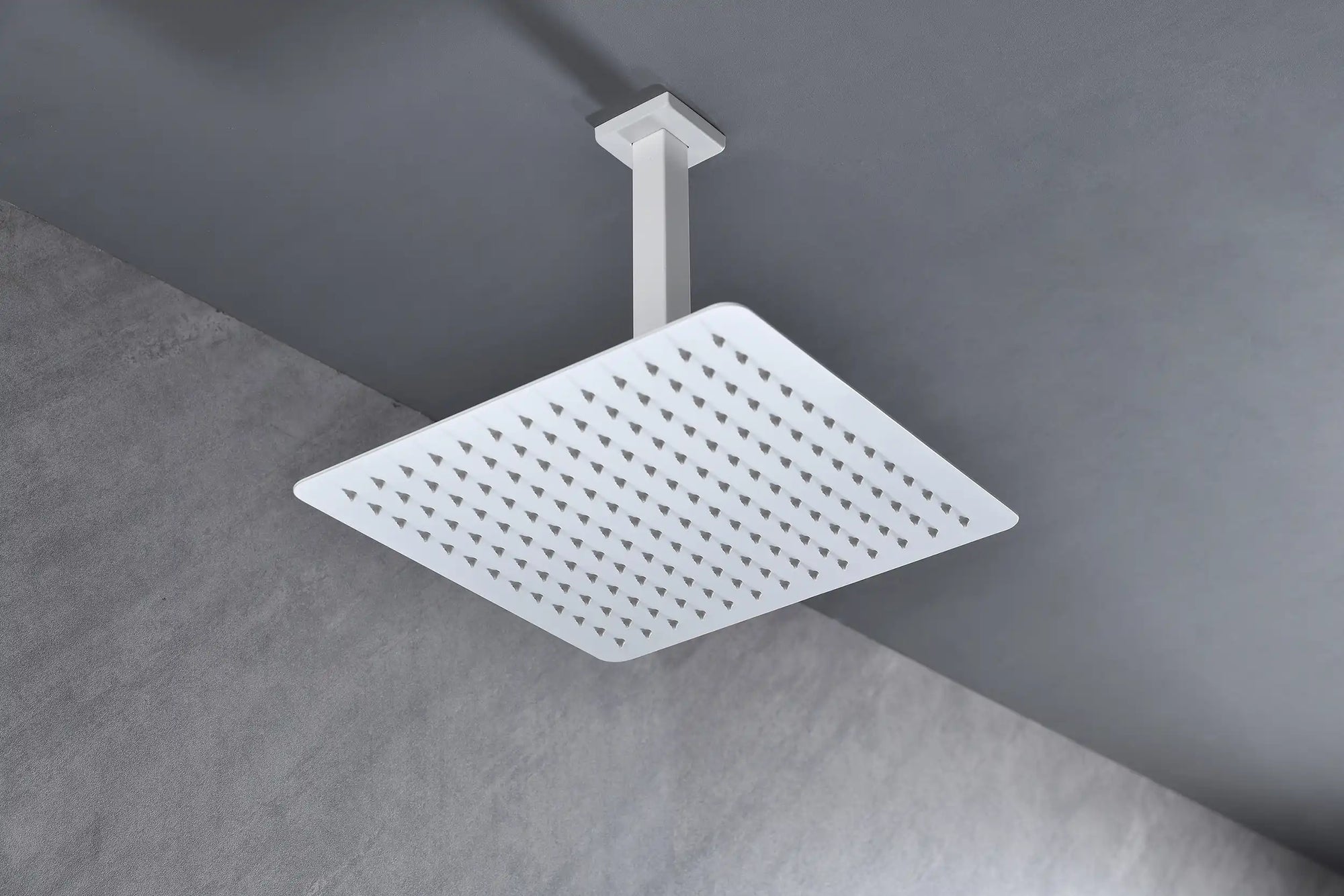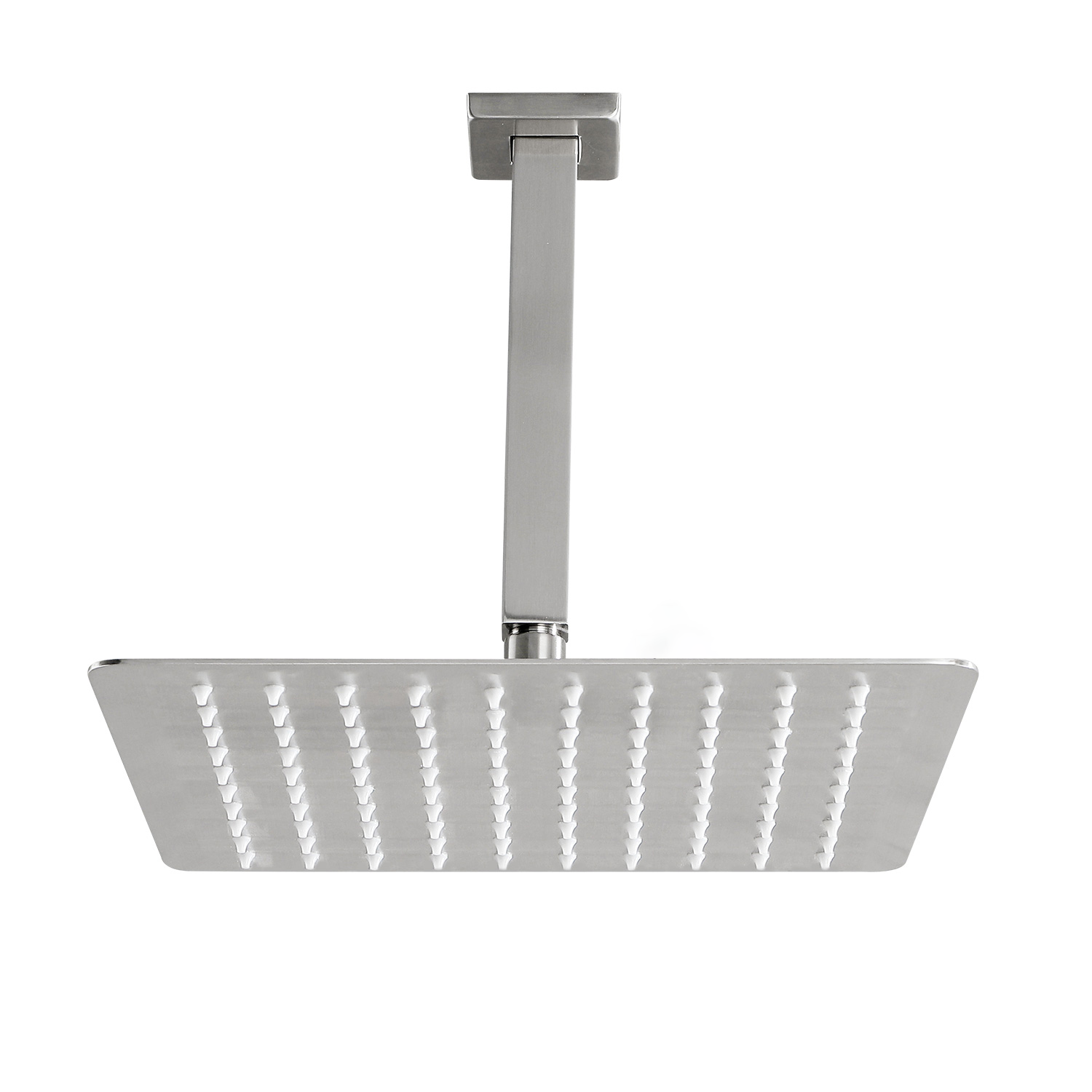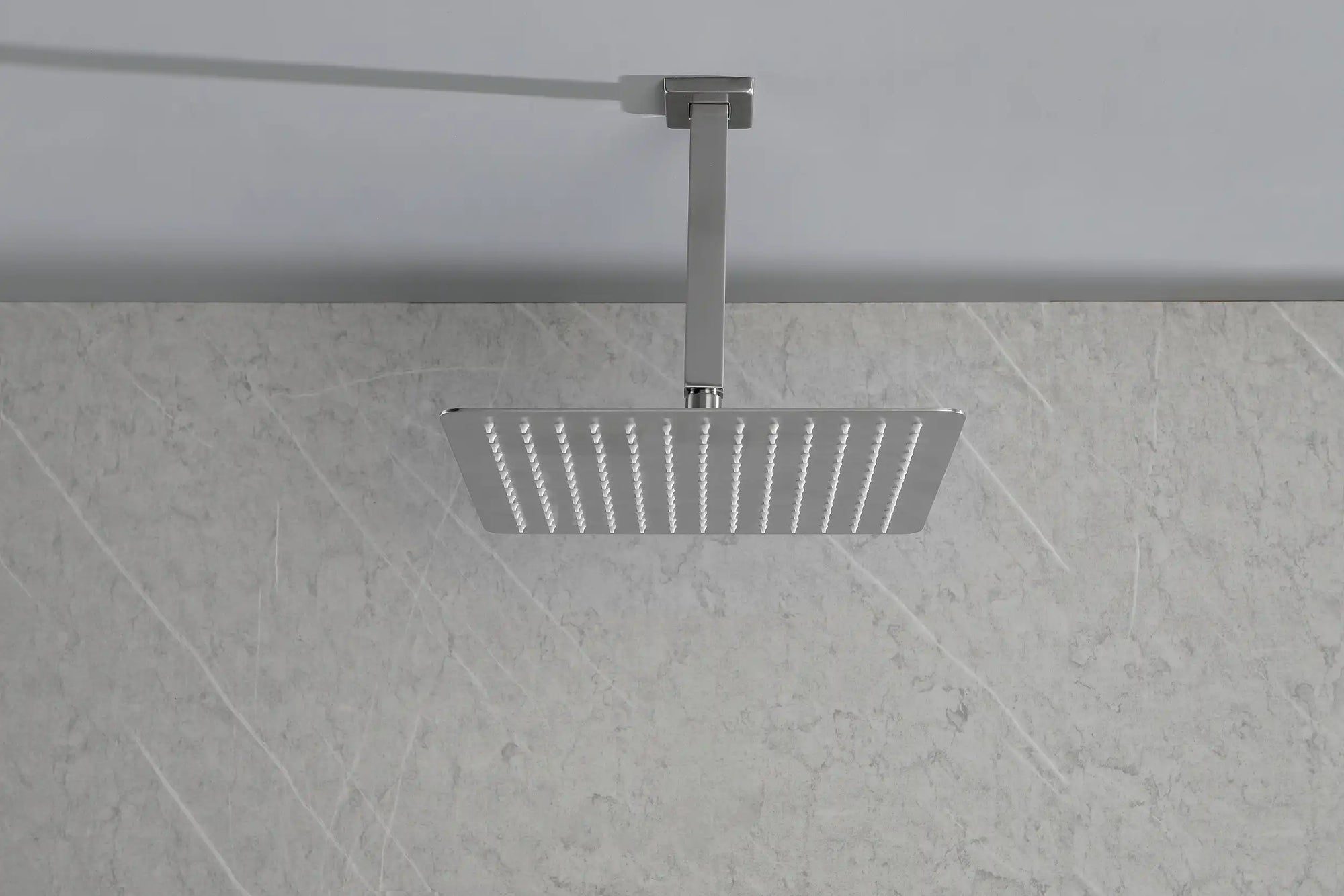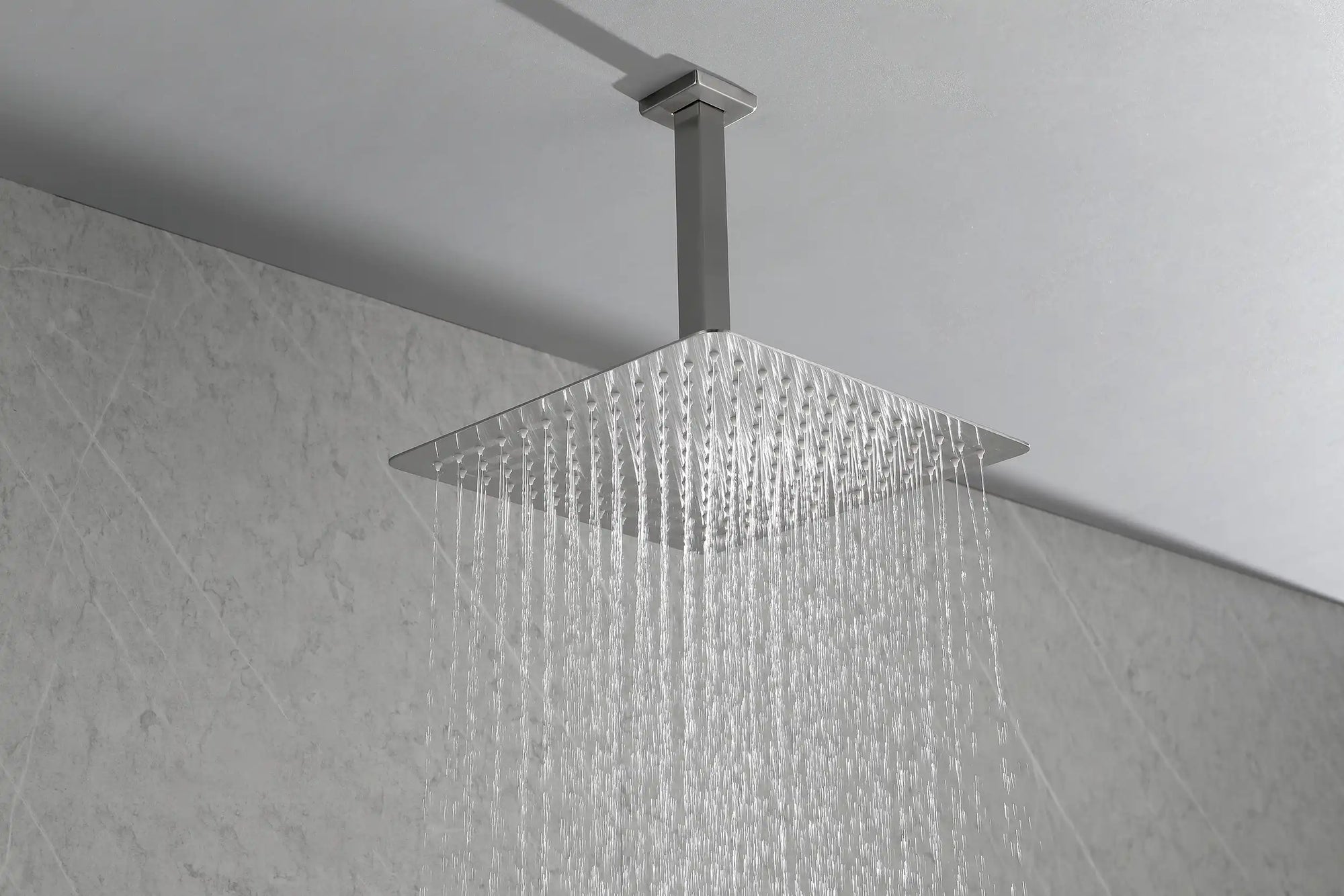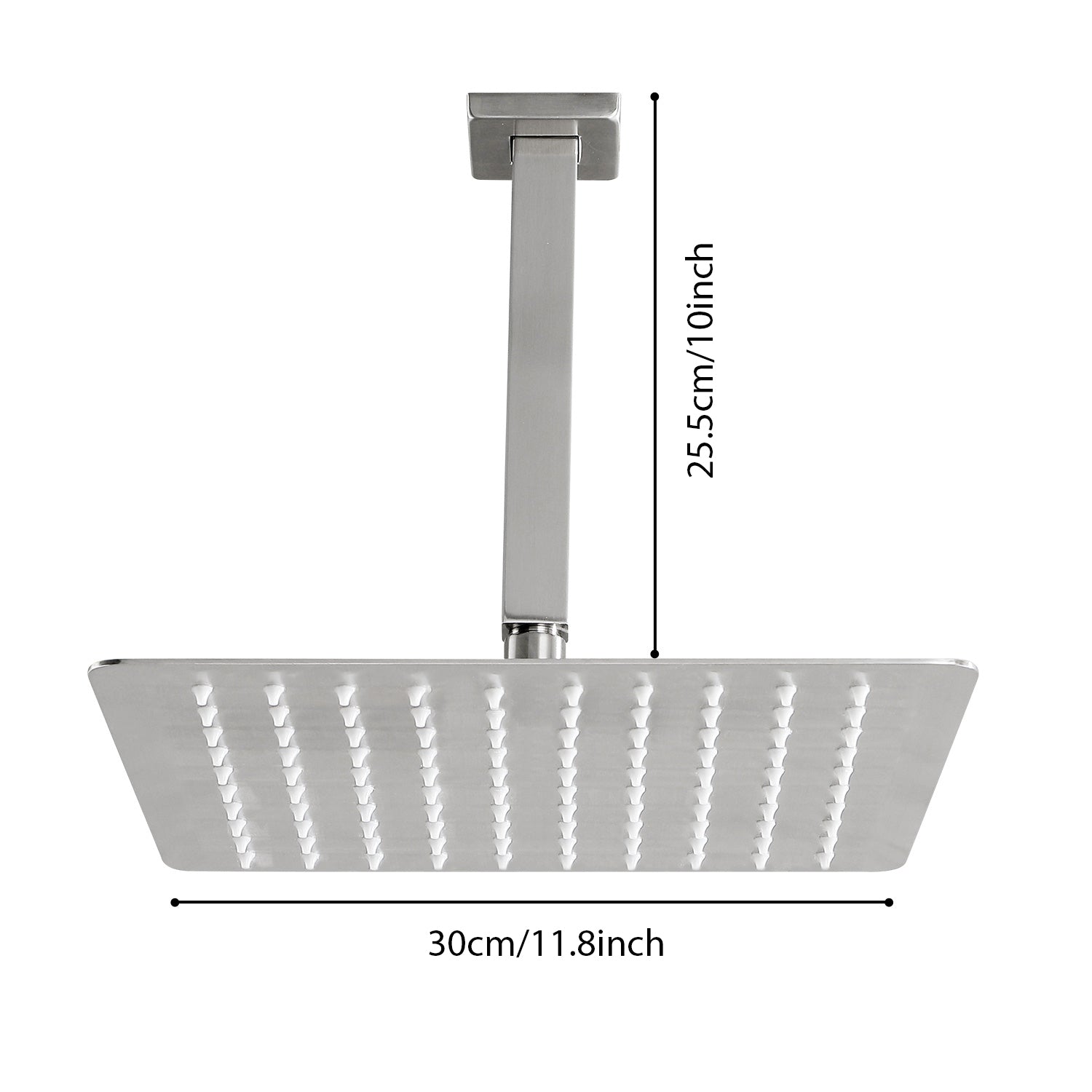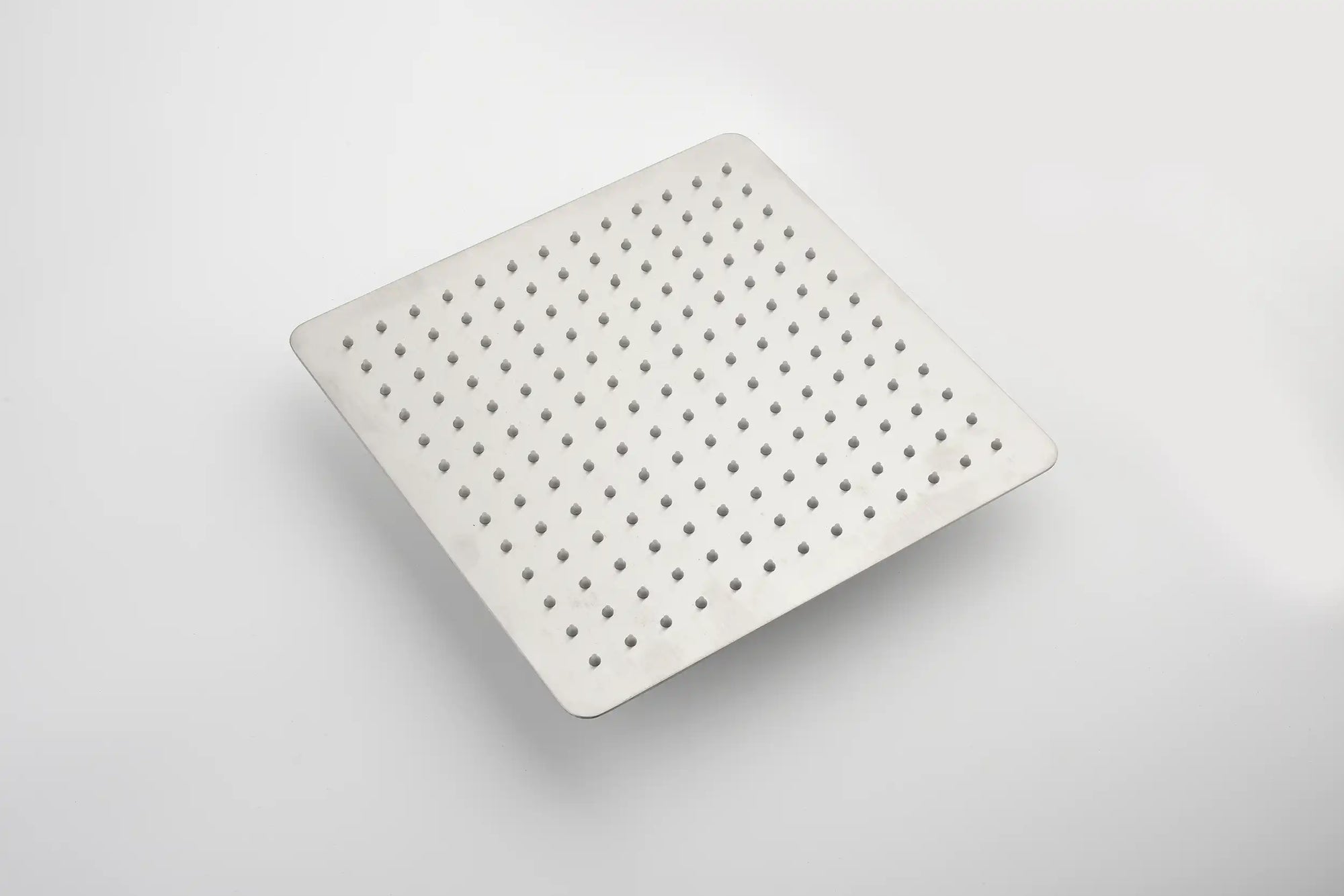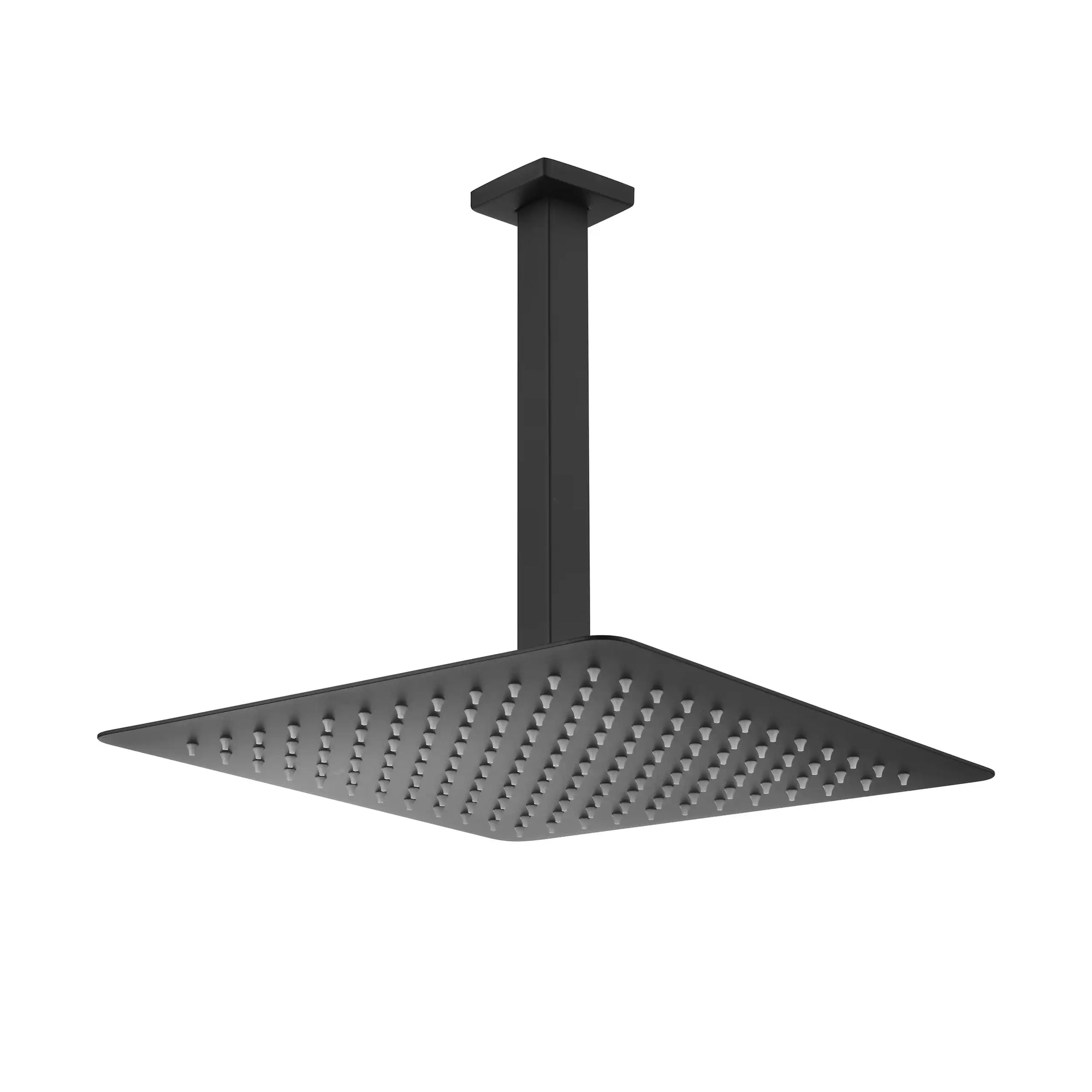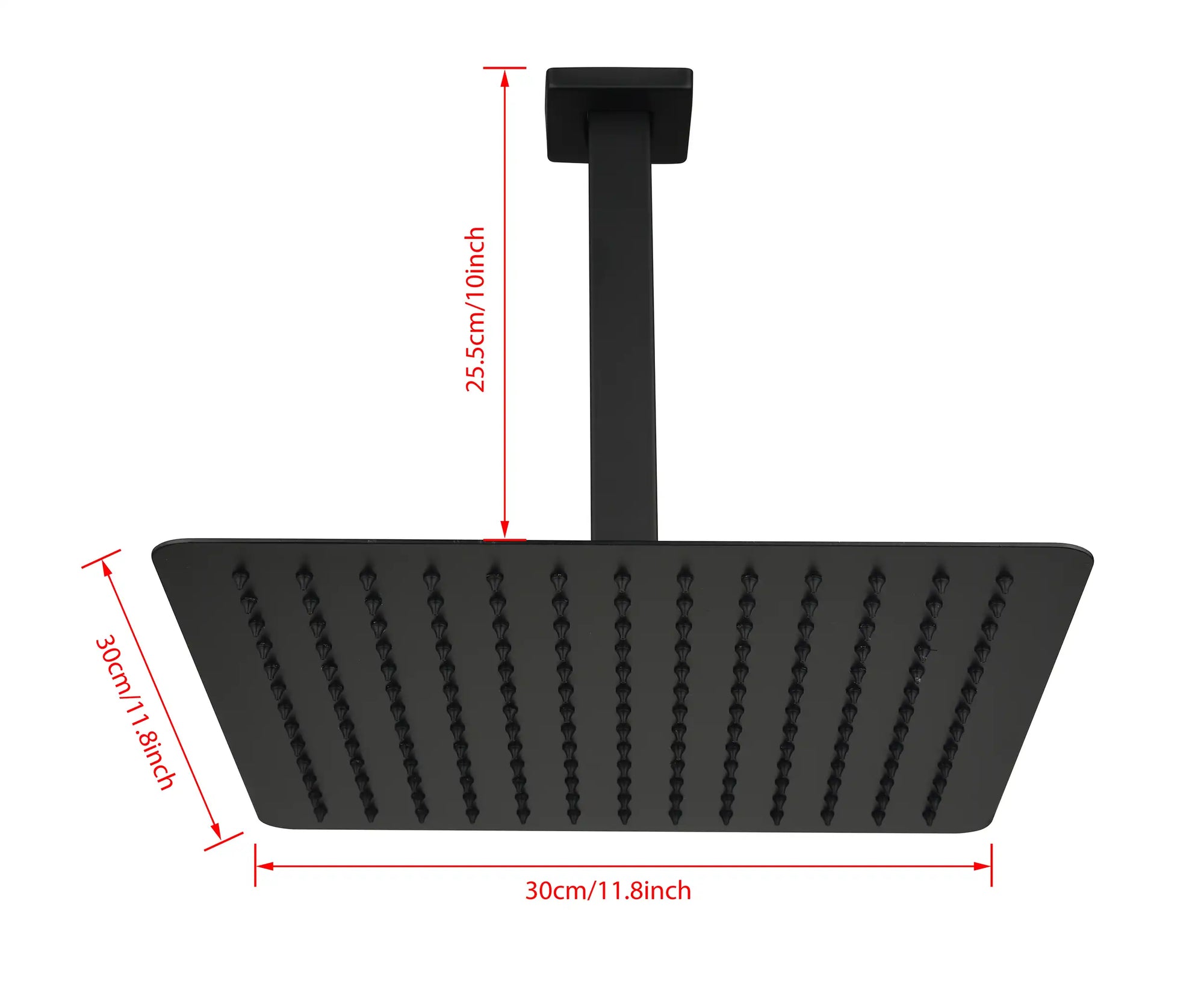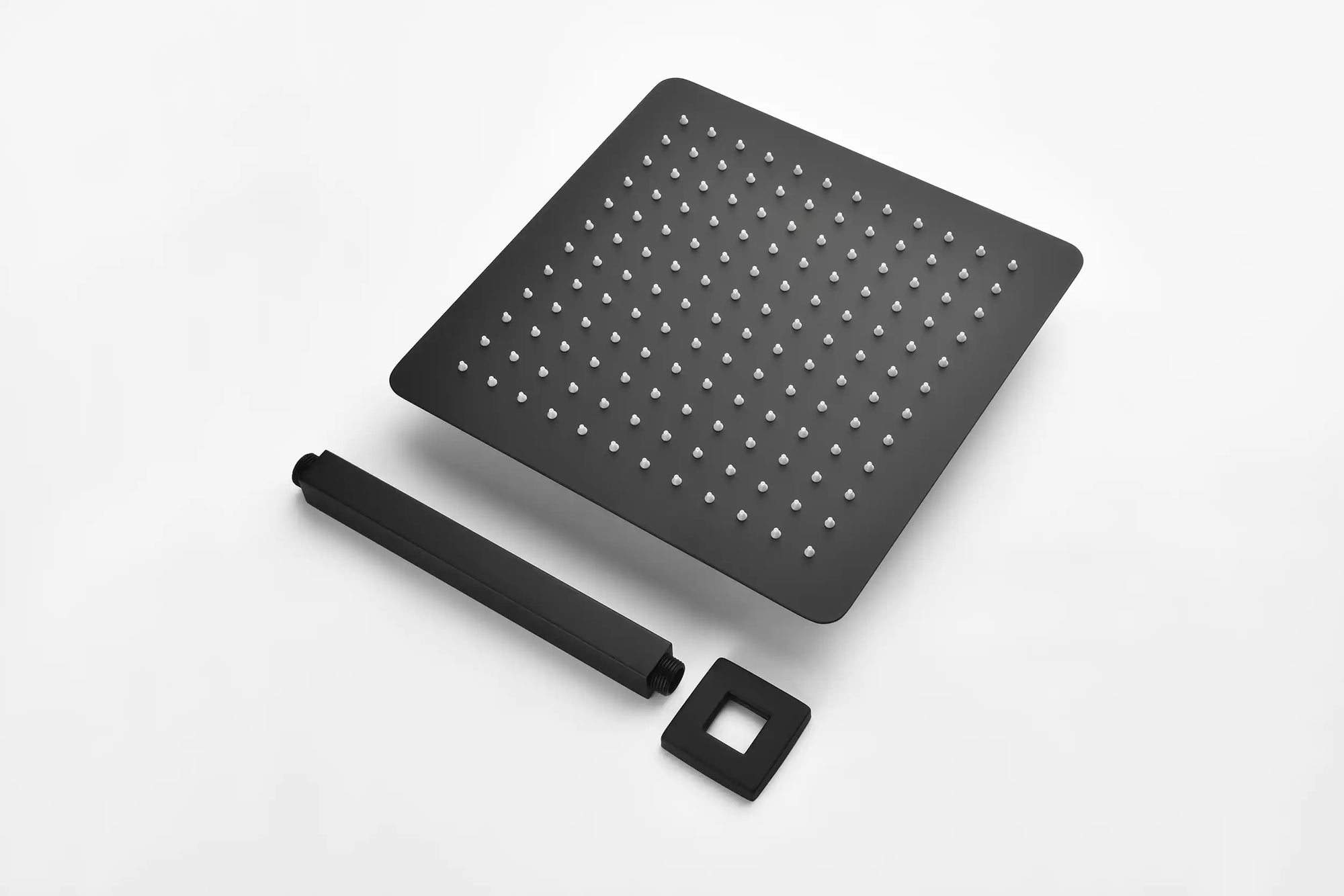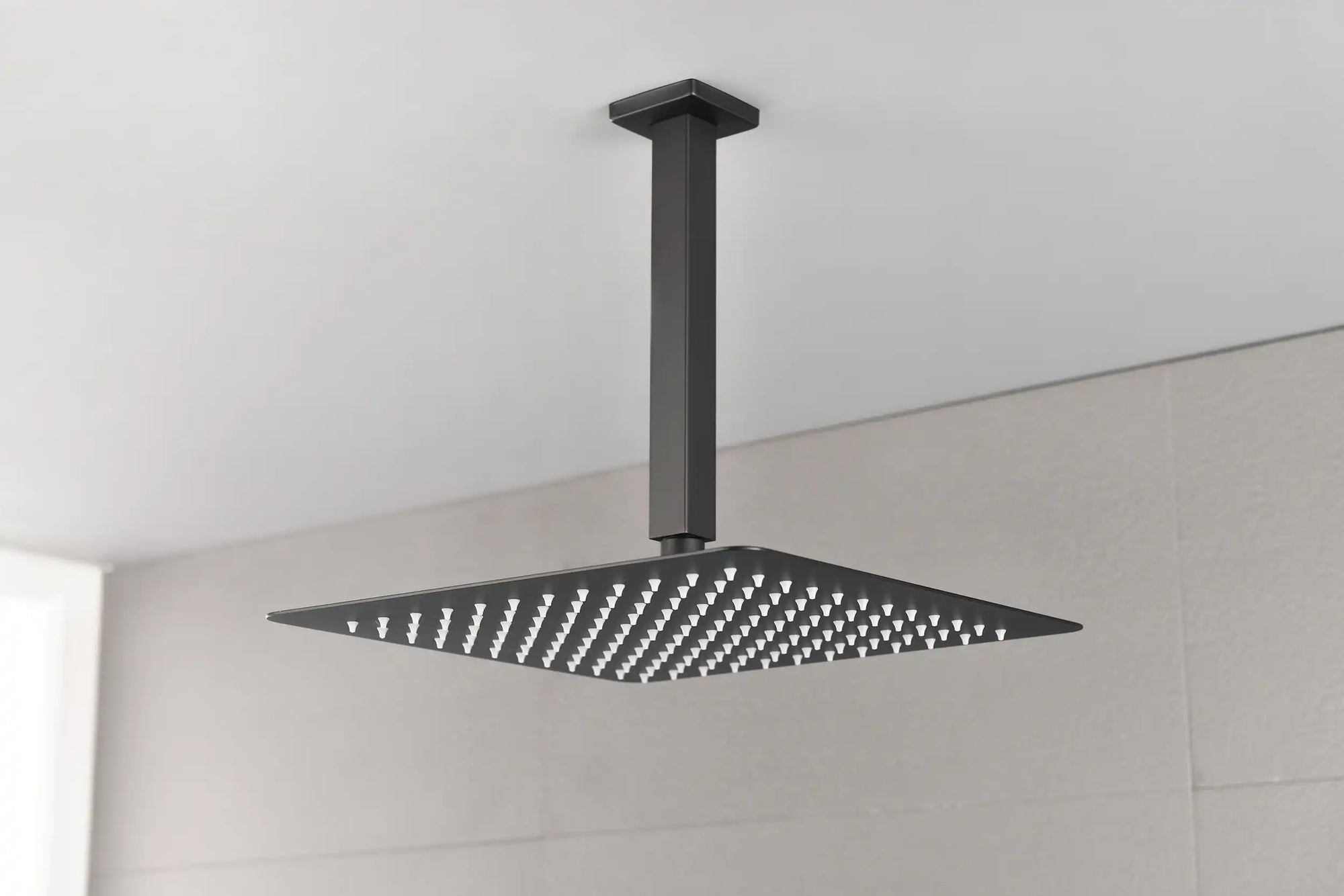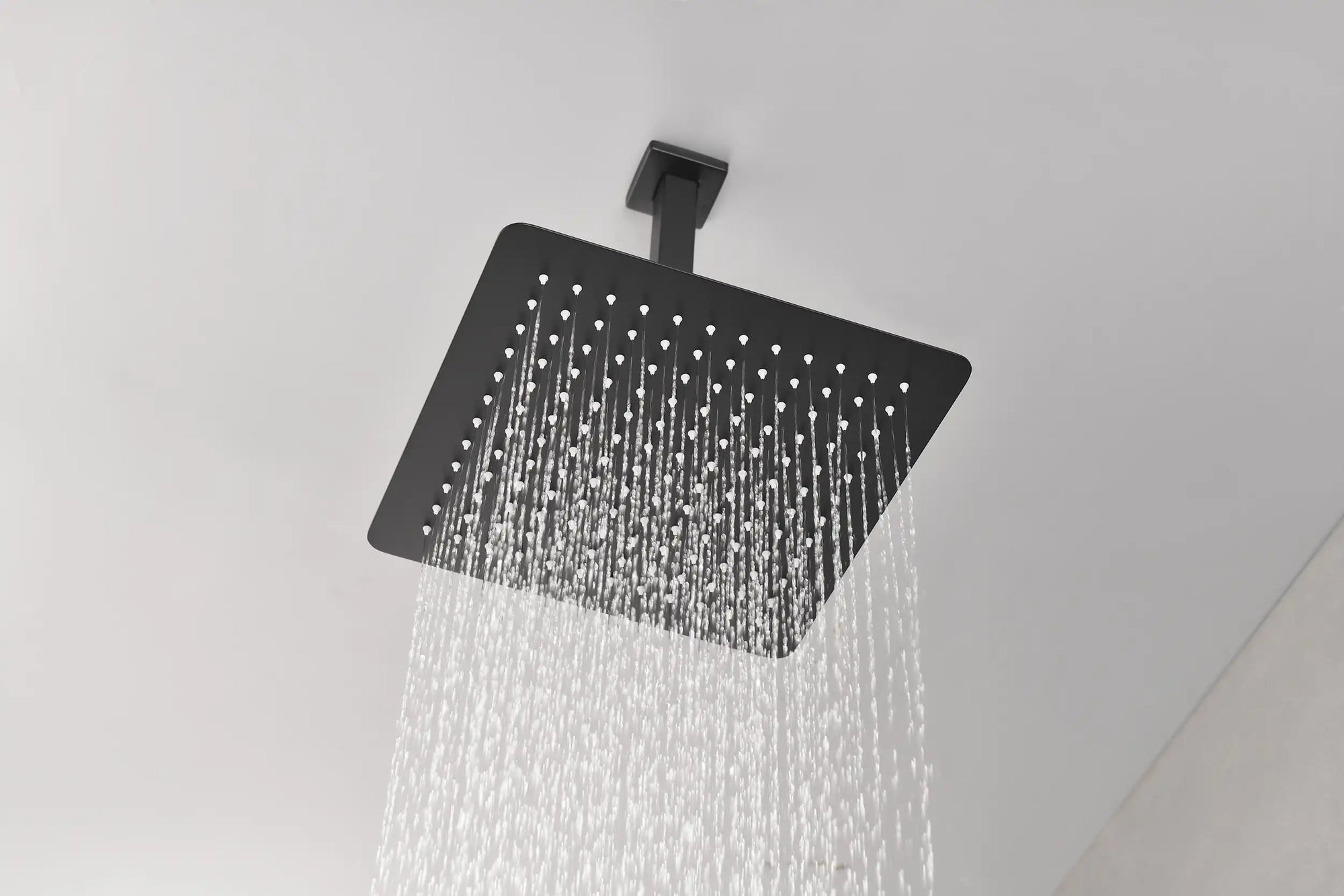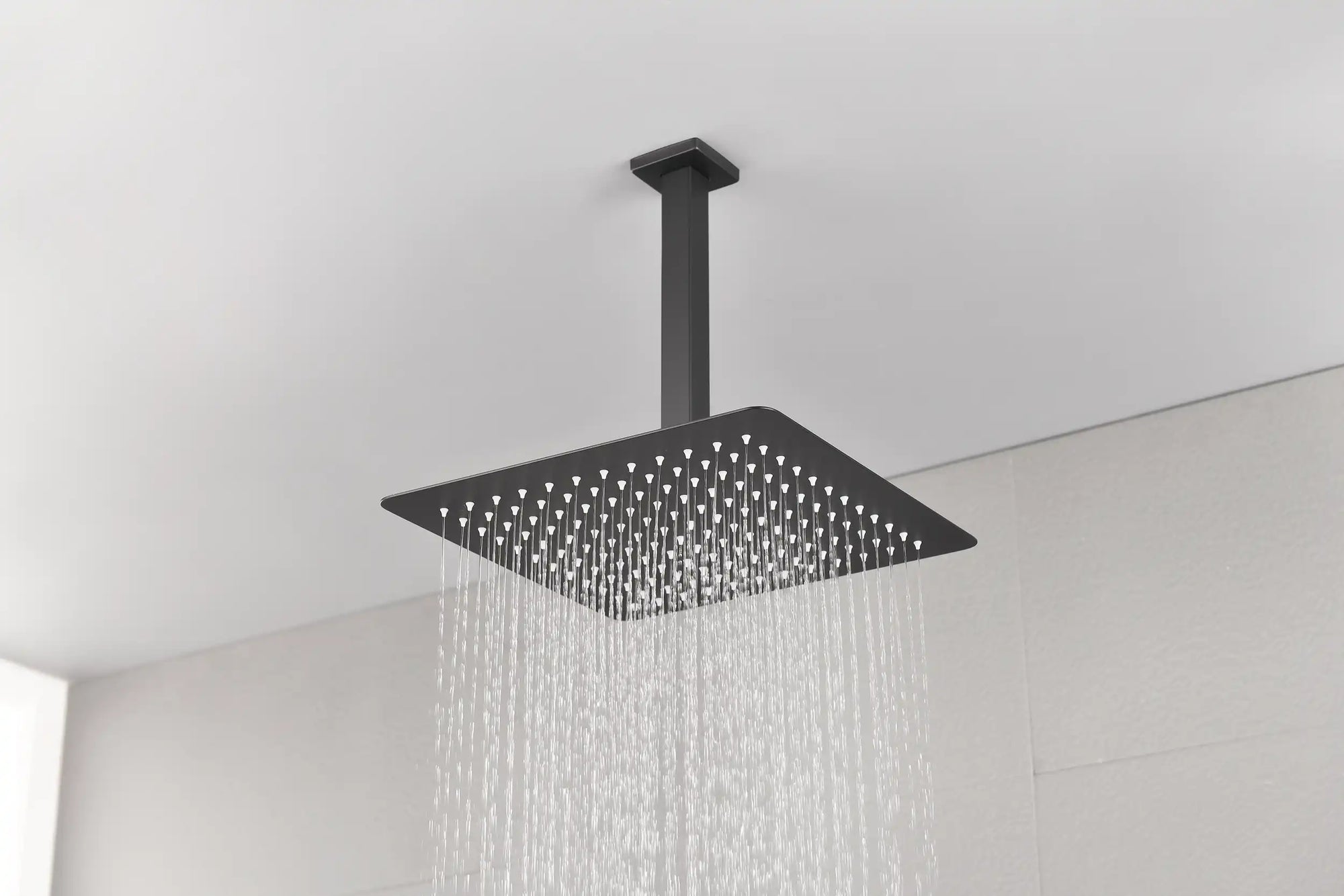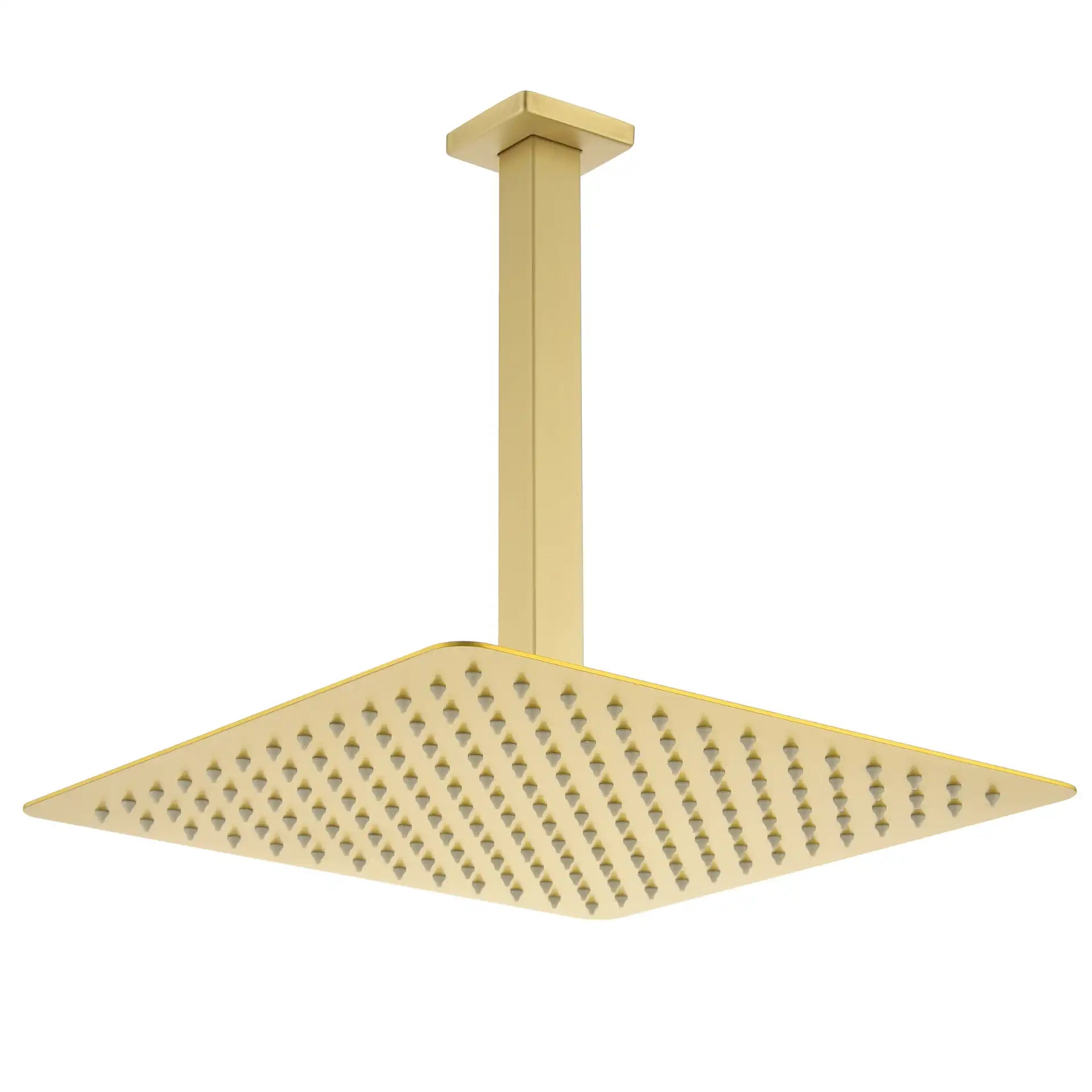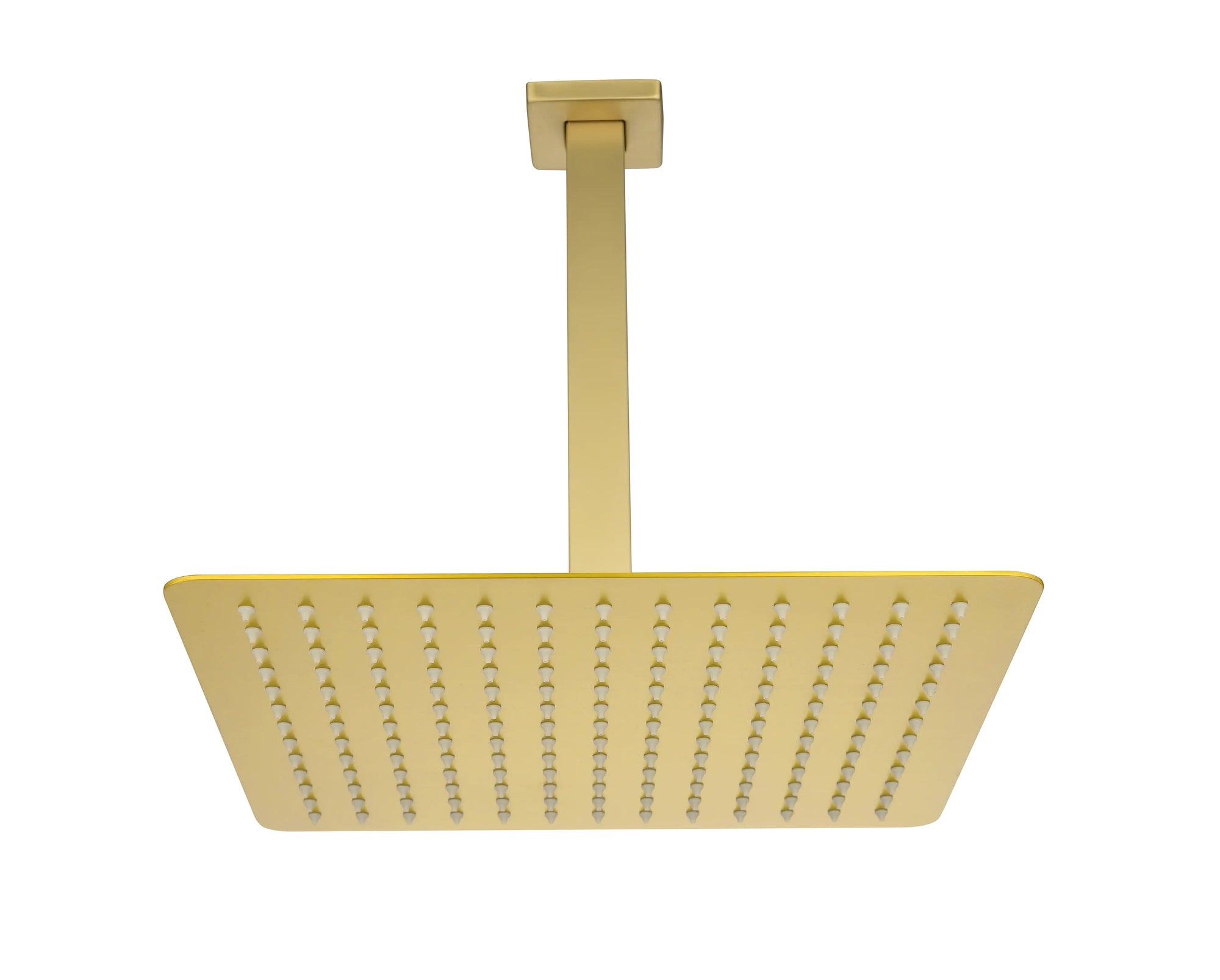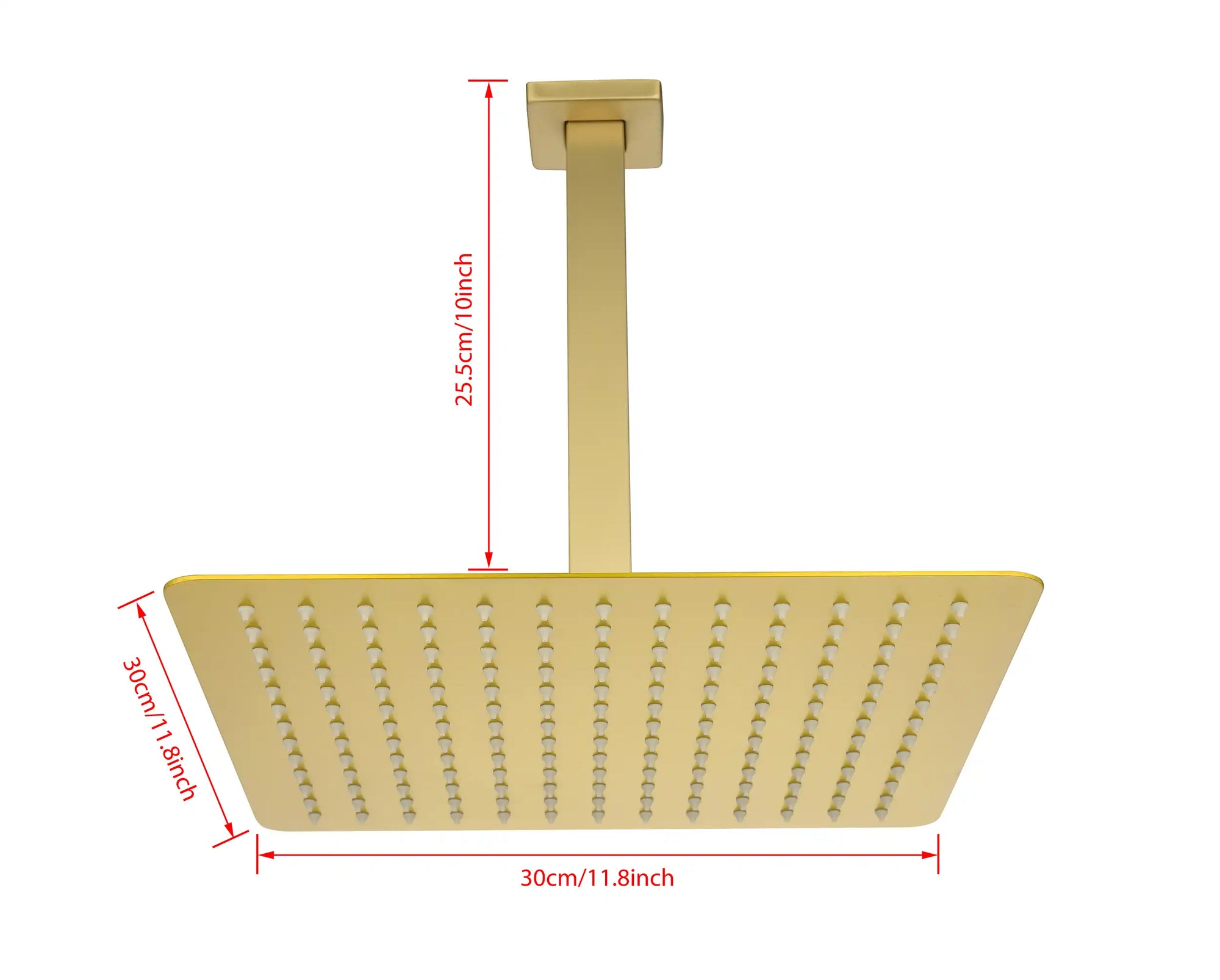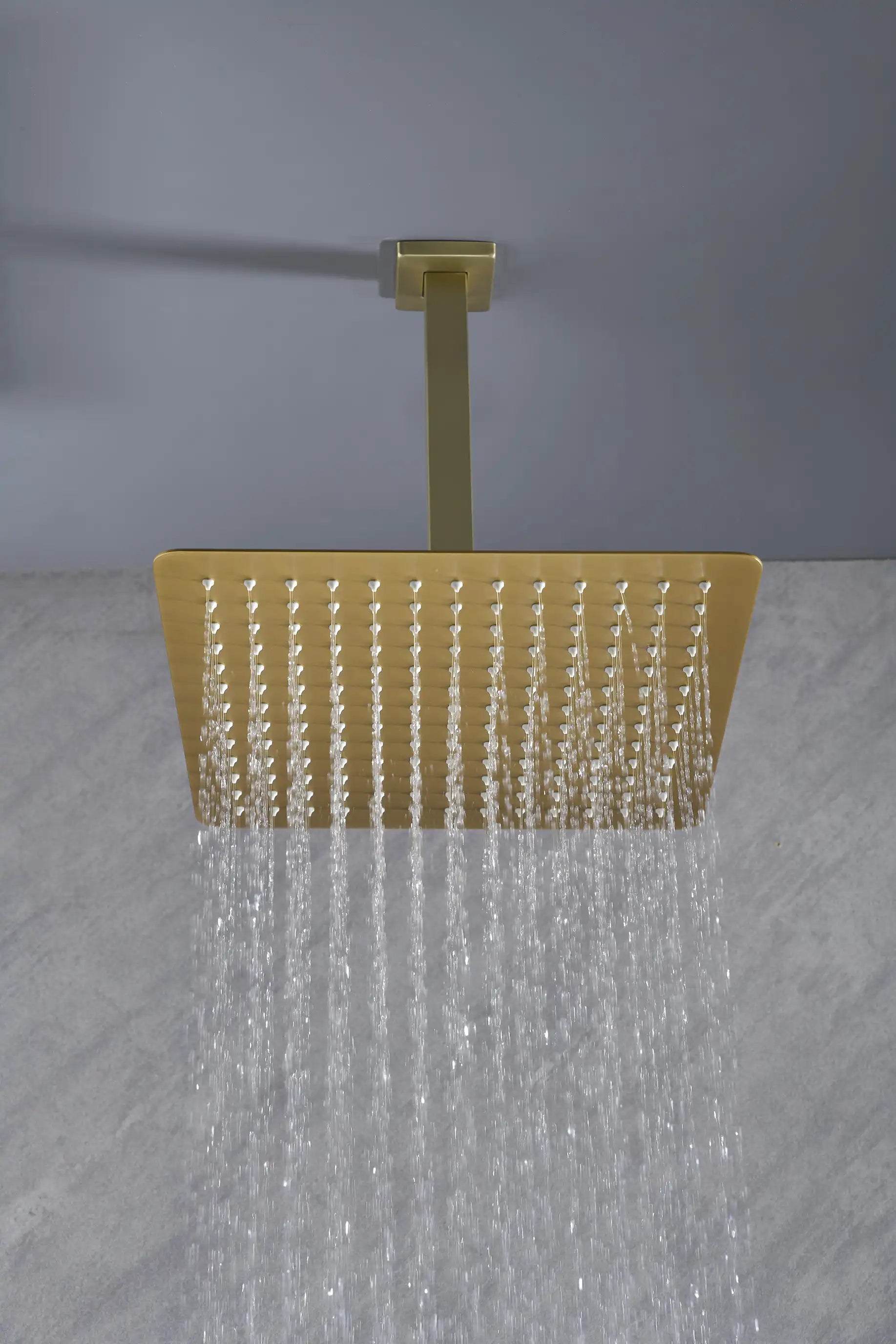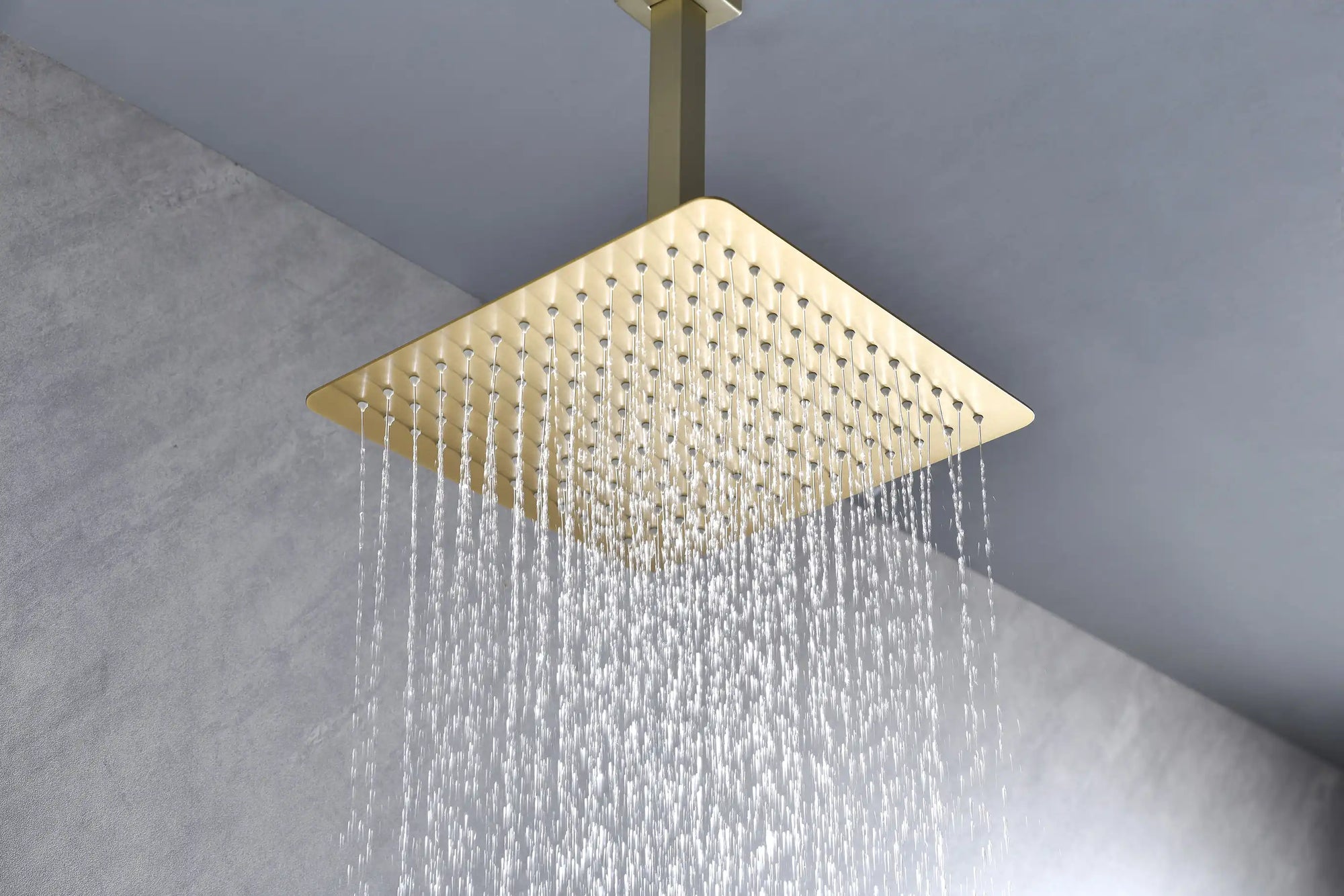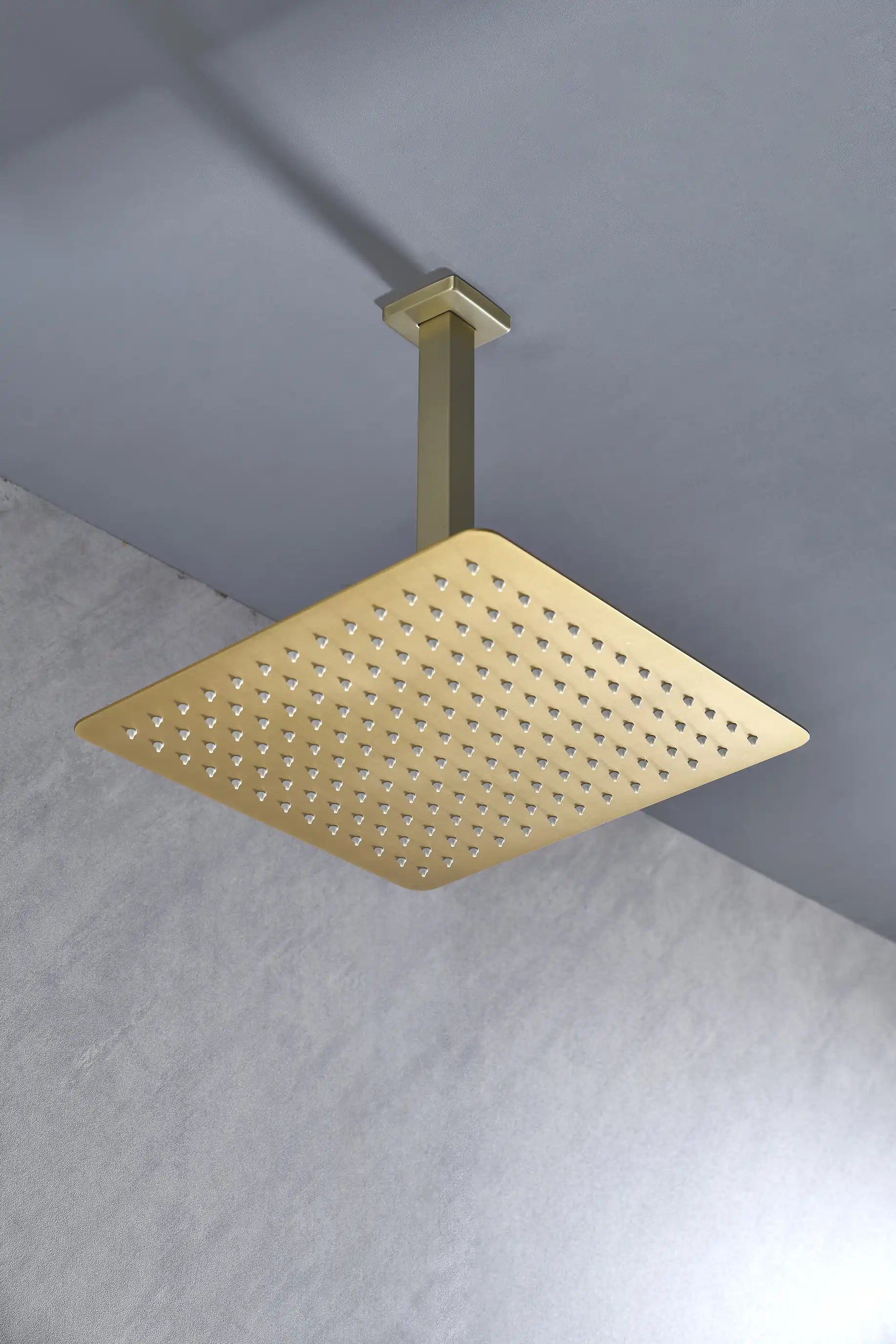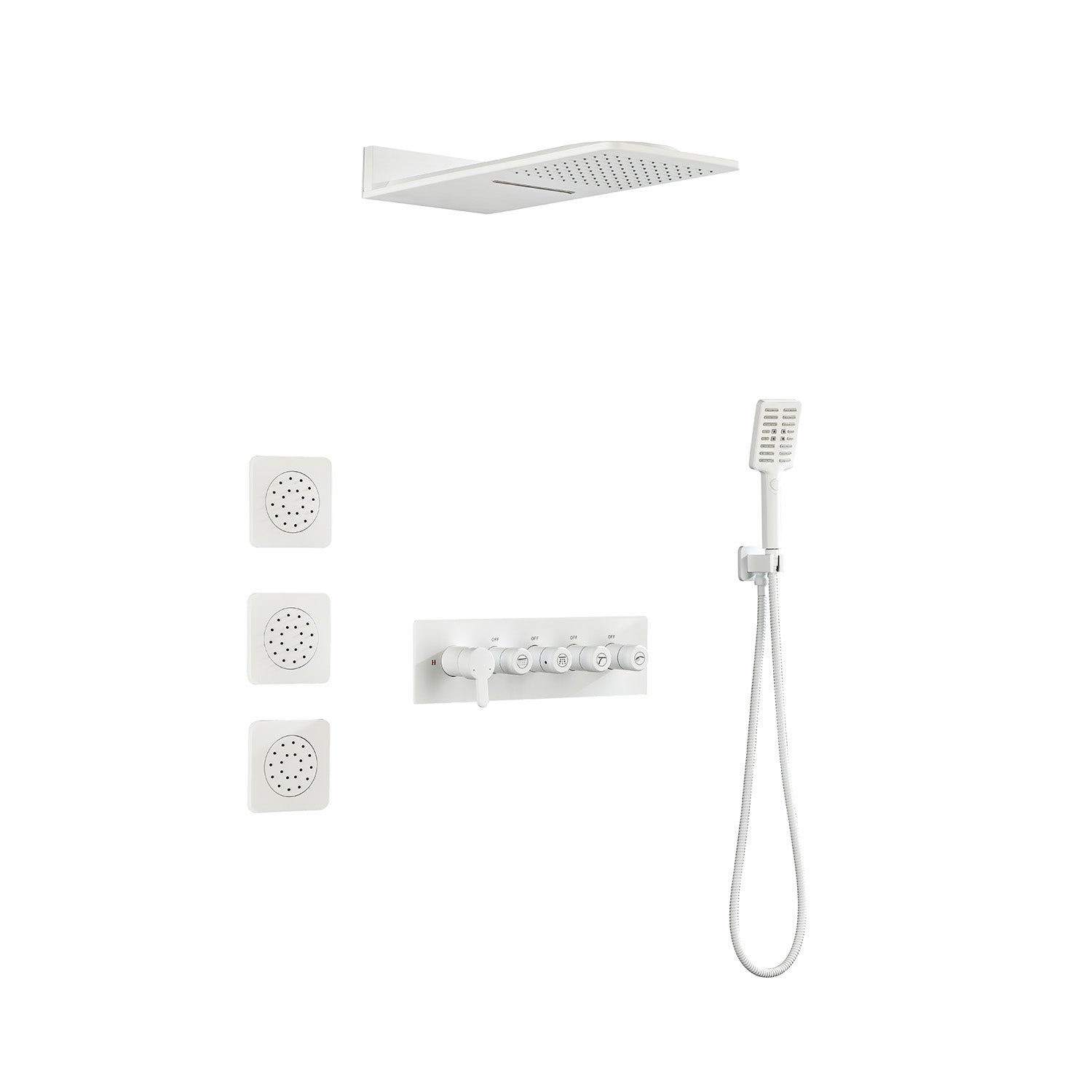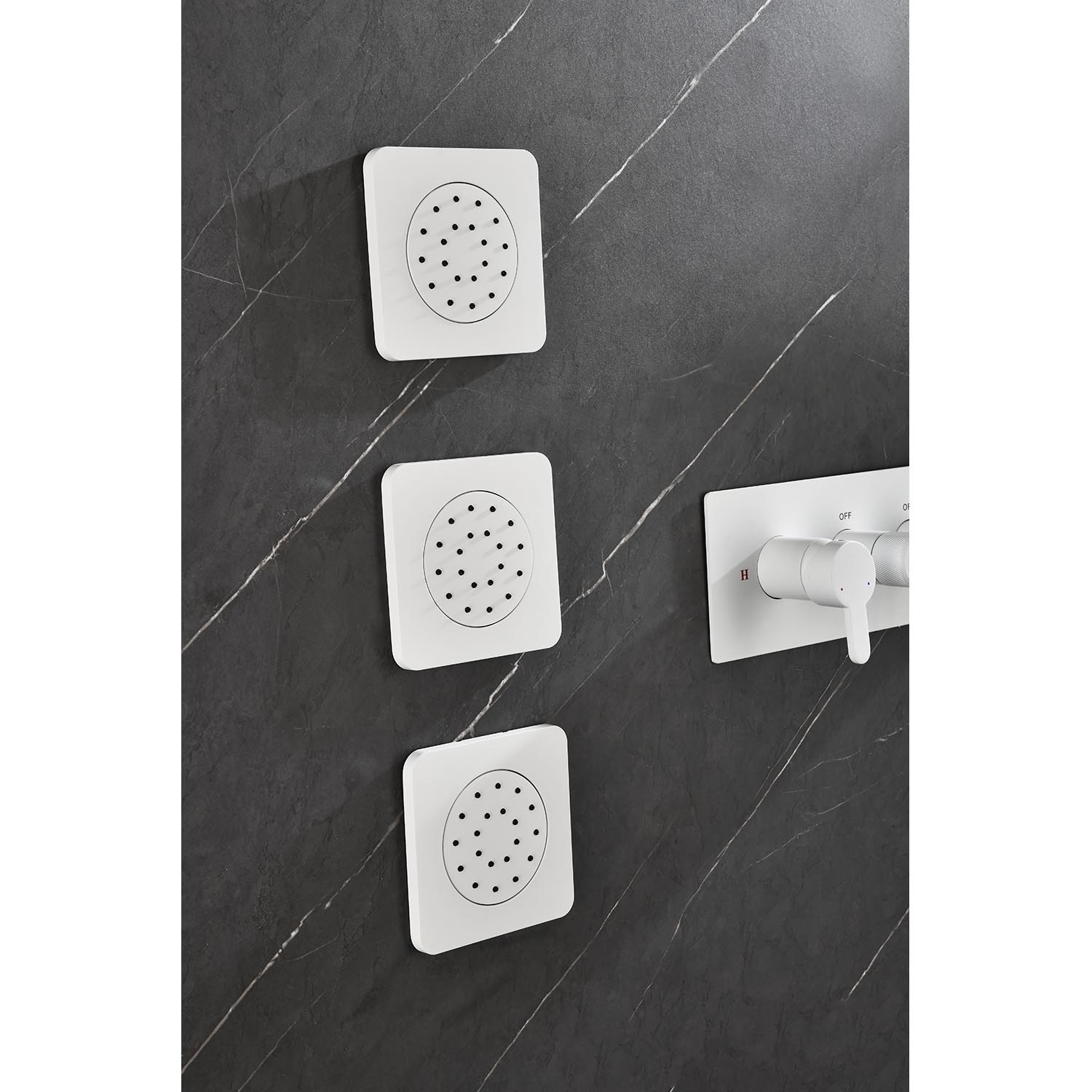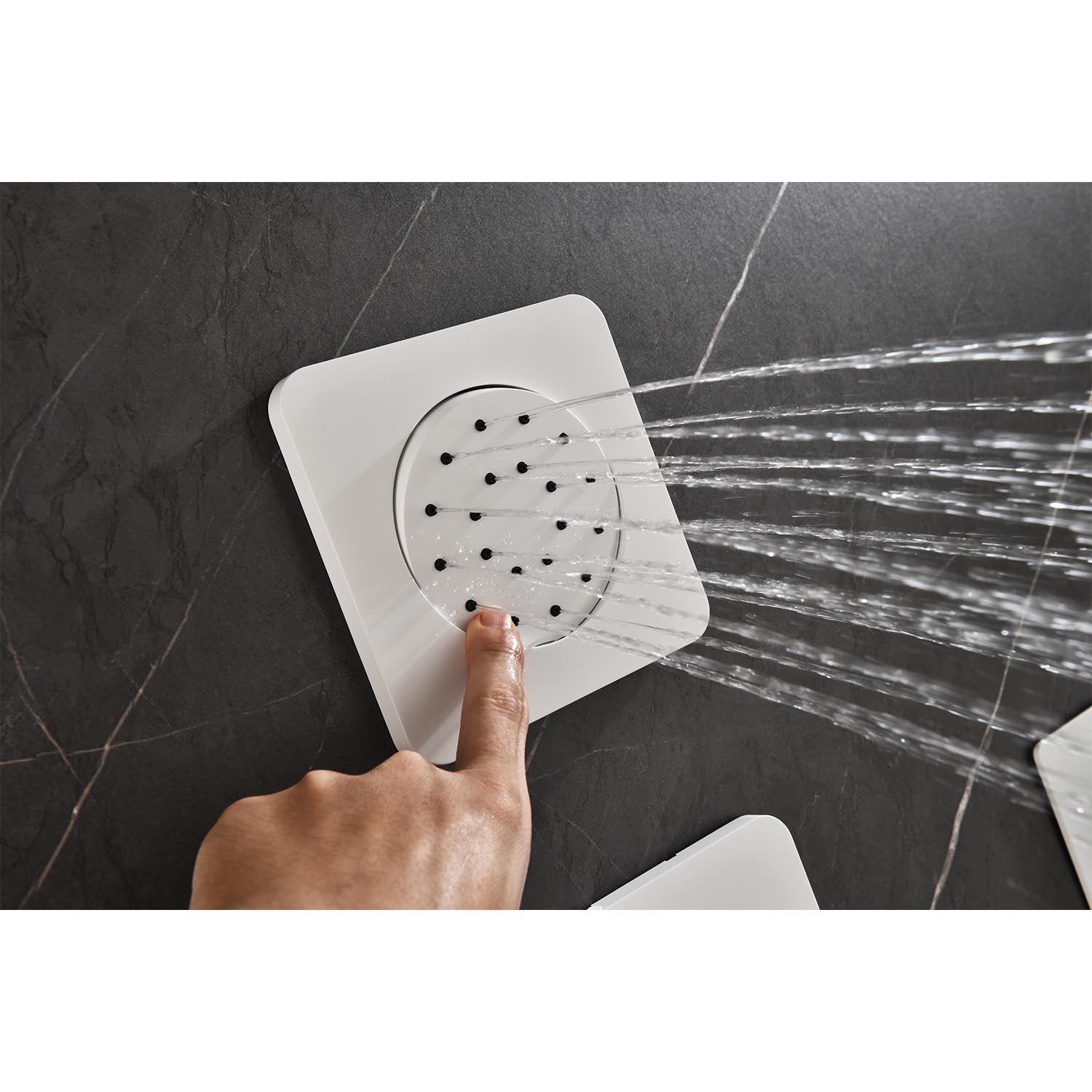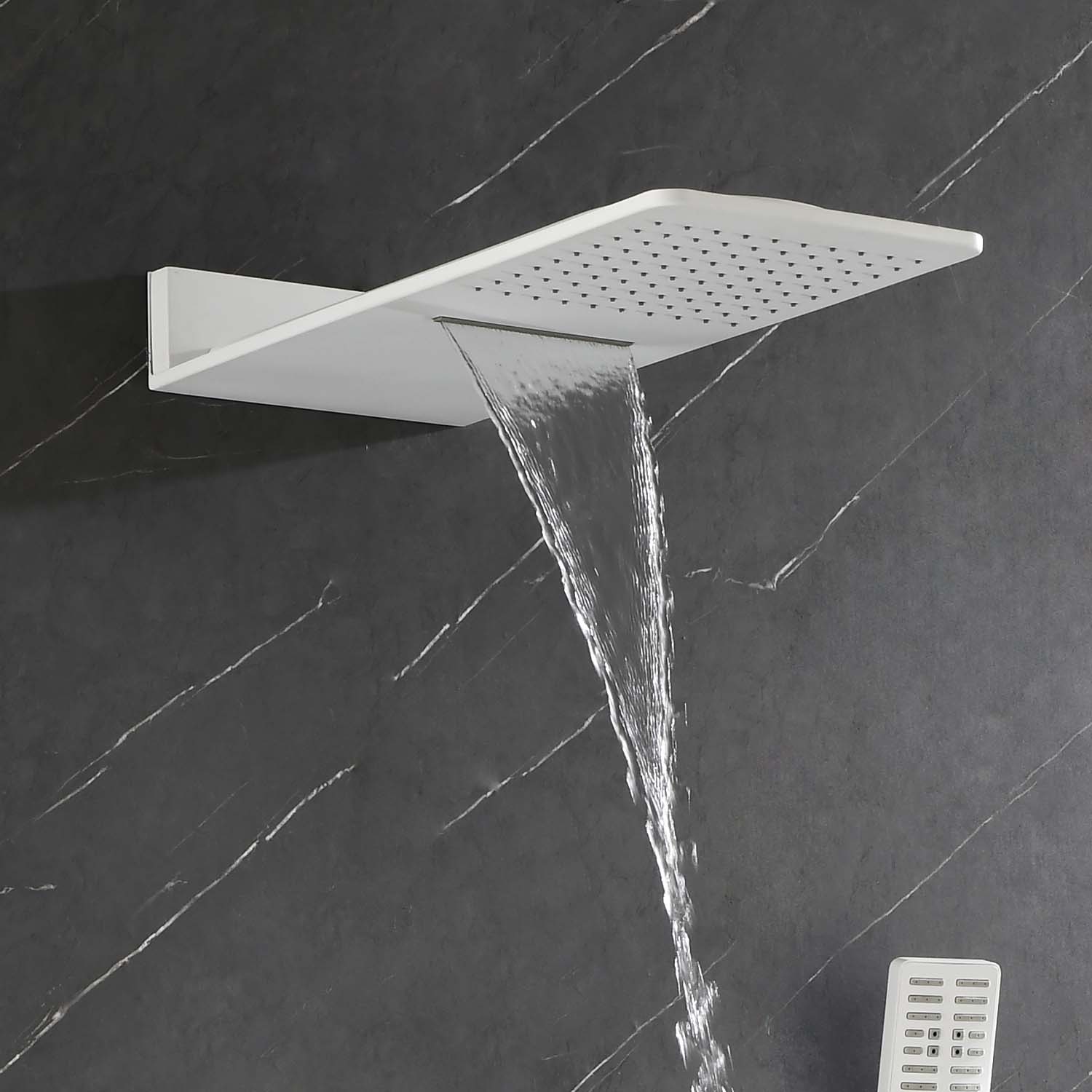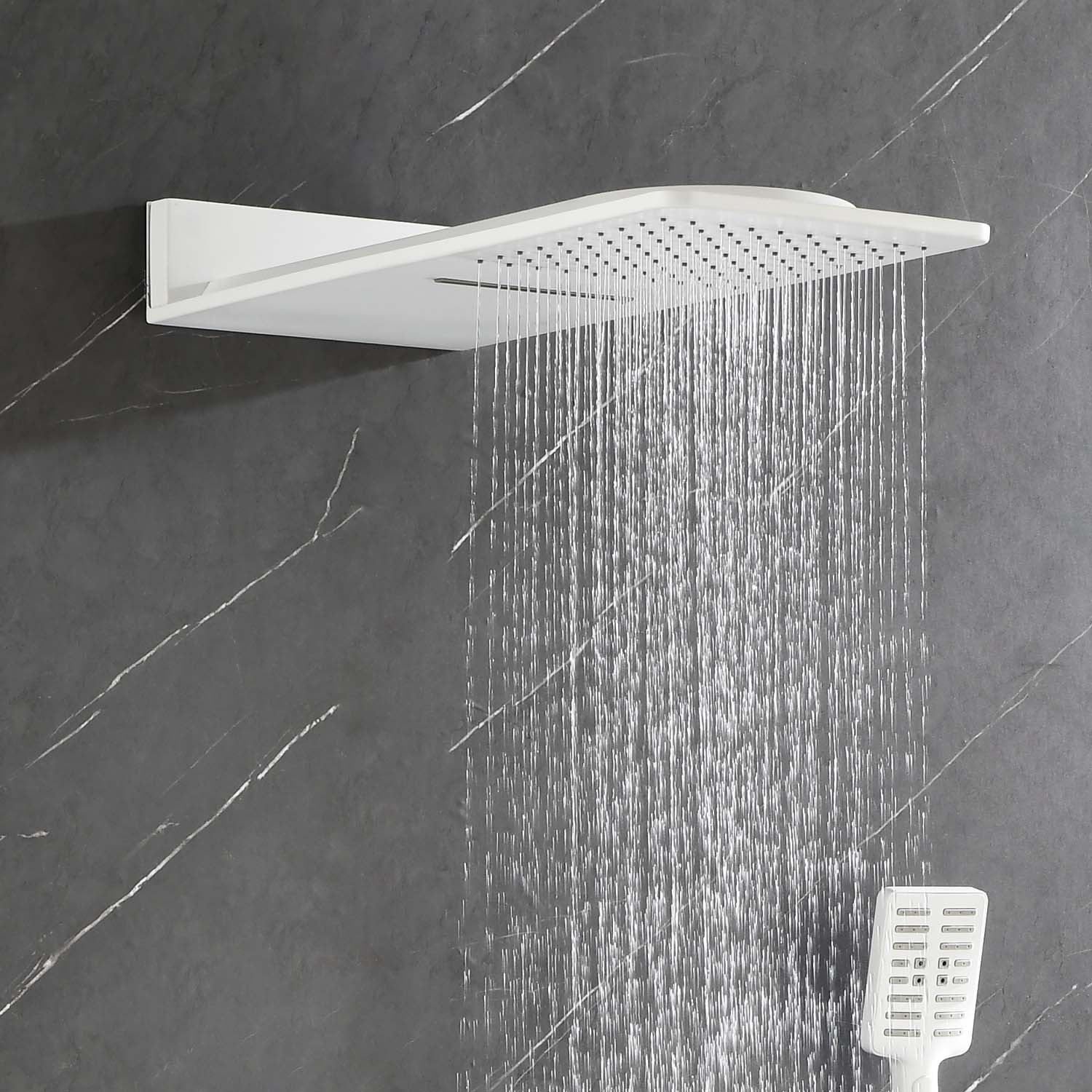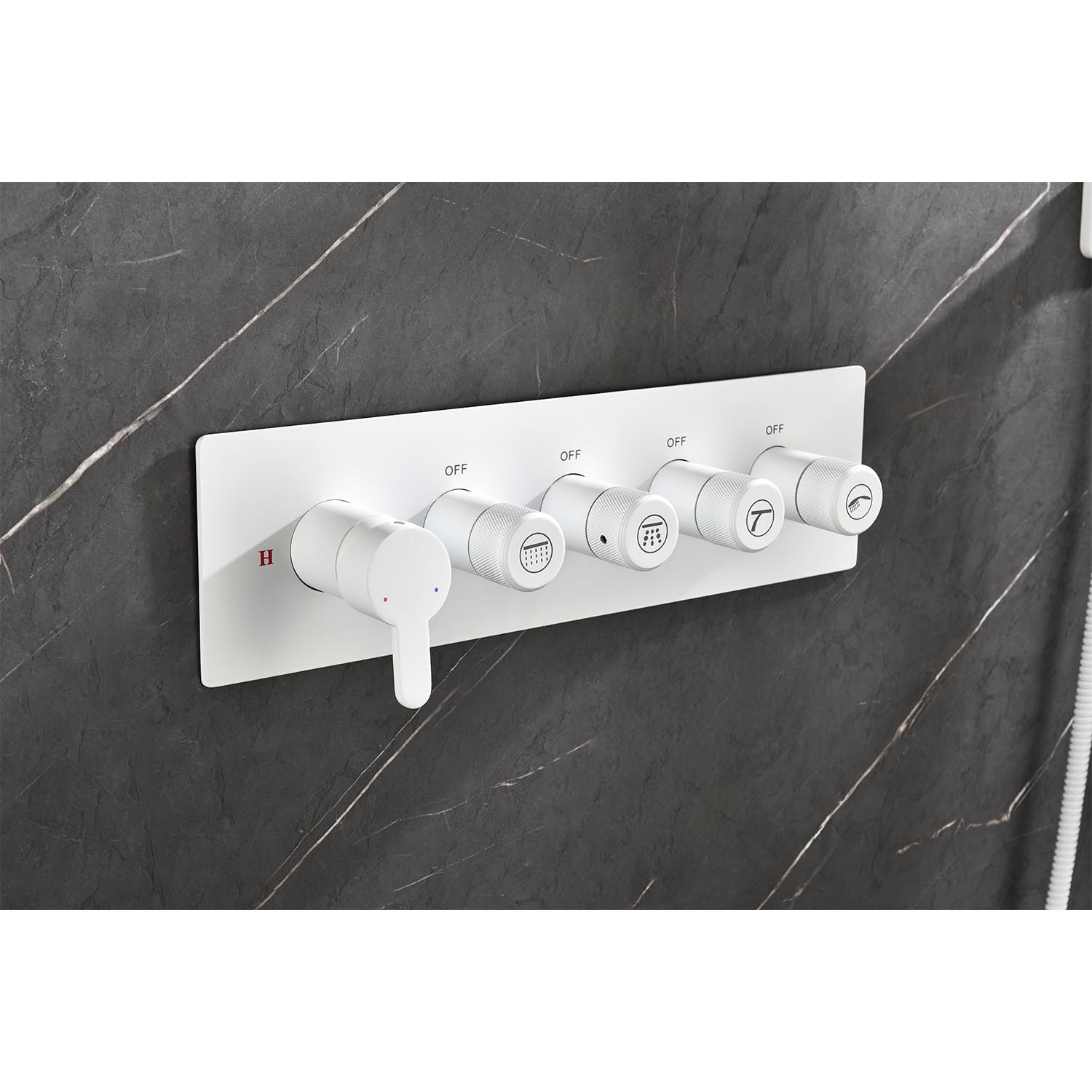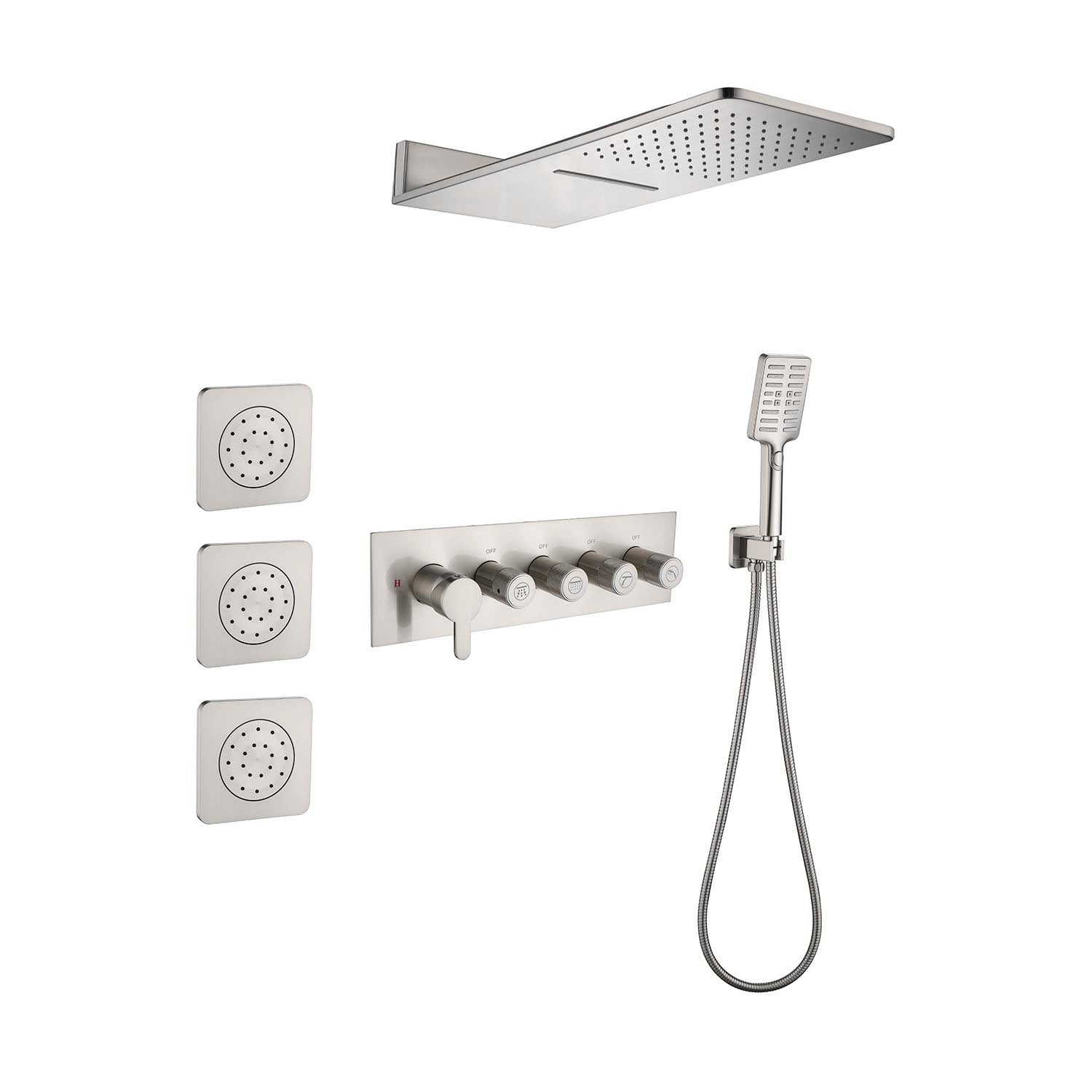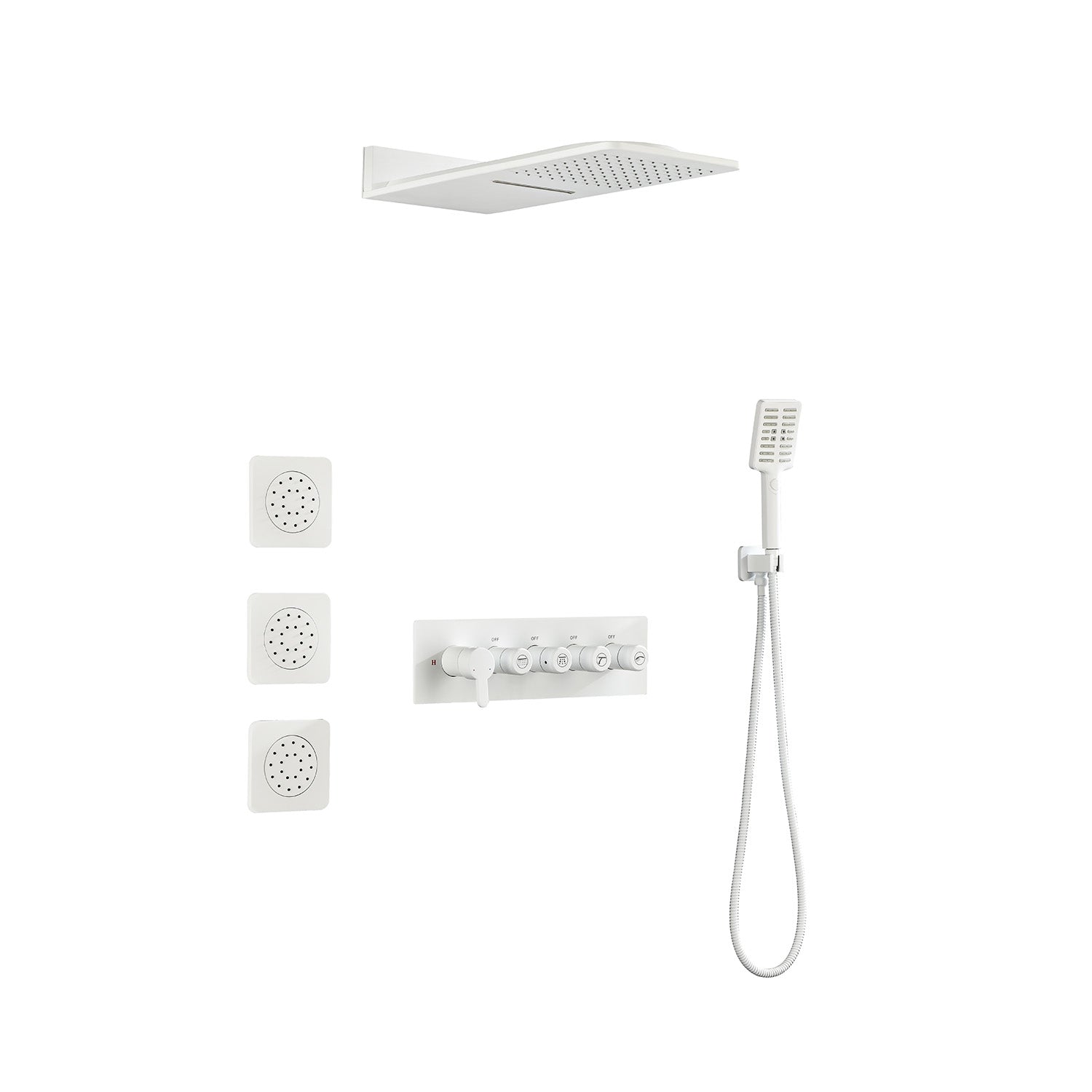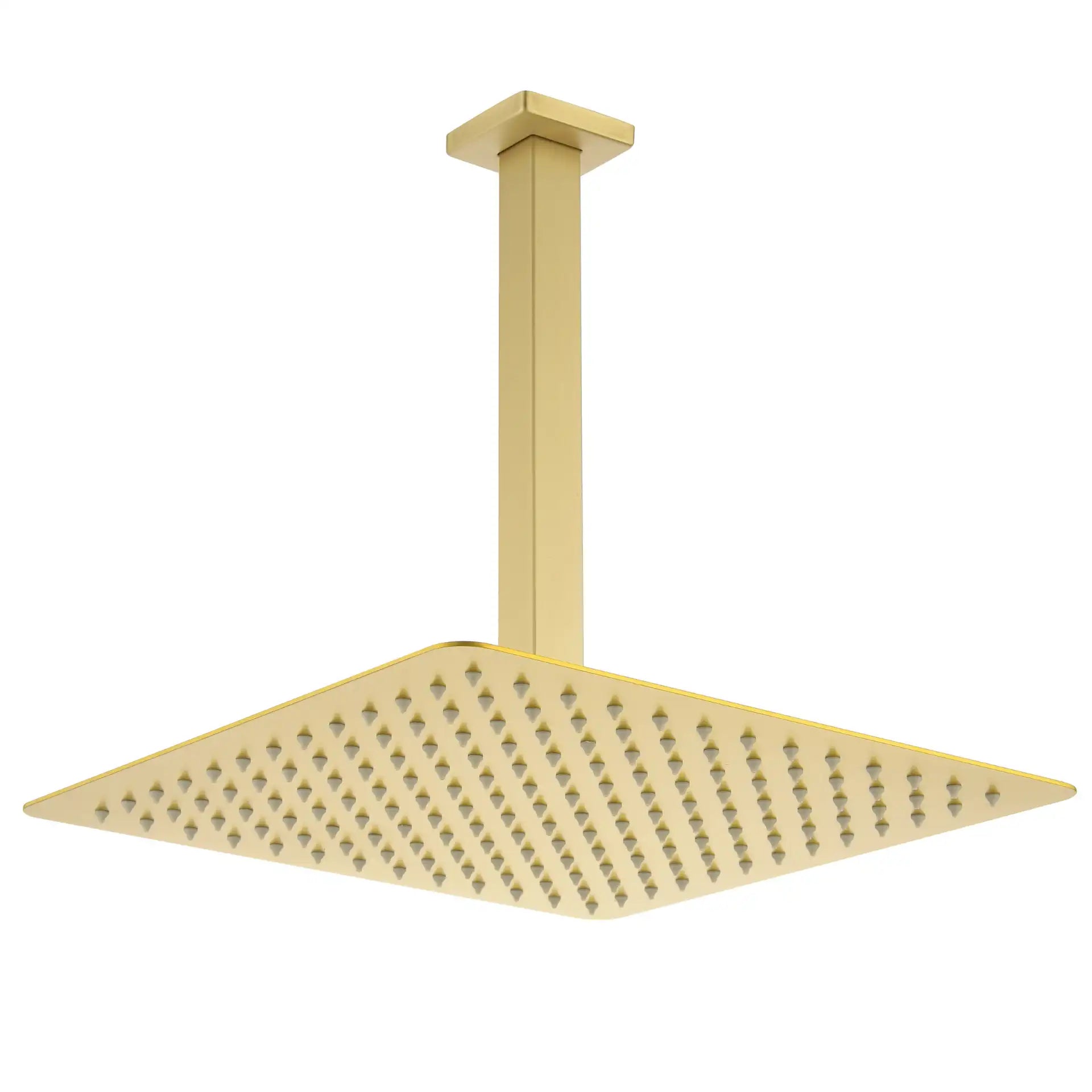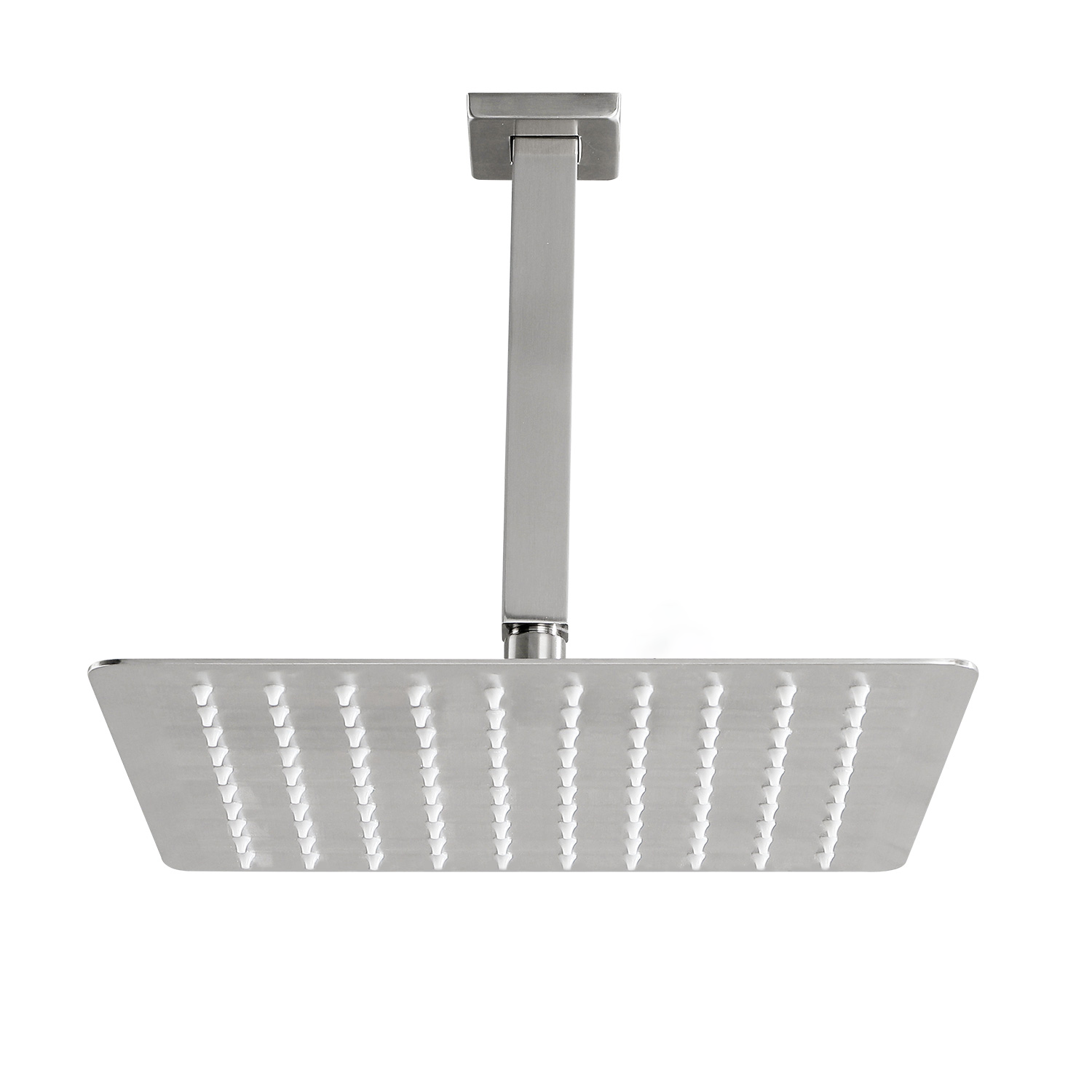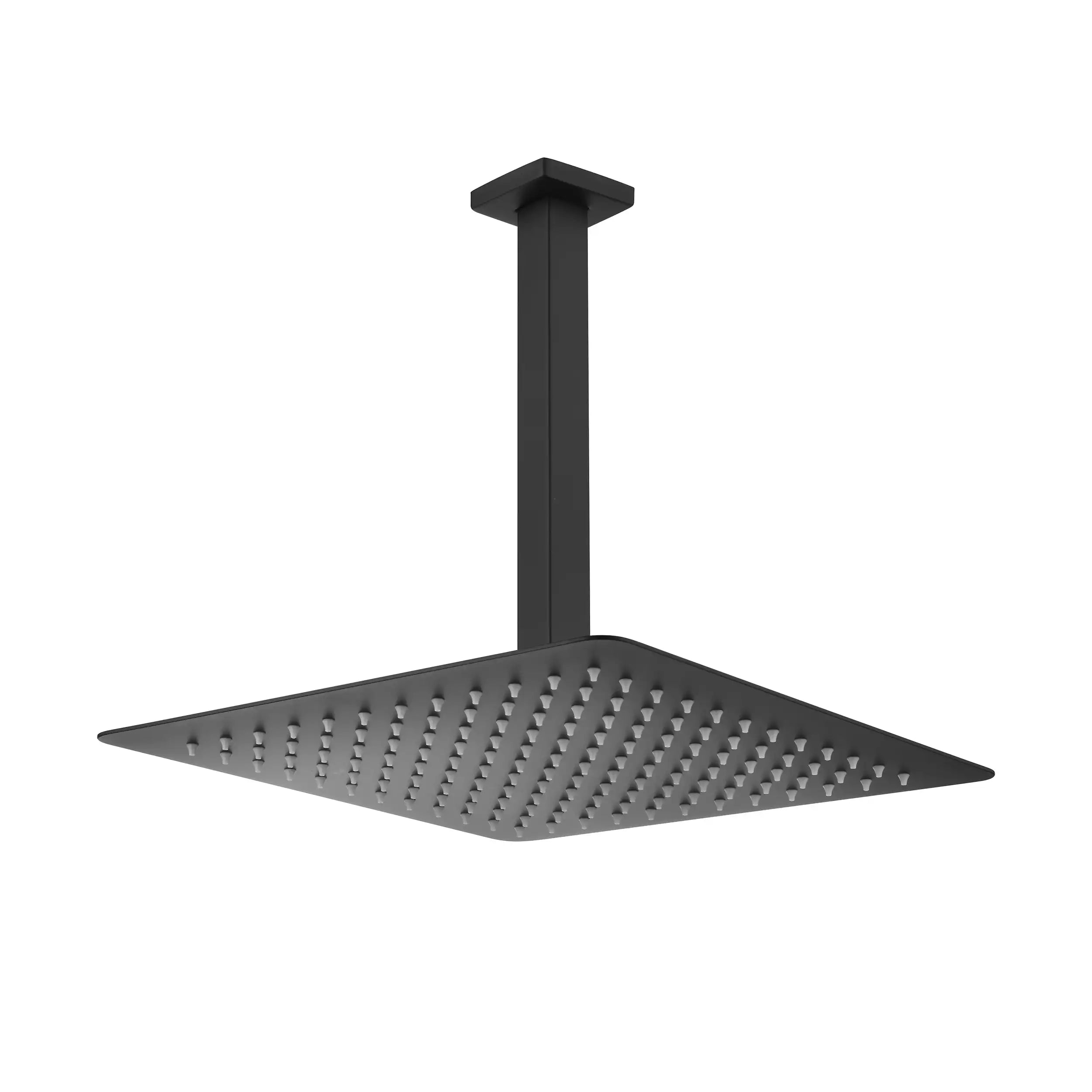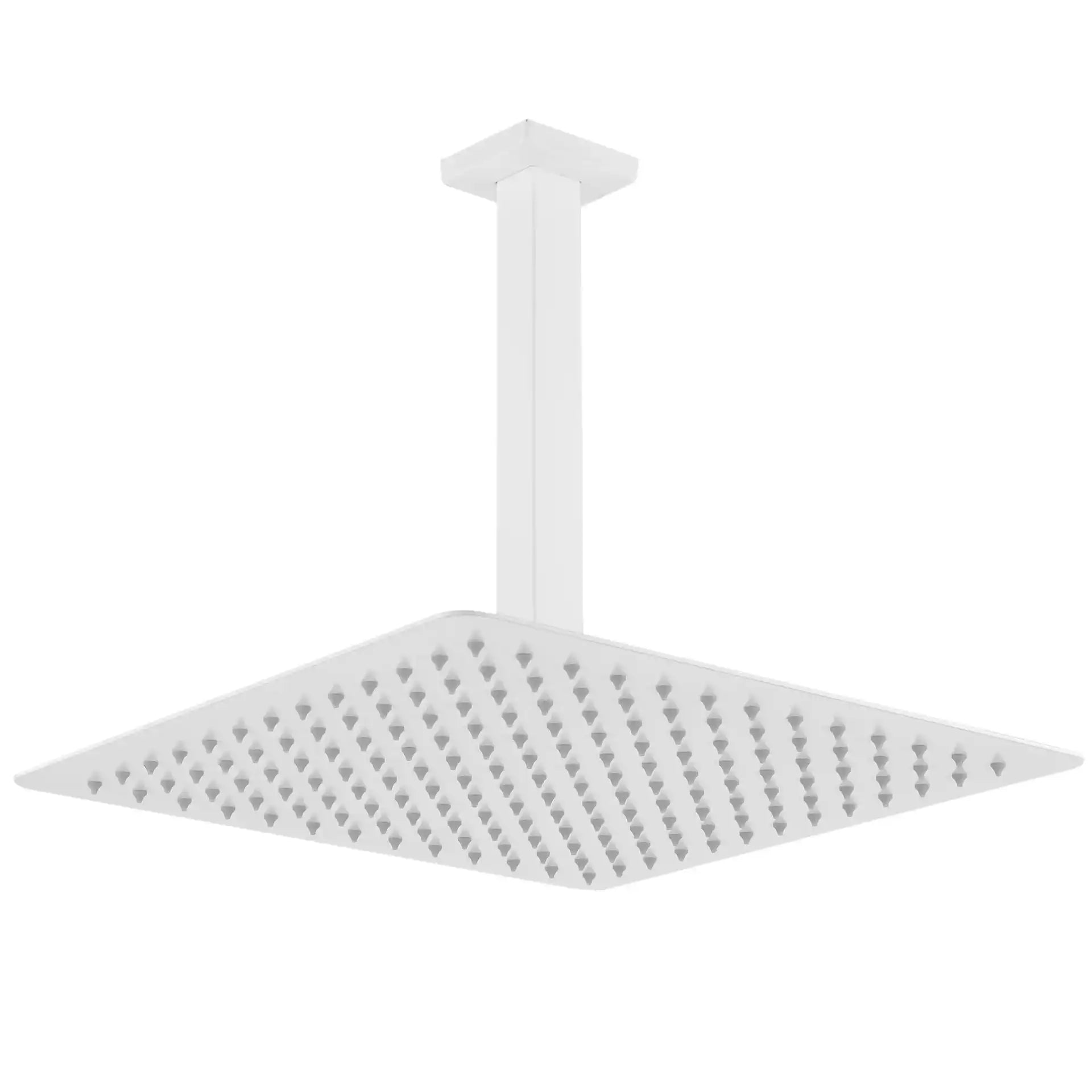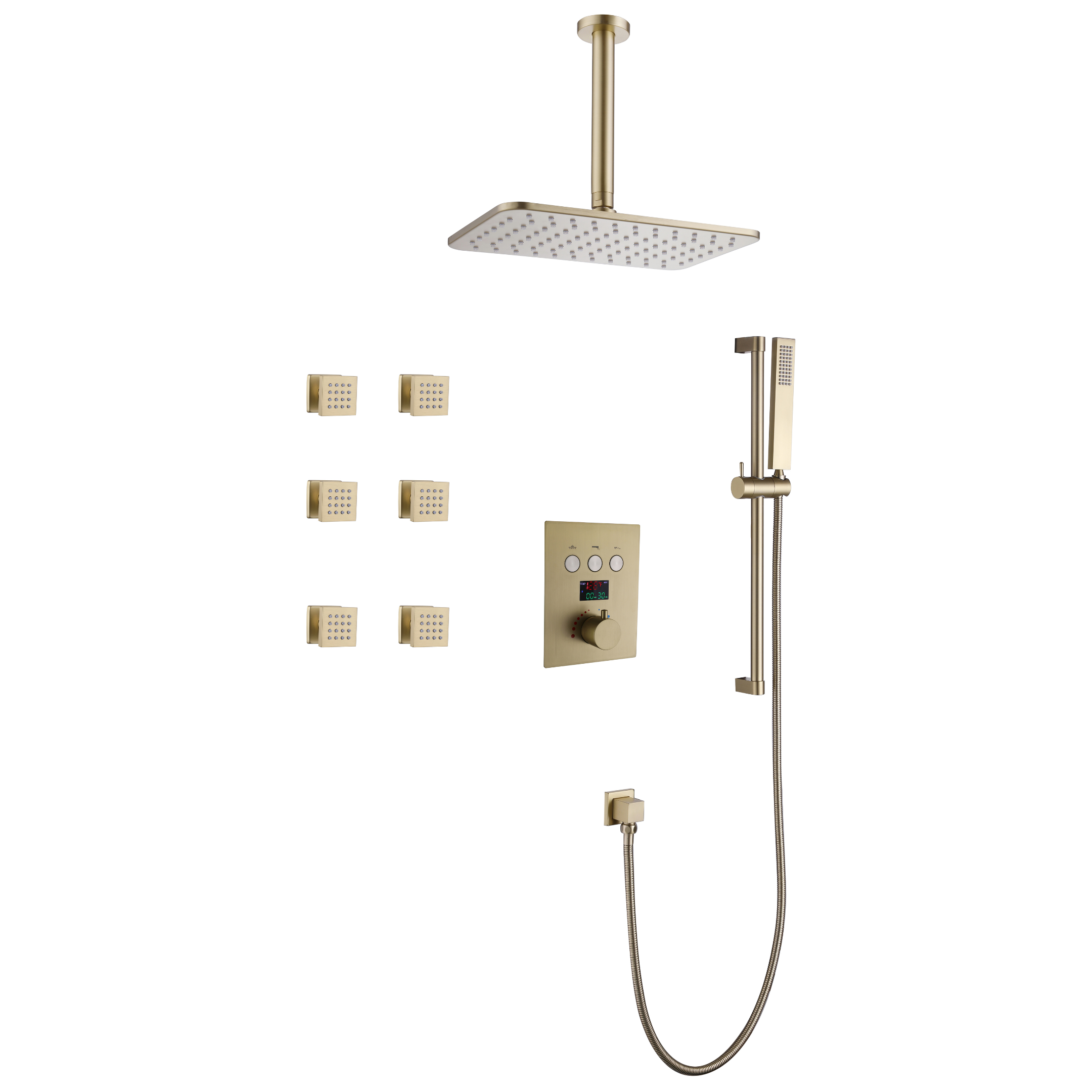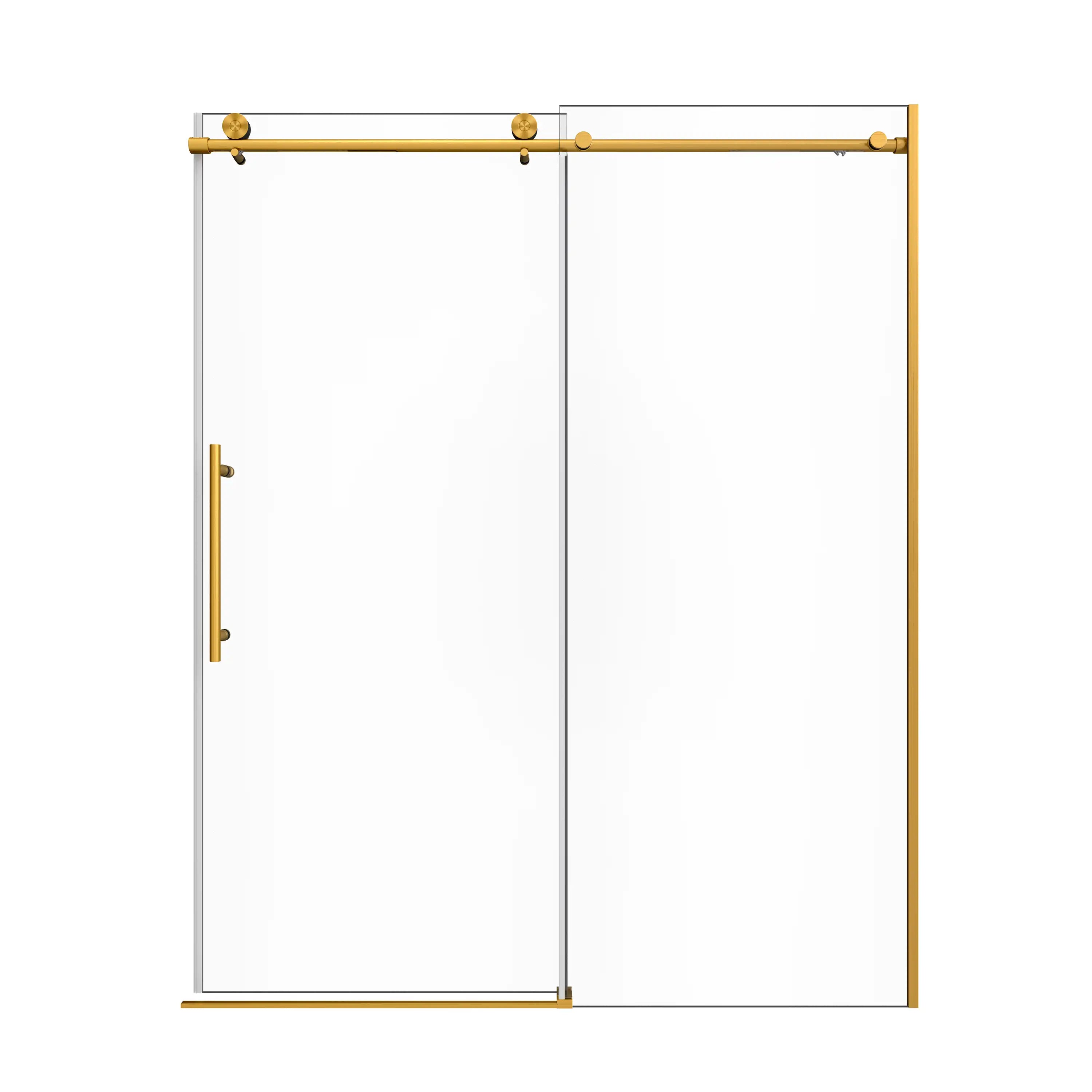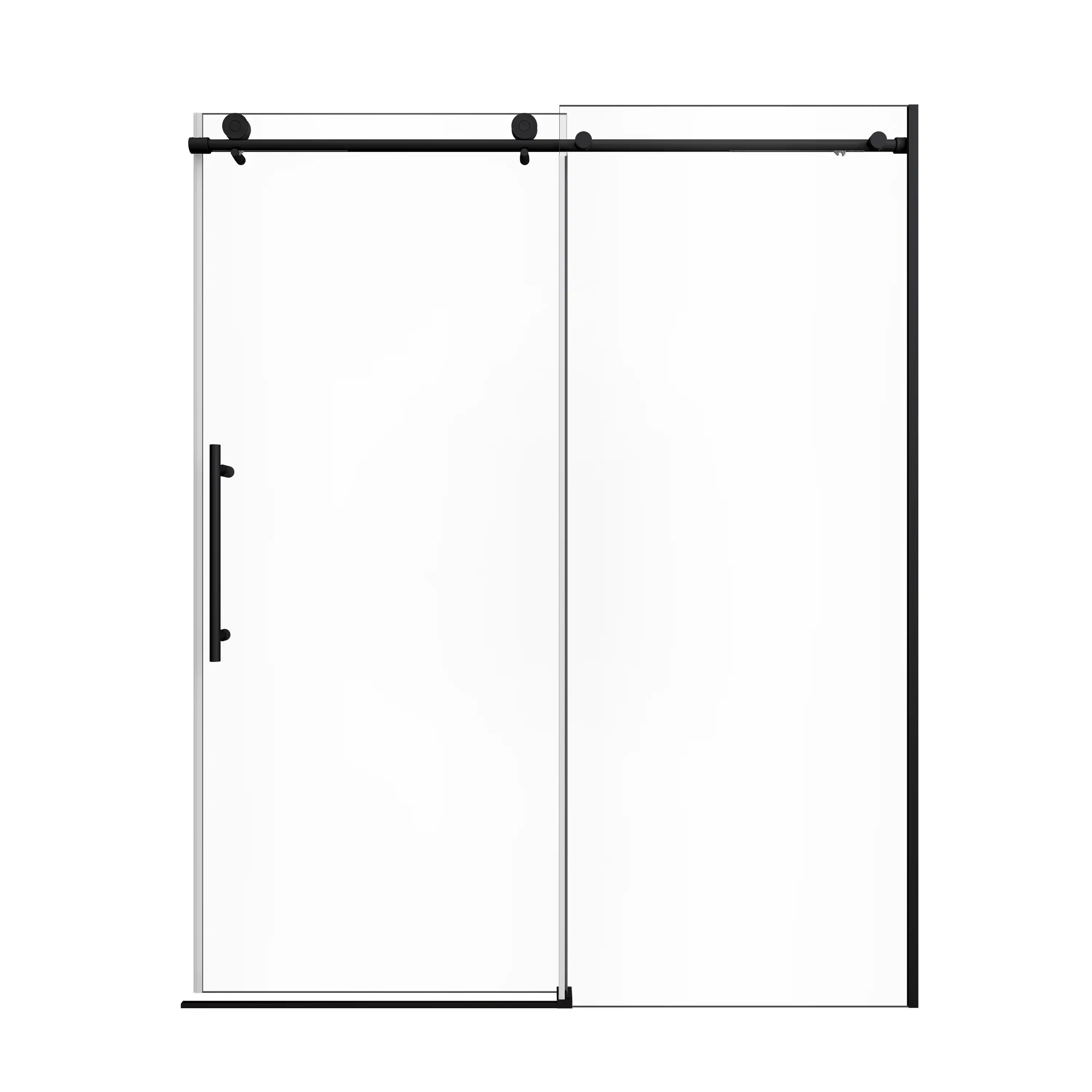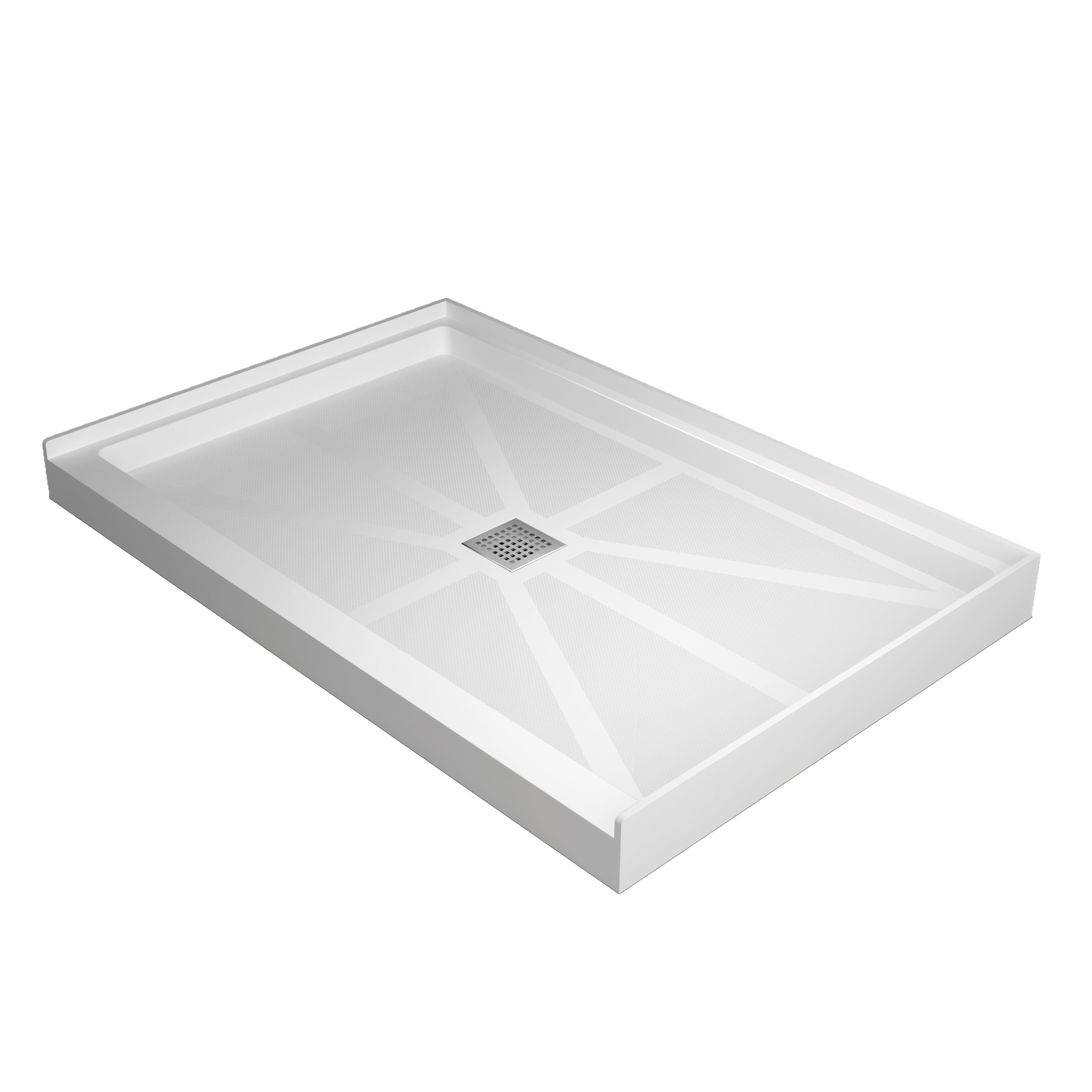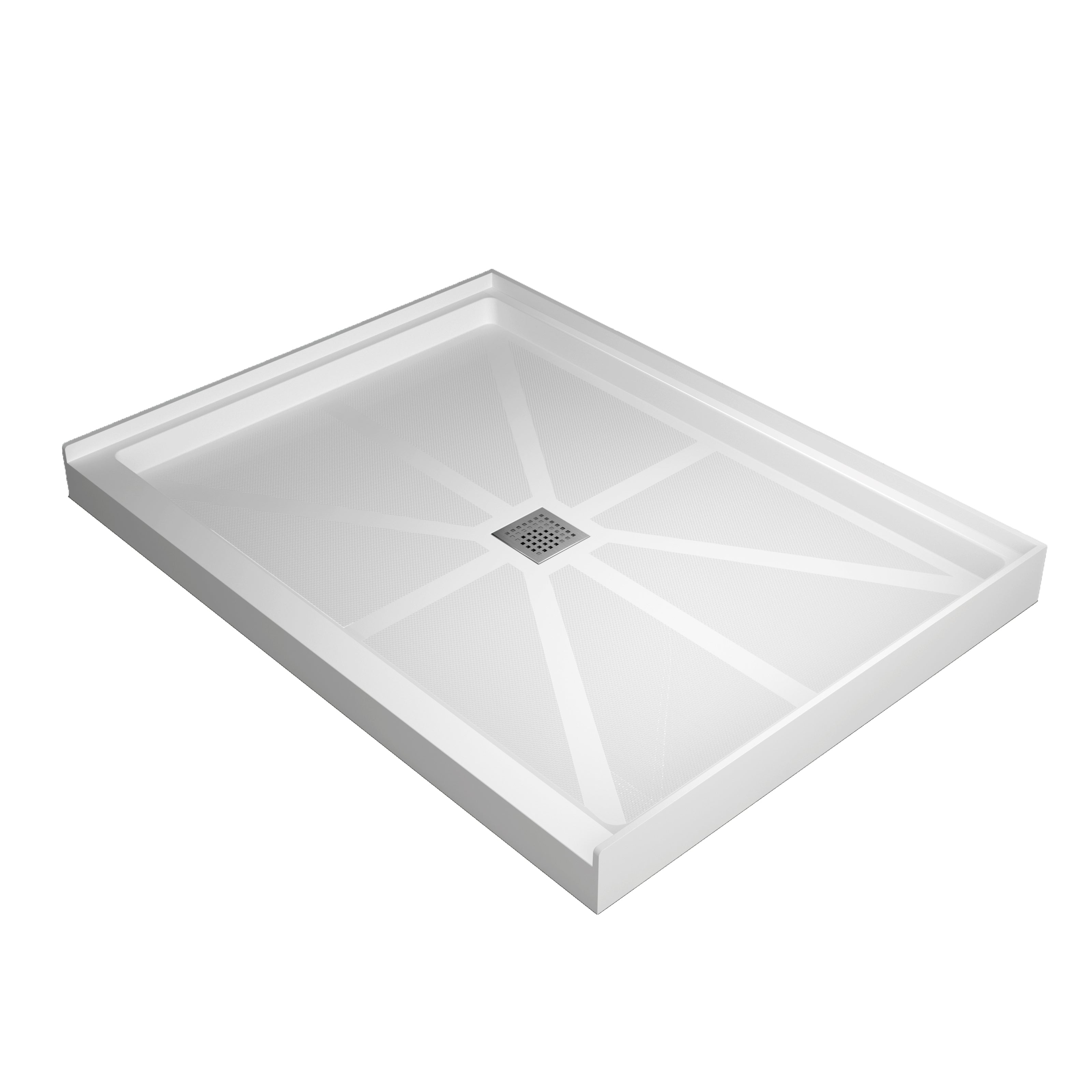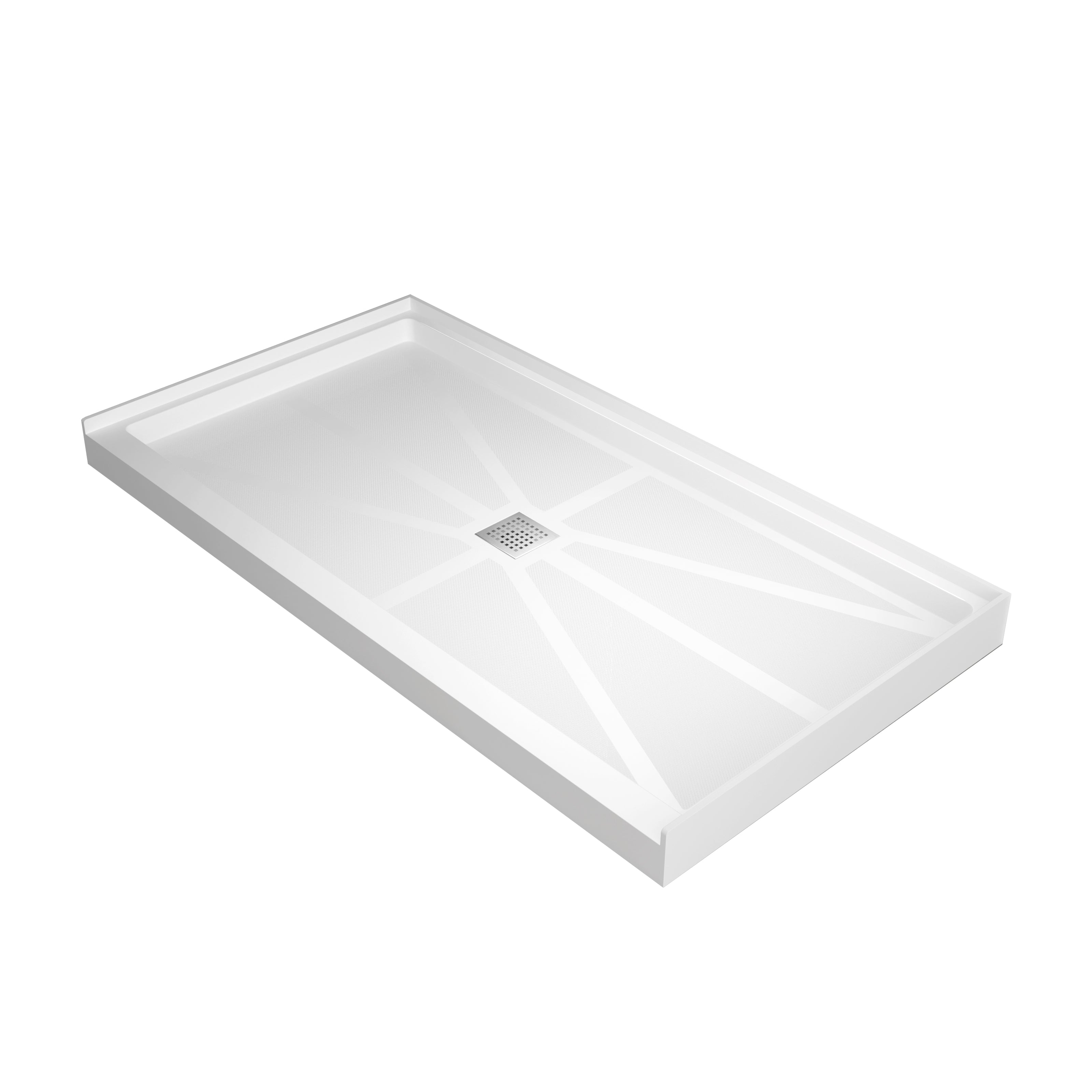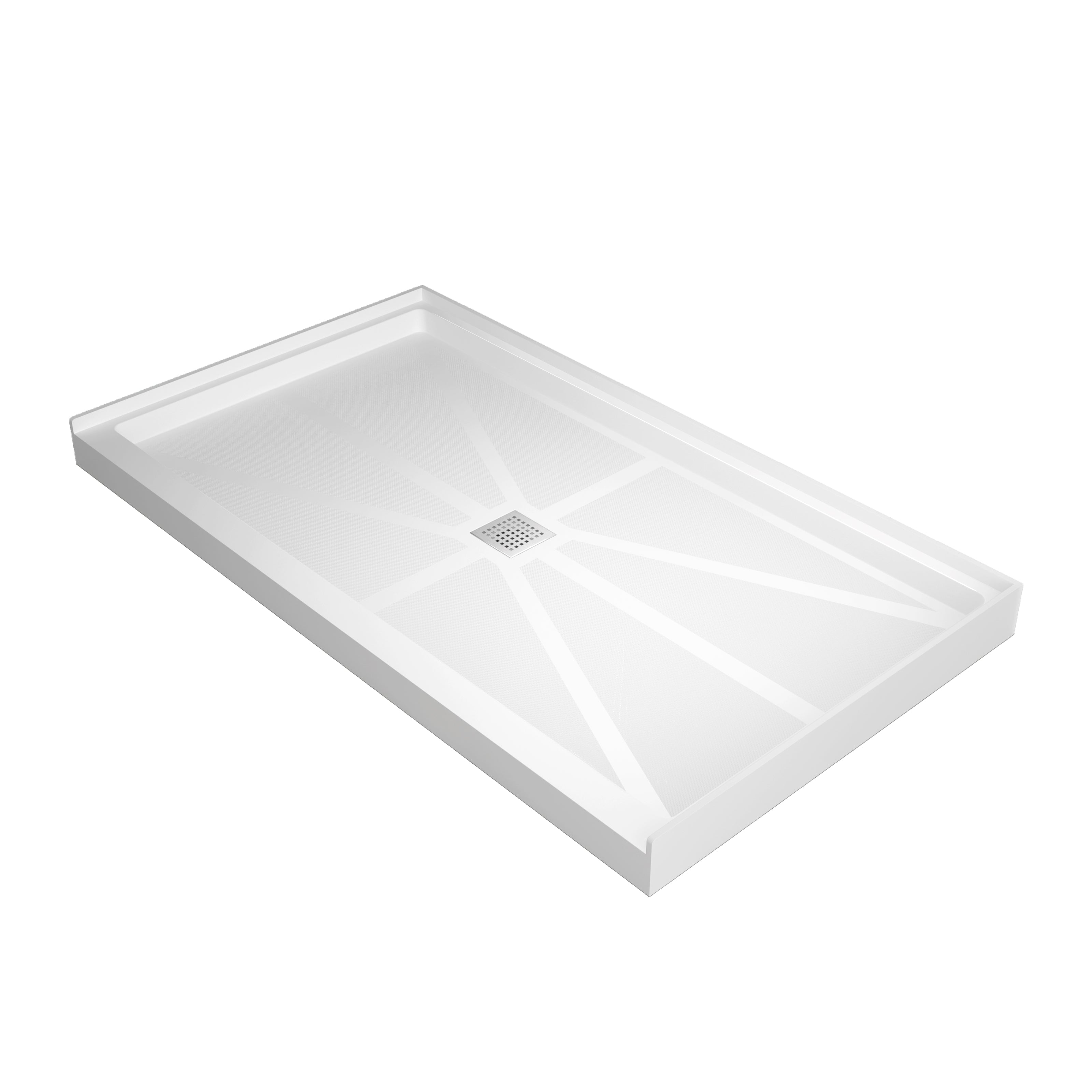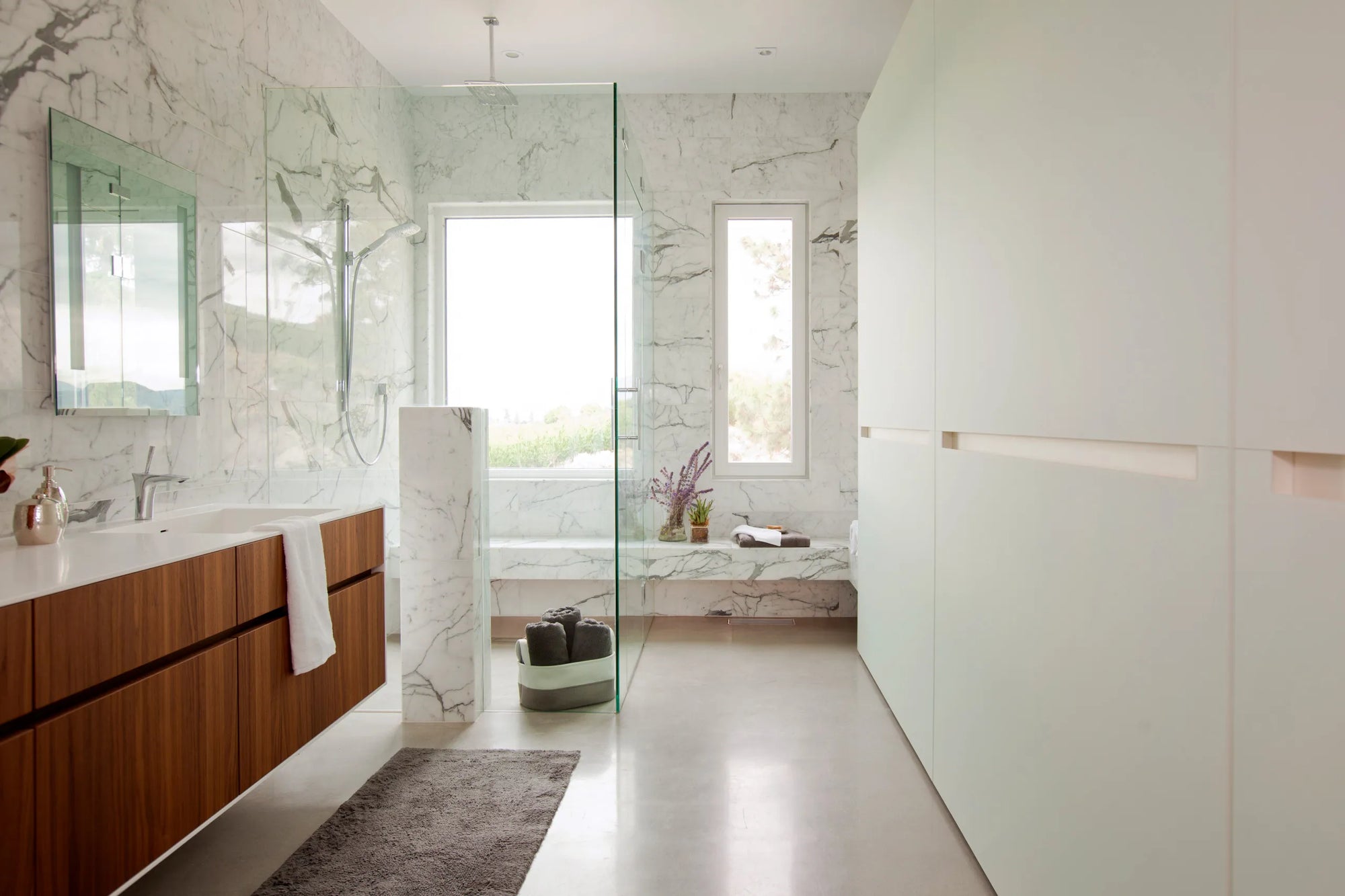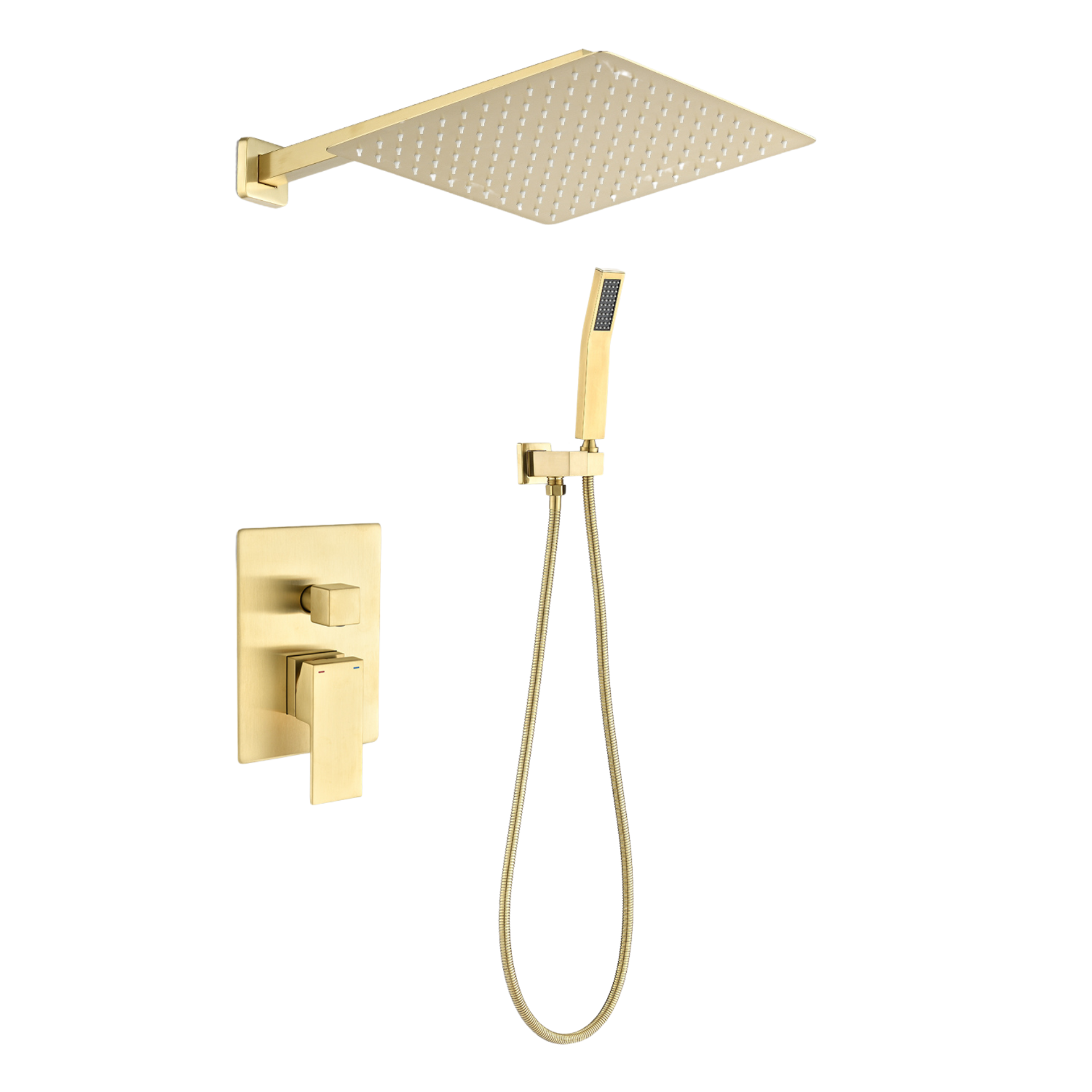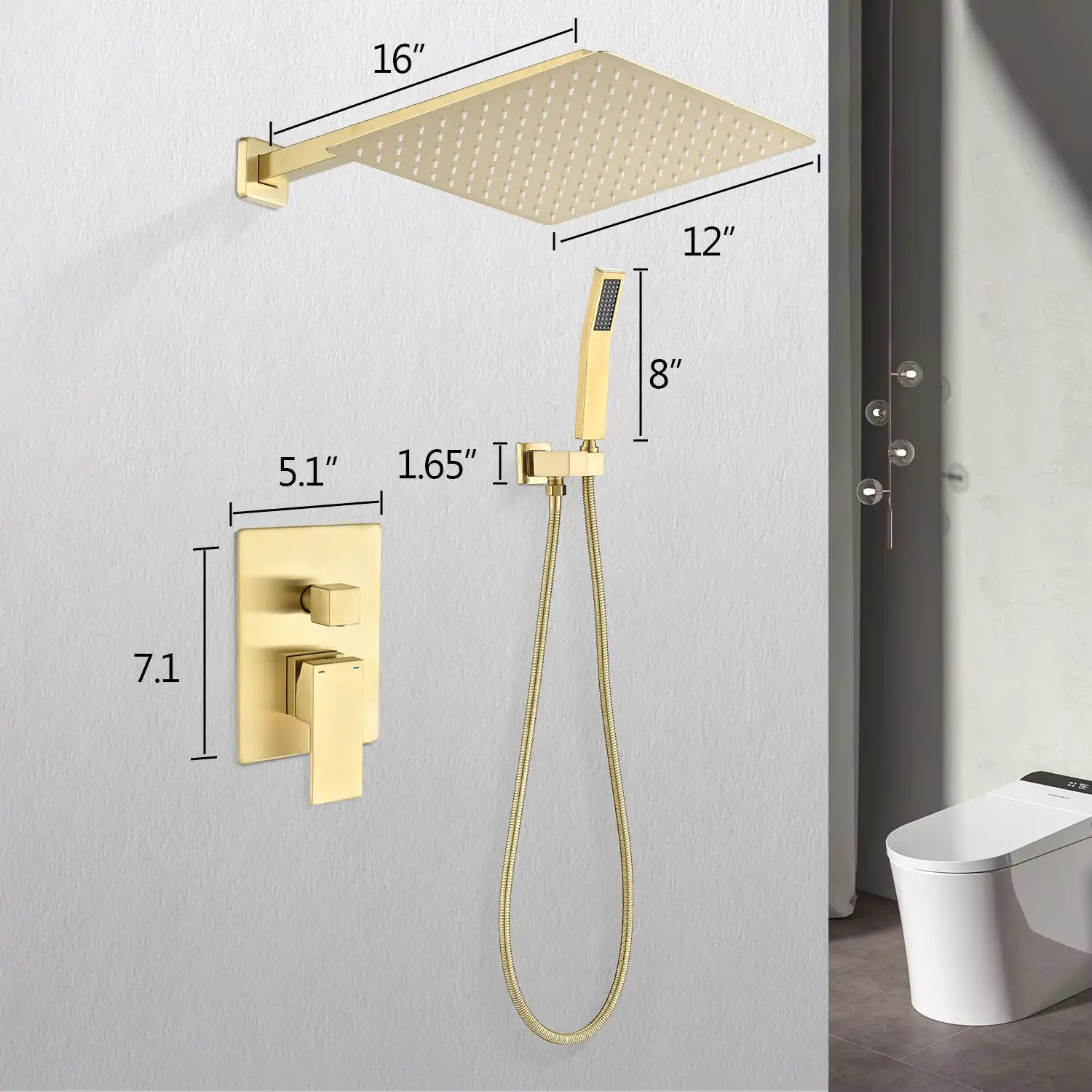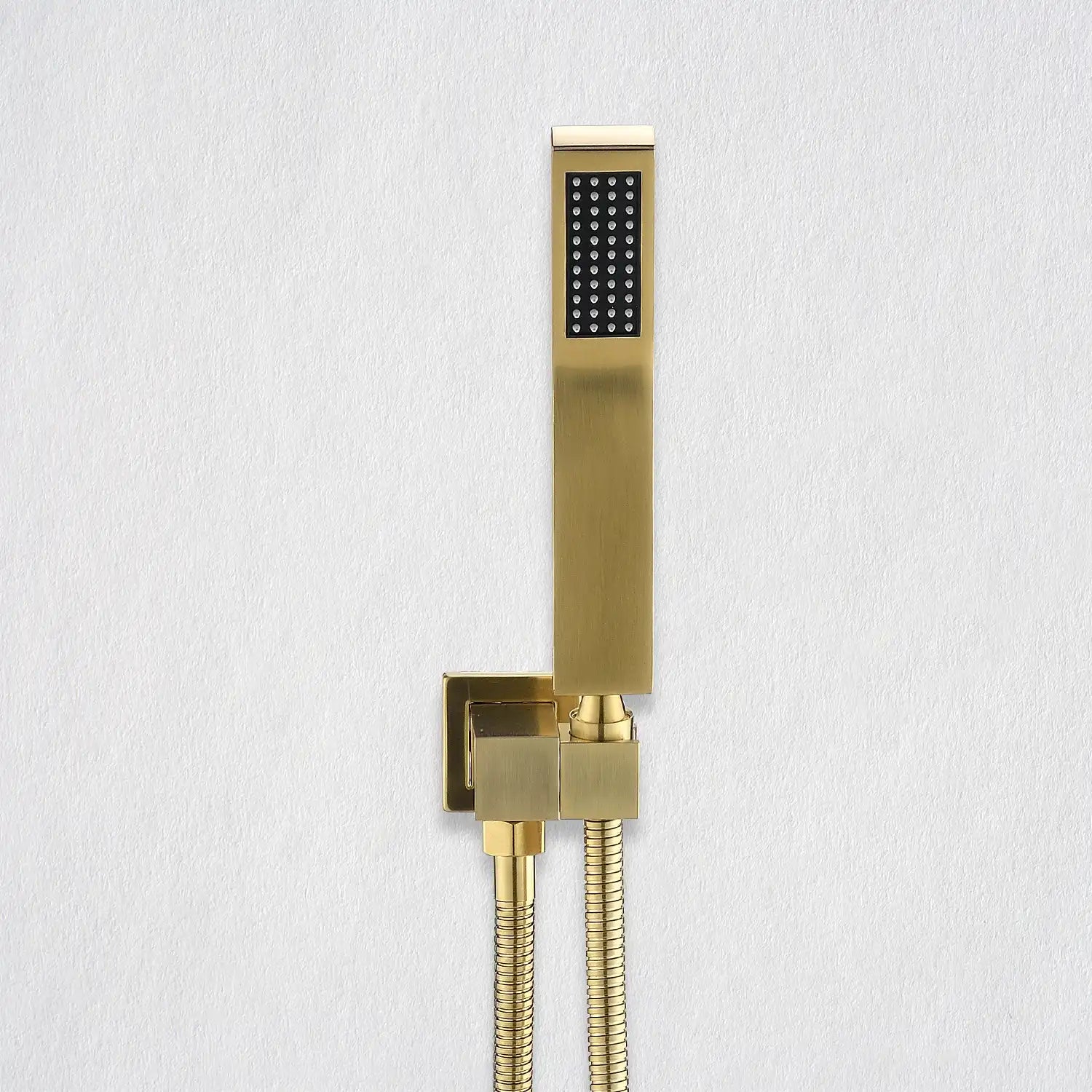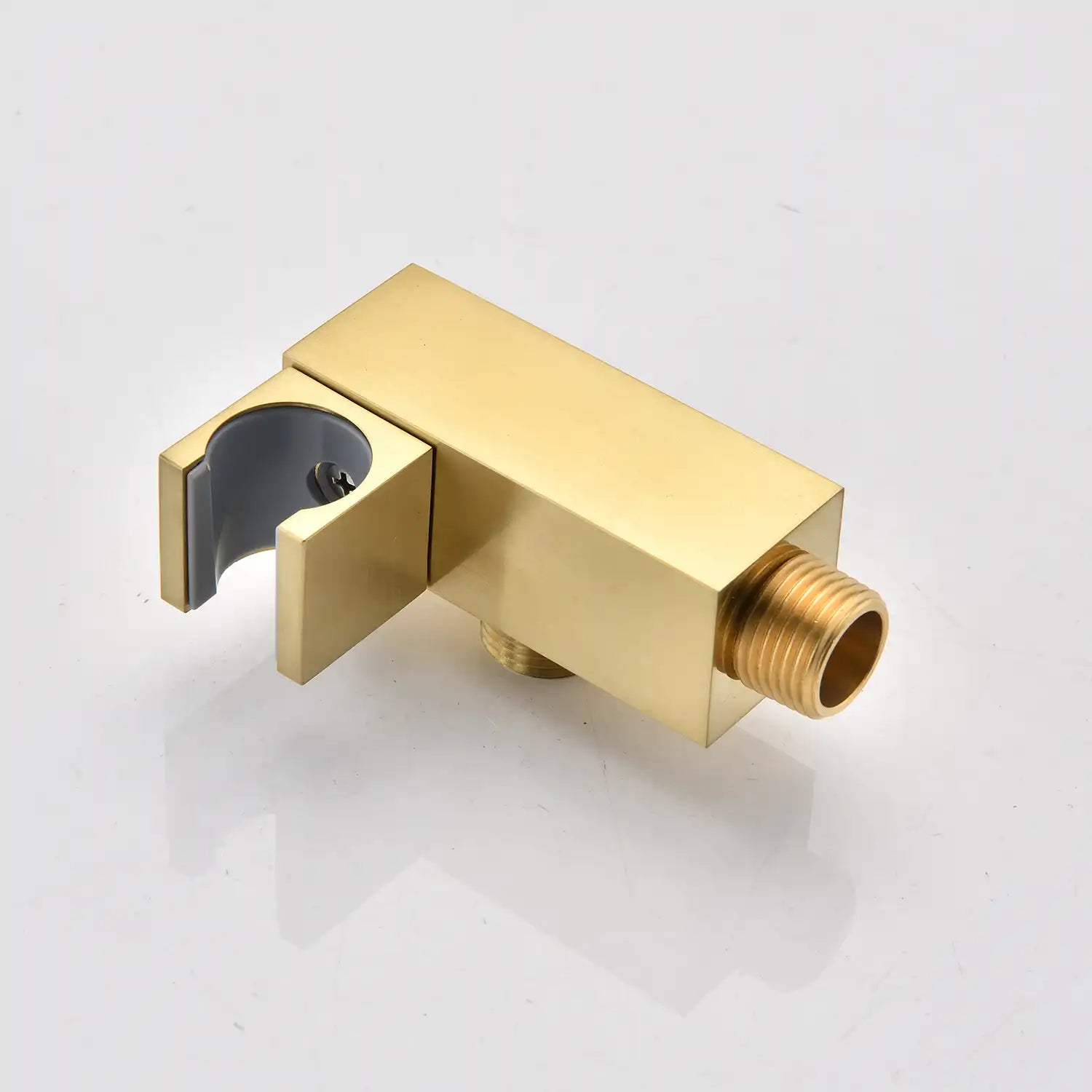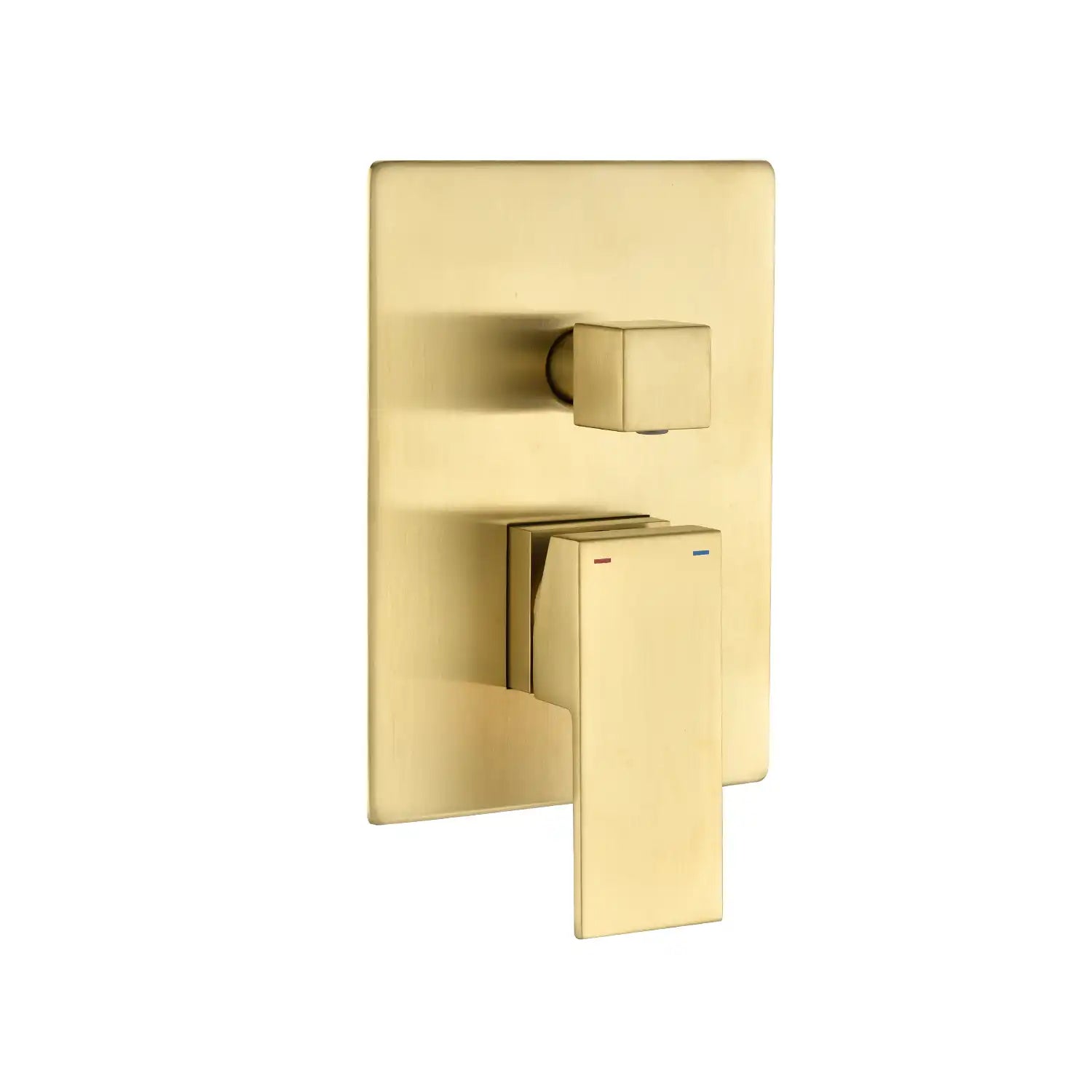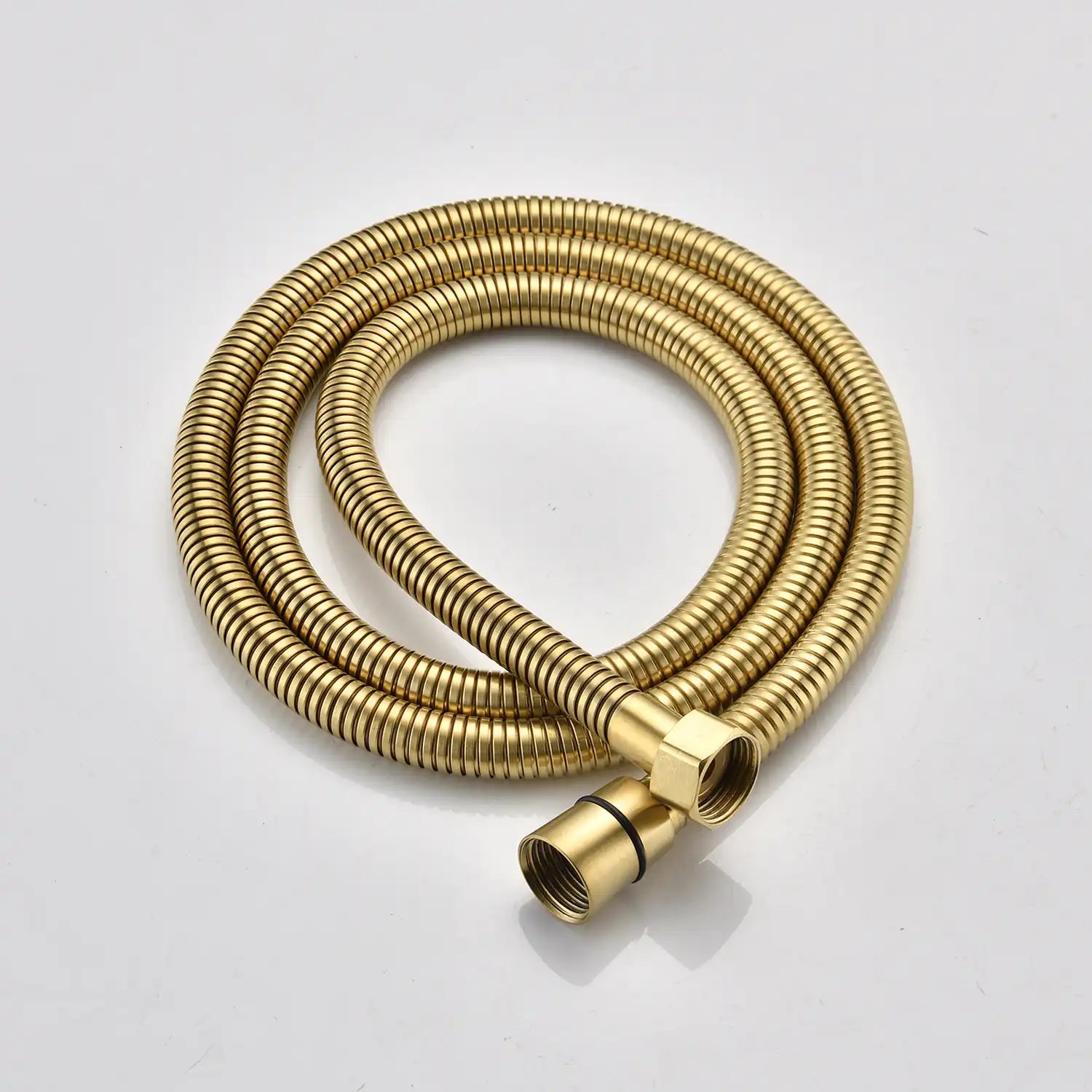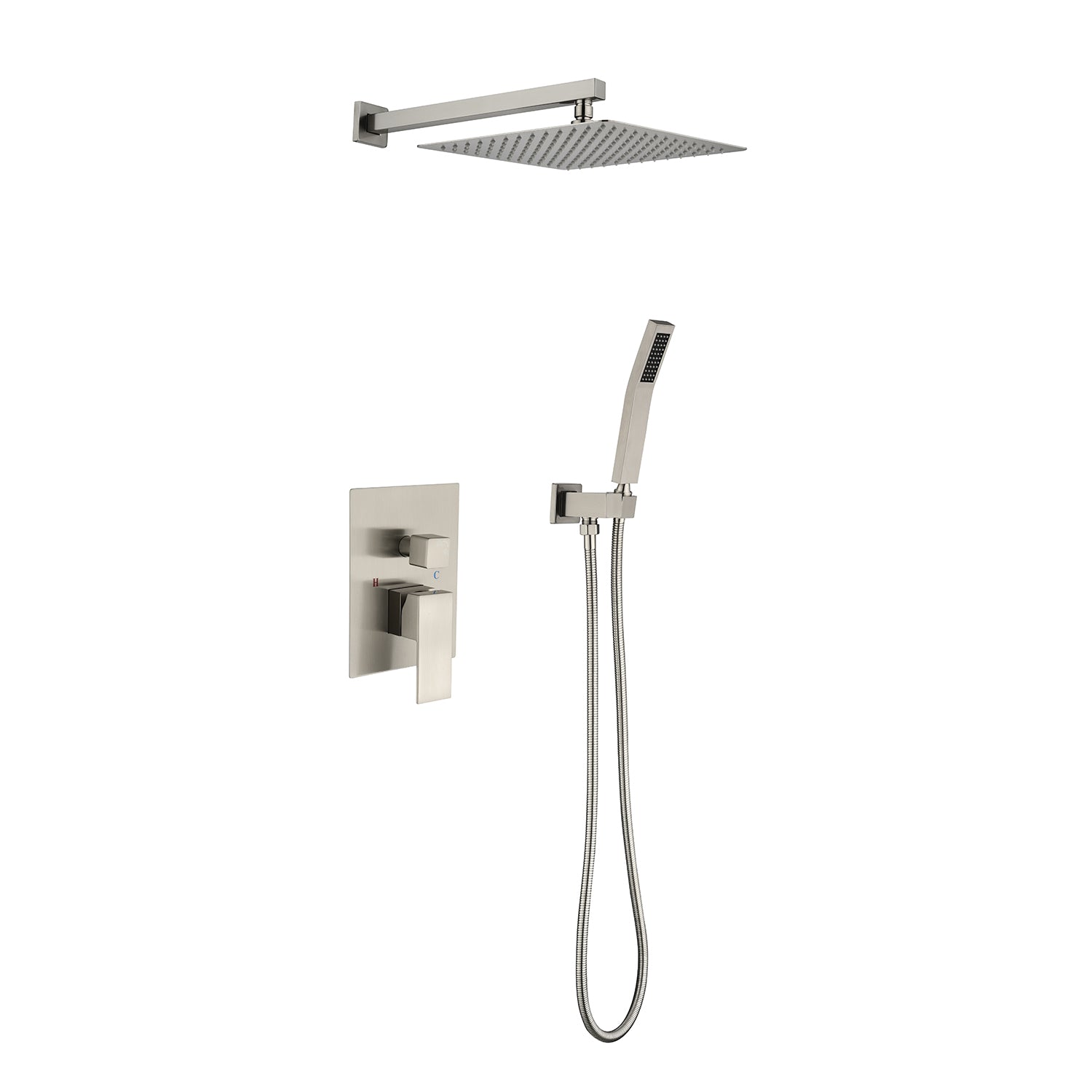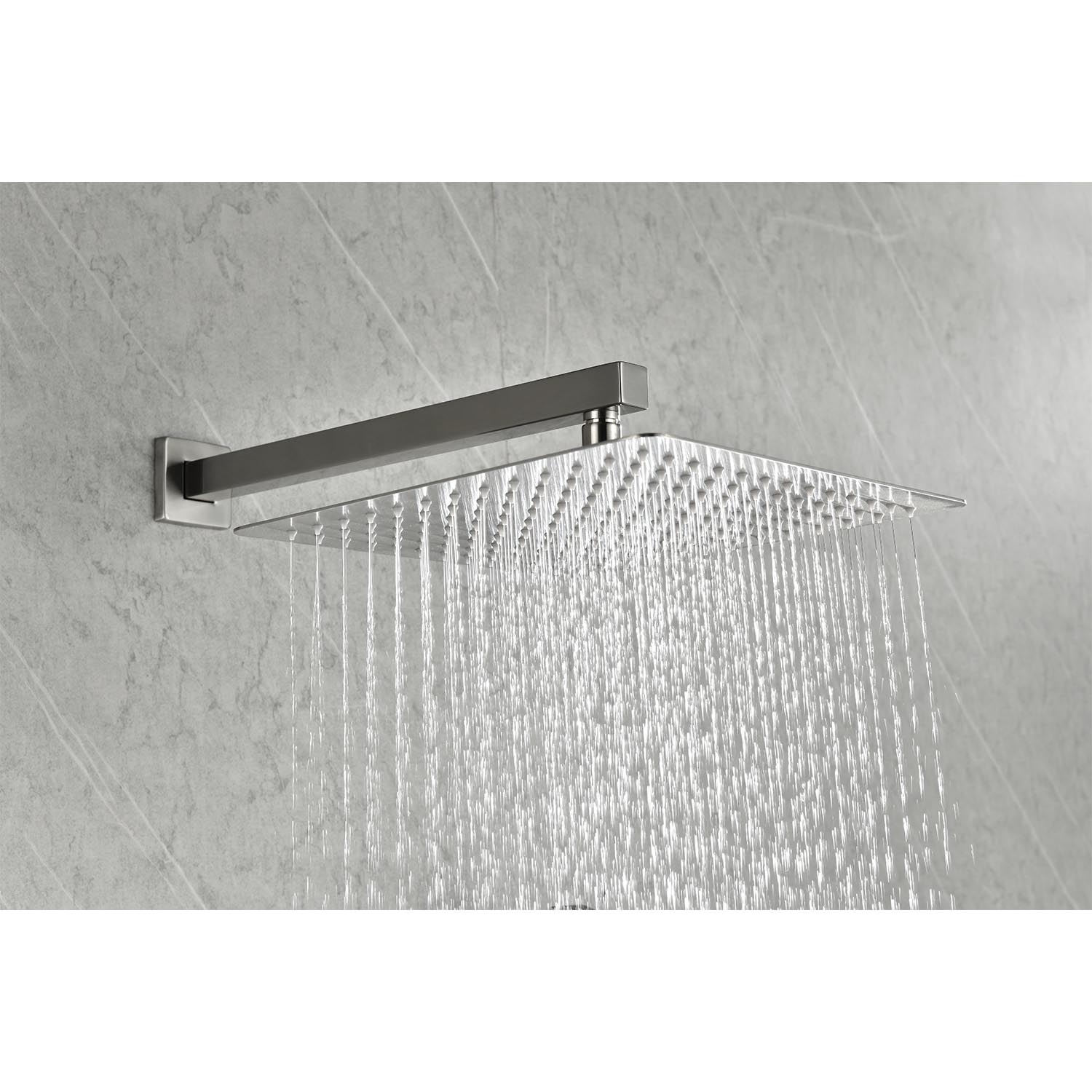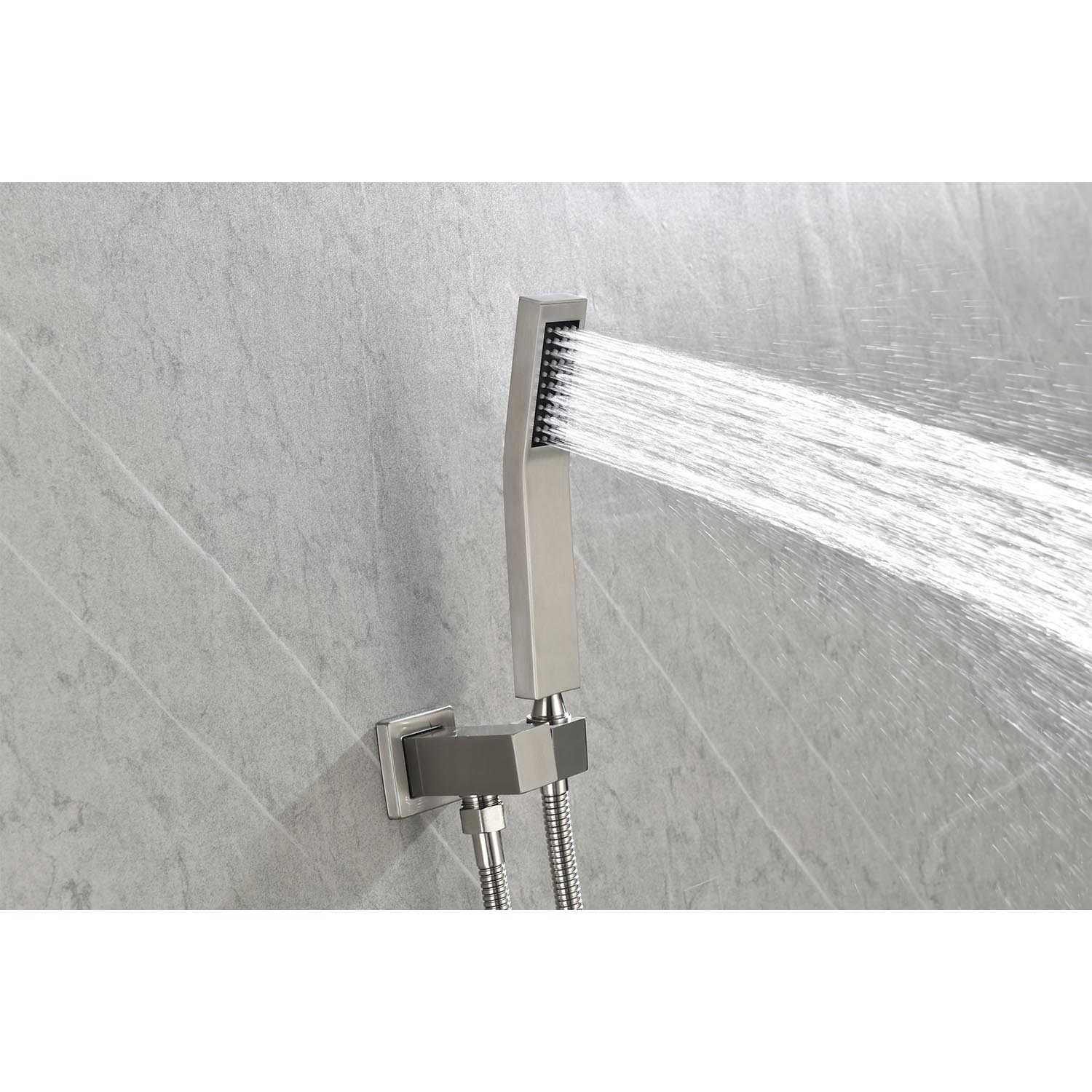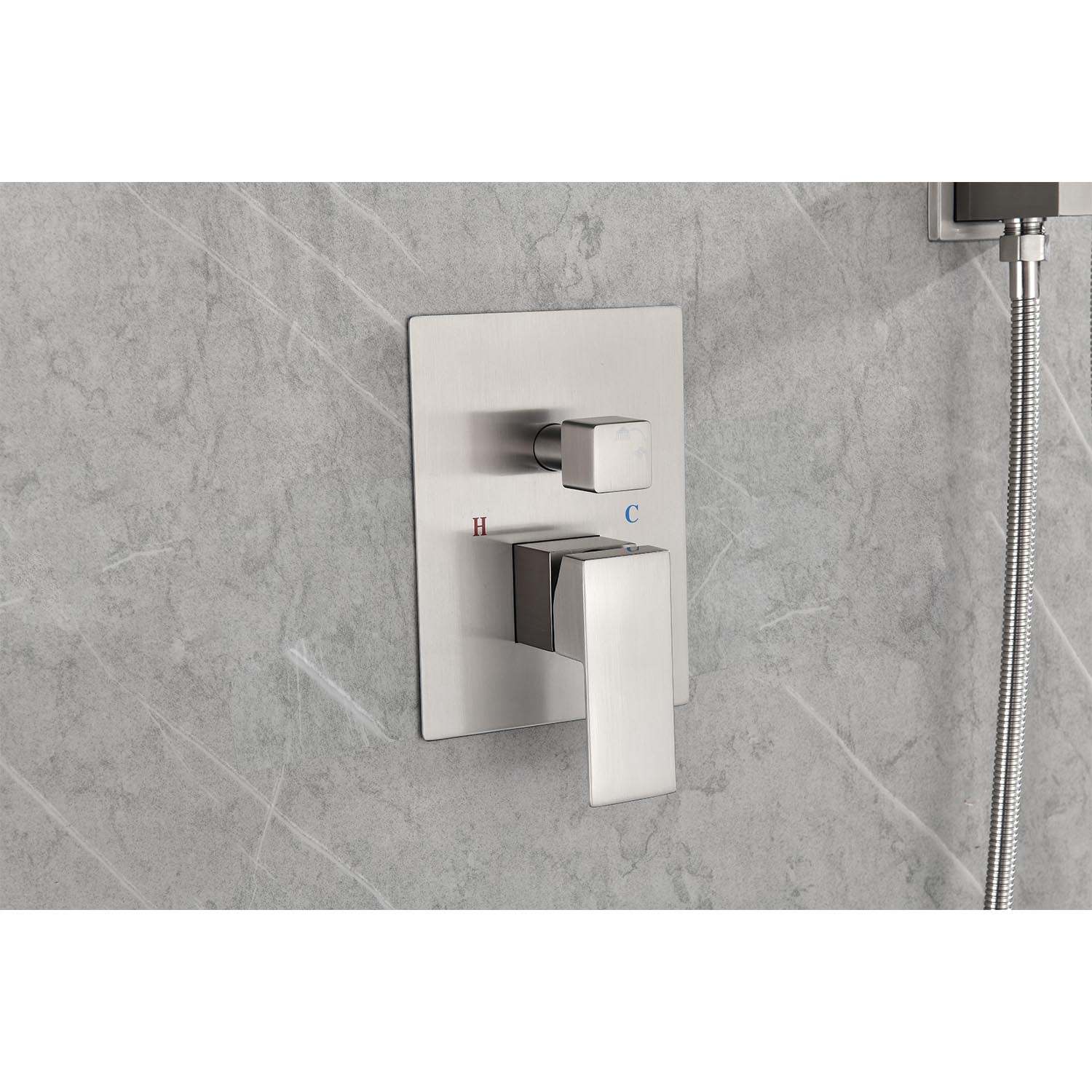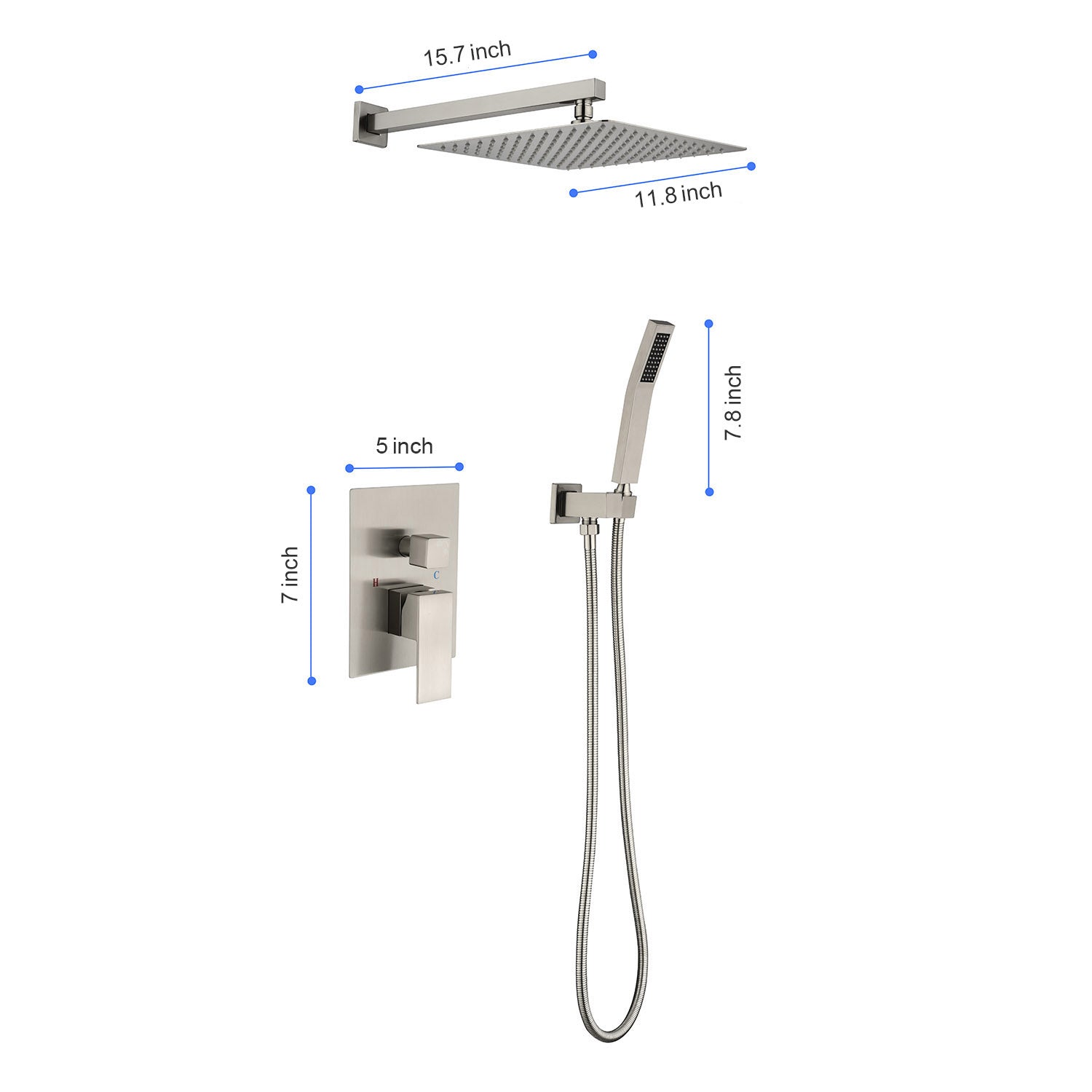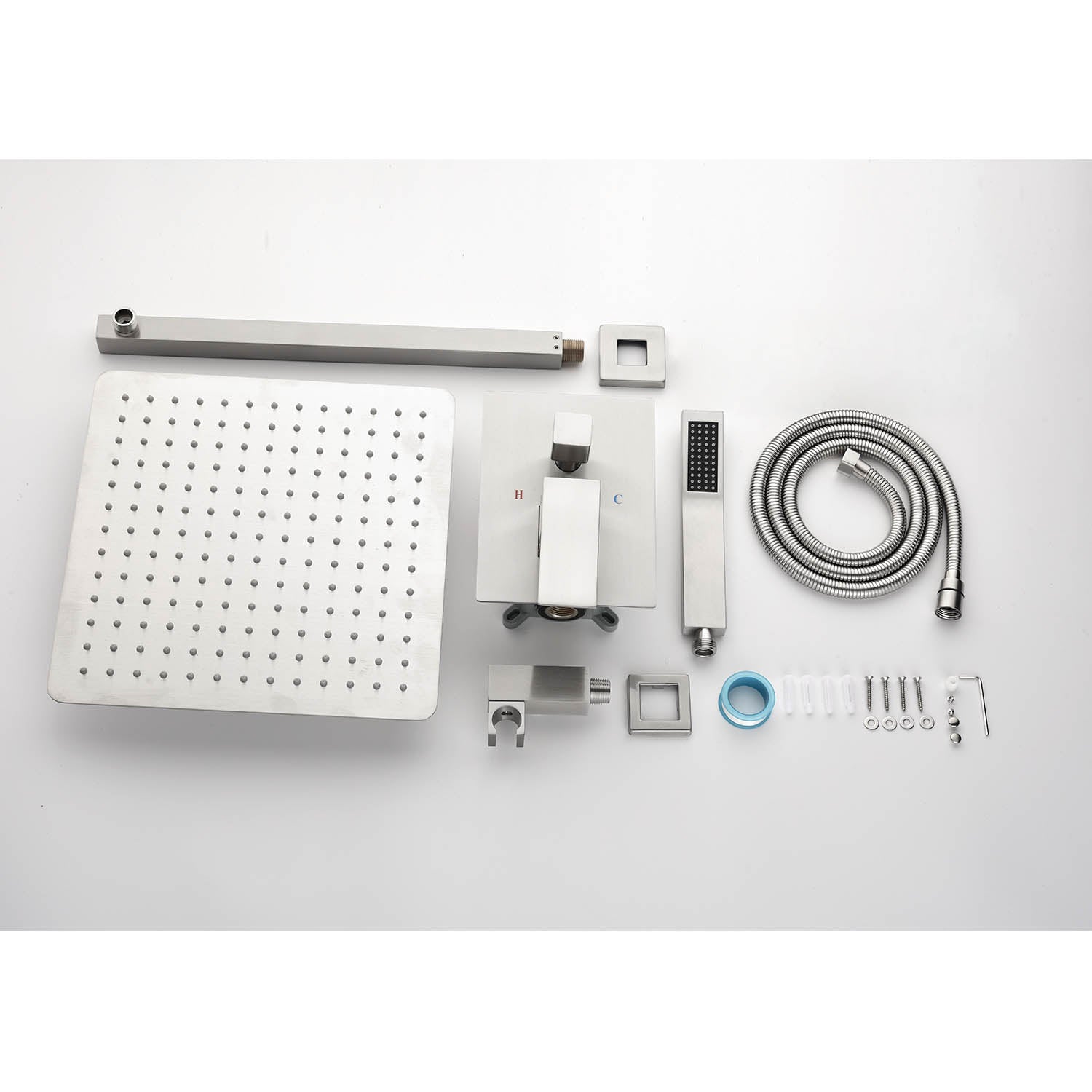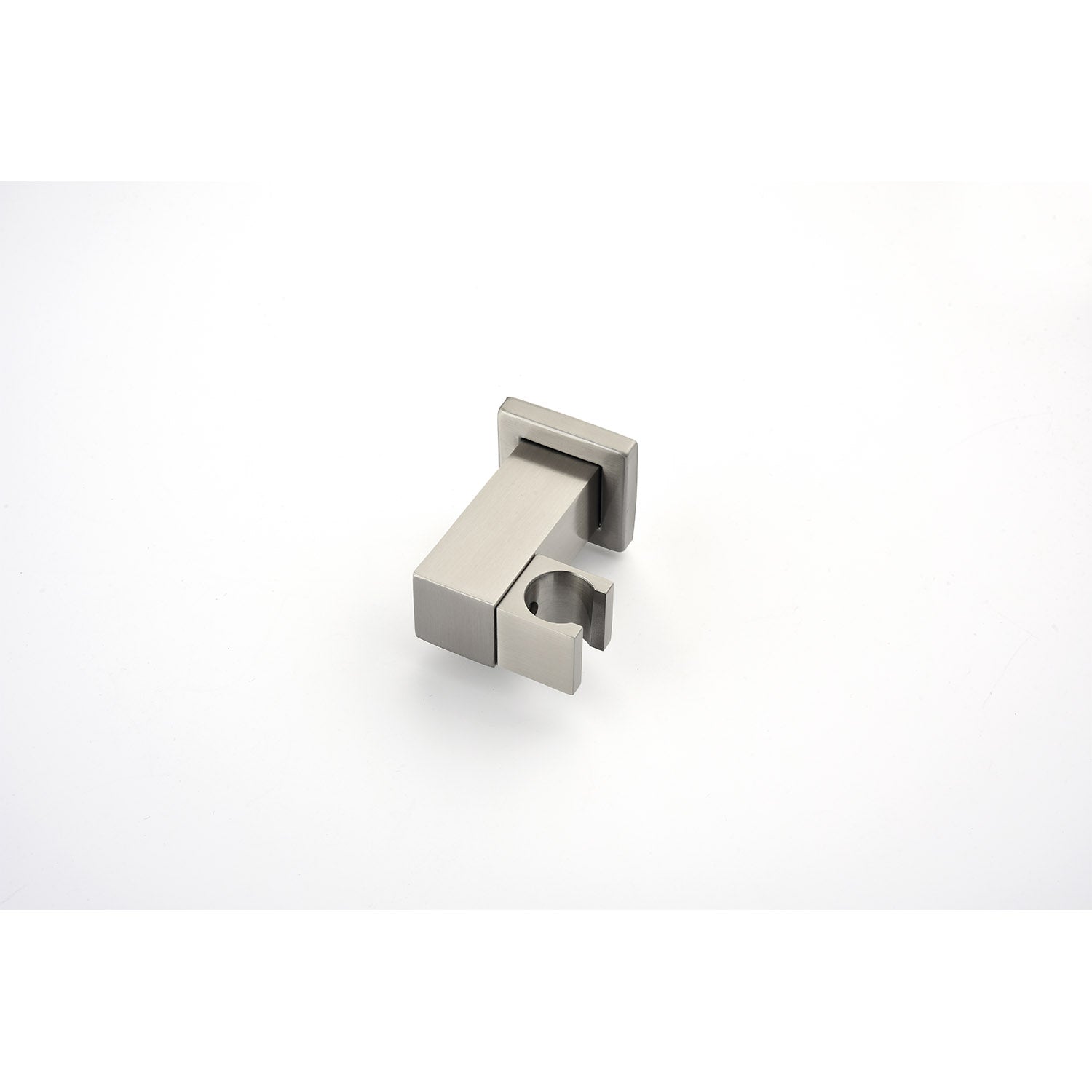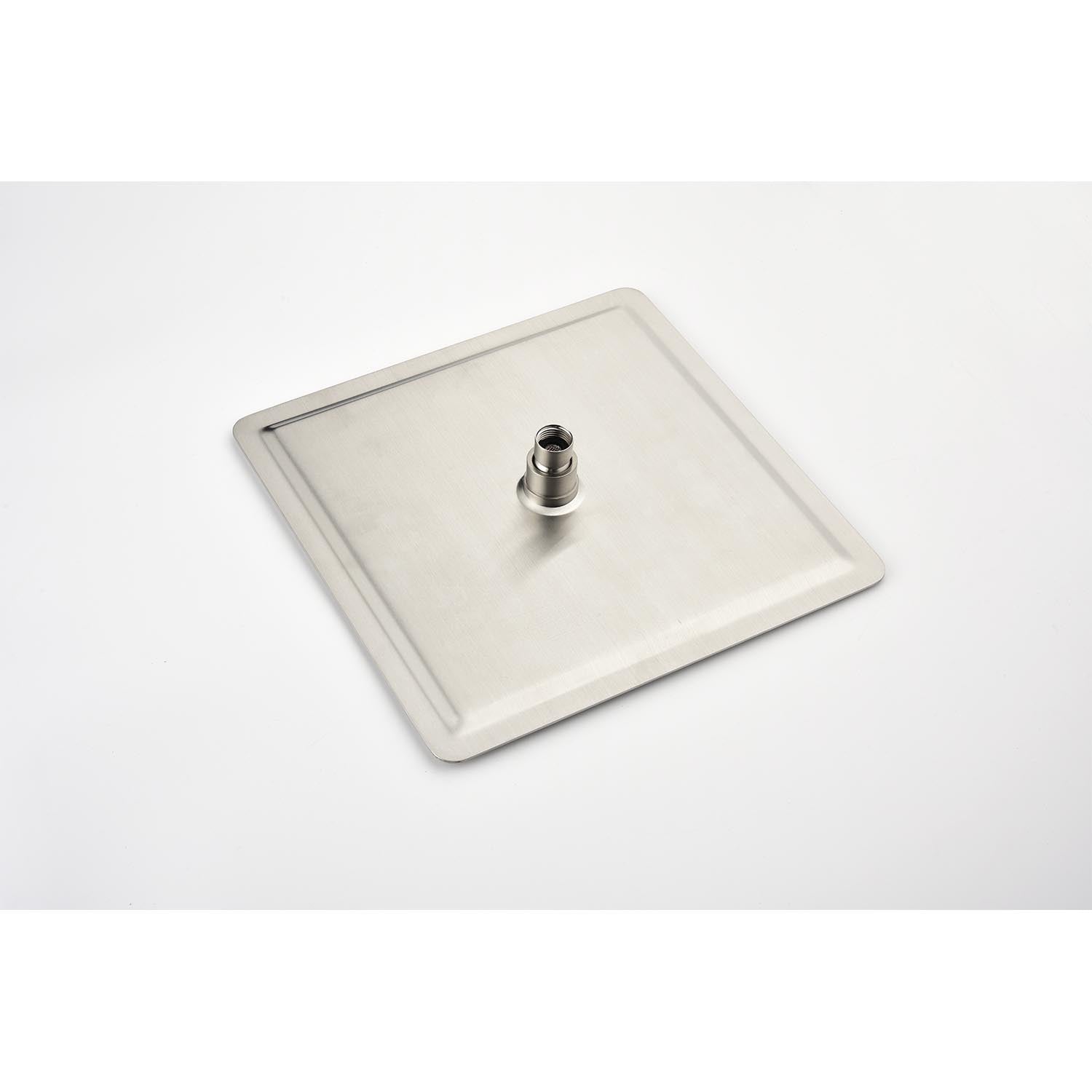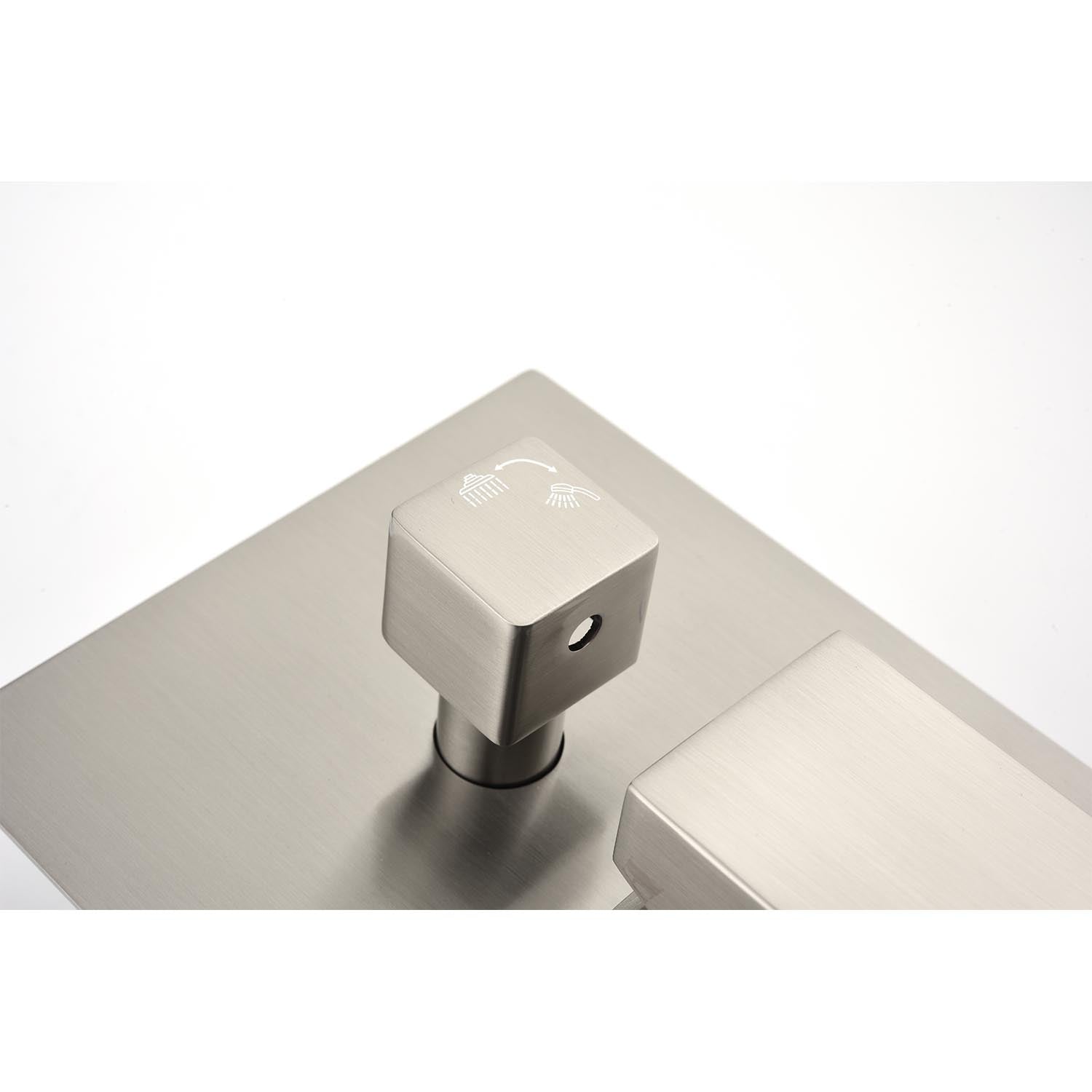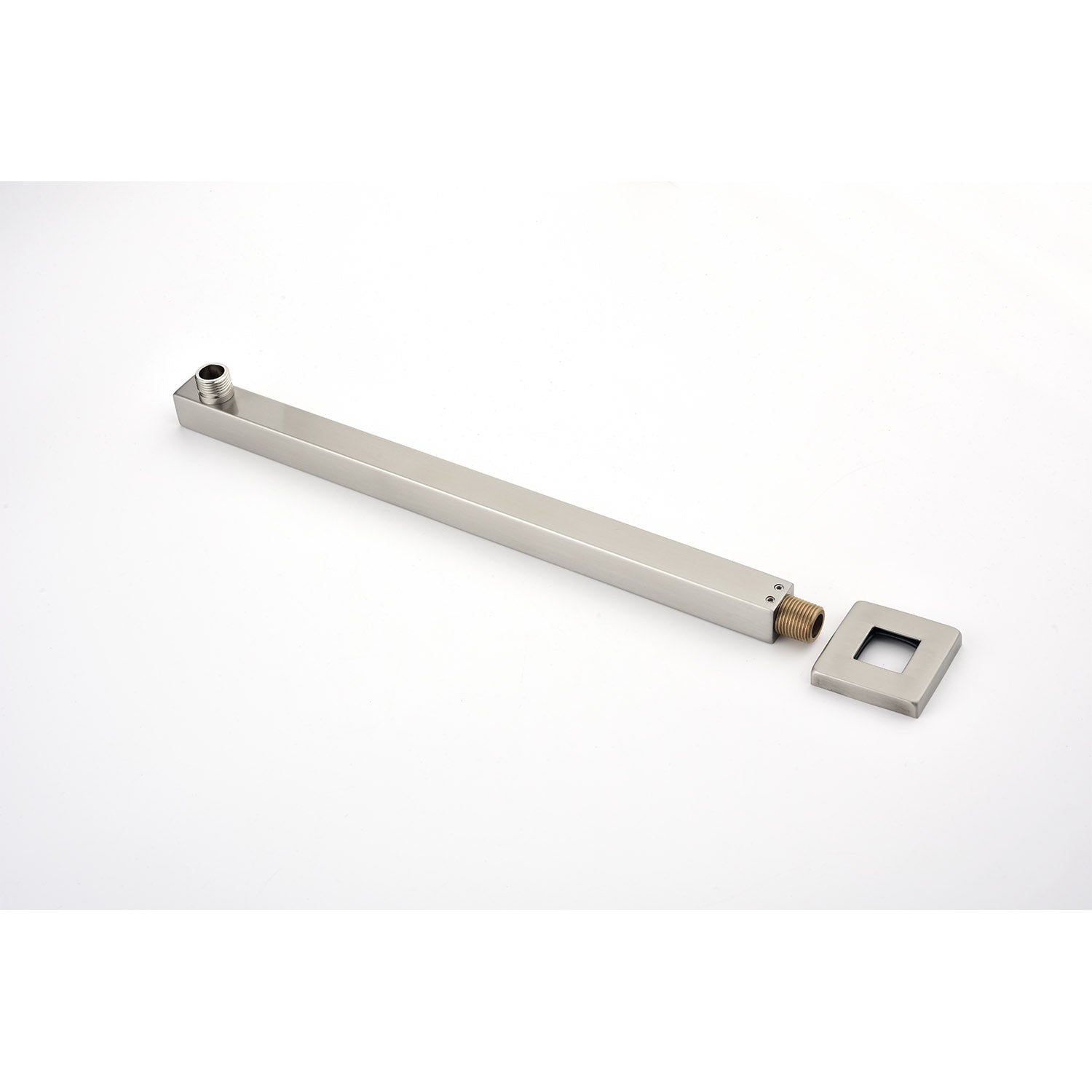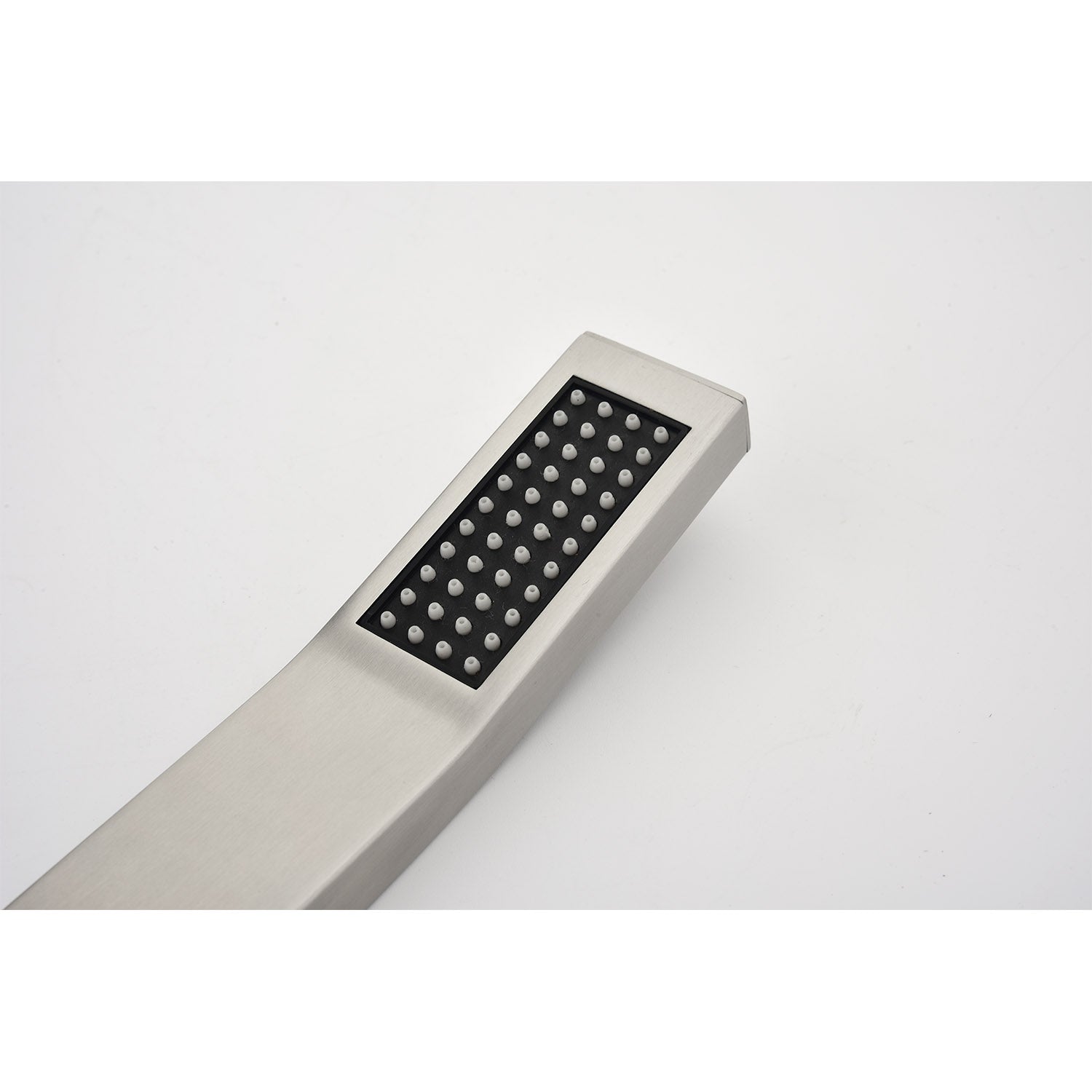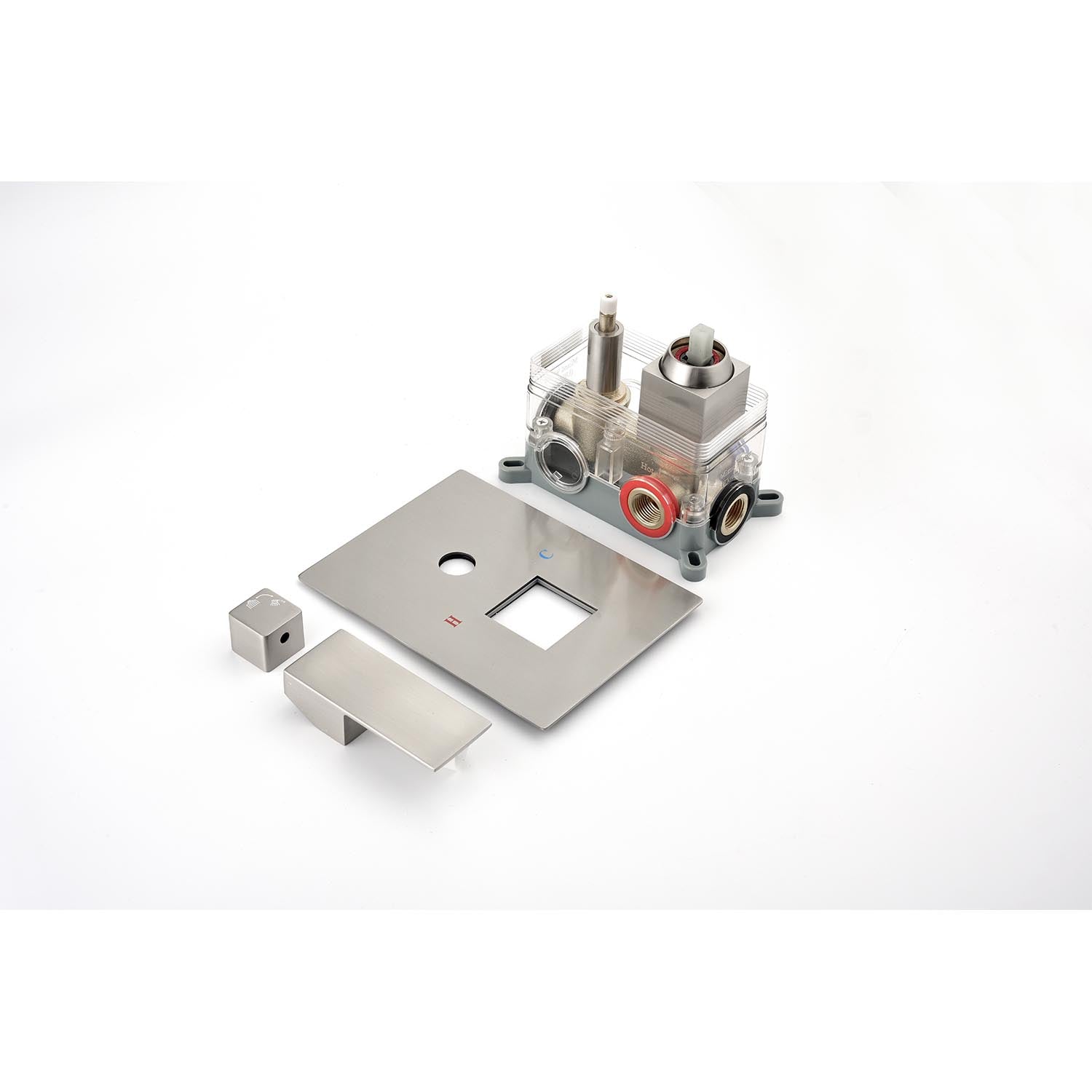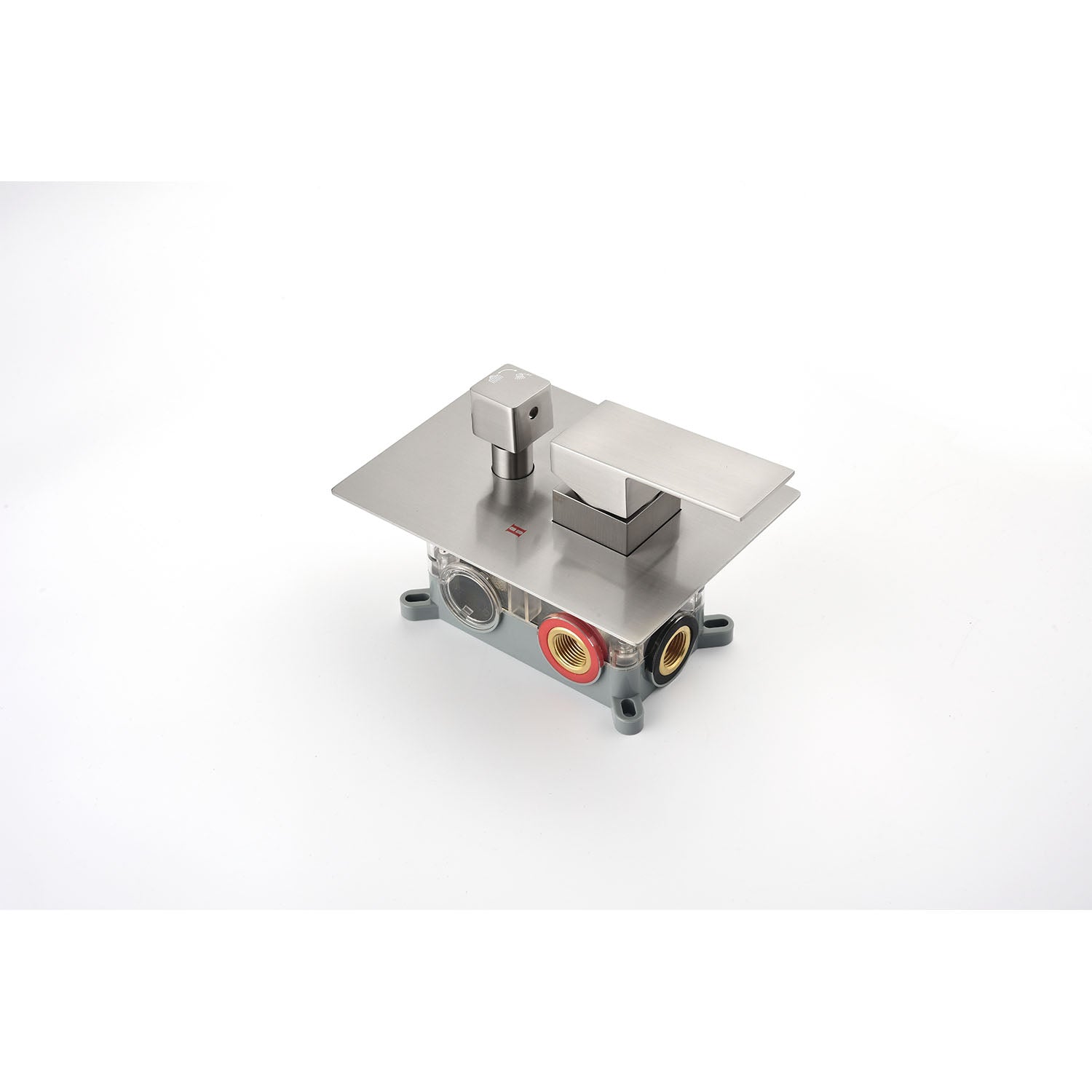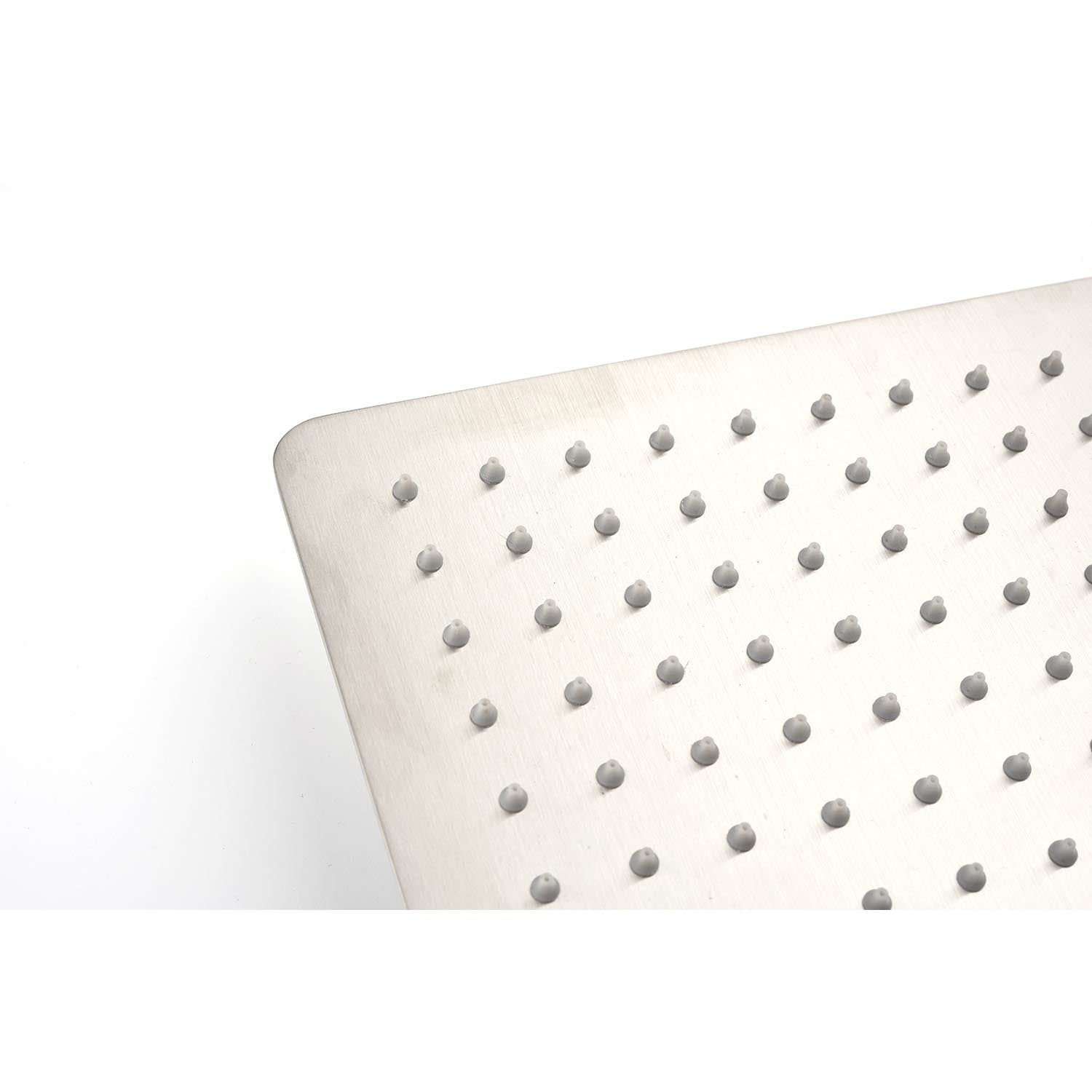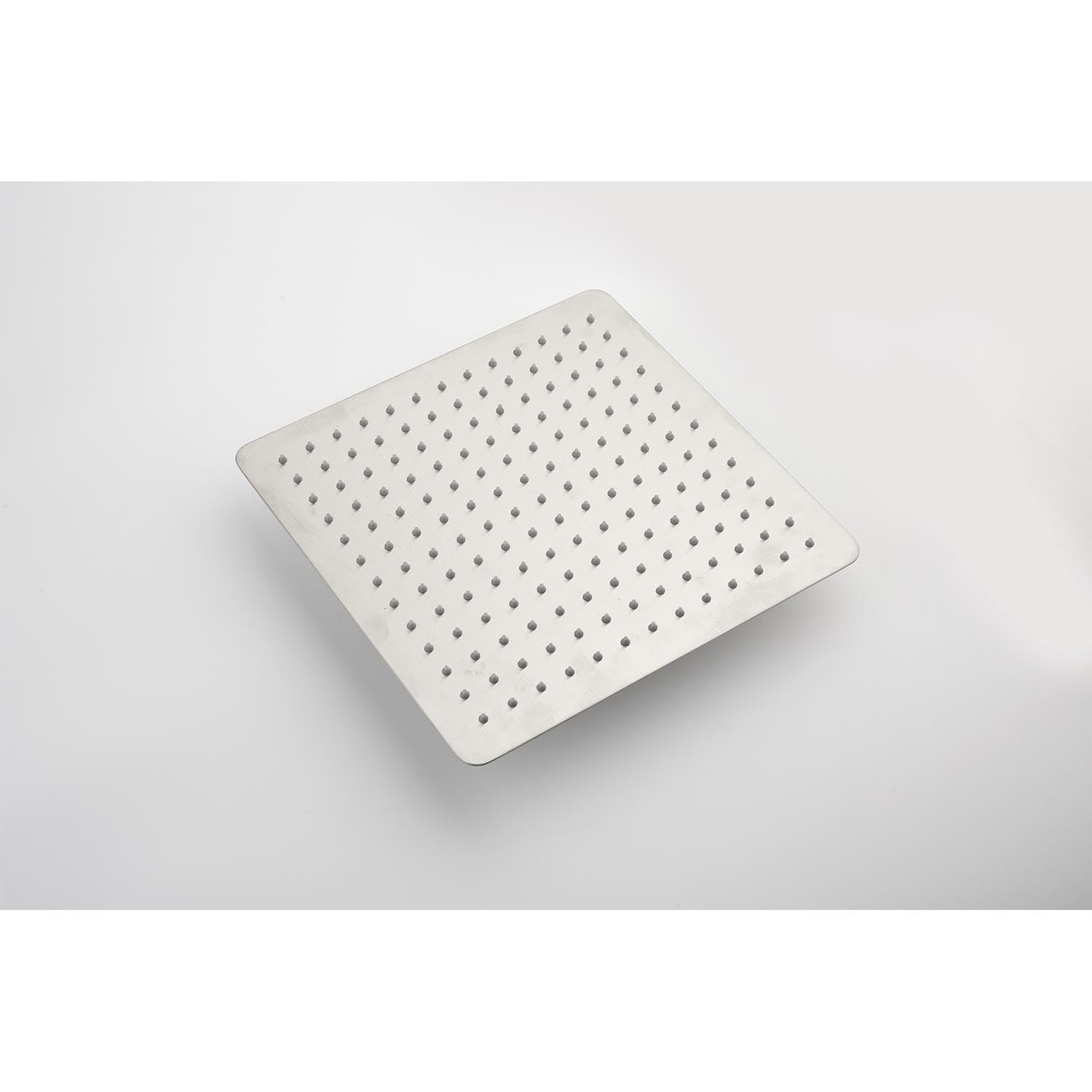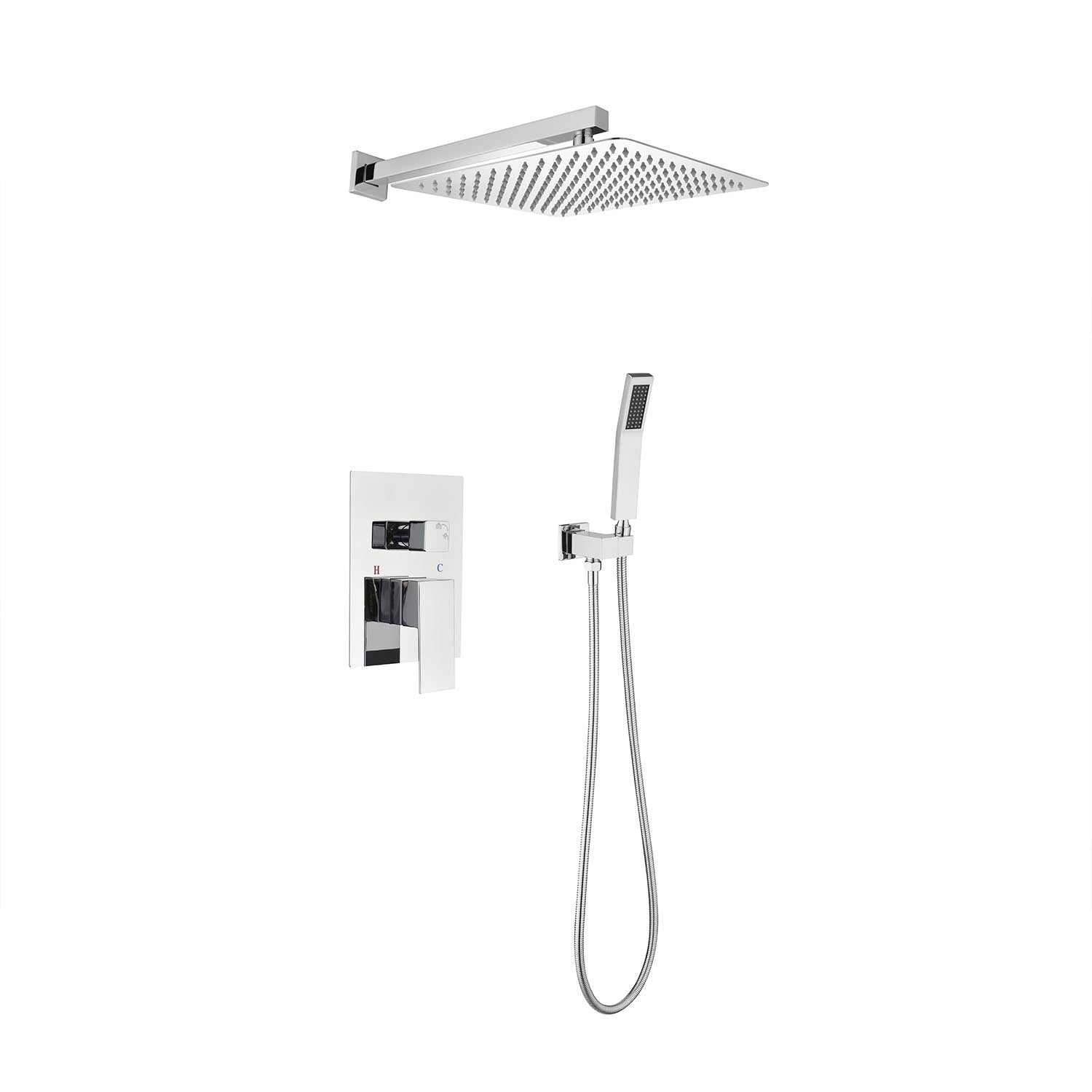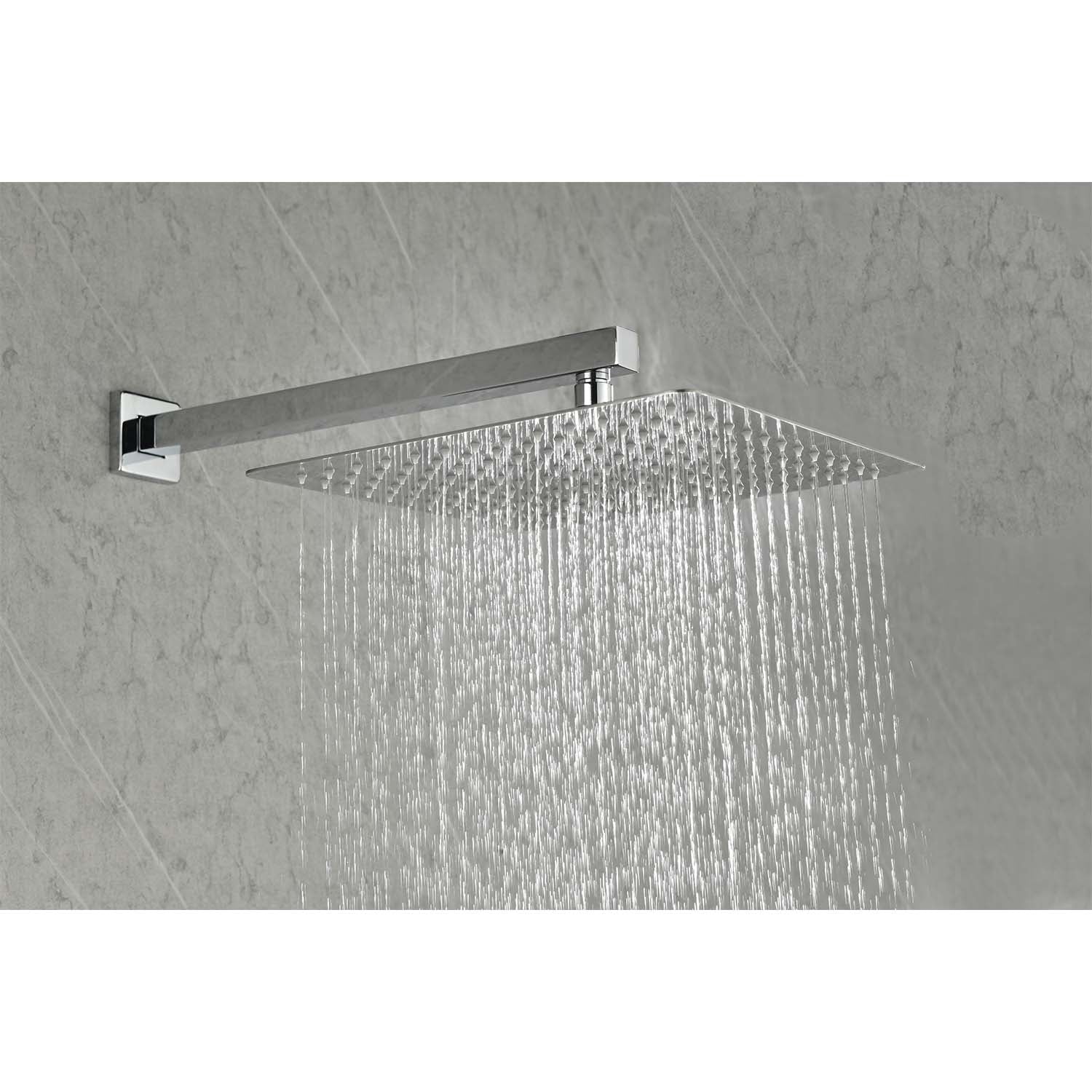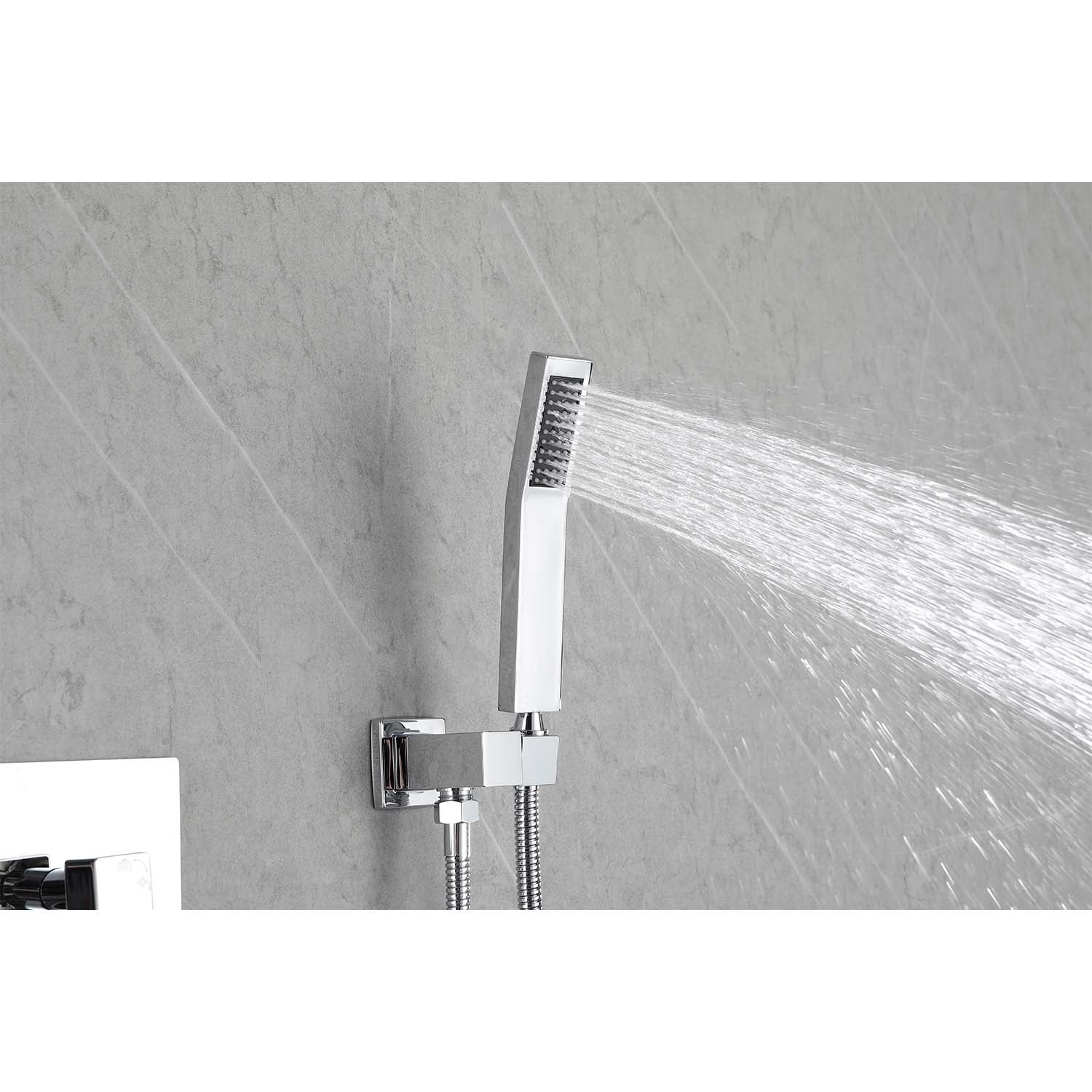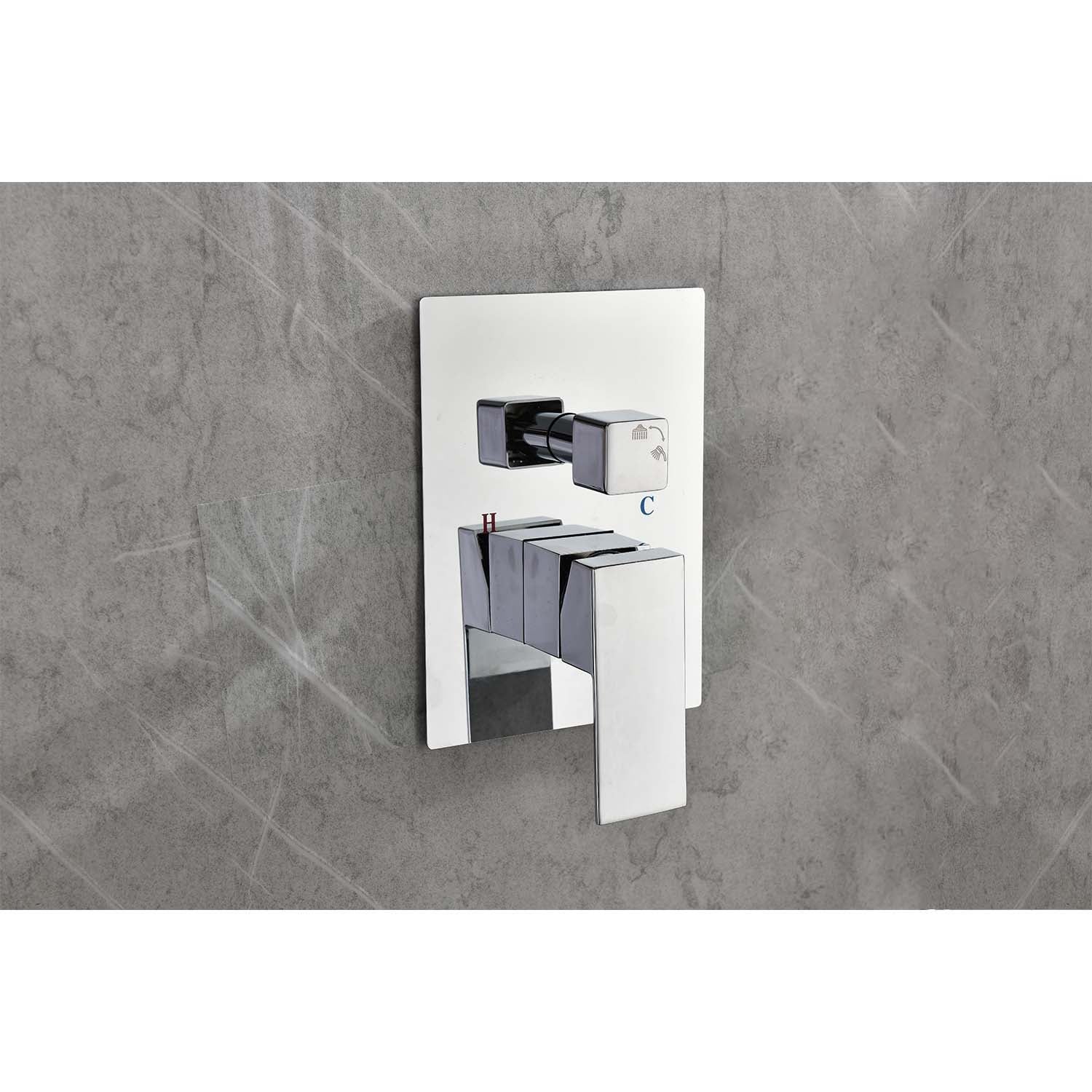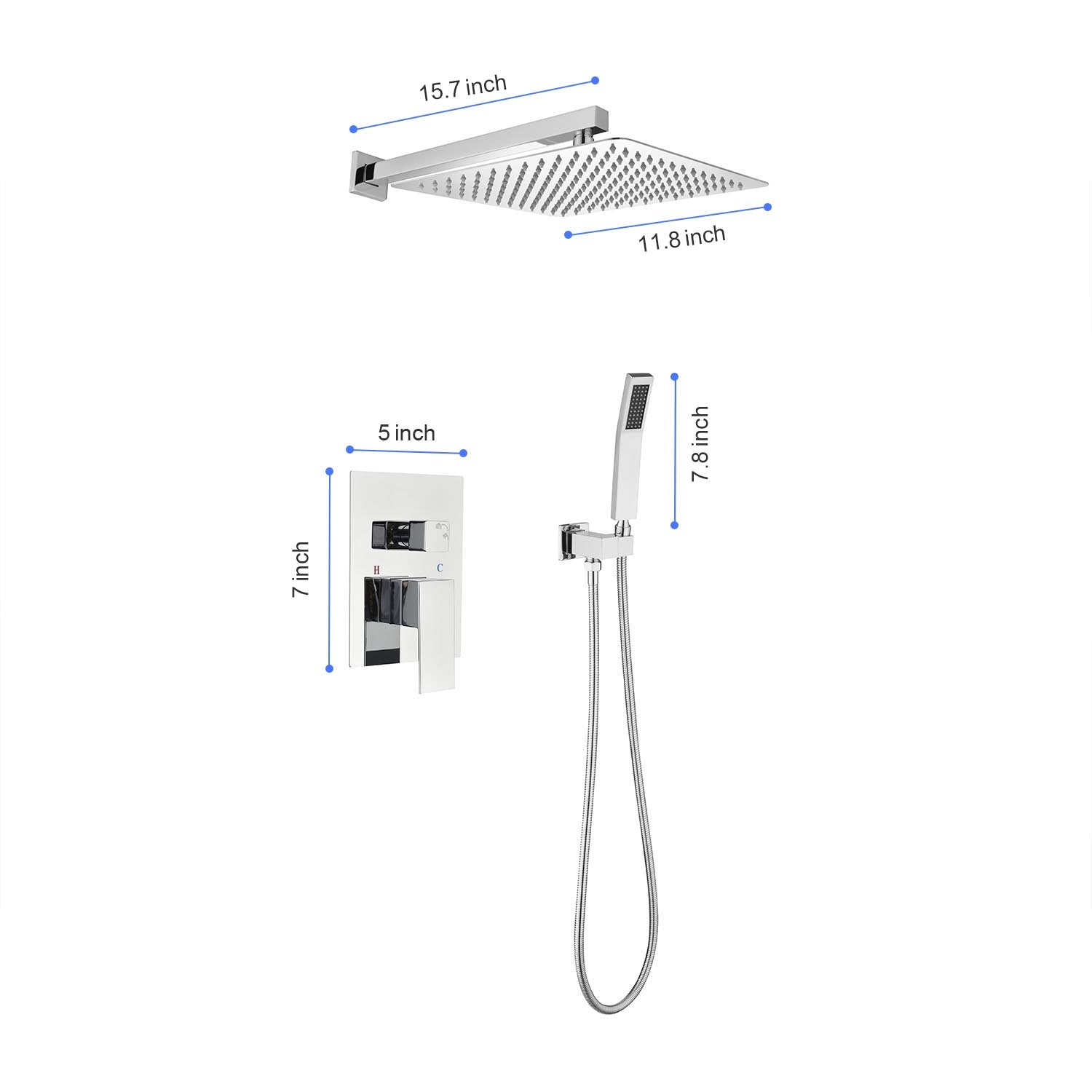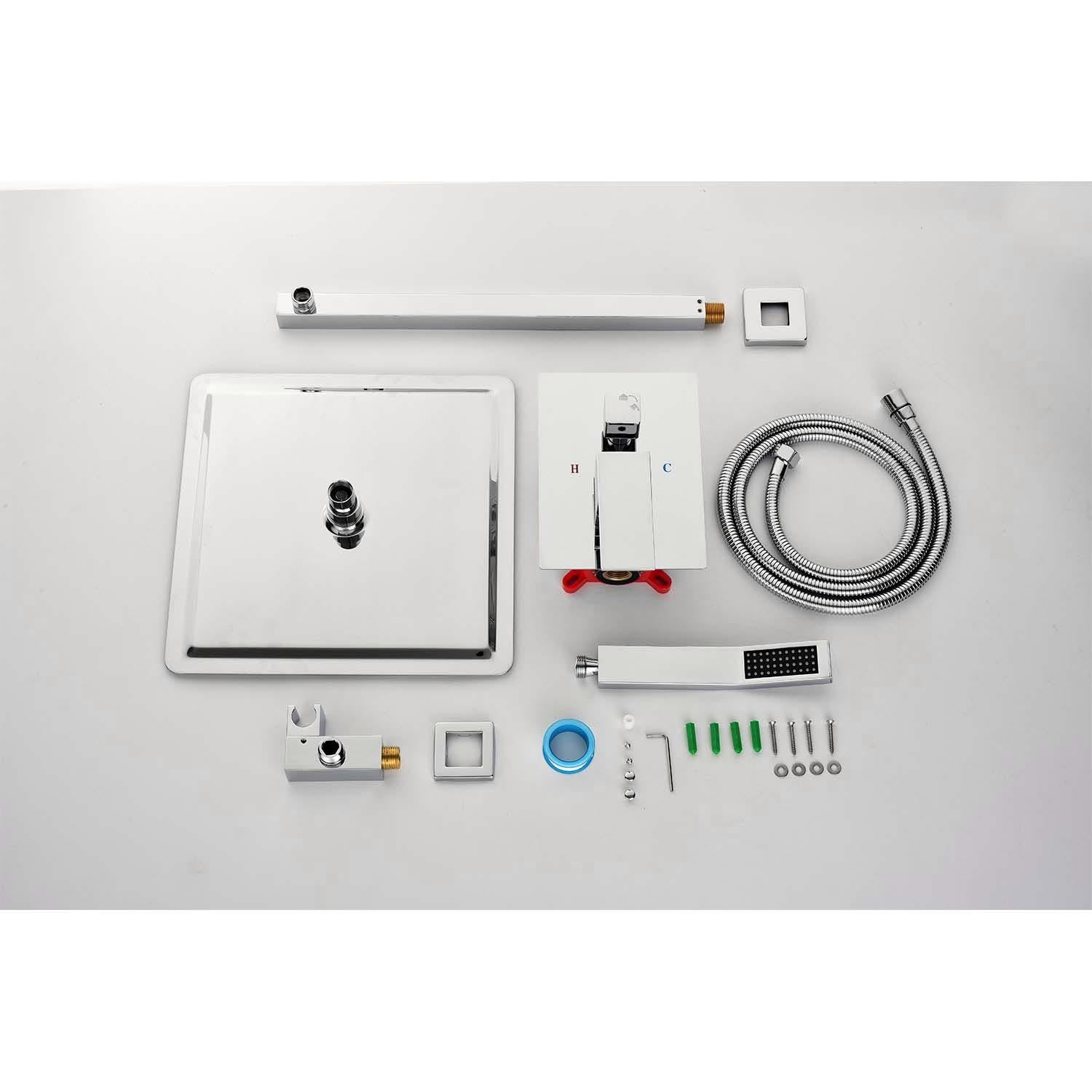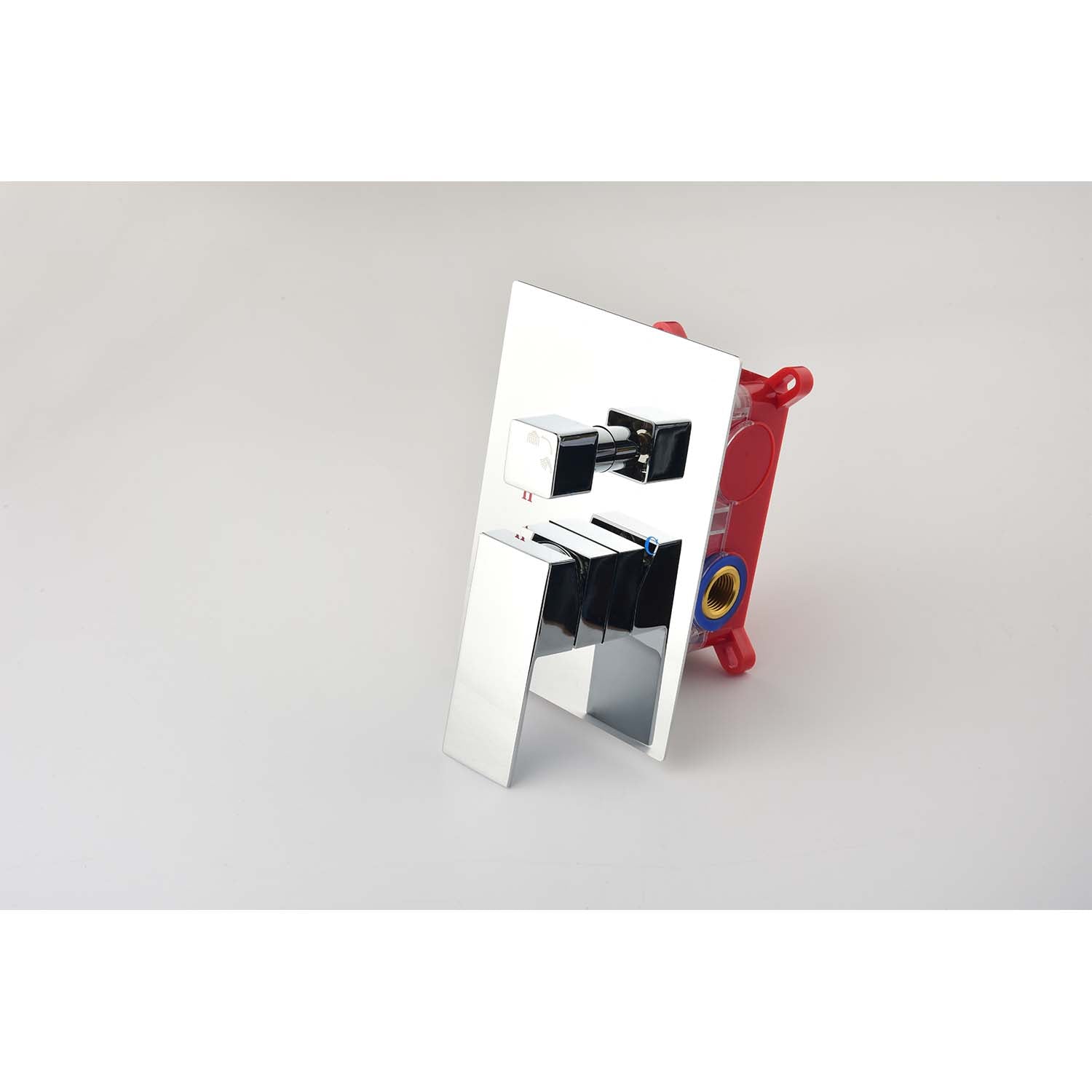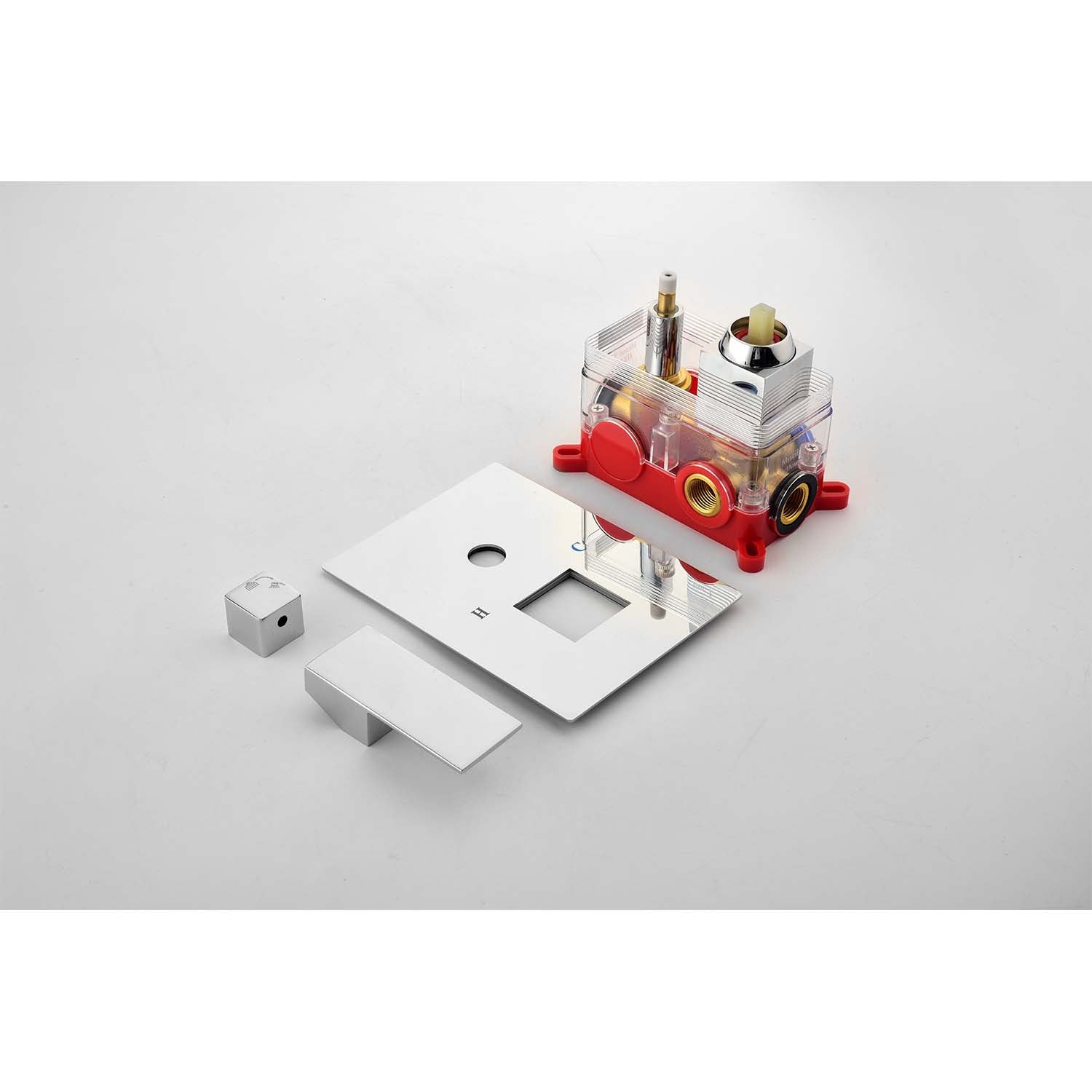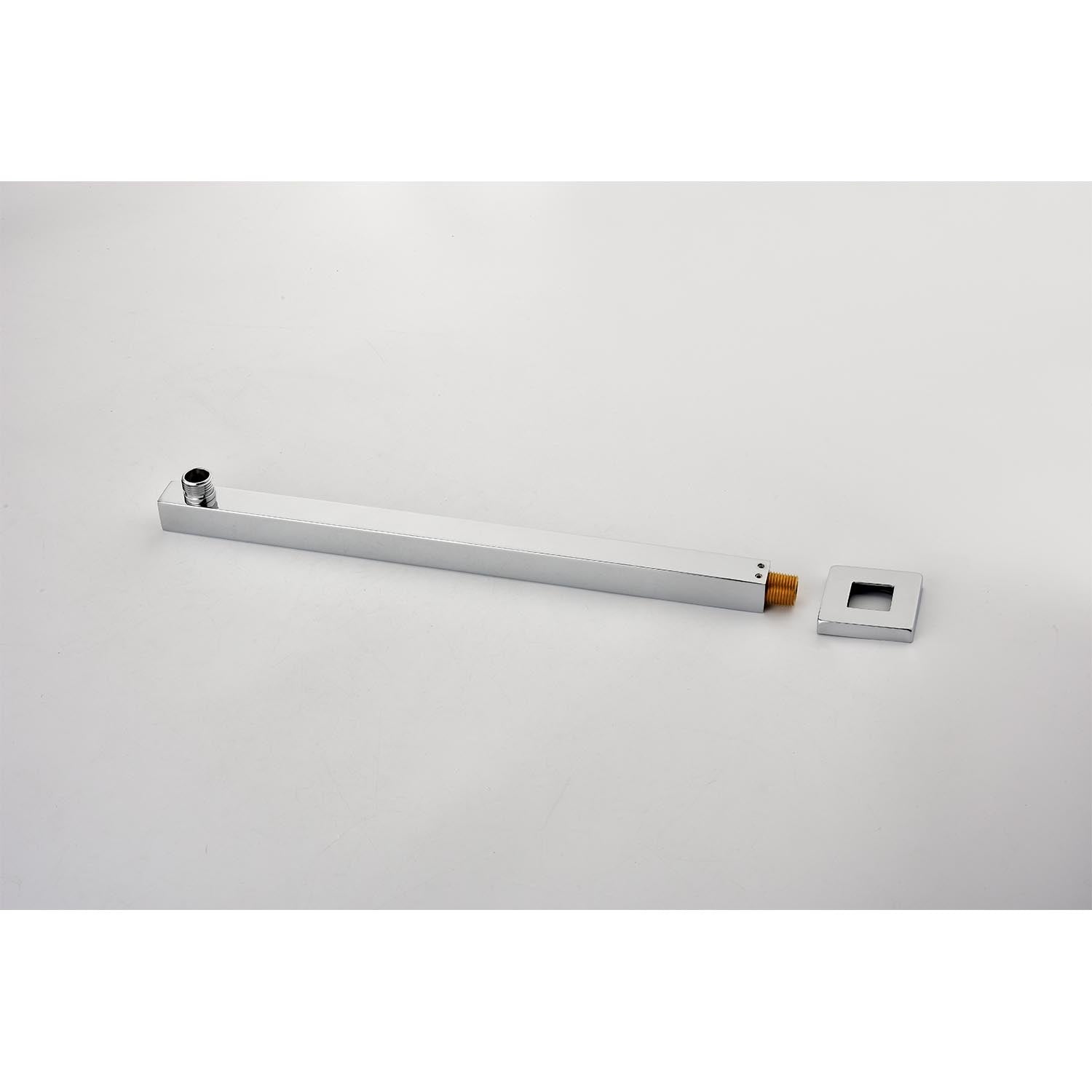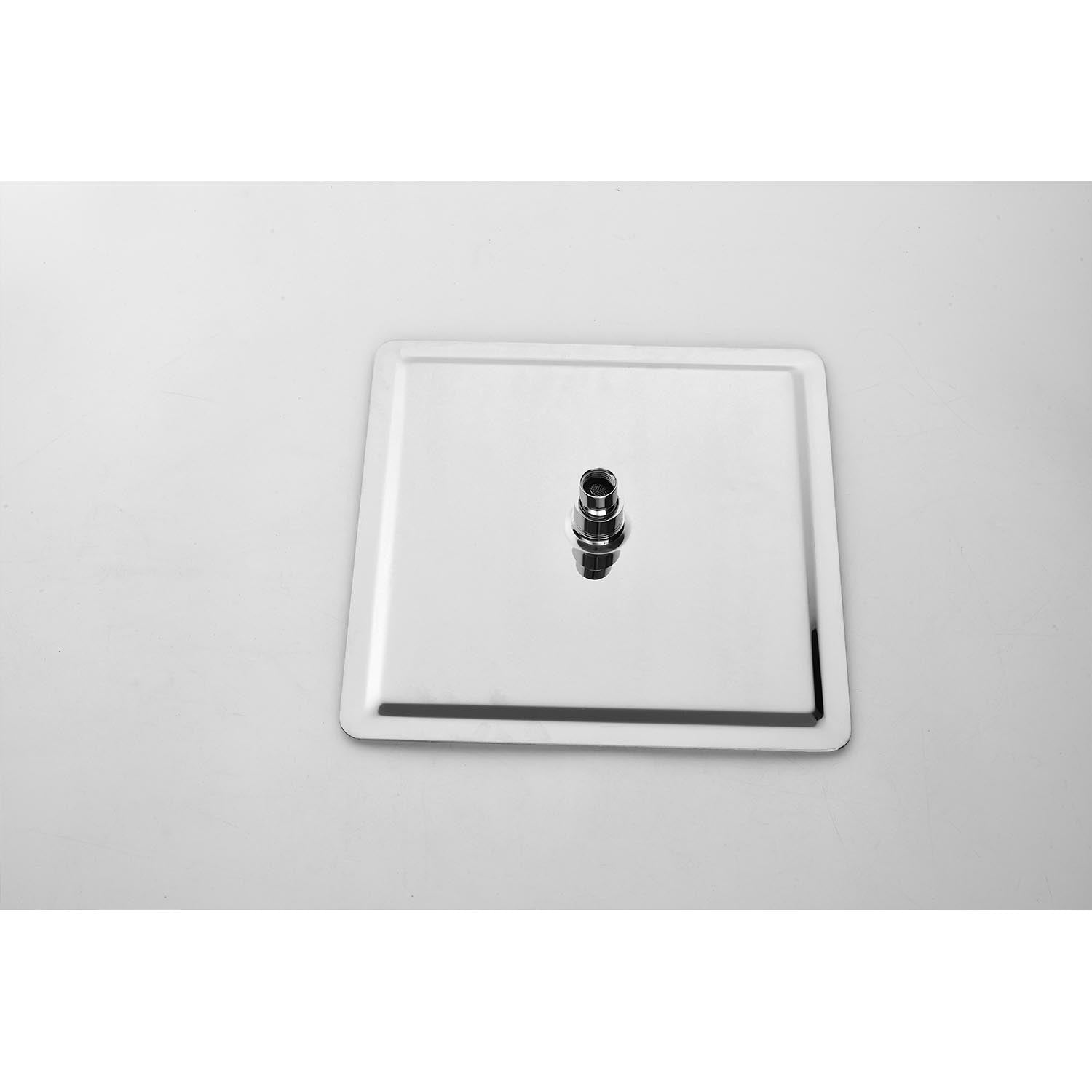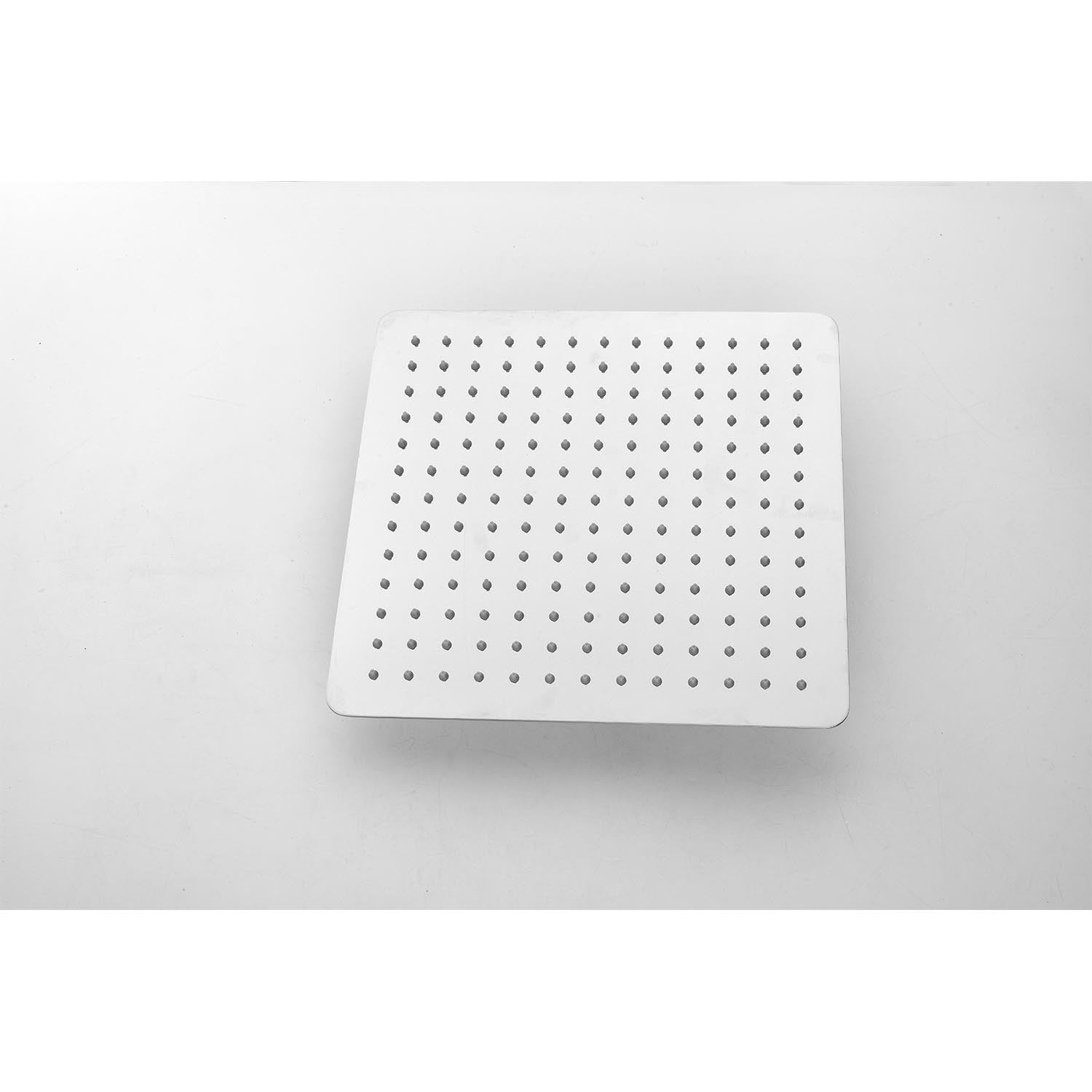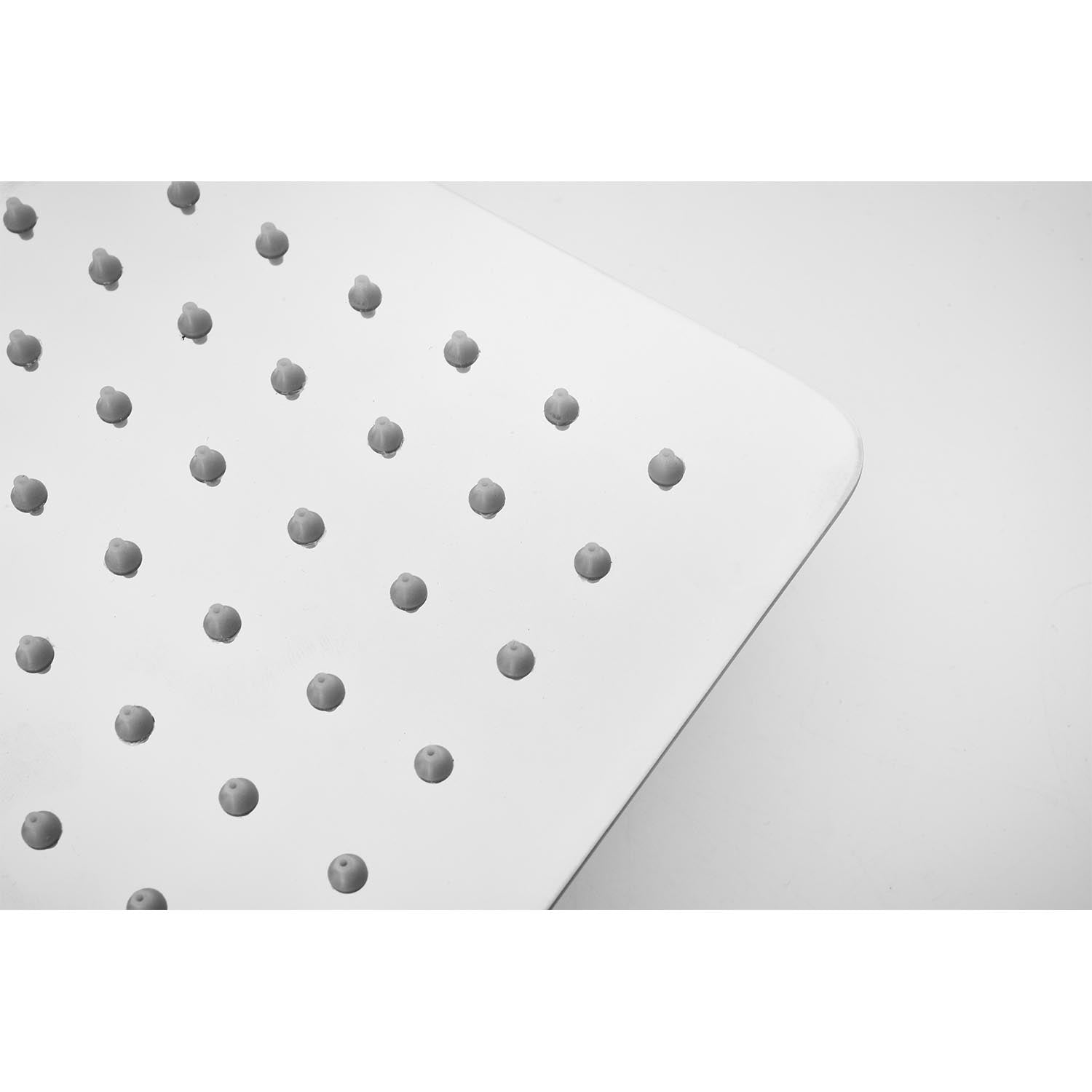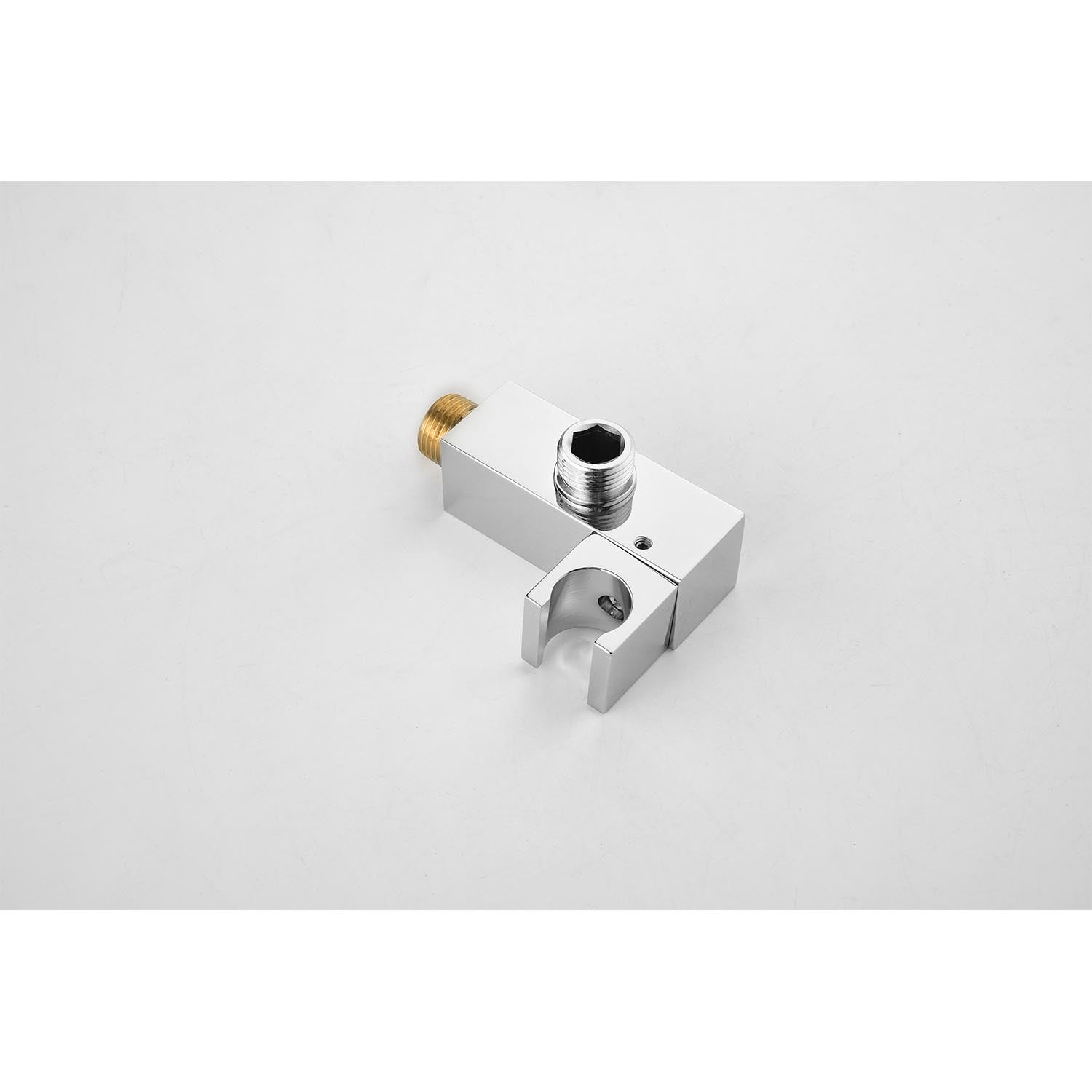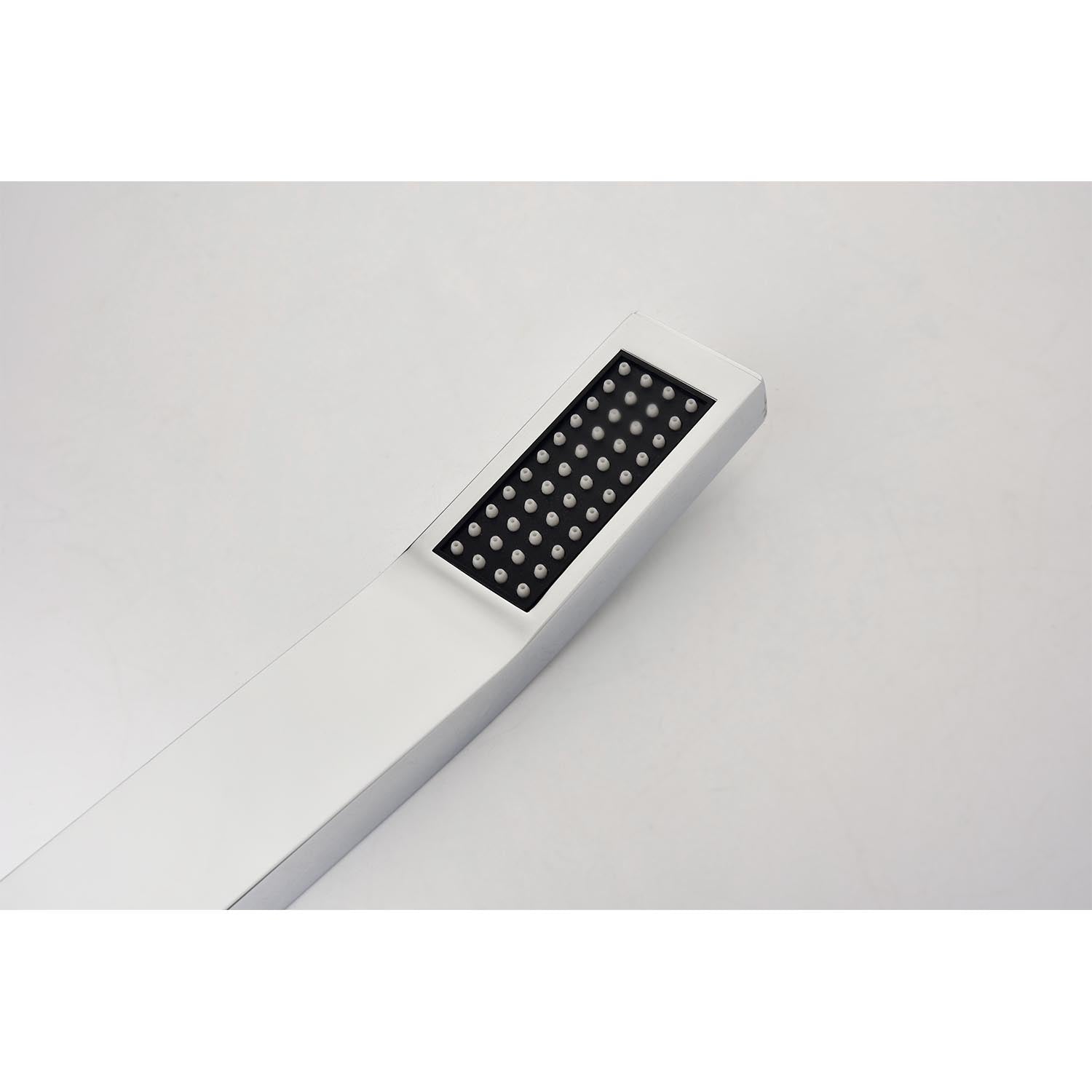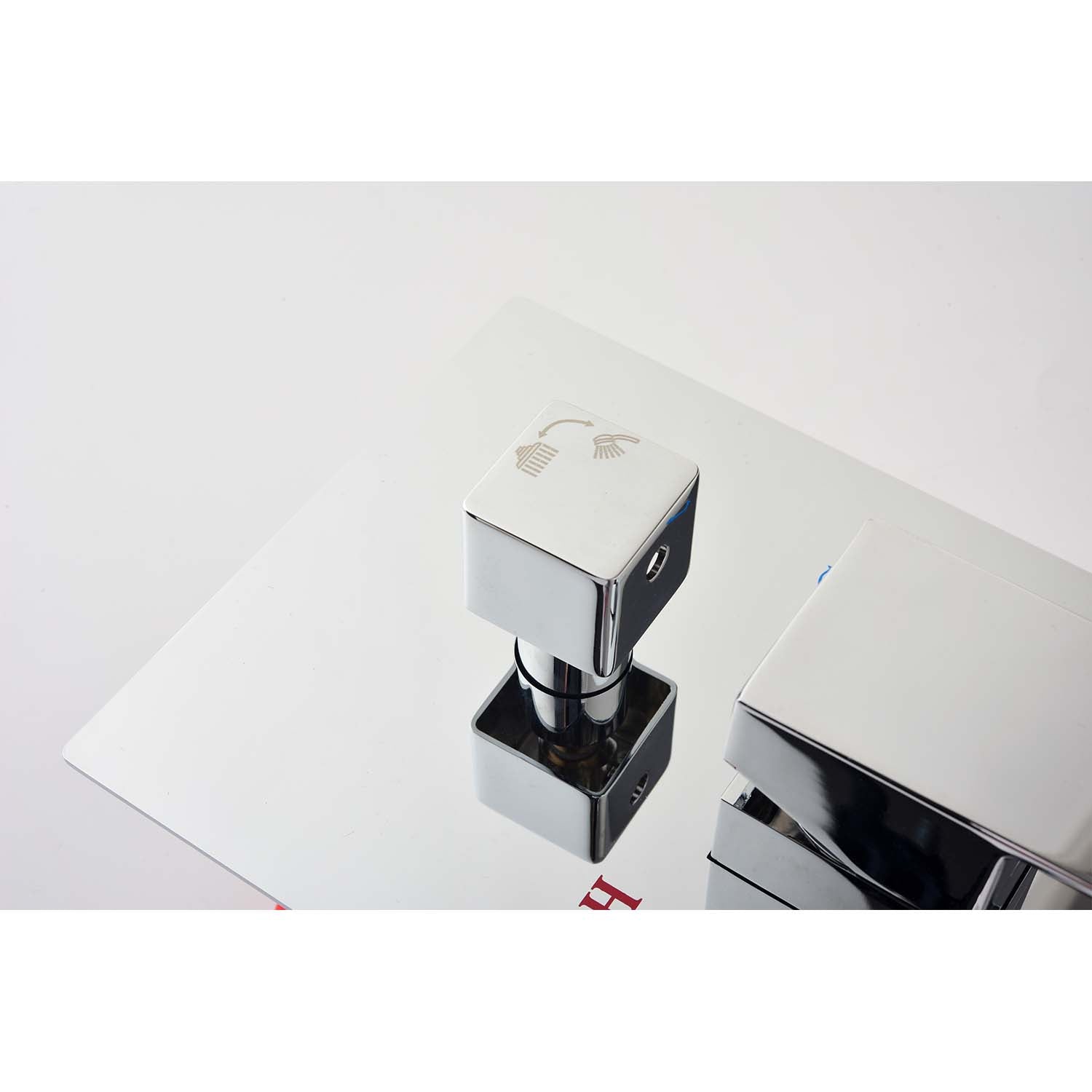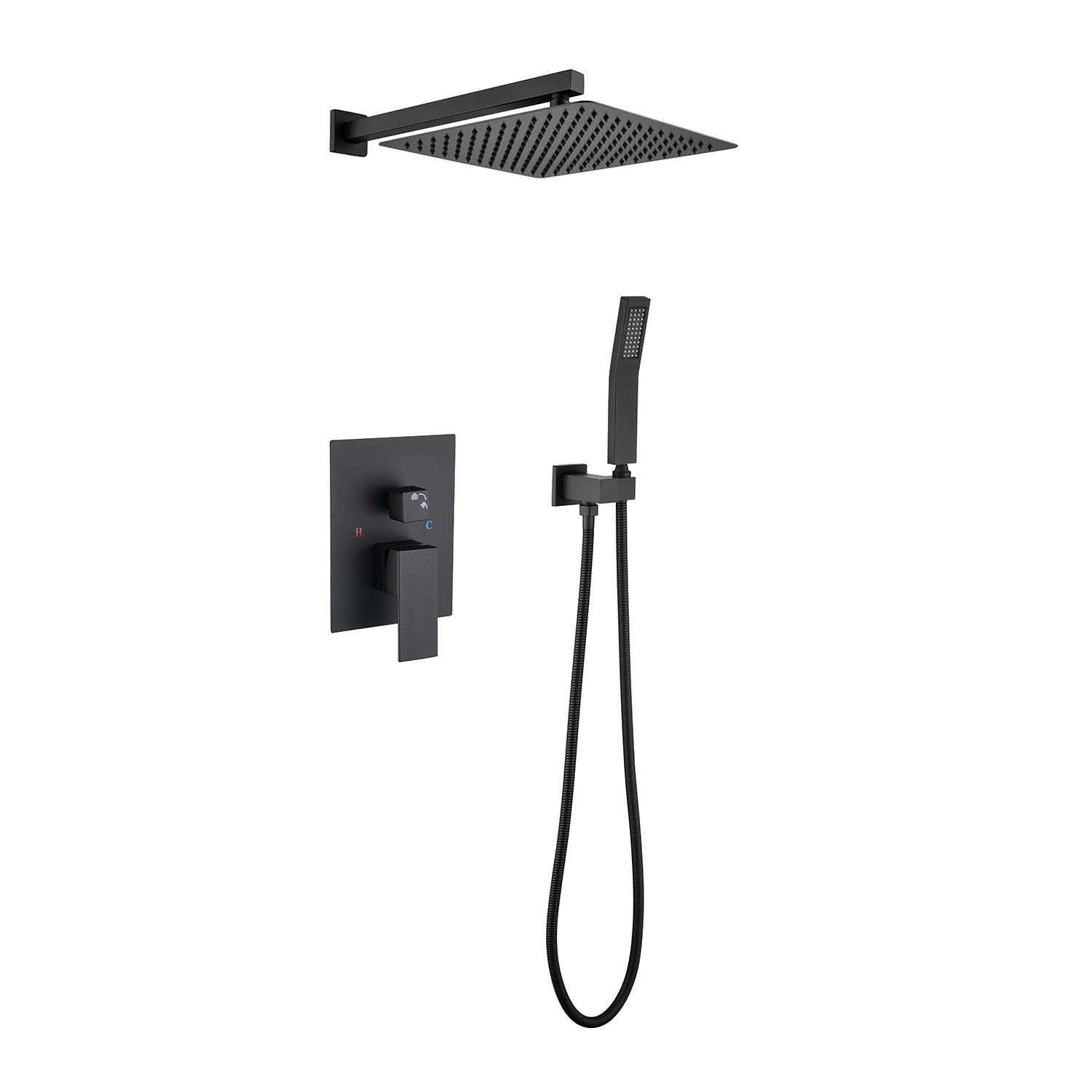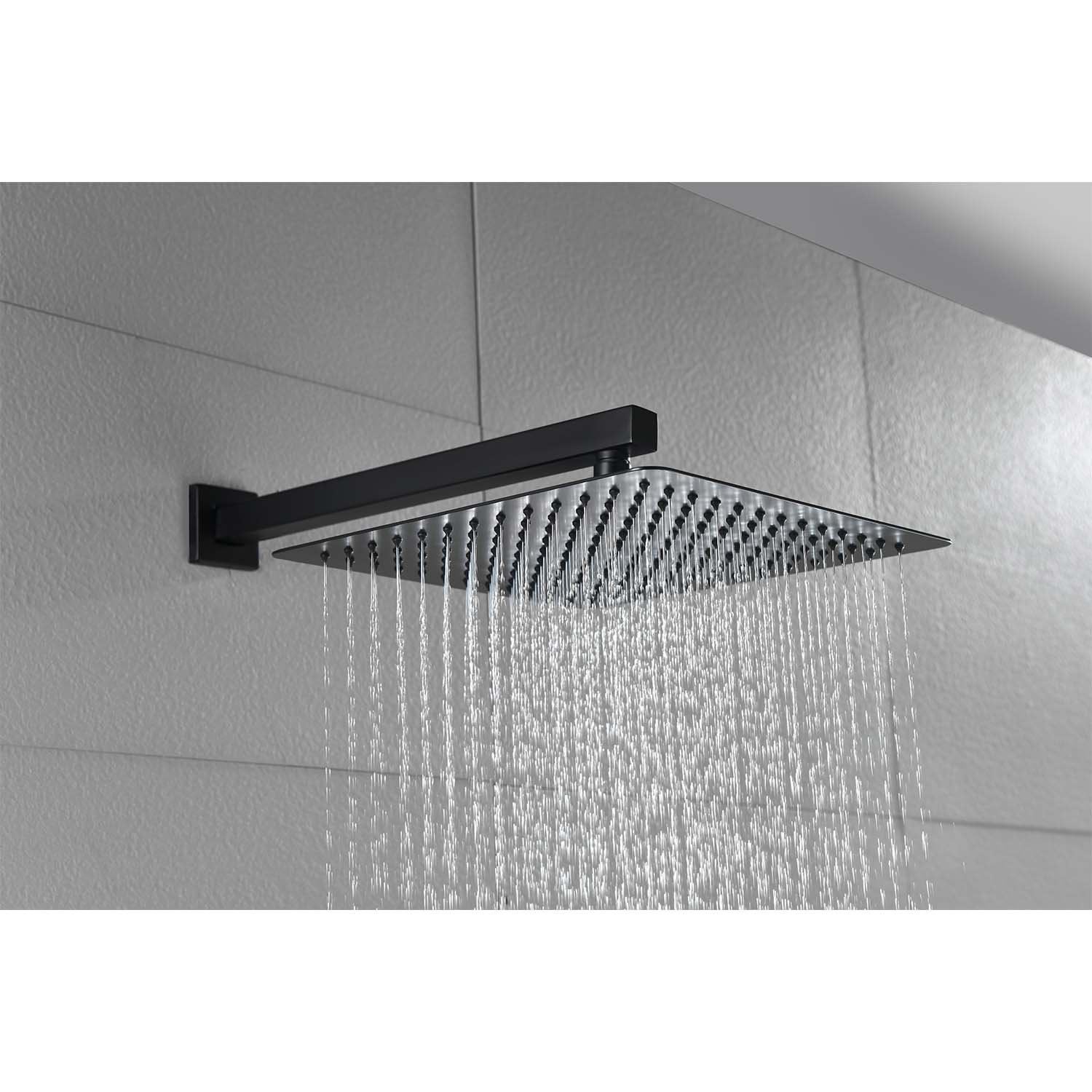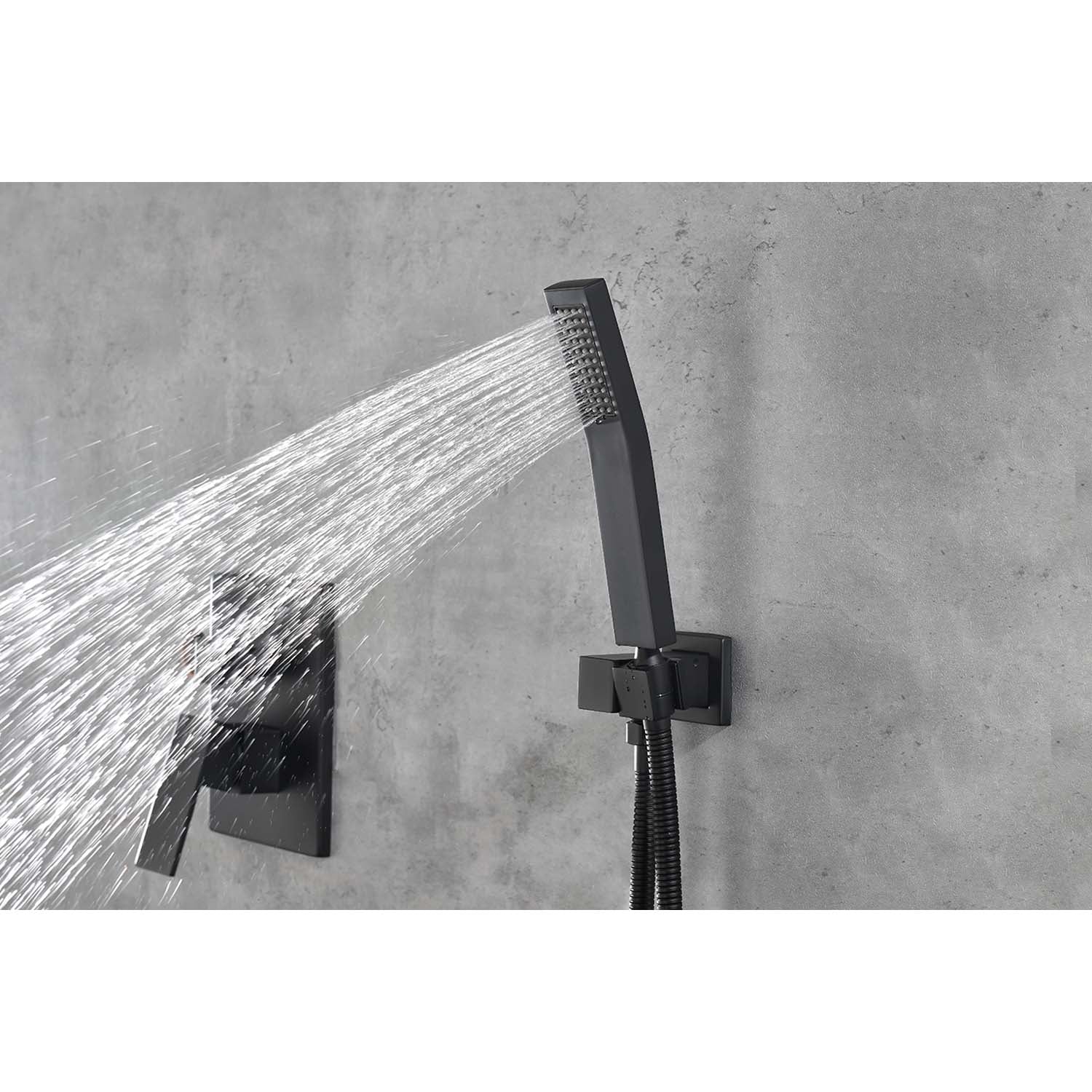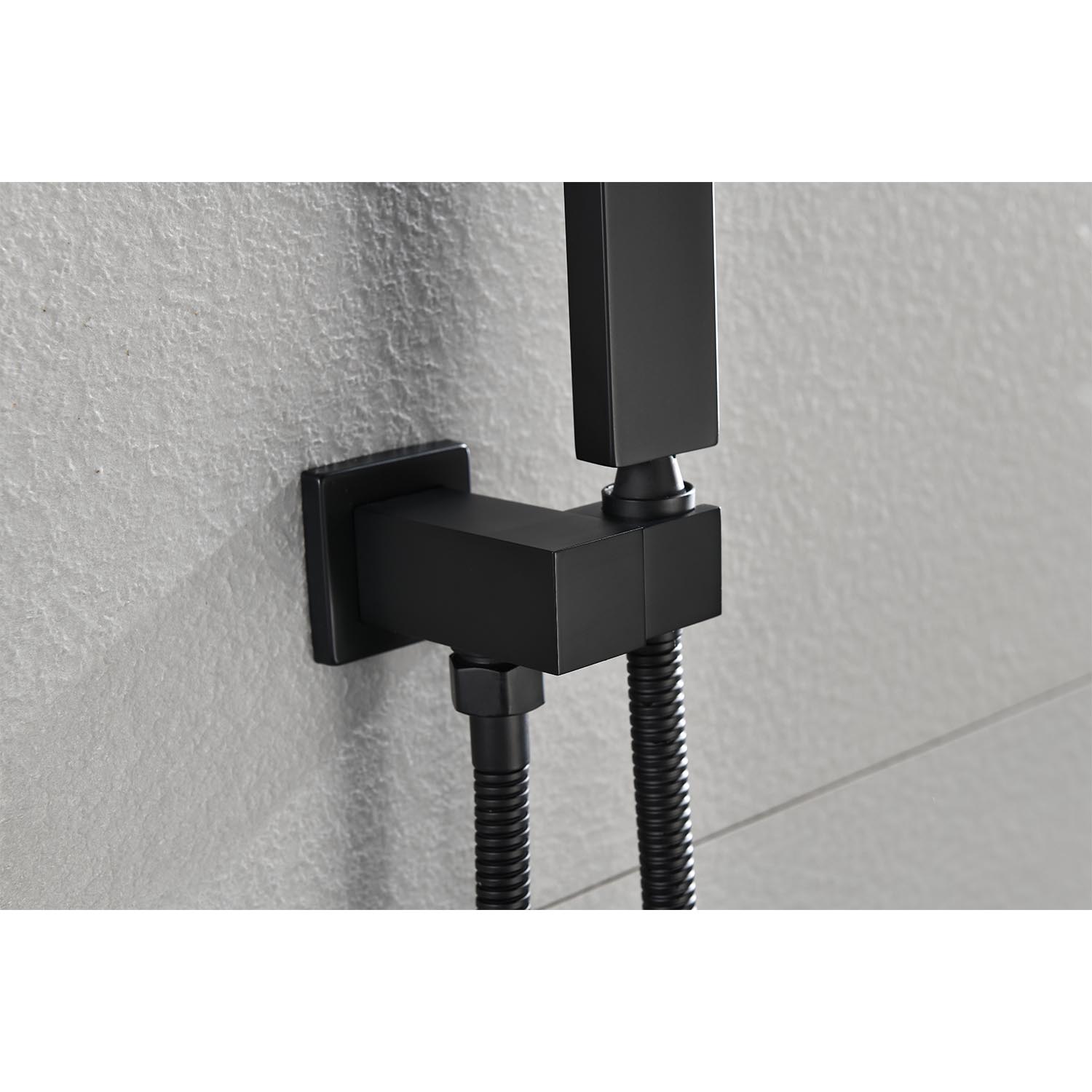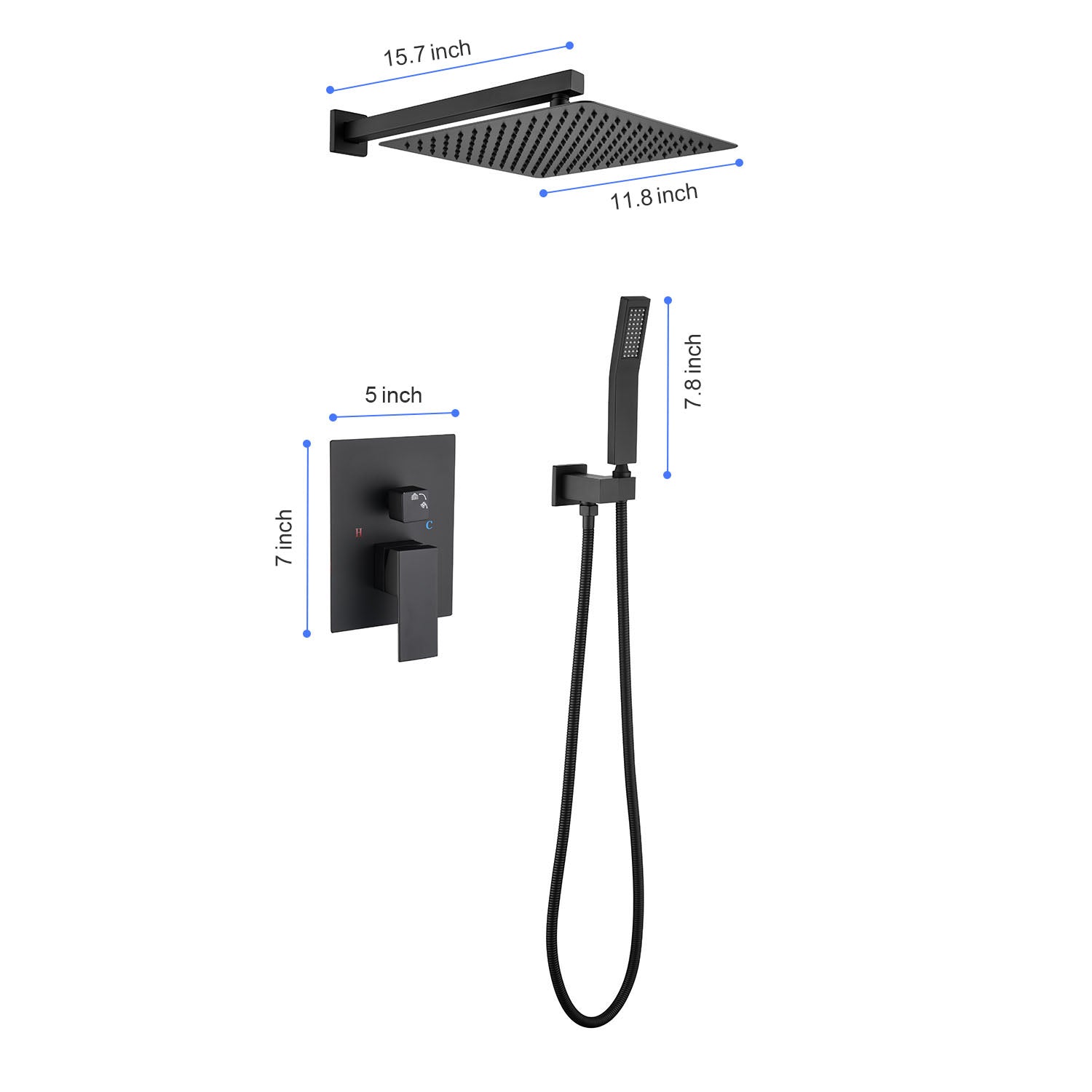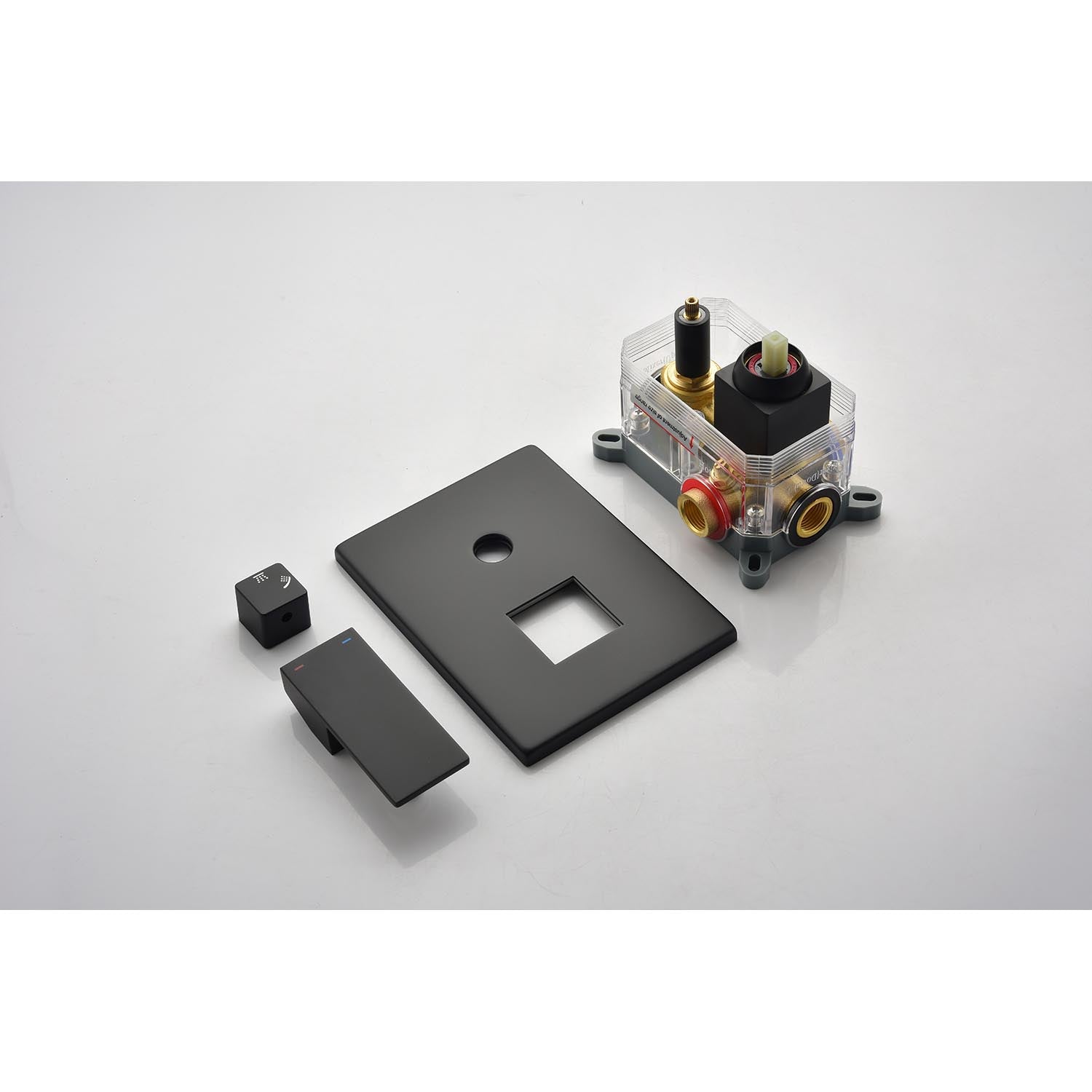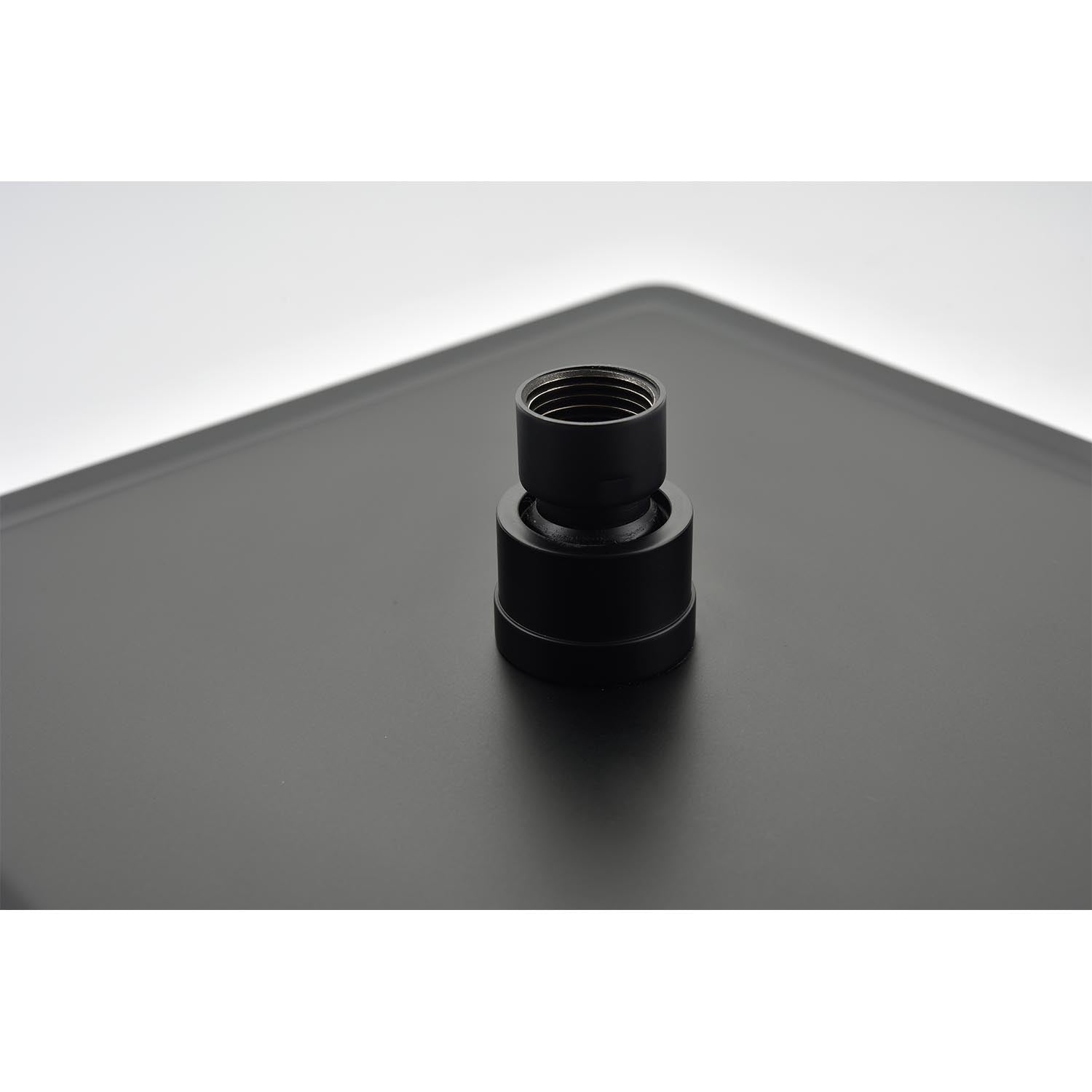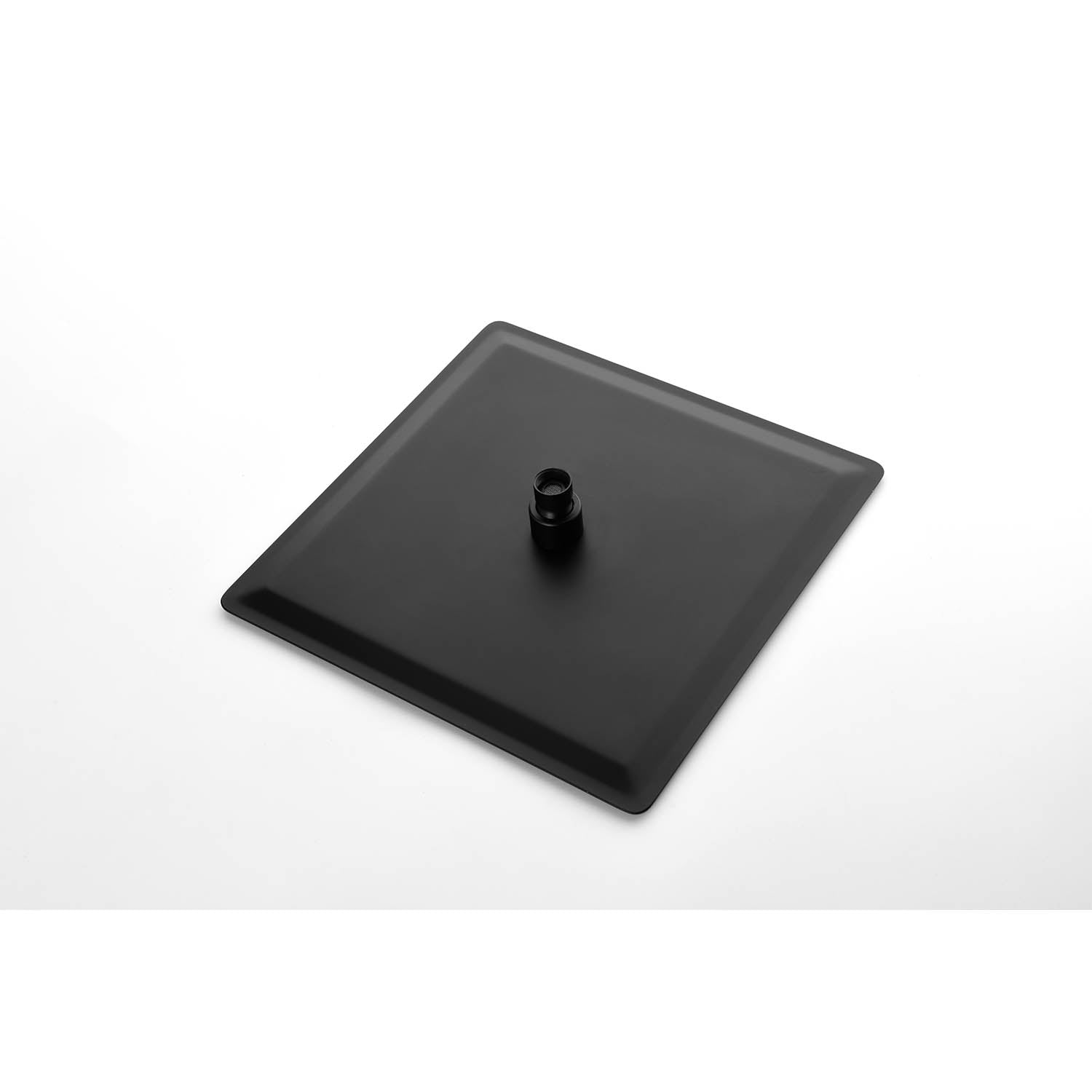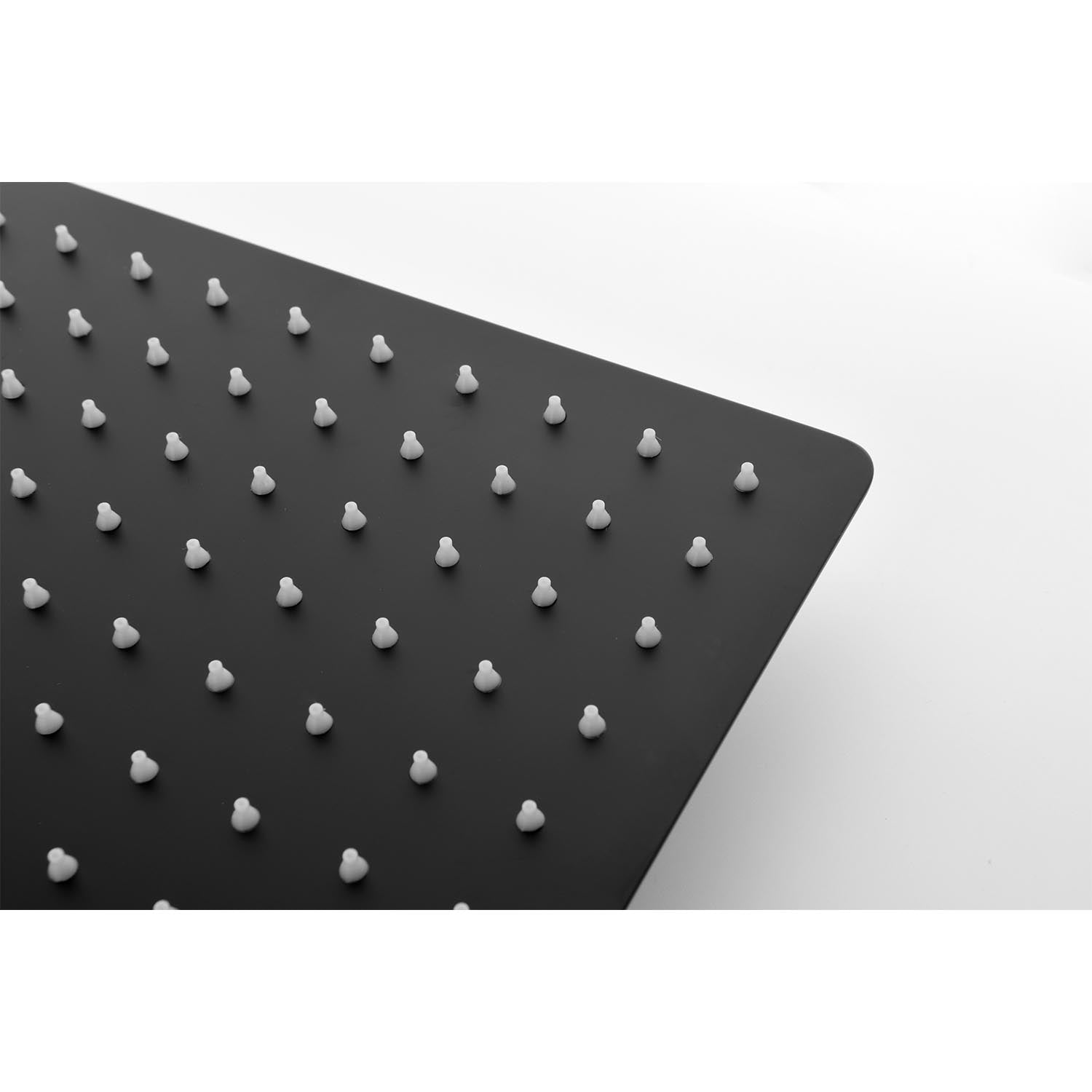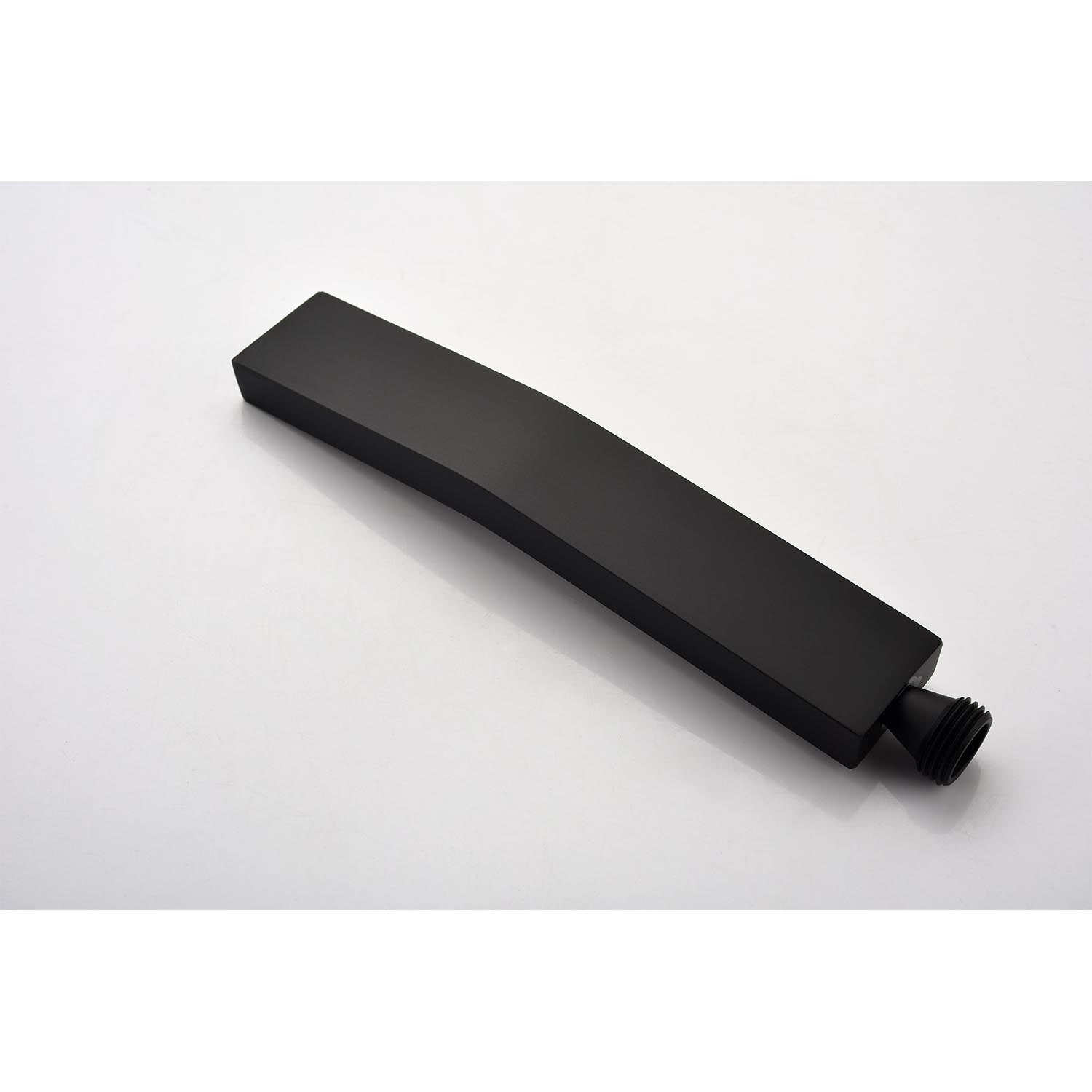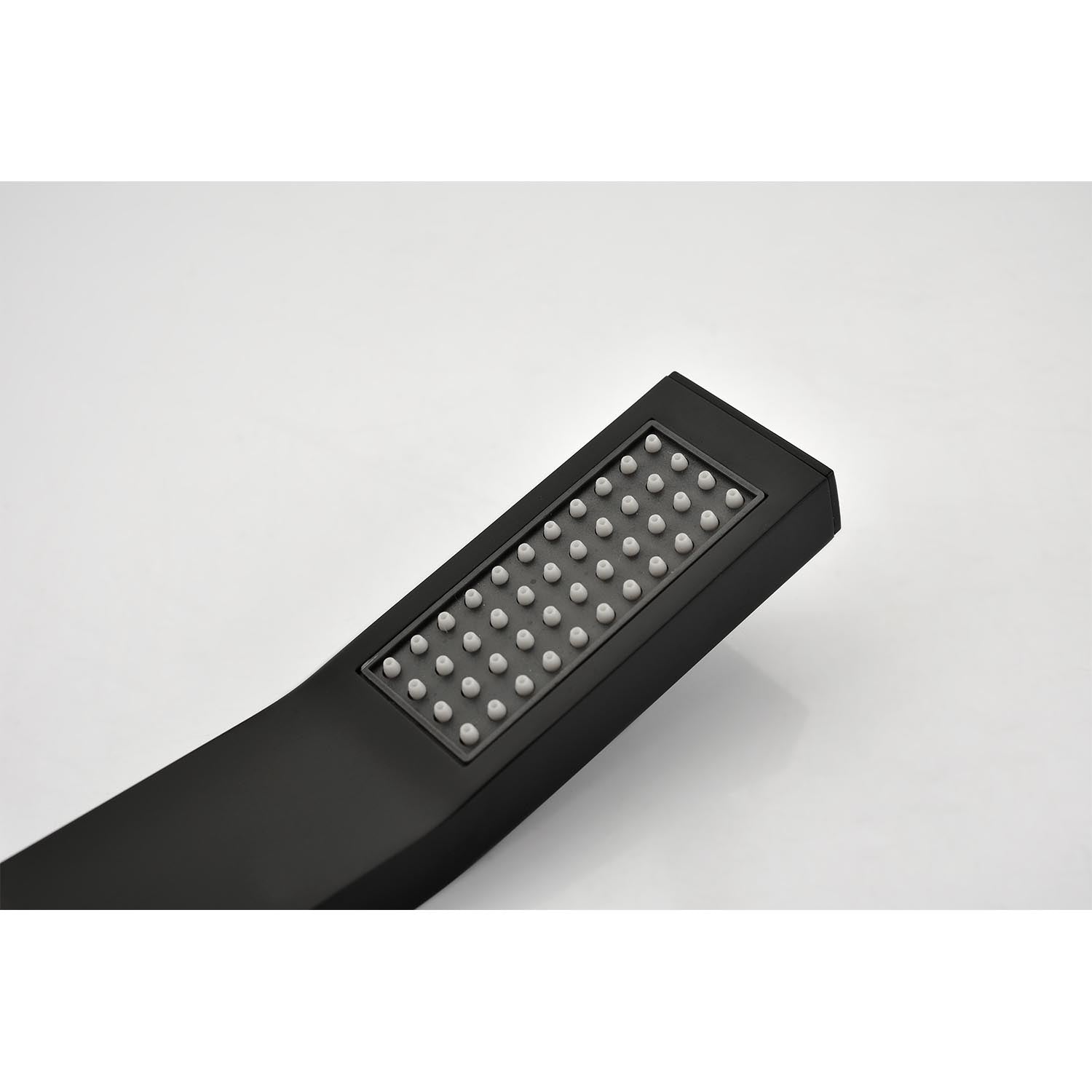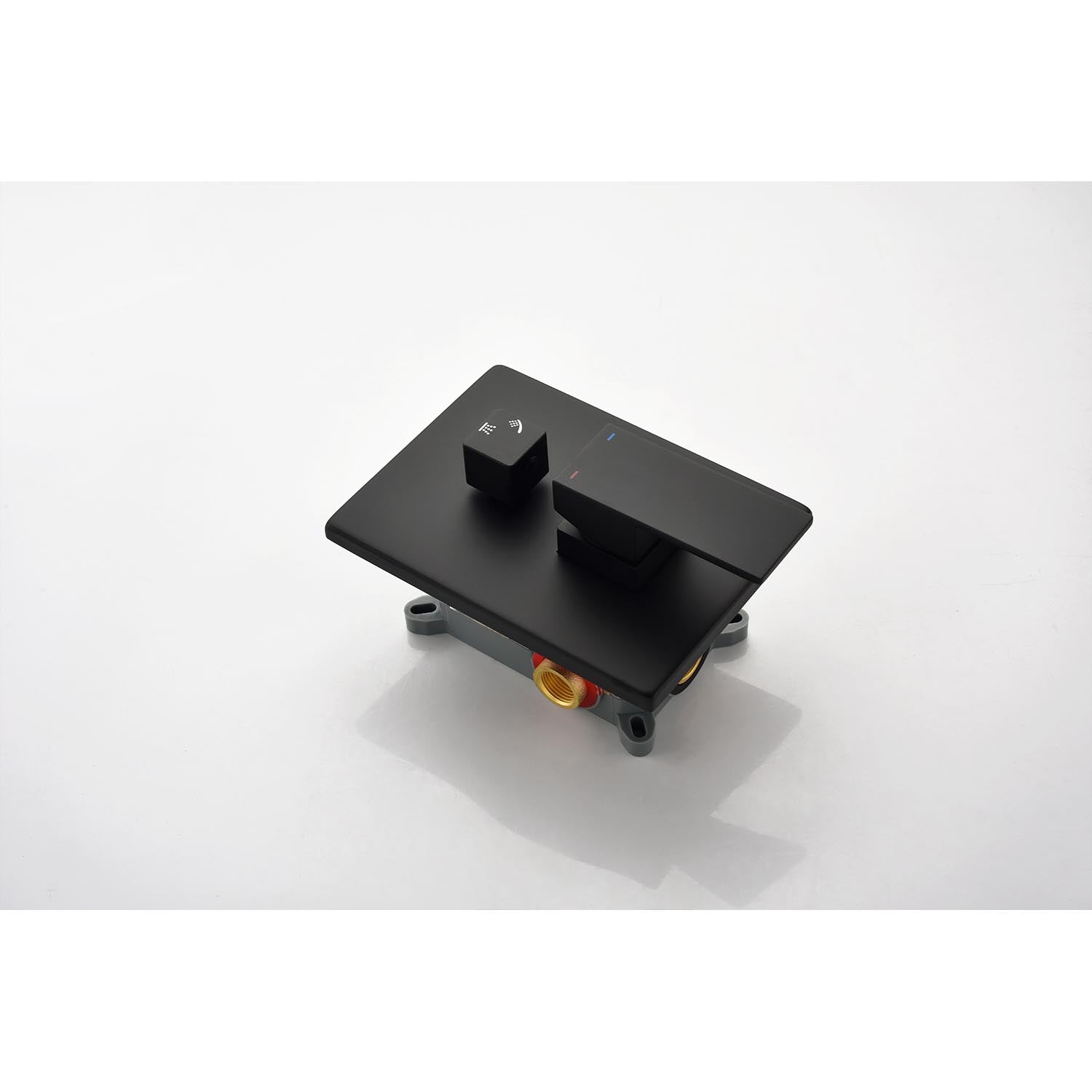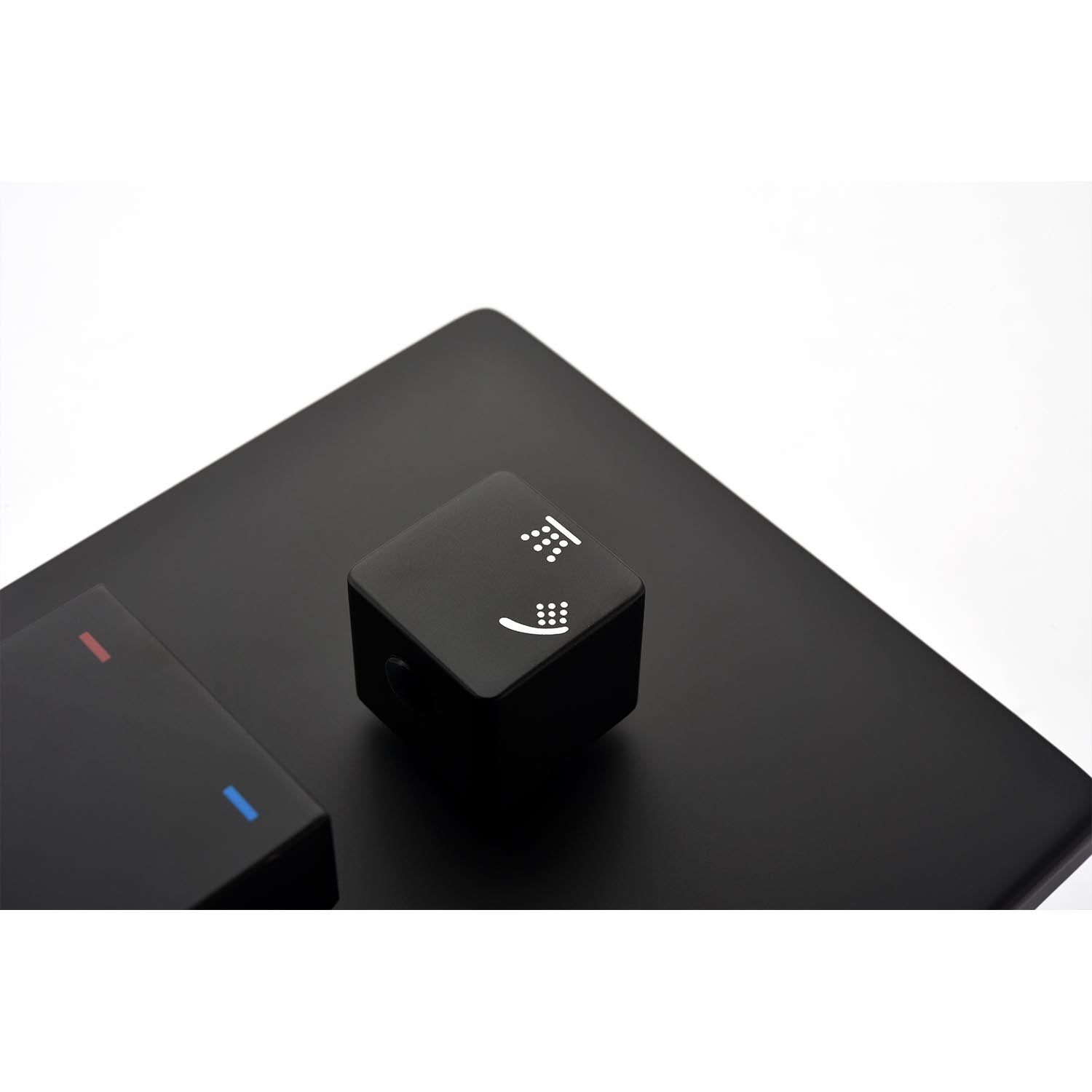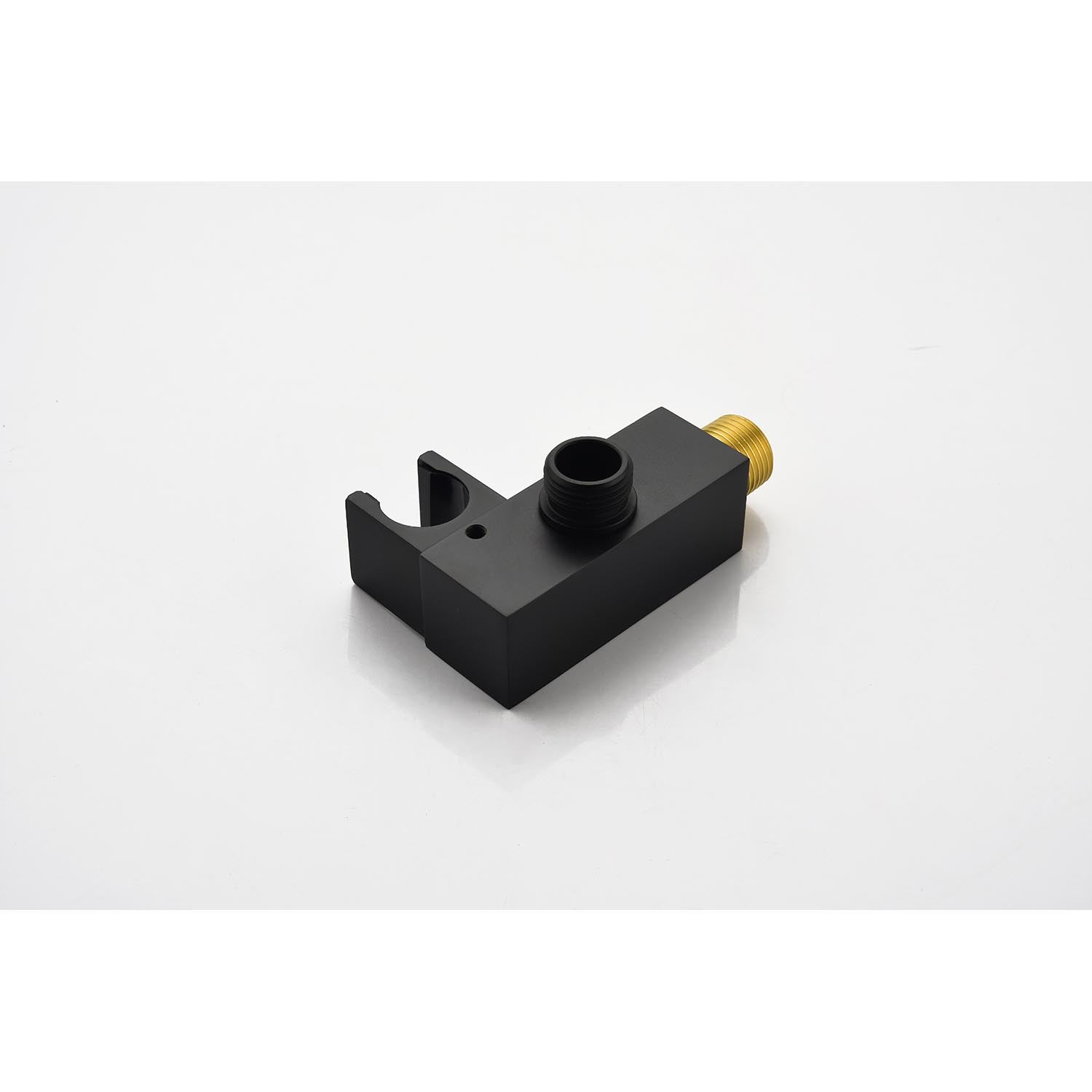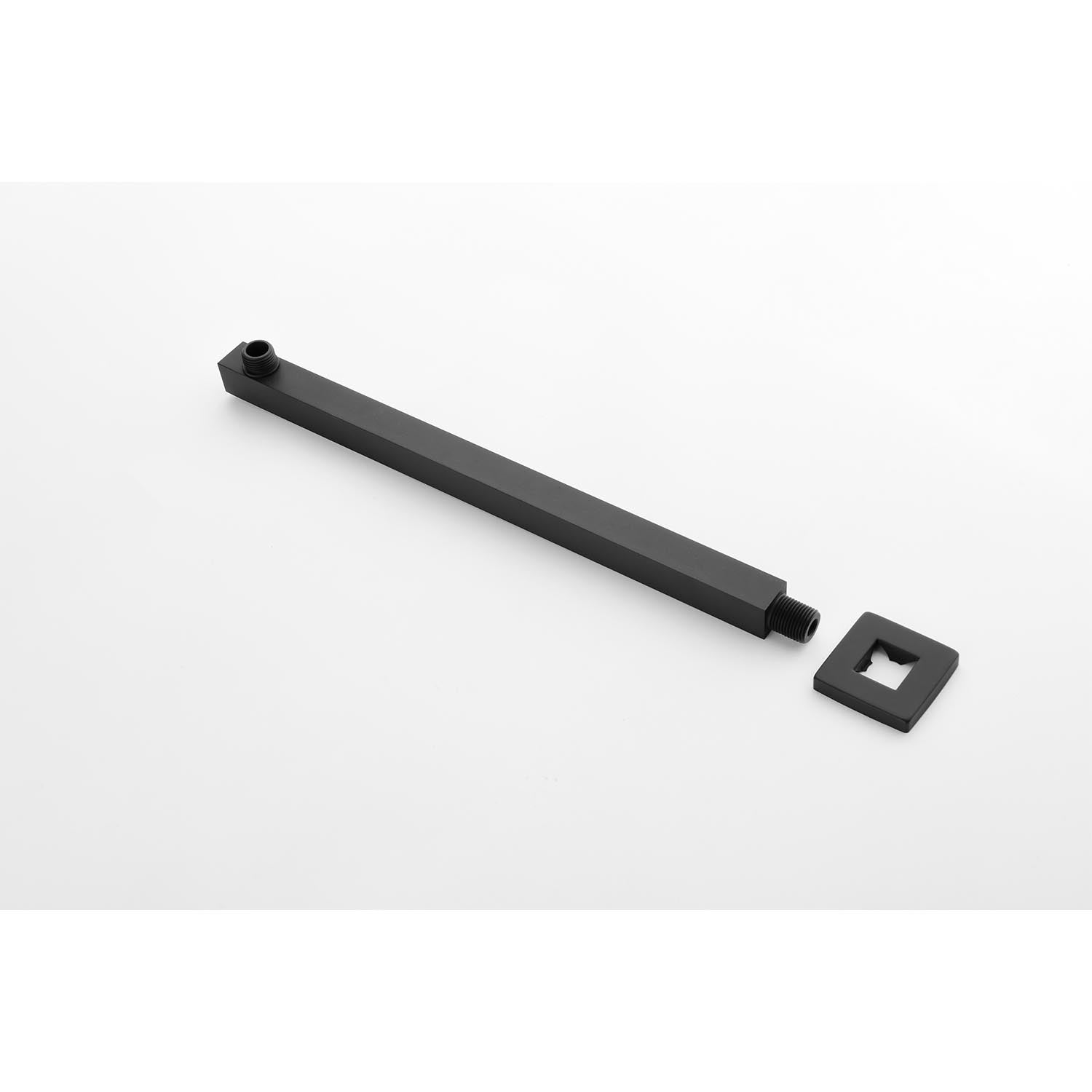When most people hear the term standard shower head height, they think of a fixed wall-mounted head positioned at about 80 inches from the finished floor. While this is a common benchmark, it’s far from the whole story. Different shower head types have their own optimal positioning. Add in factors like the height of household members, accessibility requirements in the ADA, and even ceiling clearances, you’ll see why “standard” is only a starting point.
This guide walks you through the different types of shower heads, how to adjust heights for short and tall users, and outlines universal design considerations so your shower is comfortable, functional, and future-ready.
Table of Contents:
- 1) What “Standard Shower Head Height” Really Means
- 2) Fixed Wall-Mount Shower Heads
- 3) Handheld Showers & Slide Bars
- 4) Ceiling-Mount Rain Showers
- 5) Body Jets / Body Sprays
- 6) Controls & Mixing Valves
- 7) Calibrating for Different Heights
- 8) ADA & Universal Design Essentials
- Conclusion
- FAQ
1) What “Standard Shower Head Height” Really Means
This "Standard Shower Head Height" is not a building code, but an industry norm developed through decades of residential construction practice.
For most fixed wall-mounted shower heads, that norm is around 80 inches from the finished floor to the center of the shower head outlet. This height suits the average adult male in North America, allowing the water stream to clear the head and shoulders while keeping spray inside the enclosure.
However, there’s flexibility. The 80-inch figure is a widely used baseline, but it isn’t a rigid rule. The optimal placement depends on the type of shower head, the height of the users, and the overall design of shower space. In many cases, adjusting up or down by a few inches can dramatically improve comfort and usability.
2) Fixed Wall-Mount Shower Heads
We’ve already mentioned that the standard shower head height is about 80 inches, but if the tallest household member is above 6'2" (188 cm), you might consider raising it to 82–84 inches. Conversely, for households where users are below 5'4" (162 cm), a height of 76–78 inches can improve comfort and reduce overspray.
Remember, the “standard shower head height” should serve the people using the bathroom — not just an arbitrary number.

3) Handheld Showers & Slide Bars
A handheld shower offers maximum flexibility, especially when paired with a vertical slide bar. The goal is to provide a wide range, typically 48 inches to 78 inches — so the spray can be adjusted for seated users, children, and taller adults alike. The docking bracket should ideally sit just below eye level for the tallest regular user.
From an accessibility standpoint, ADA guidelines recommend that the operable parts of a handheld shower be reachable at no more than 48 inches above the floor. This means the slide bar can go higher, but the bracket must be able to hold the shower head at that limit when it is needed.
Using a hose of 59 inches or longer also allows a seated bather or someone using a shower bench to rinse comfortably without overreaching.

4) Ceiling-Mount Rain Showers
Rain showers mounted directly to the ceiling create a luxurious, overhead water flow. Because they release water vertically, they require more clearance to avoid hitting users’ heads. As a rule, the spray face should be 3–6 inches above the tallest user’s head, usually placing it between 84 and 90 inches from the floor in a standard 8- or 9-foot ceiling bathroom.
When installed too close to the user, large rain heads can cause the water to hit in concentrated streams, which may feel heavy or harsh. On the other hand, low-flow models may lose too much force if placed too high, resulting in weak coverage. The key is to find a balance: set the height high enough for the water to disperse evenly, but not too high to maintain satisfying pressure and rinsing power.

5) Body Jets / Body Sprays
Body jets or sprays, mounted on the shower wall, are all about targeted coverage. They’re usually installed in vertical arrays to hit multiple zones of the body:
| Lower zone | Mid zone | Upper zone |
|---|---|---|
| 18–24 inches | 36–40 inches | 48–52 inches |
| knees/thighs | hips/waist | shoulders/back |
In showers with a built-in bench, add one spray at 30–34 inches to reach the lower back when sitting. While some designers recommend staggering jets for varied spray angles, most installations use a straight vertical line for symmetry and aesthetics. Always ensure they’re positioned so spray doesn’t hit the shower door directly, which can lead to leaks or water spots.

6) Controls & Mixing Valves
The placement of the controls is as important as the shower heads themselves. For a walk-in shower, controls are typically installed between 38 and 48 inches from the floor. In a tub/shower combination, they may be lower — around 28 to 38 inches, so they’re reachable from the tub.
While most fixed-and-handheld combinations place the controls directly beneath the main shower head for plumbing convenience, the ideal layout positions them where the user can turn on the water without standing under the spray, helping to avoid an unexpected blast of cold water.

7) Calibrating for Different Heights
Getting the height right for everyone in the household is easier if you do a quick calibration before installation.
1. Measure: Start by noting the tallest and shortest users. For the fixed head, aim for a position about 3–6 inches above the tallest person’s head. Then check the clearance for the shortest user. Ideally, the head should still be no more than 12 inches above them. If meeting both conditions isn’t possible, aim for a midpoint height.
2. Mark: Use painter’s tape or a washable marker to mark several possible installation heights on the shower wall, common options might be 78", 80", and 82". If you’re adding a slide bar or handheld dock, mark those points as well.
3. Test: Before drilling, simulate the spray position. You can use a temporary bracket, an adjustable shower arm, or simply have someone hold the head at each mark. Have different users stand in place to check spray angle, coverage, and whether water escapes the enclosure.
4. Adjust: Based on everyone’s feedback, fine-tune the target height.
Following these steps ensures the final height feels comfortable and practical for every user before you commit to permanent installation.
8) ADA & Universal Design Essentials
Universal design aims to make spaces usable by as many people as possible without adaptation. ADA standards offer concrete numbers to guide you:
-
Handheld showers must be usable from a seated position, with operable parts at ≤48 inches.
-
The hose should be at least 59 inches long to allow easy movement.
-
Fixed shower heads can be placed higher but should be paired with a handheld option to meet accessibility needs.
-
Controls must be within 48 inches of the floor, operable with minimal force, and placed where they won’t conflict with grab bars.
Even if ADA compliance isn’t legally required for your project, adopting these guidelines can make your shower more versatile and future-proof.

Conclusion
The so-called standard shower head height of 80 inches is a great starting point, but the real goal is a shower layout that matches your space, your household’s needs, and accessibility considerations.
By taking the time to plan each height, using actual measurements and testing placements, you can create a shower that works beautifully for everyone who uses it now, and for years to come.
FAQ
Q1. Is 80 inches always correct for a standard shower head height?
A: No. While 80 inches is common for fixed wall-mounted heads, the ideal height depends on user height, shower type, and ceiling clearance. Taller users may prefer 82–84 inches, while shorter users might find 76–78 inches more comfortable.
Q2. What’s the ideal height for a handheld shower dock on a slide bar?
A: The dock should allow adjustment between about 48 inches and 78 inches from the floor. For ADA accessibility, it must be able to hold the shower head at or below 48 inches.
Q3. How high should a ceiling-mounted rain shower be?
A: Position the spray face 3–6 inches above the tallest user’s head. In most homes, that works out to 84–90 inches from the floor, depending on ceiling height.
Q4. Where should body jets be placed for the best coverage?
A: Lower jets: 18–24 inches; mid jets: 36–40 inches; upper jets: 48–52 inches. For a bench, add one at 30–34 inches to target the lower back.
Q5. What ADA rules actually affect shower head and control heights?
A: Operable parts must be within 48 inches of the floor, usable with one hand and minimal force. Handheld showers require a hose at least 59 inches long, and fixed heads should be paired with a reachable option.
More Articles About Shower Head
What Are the Different Types of Shower Heads
How to Clean a Blocked Shower Head: Easy Solutions for a Better Shower Experience
Understanding Shower Head GPM: How to Choose the Right Flow for Your Bathroom Experience
